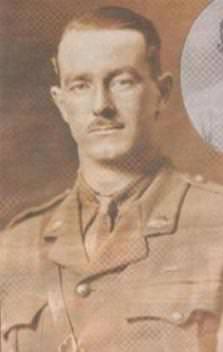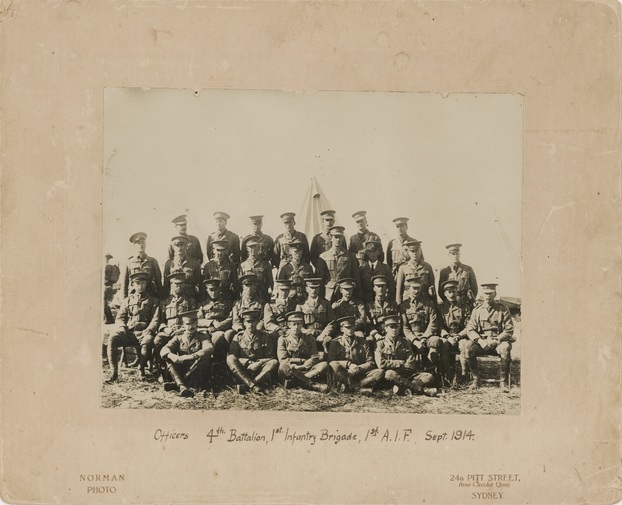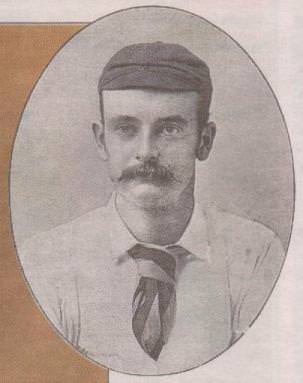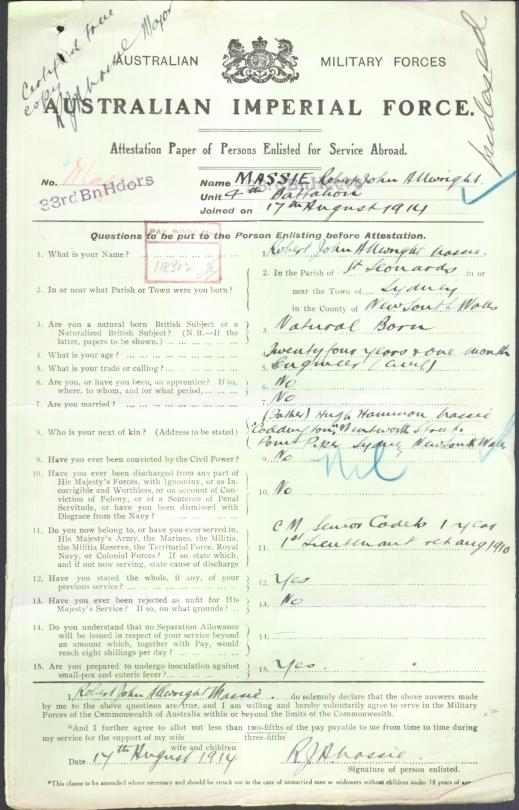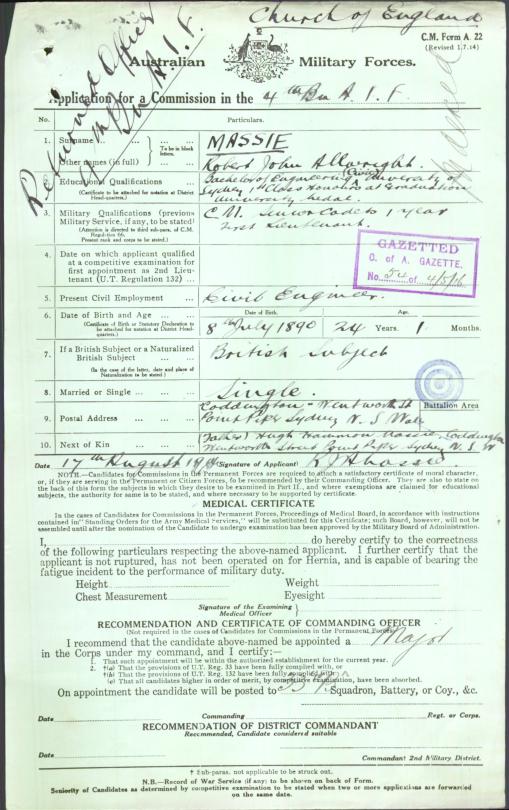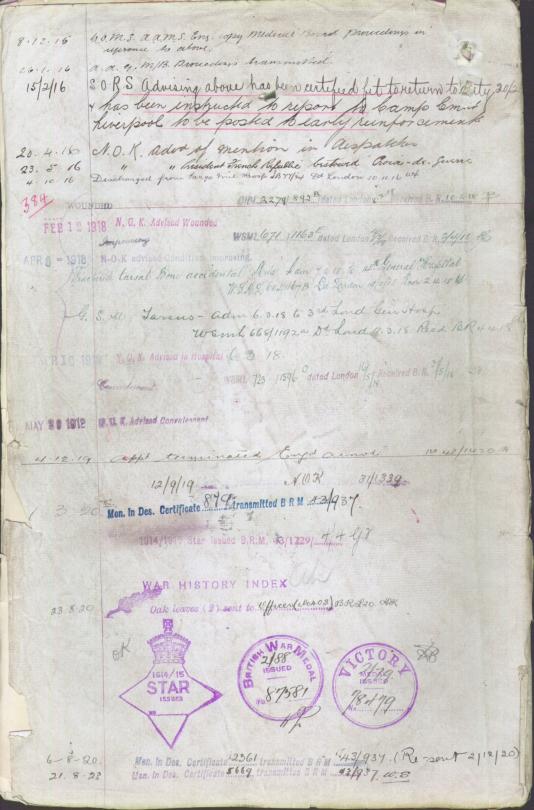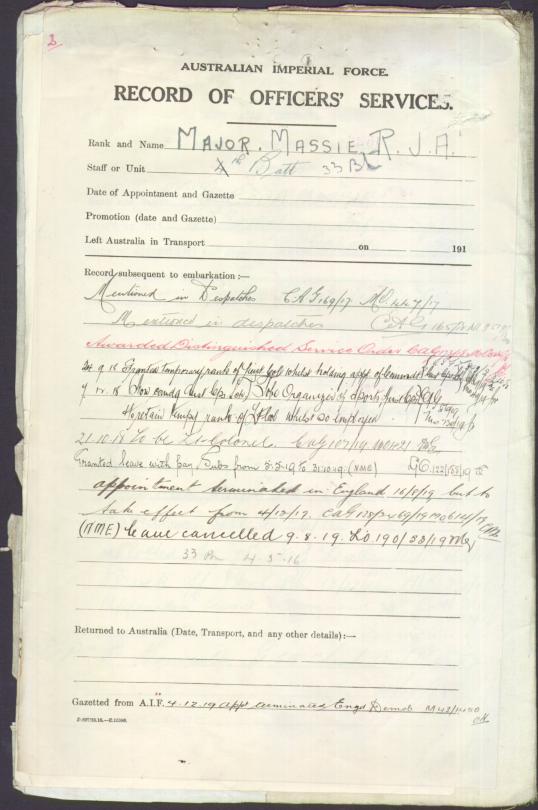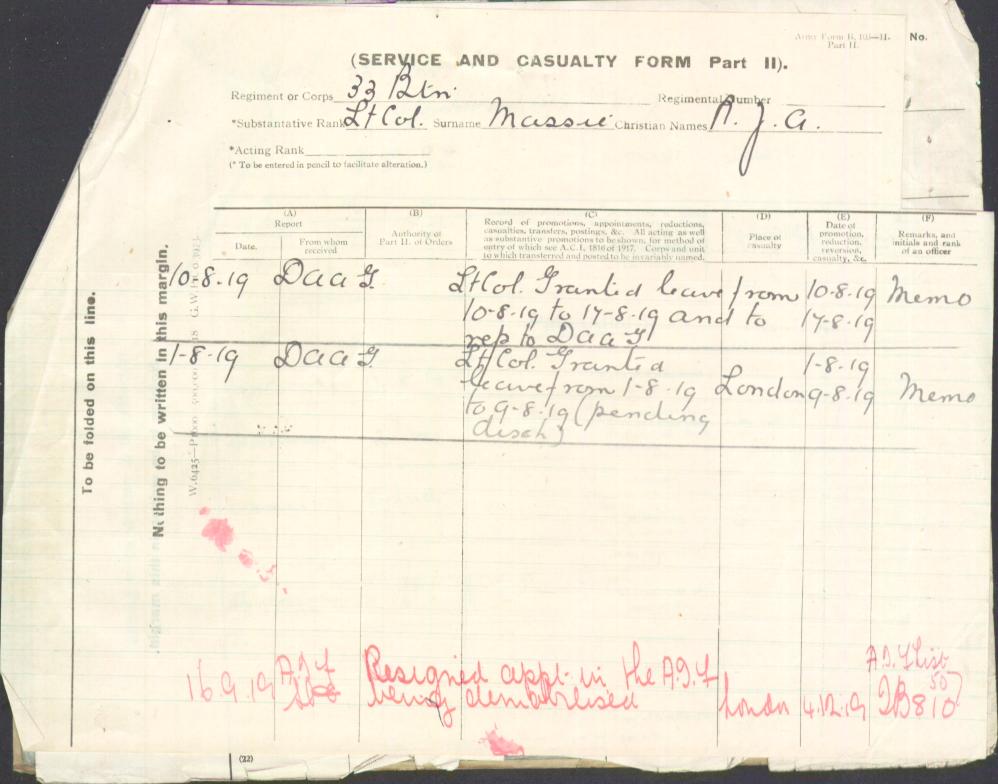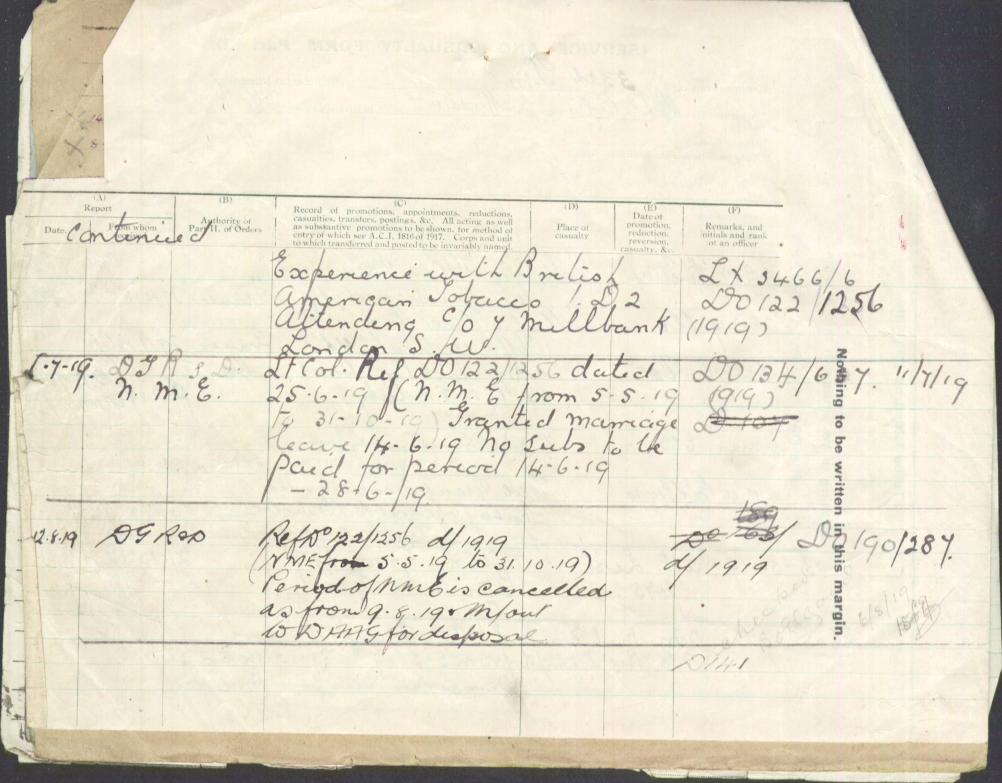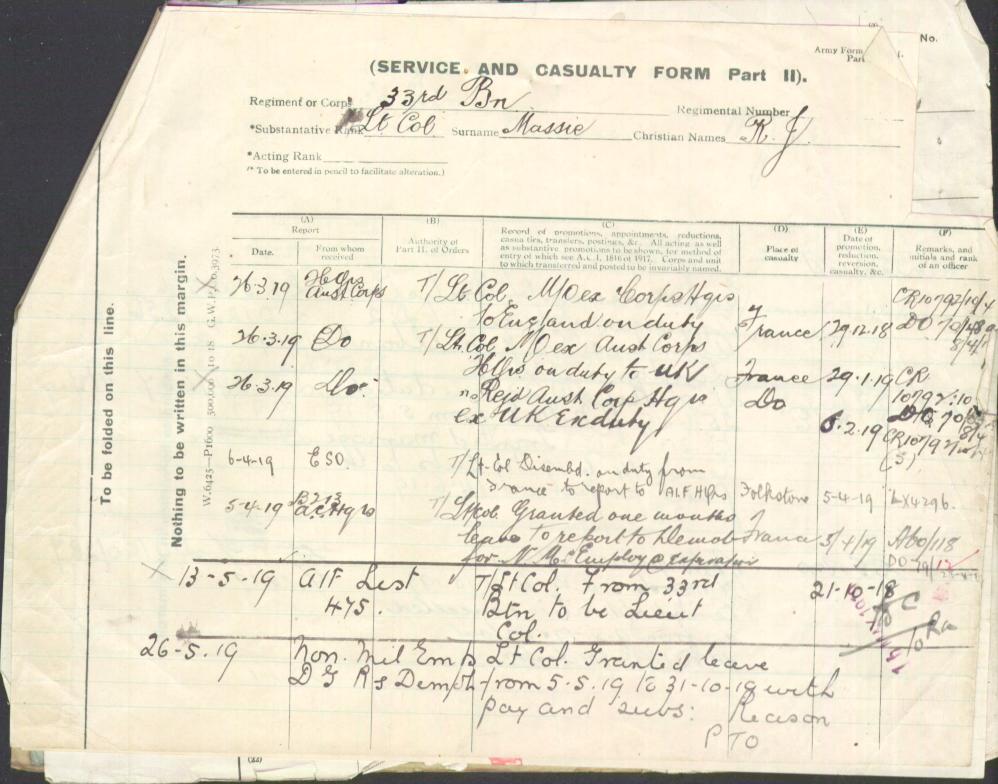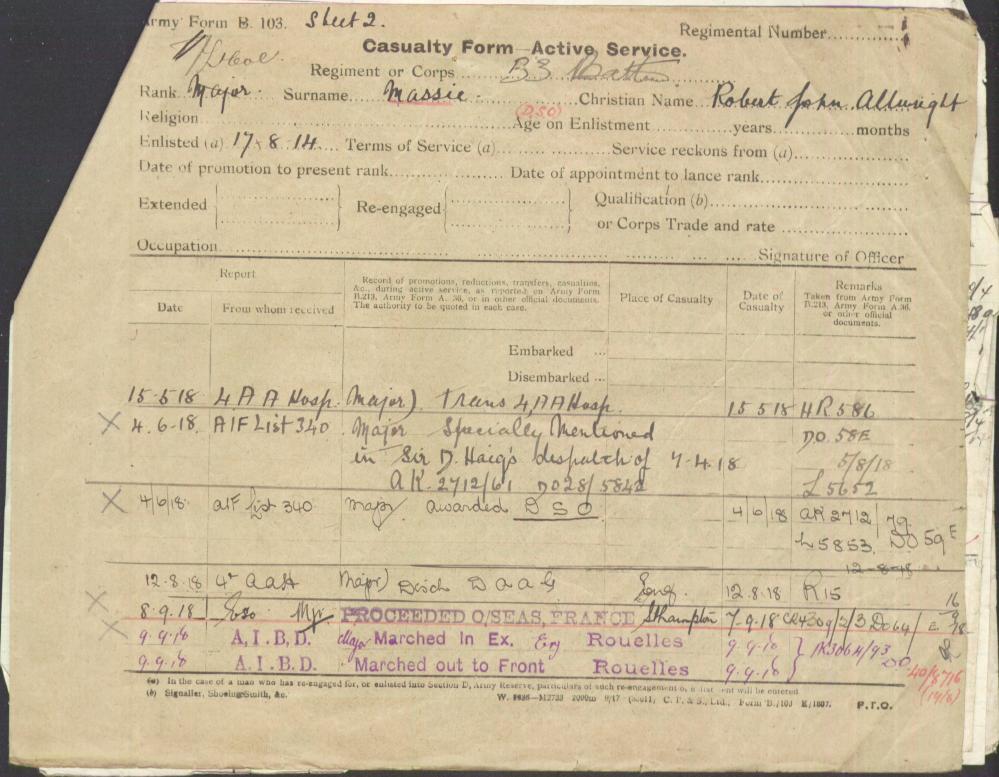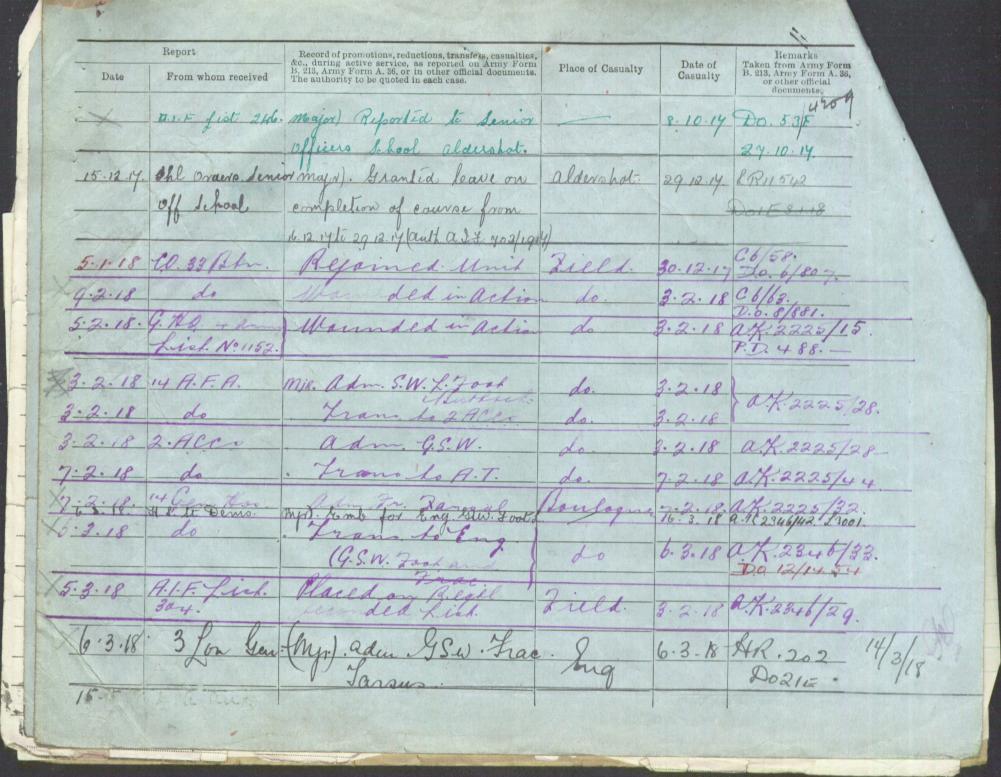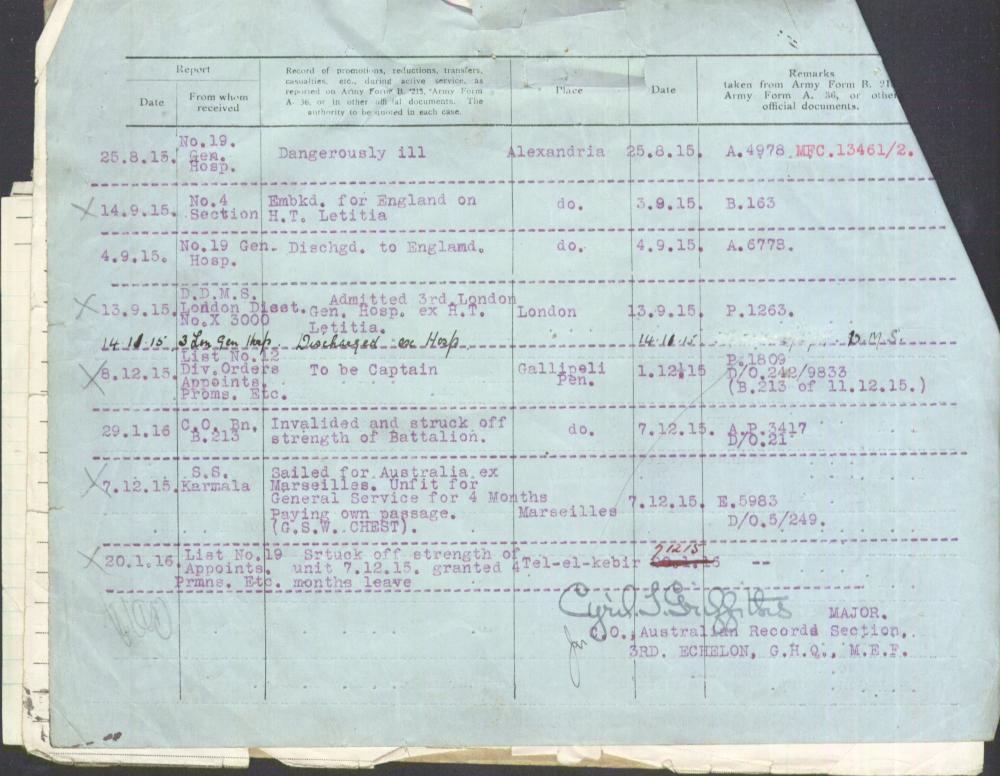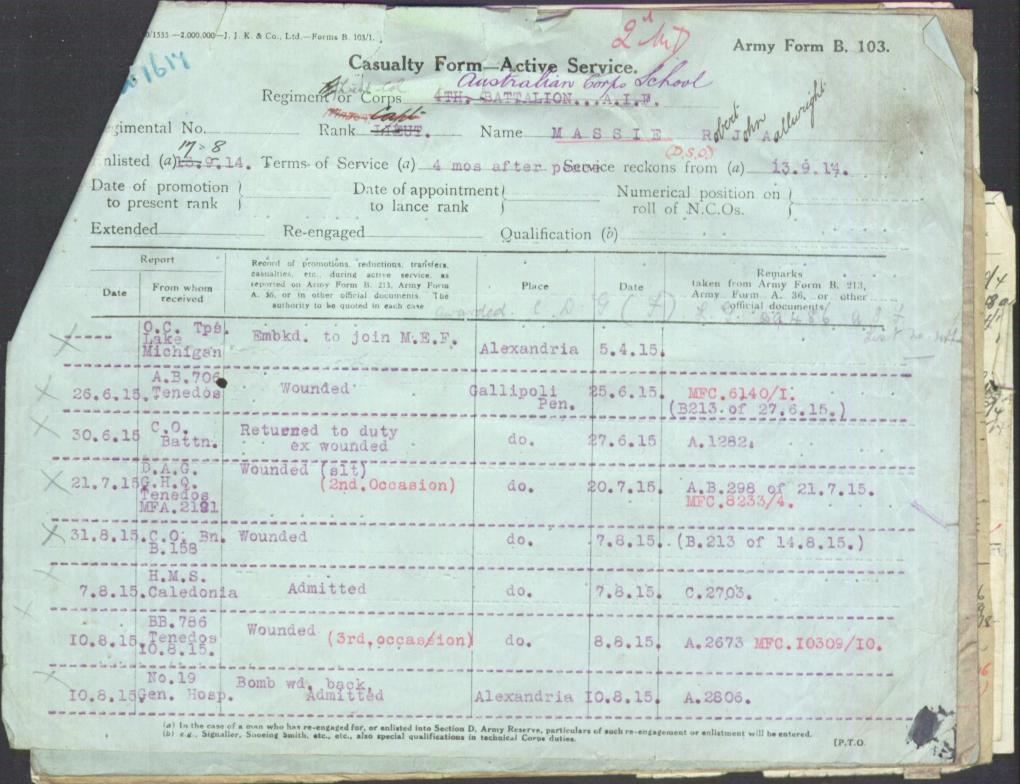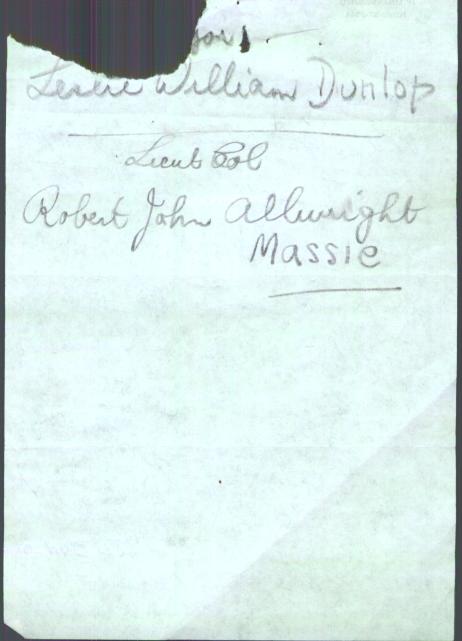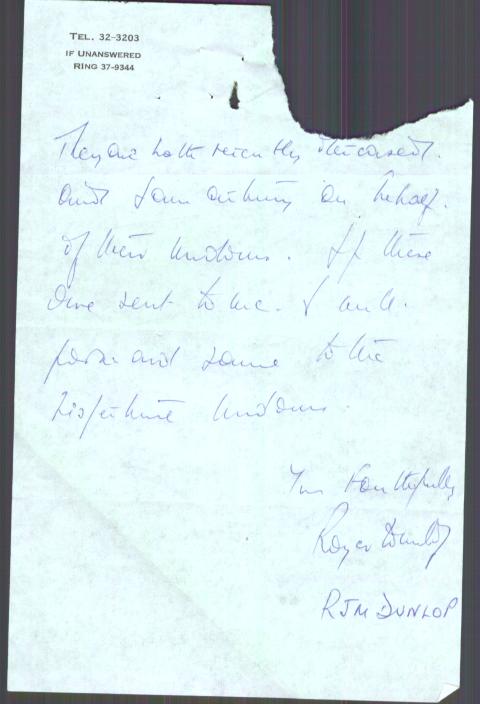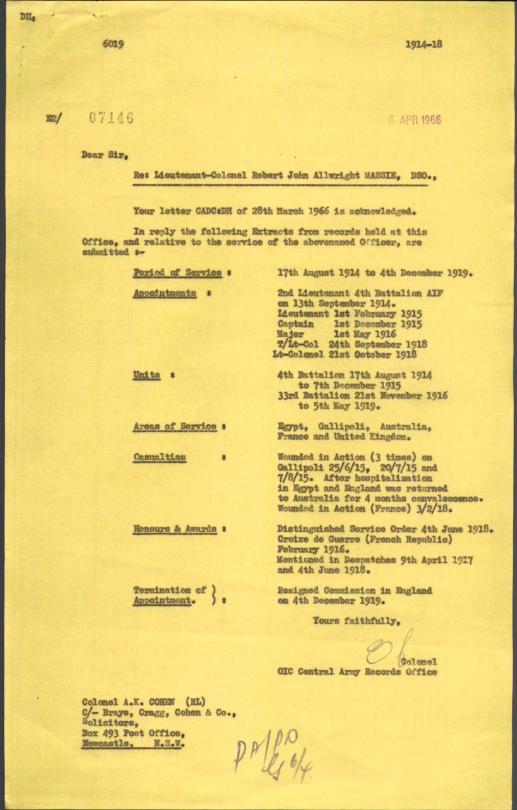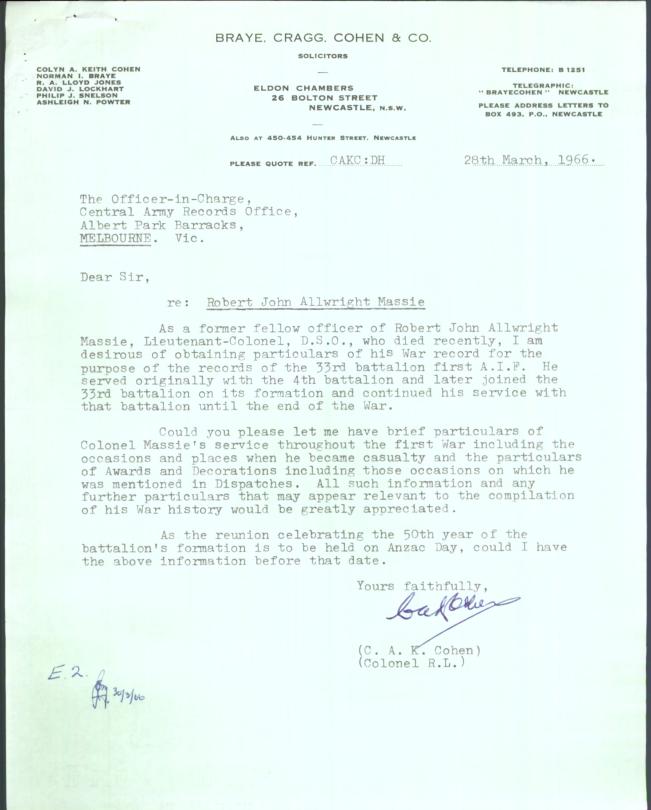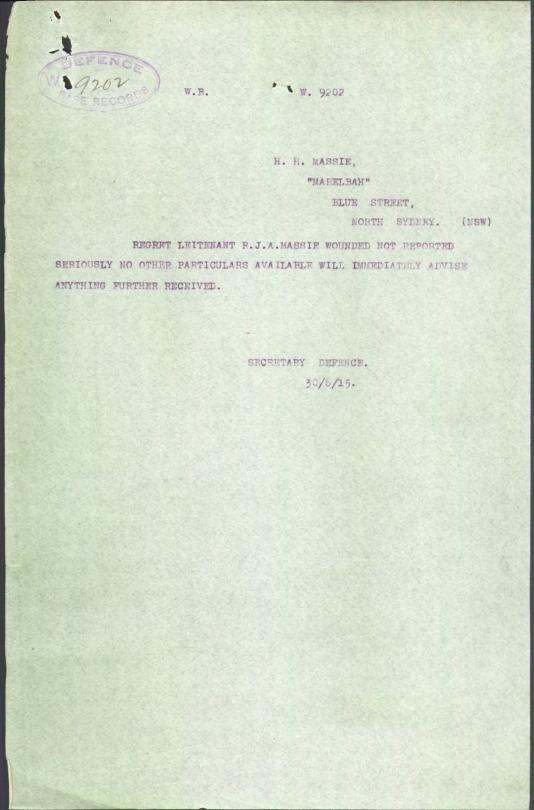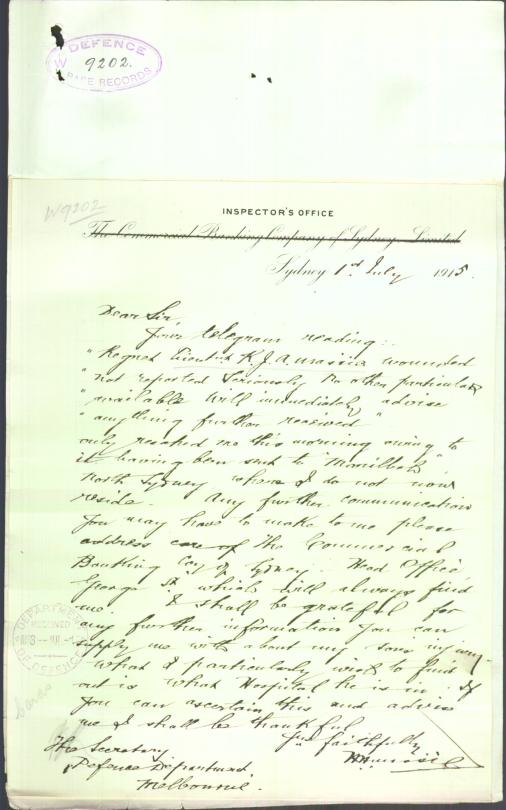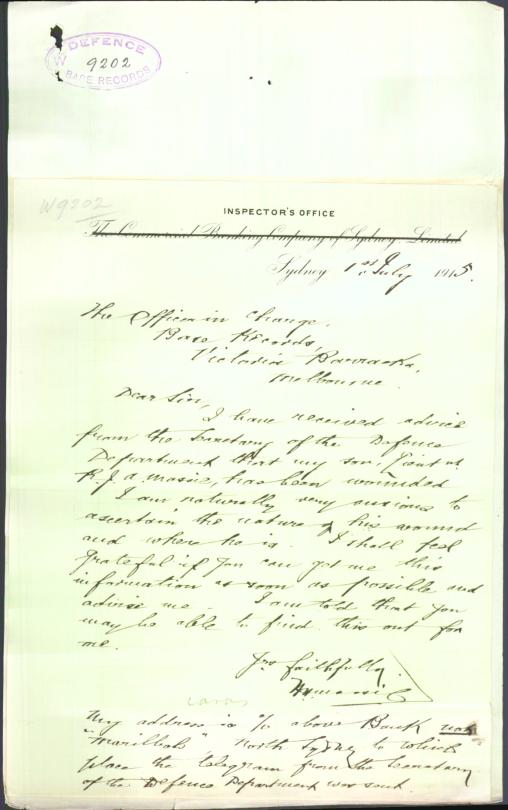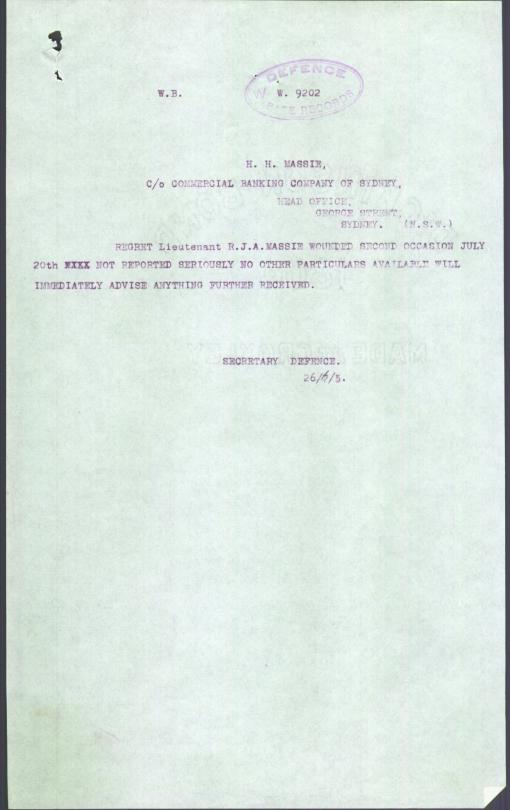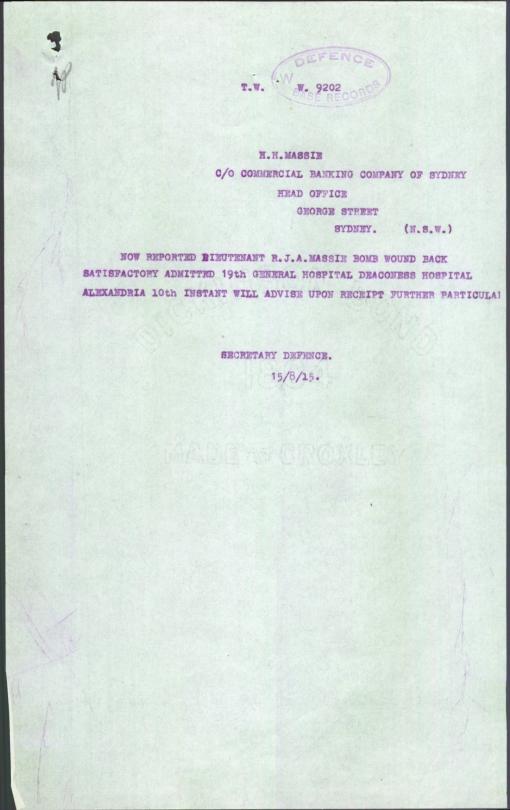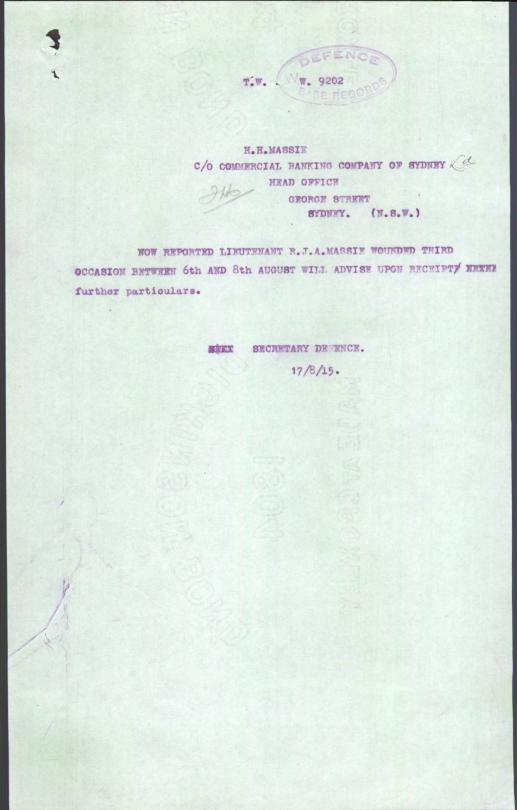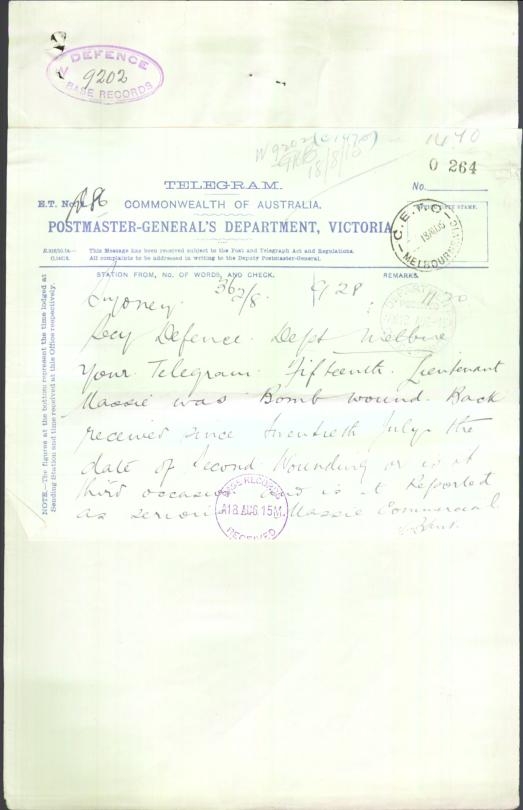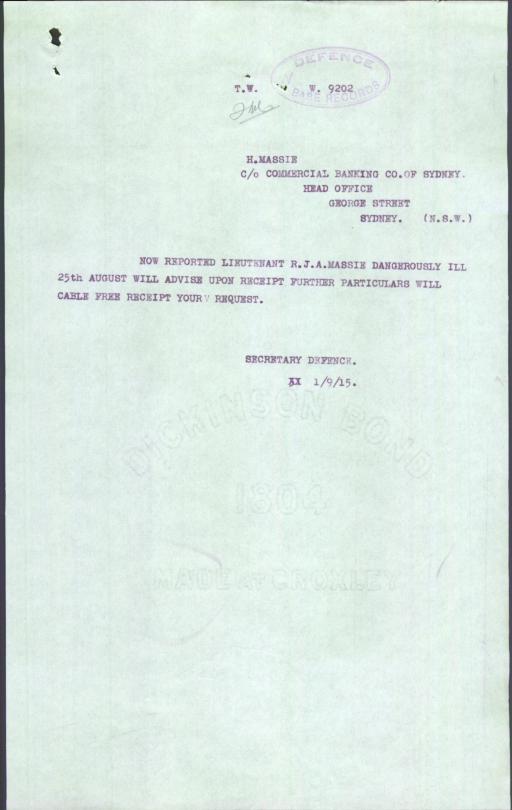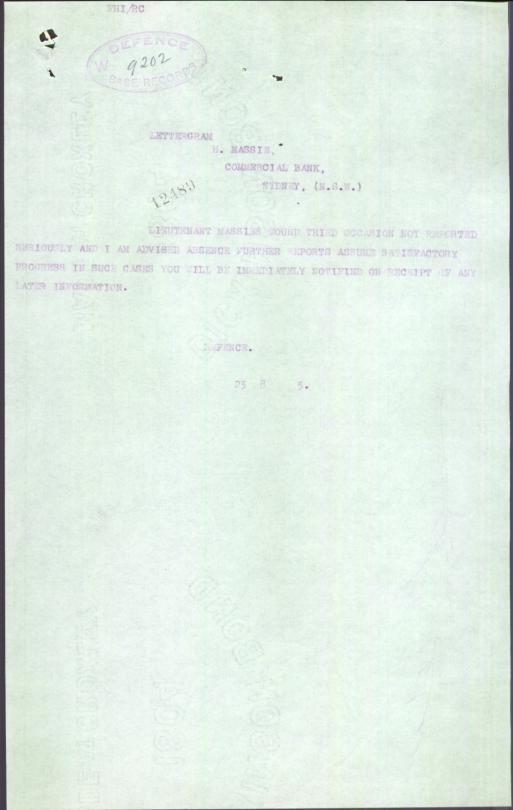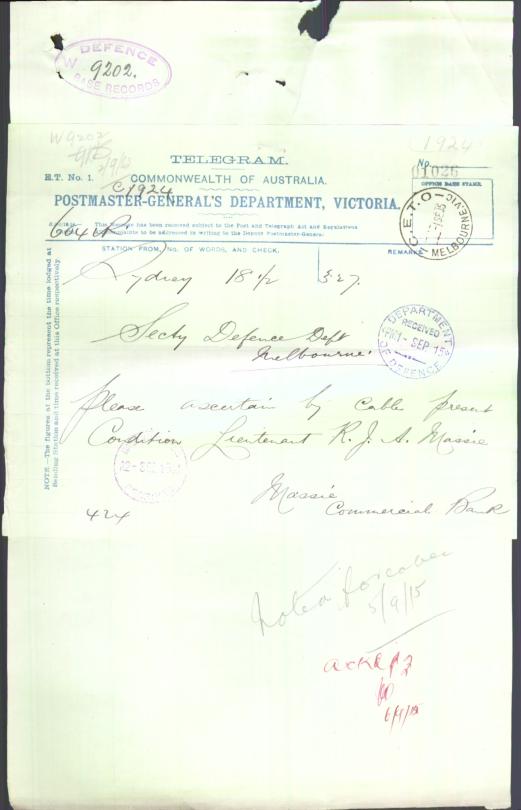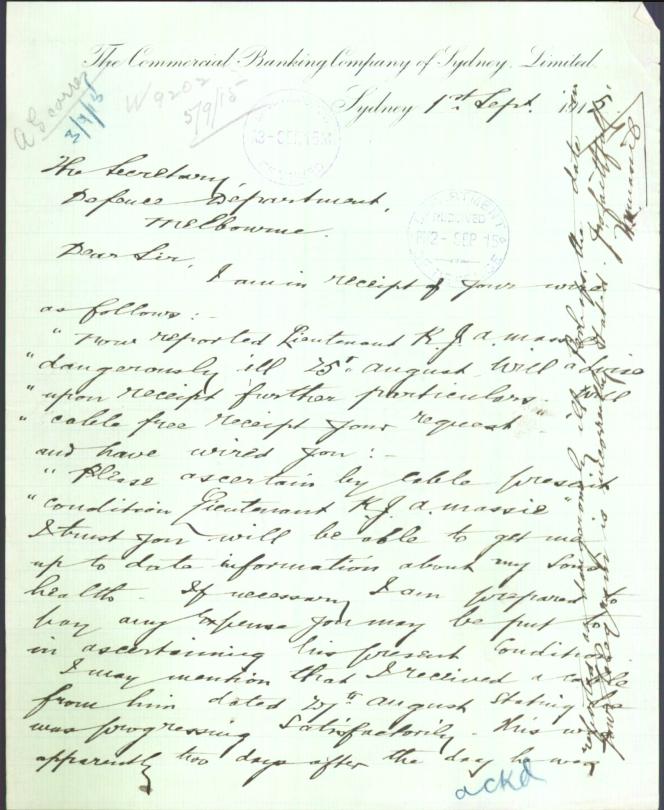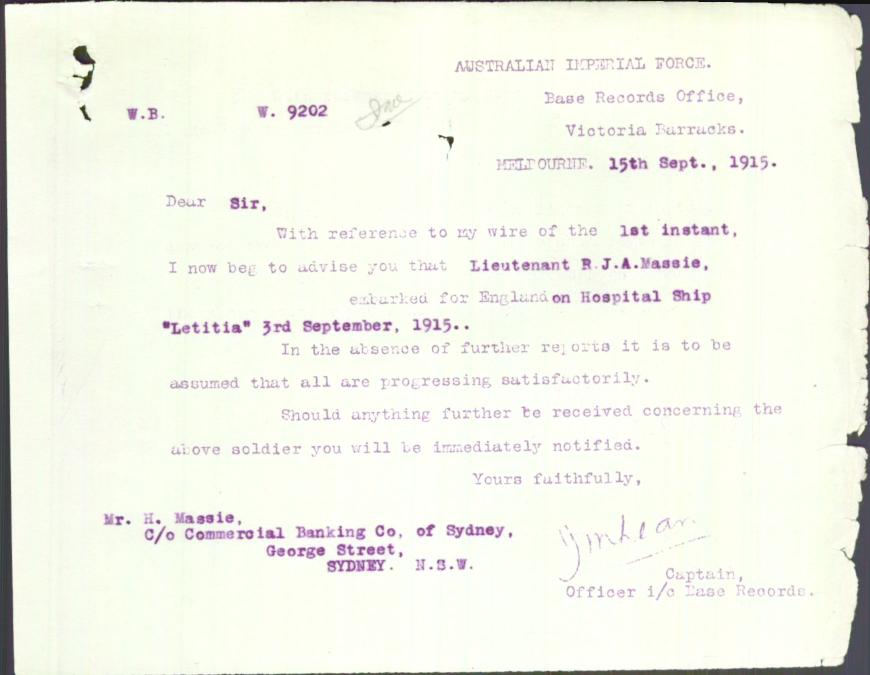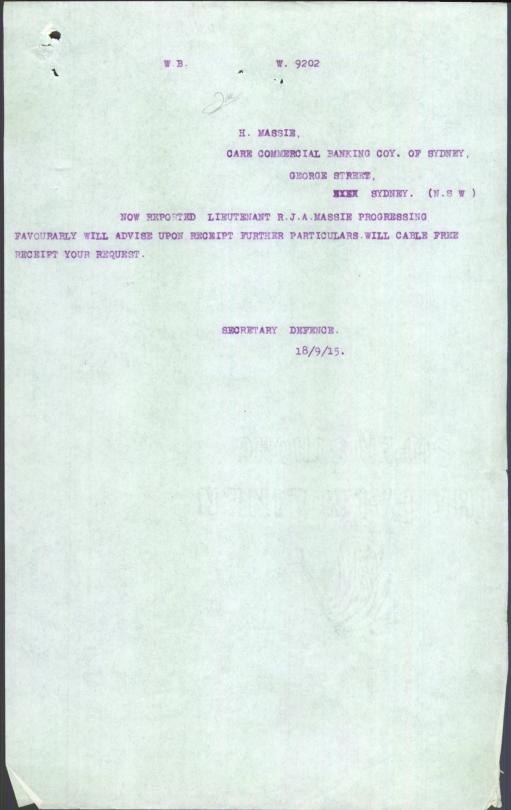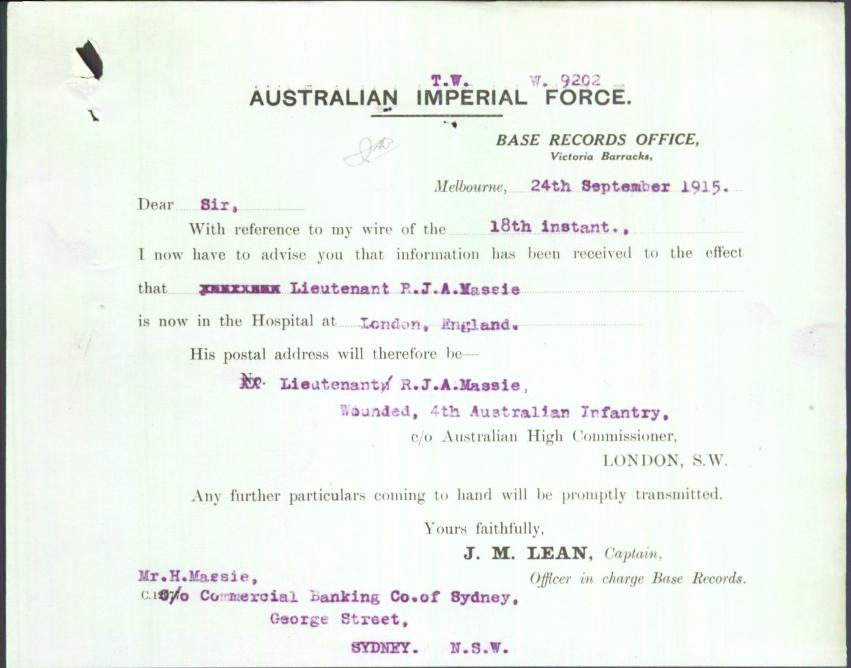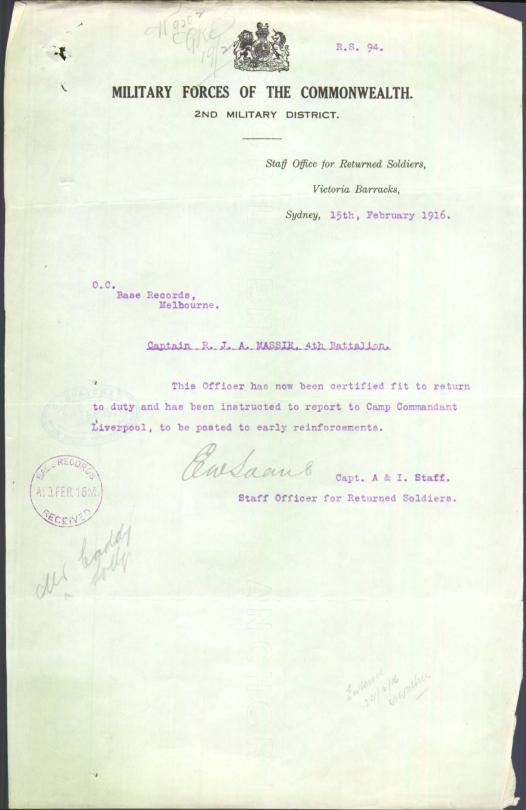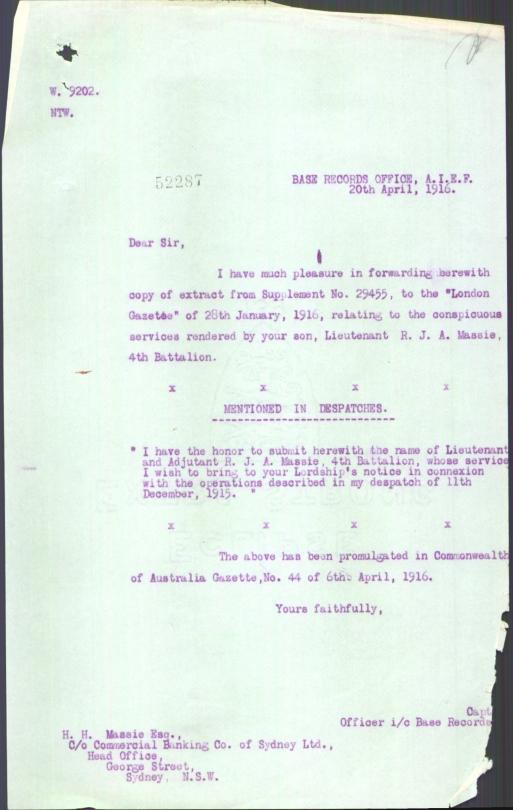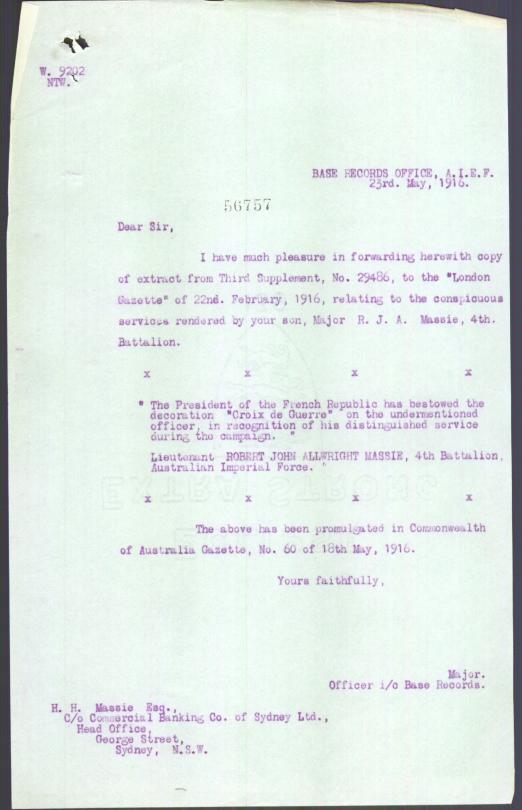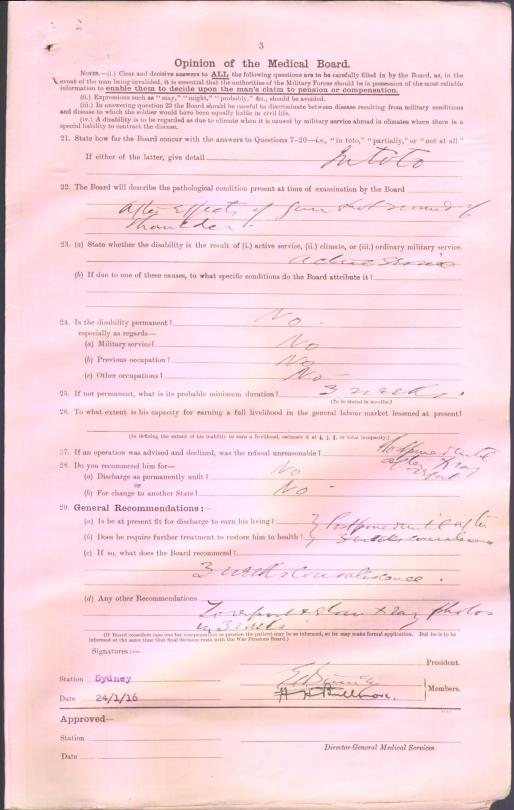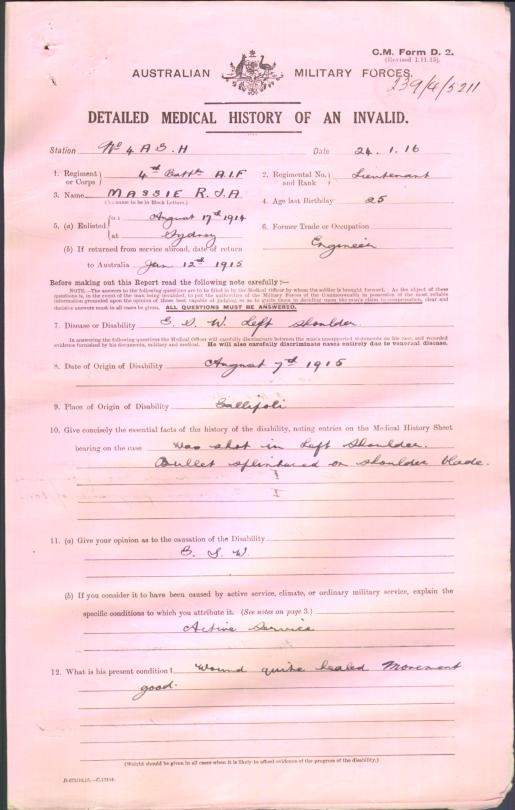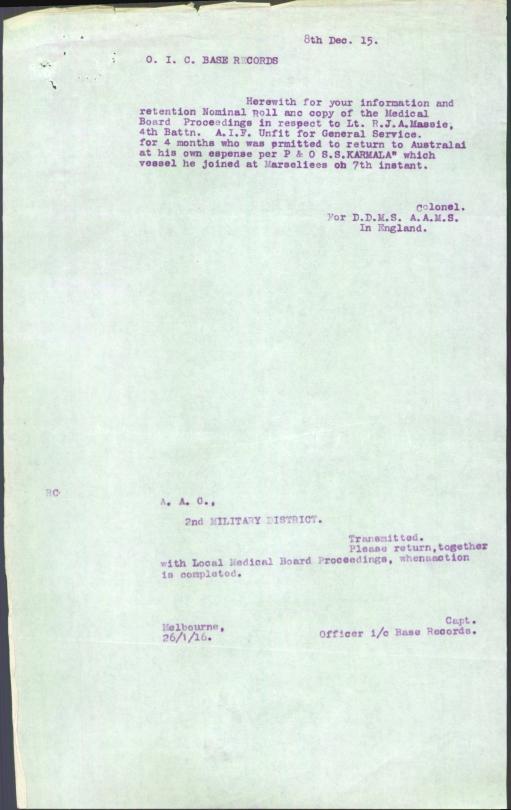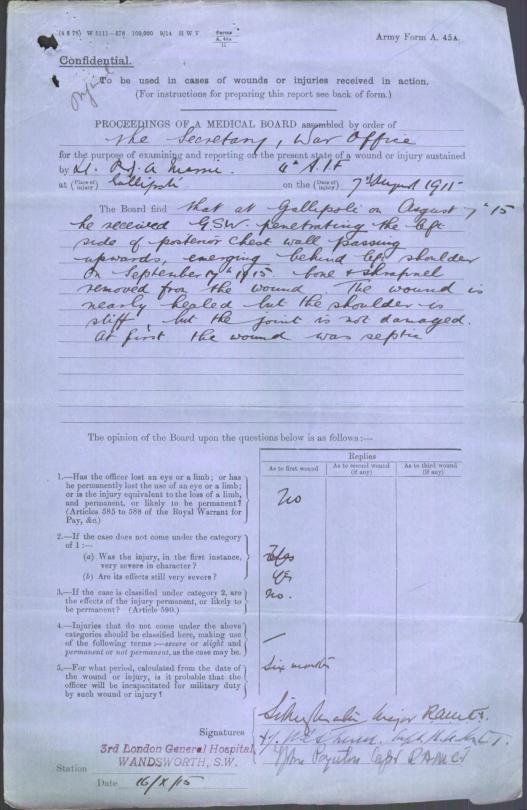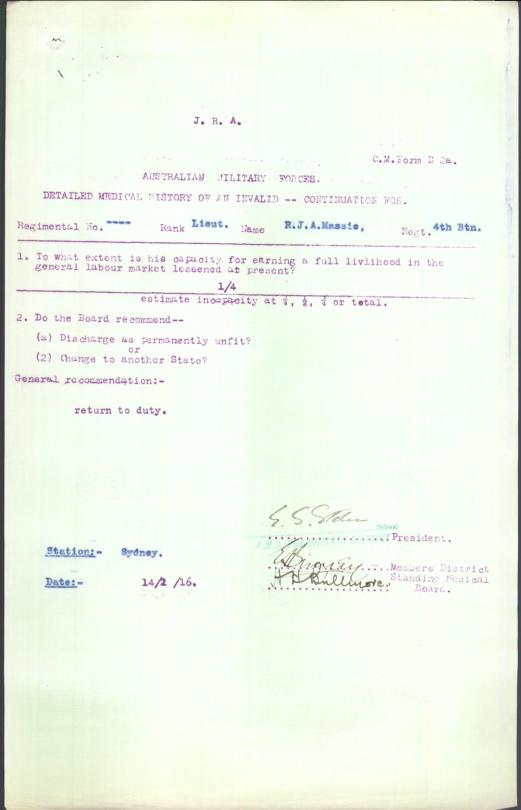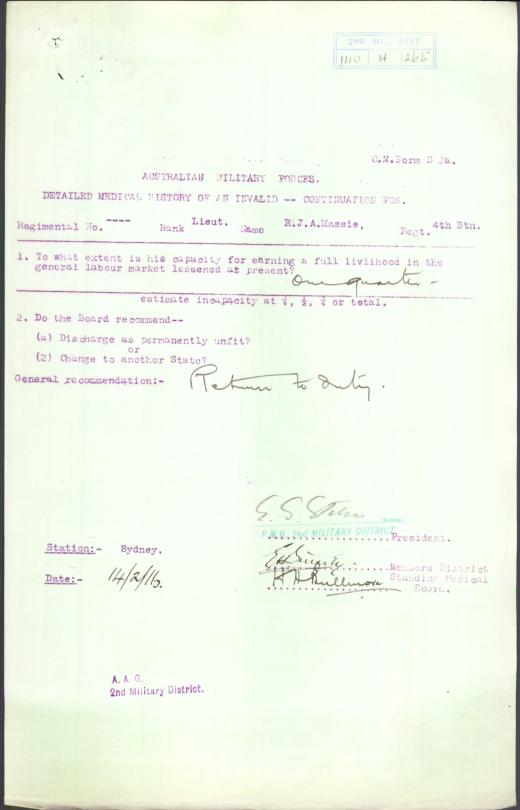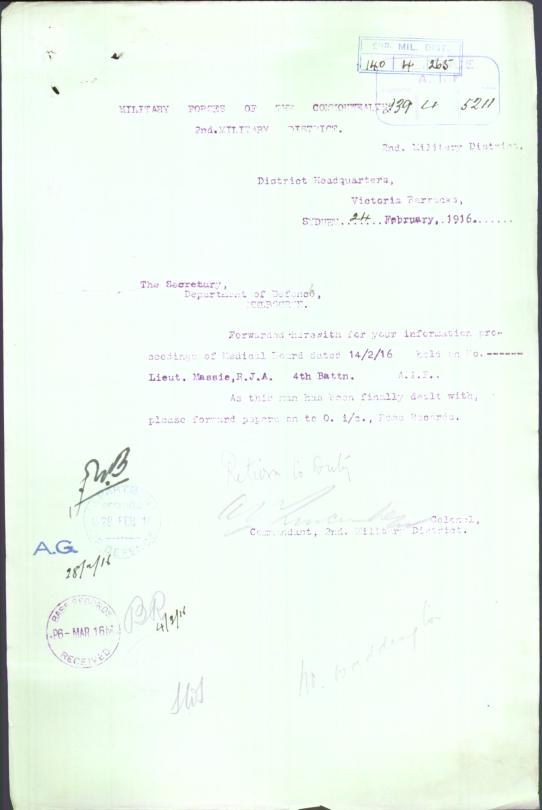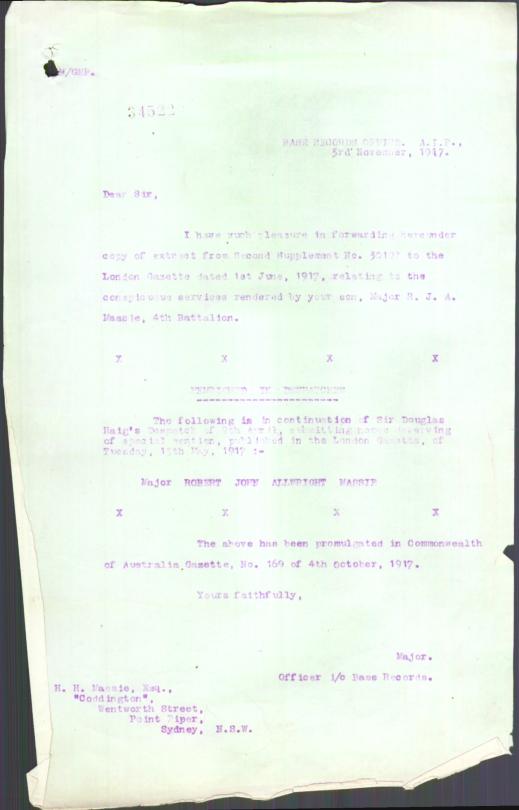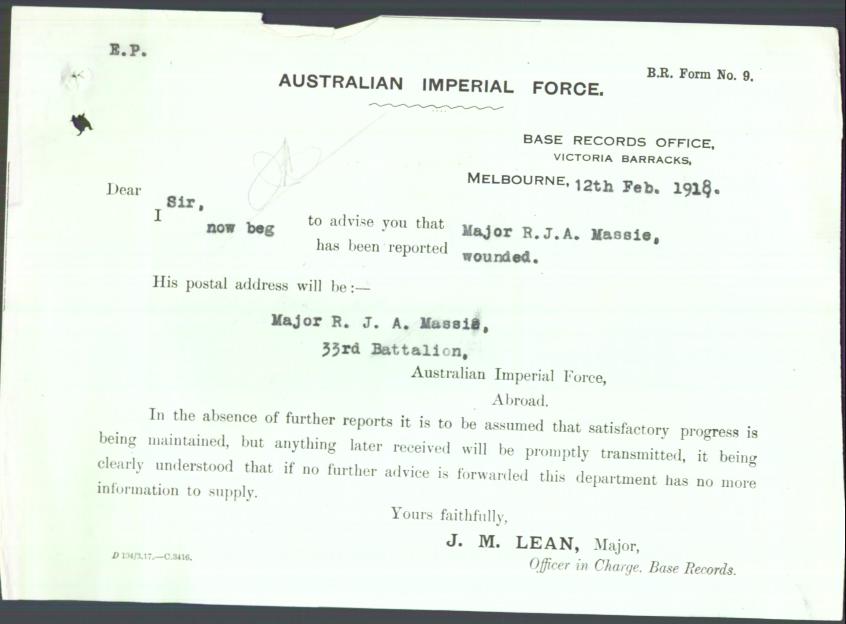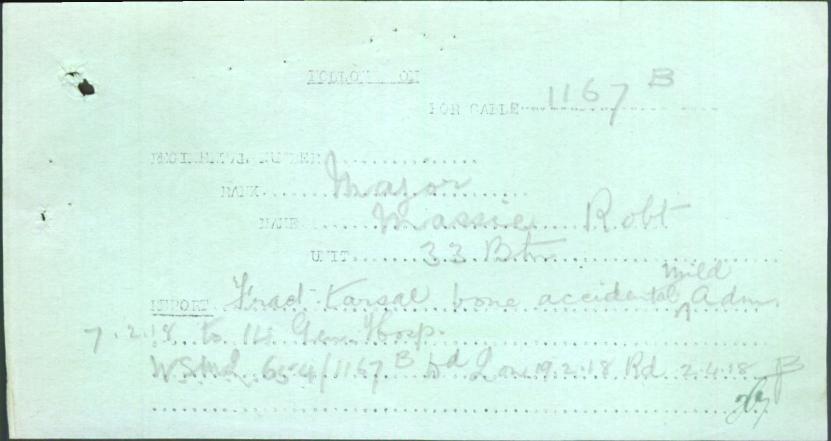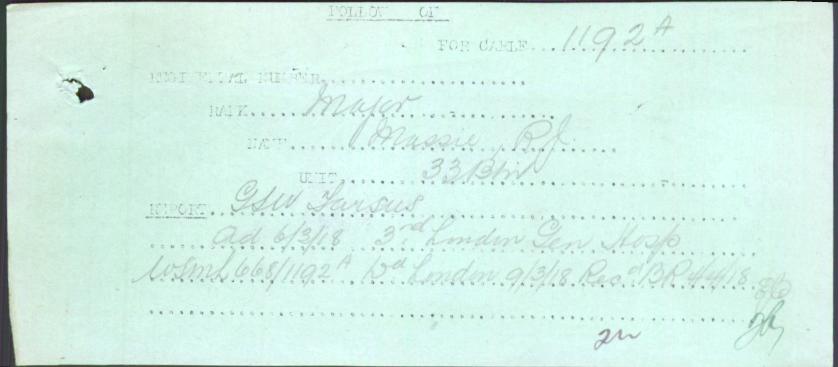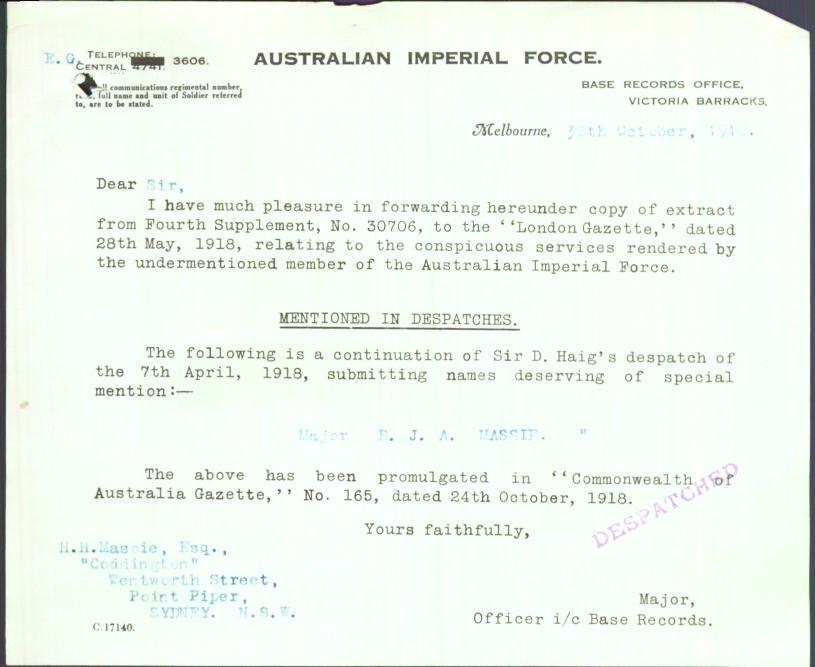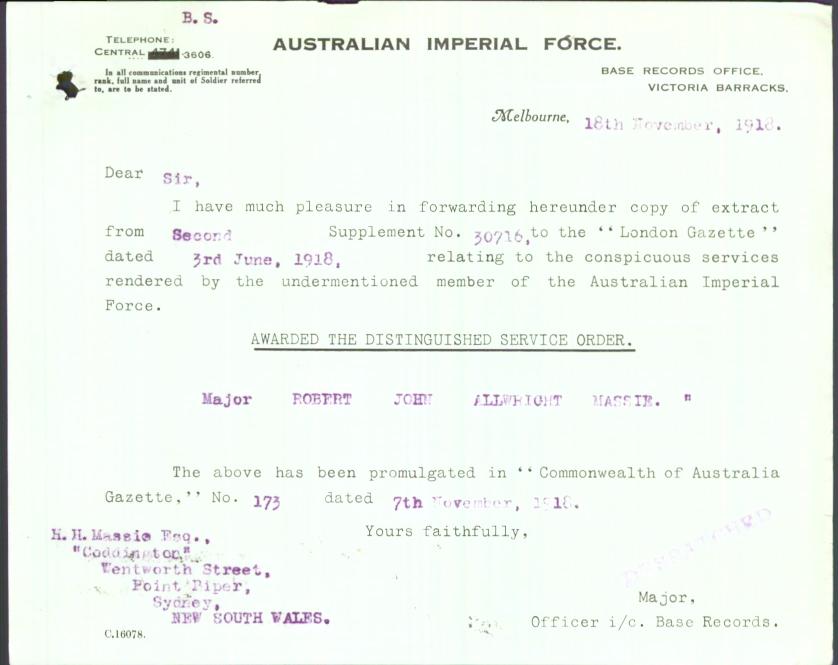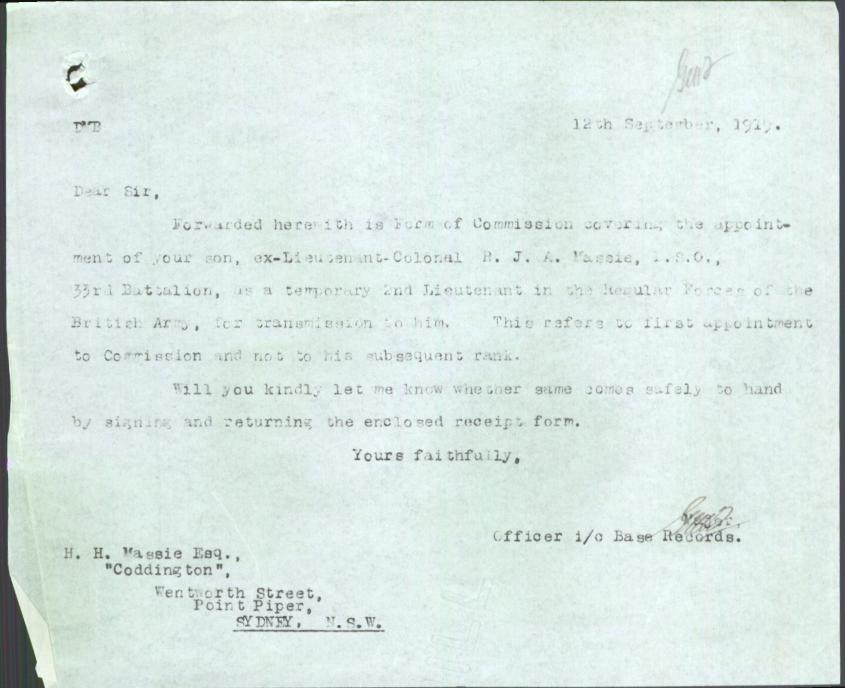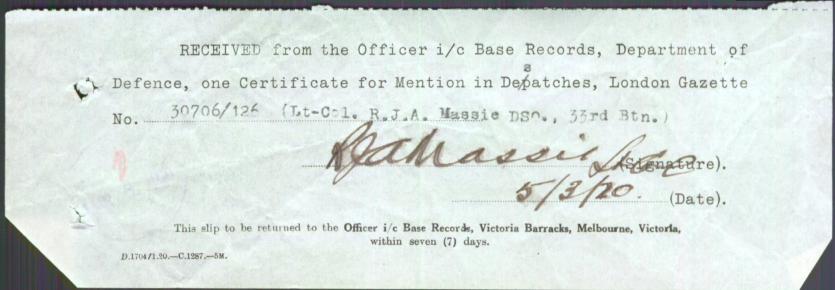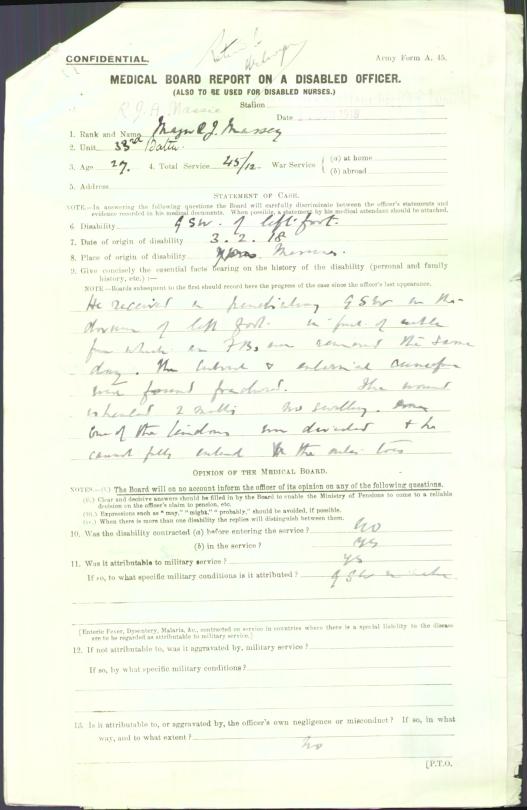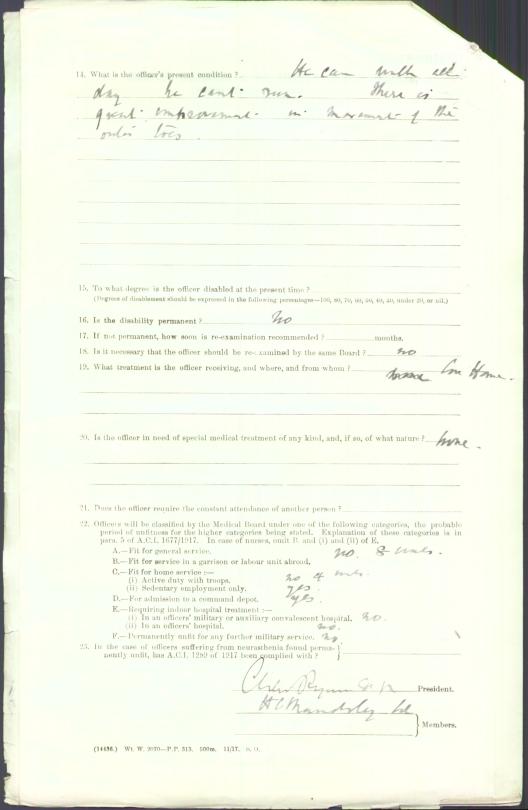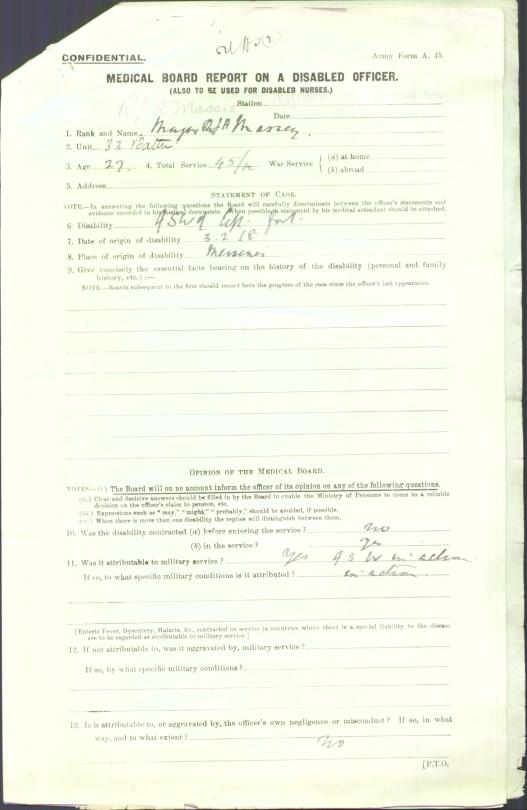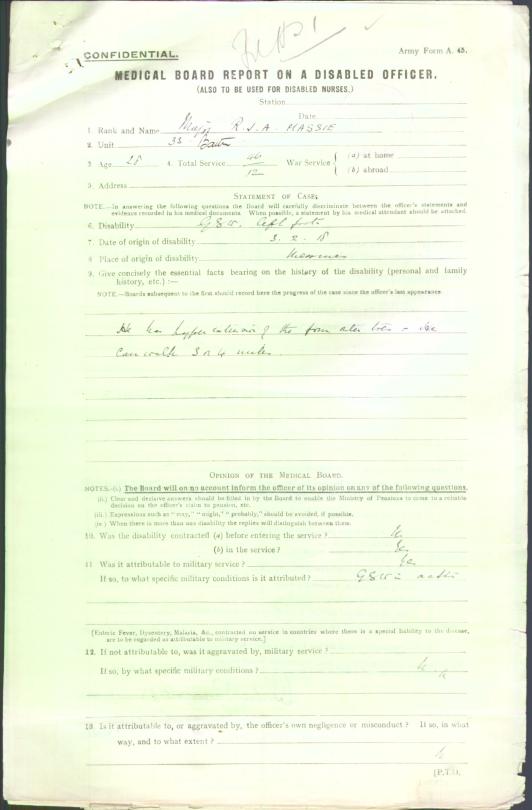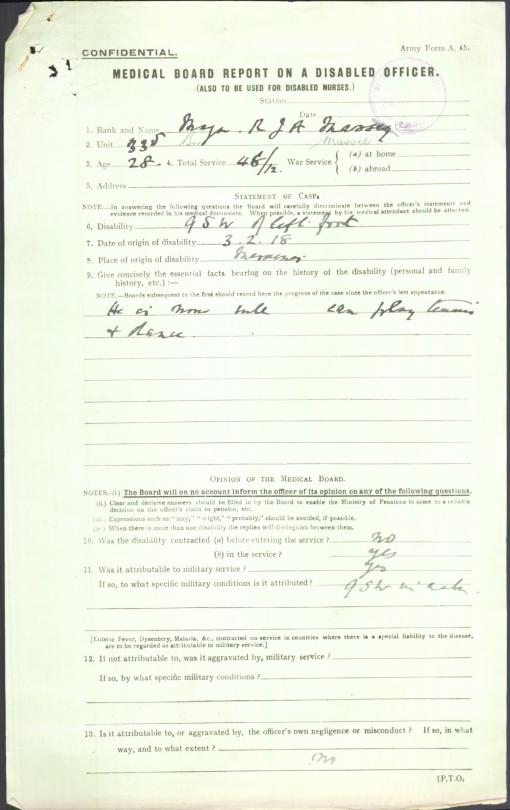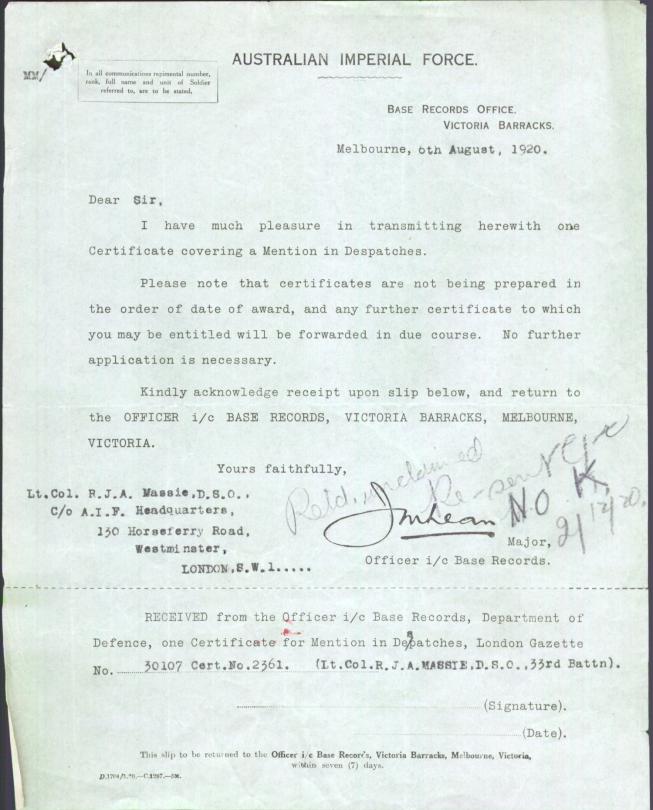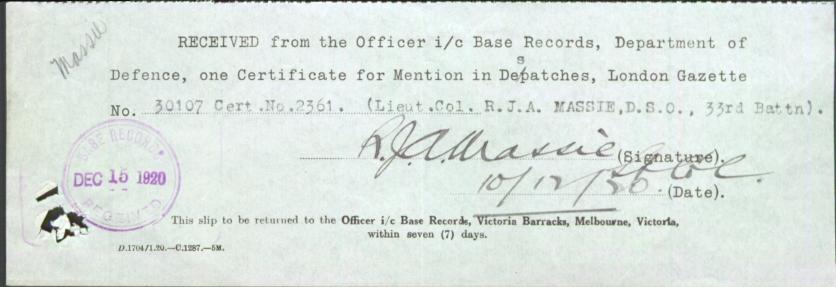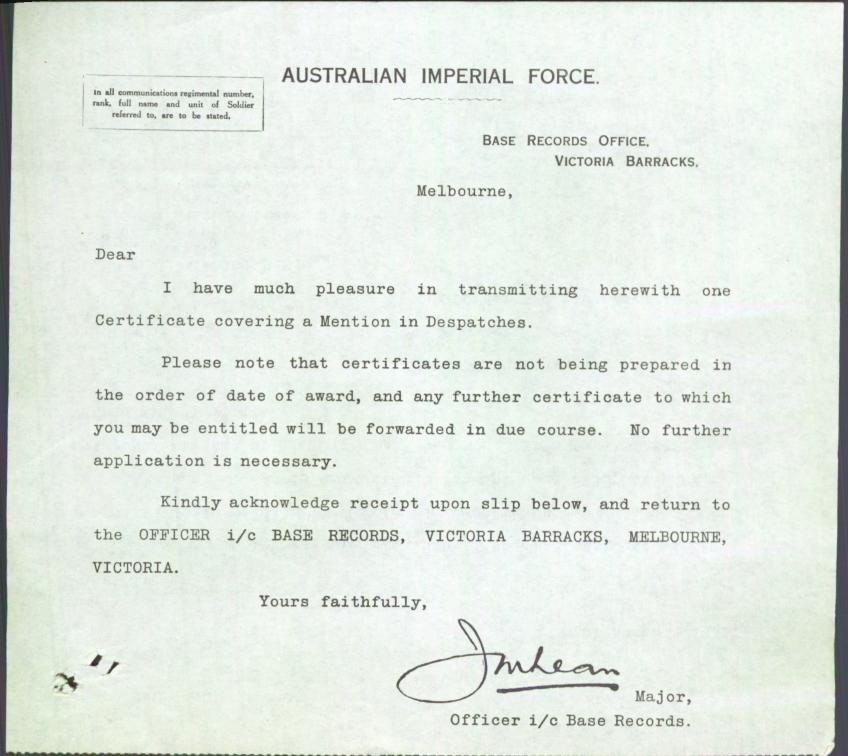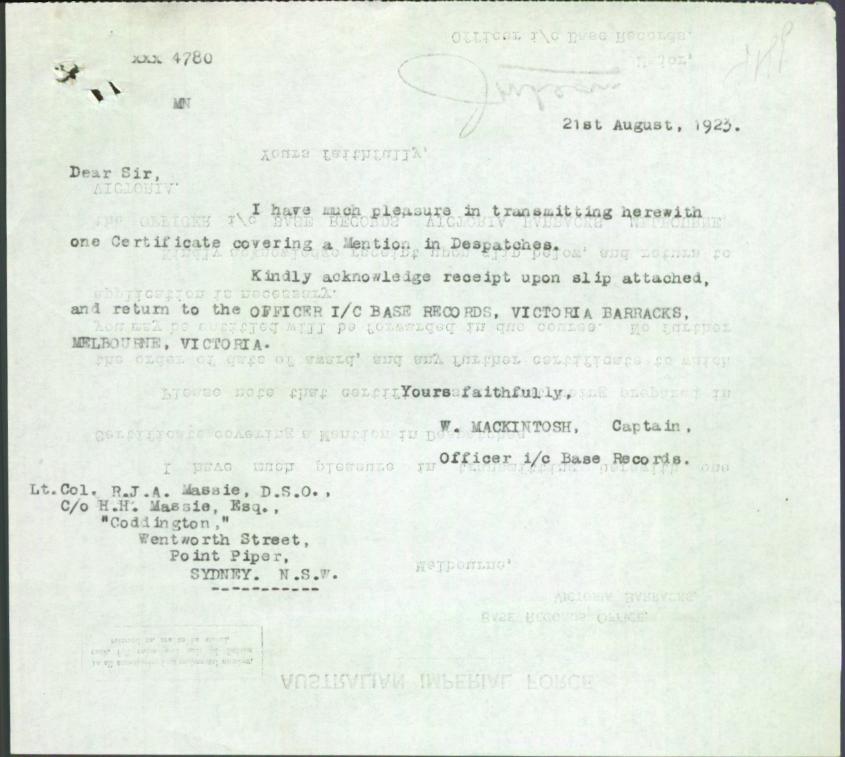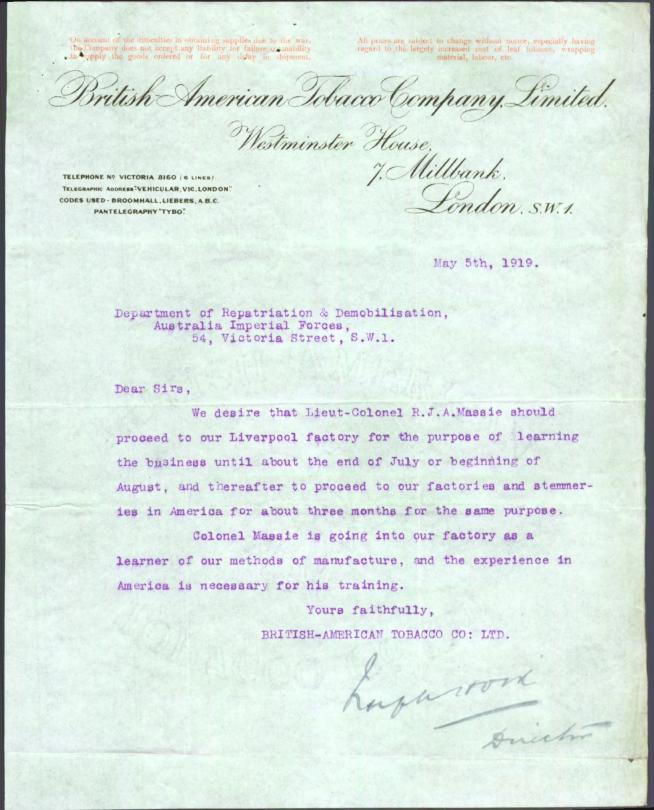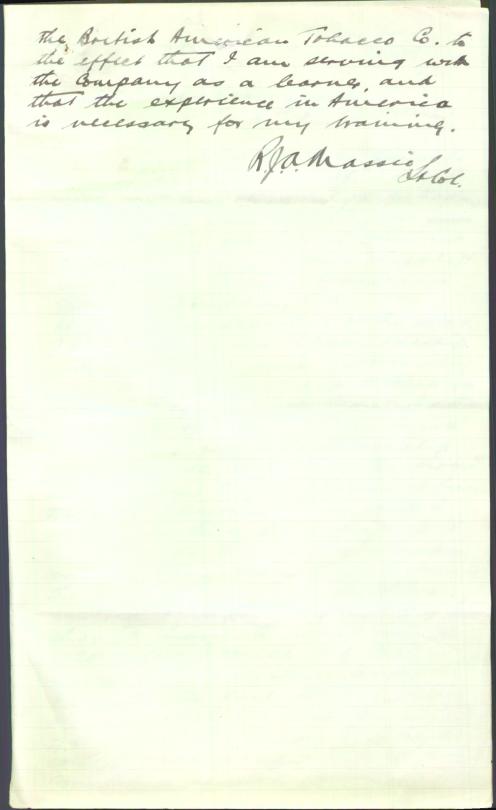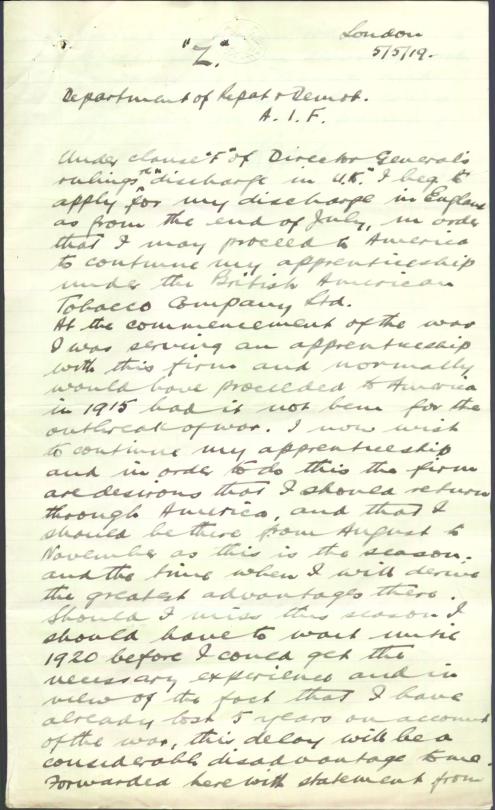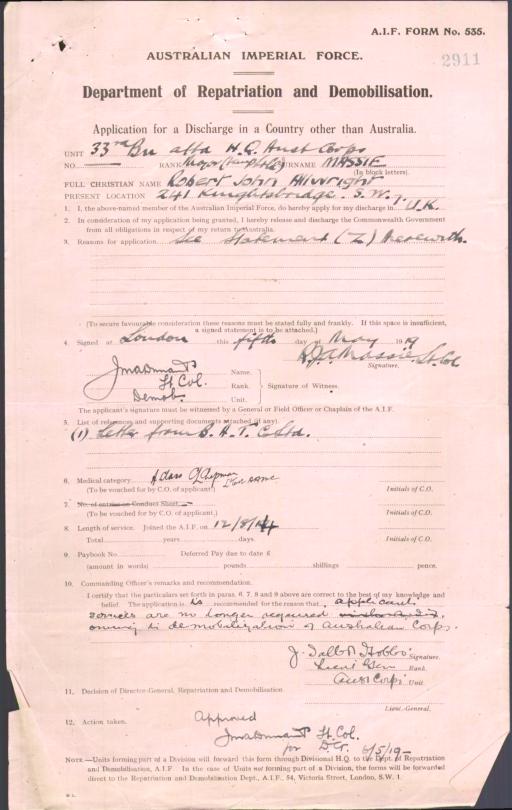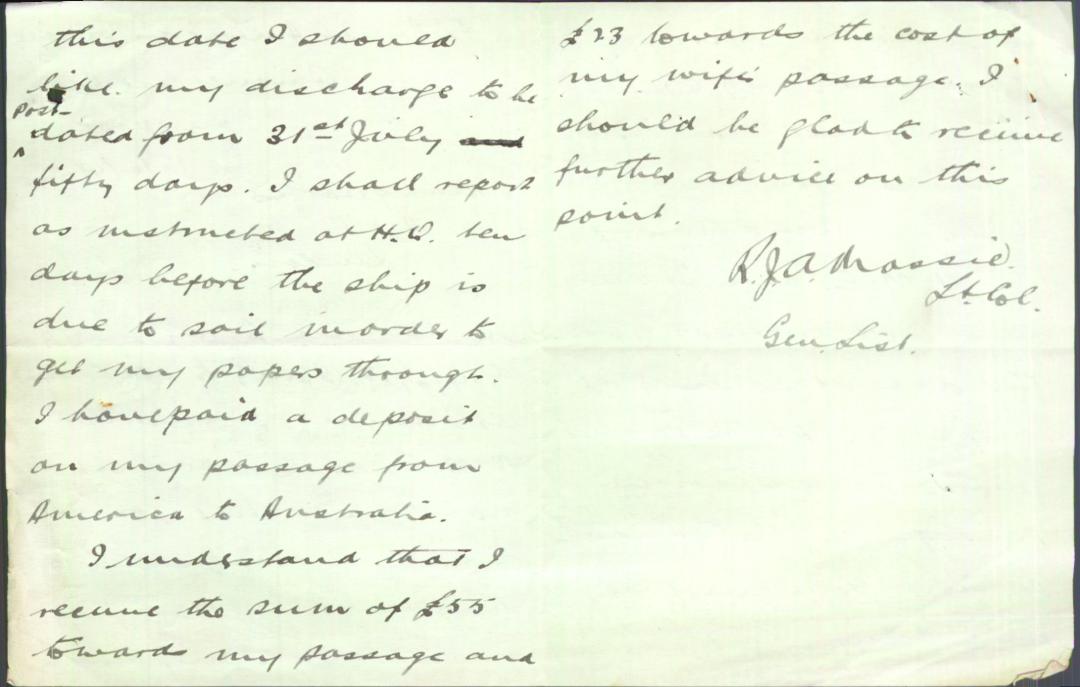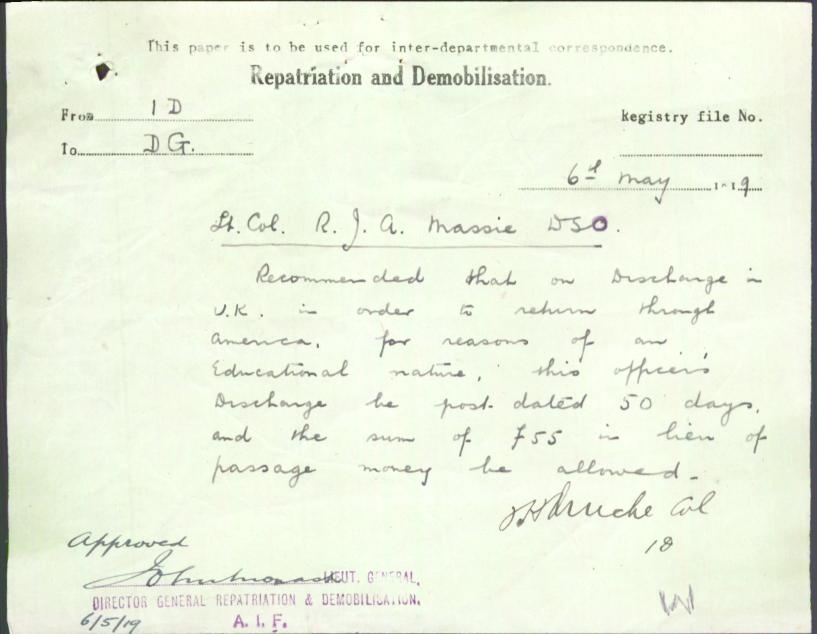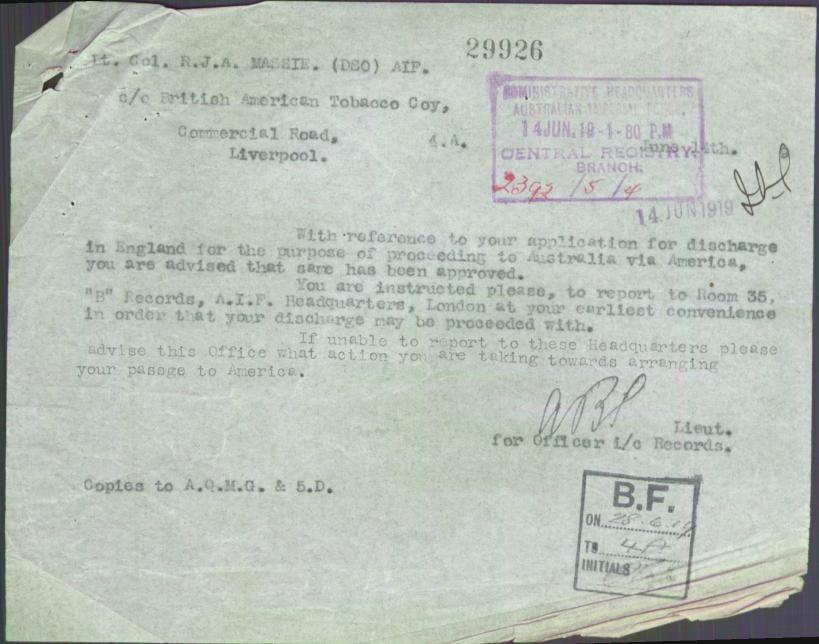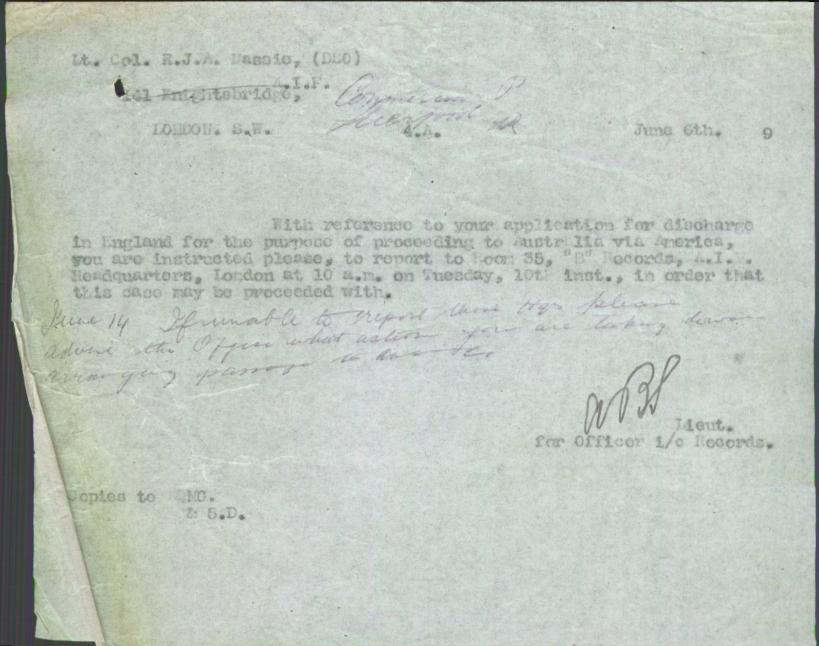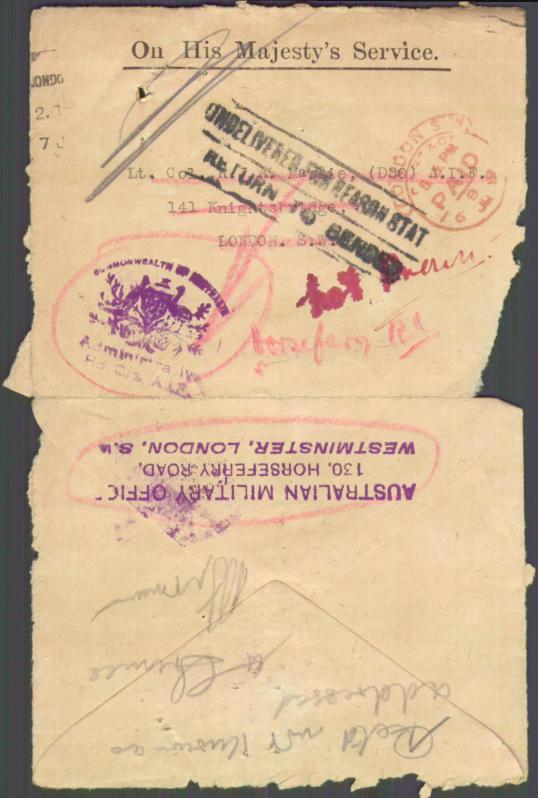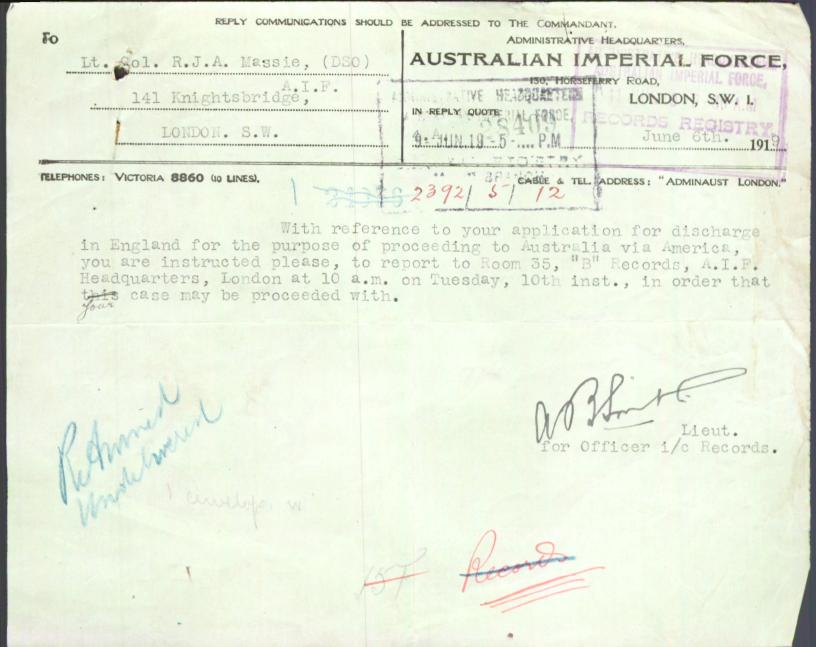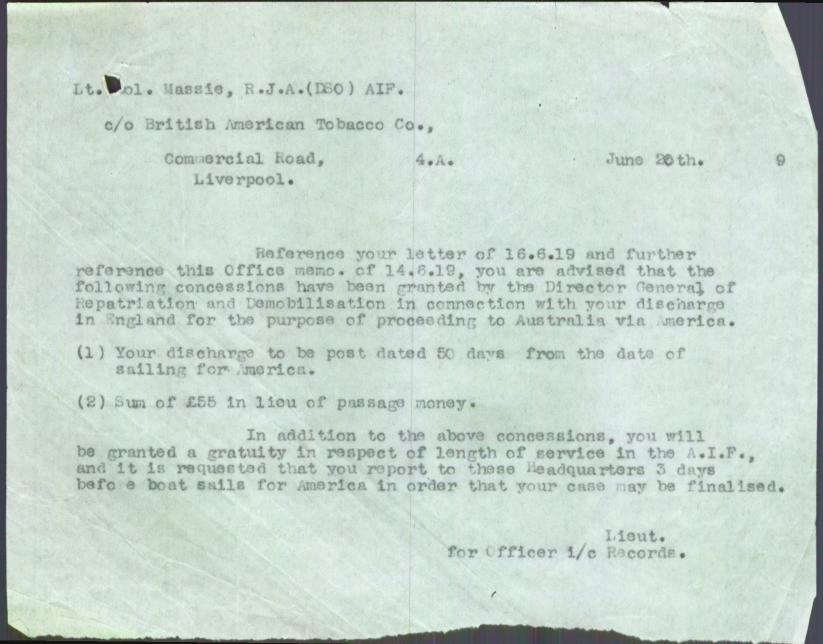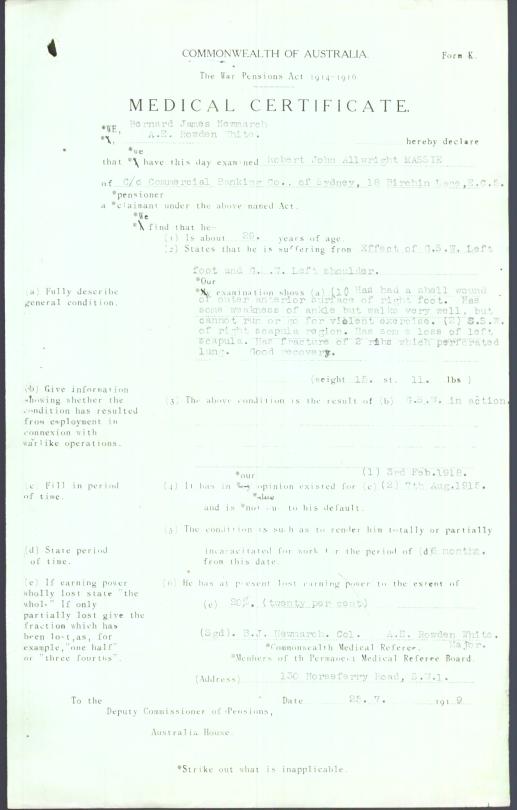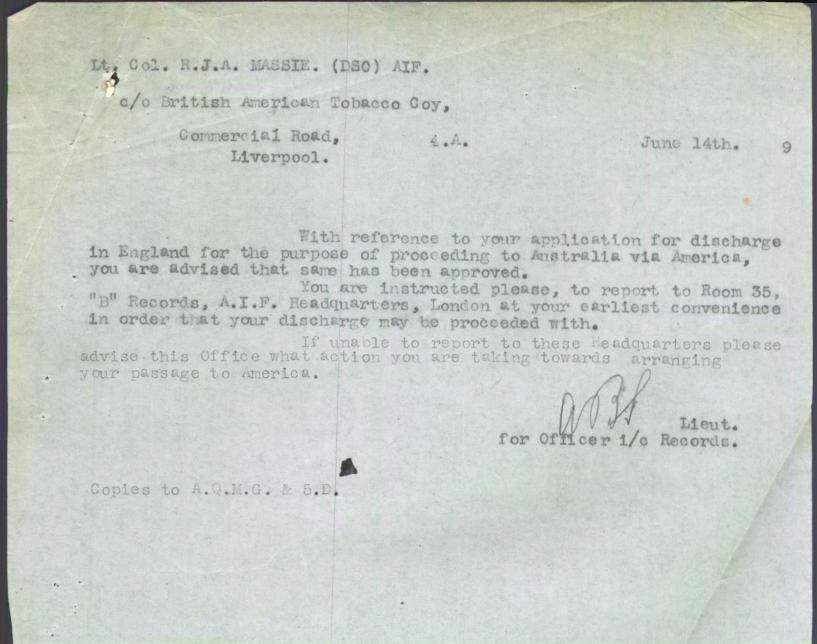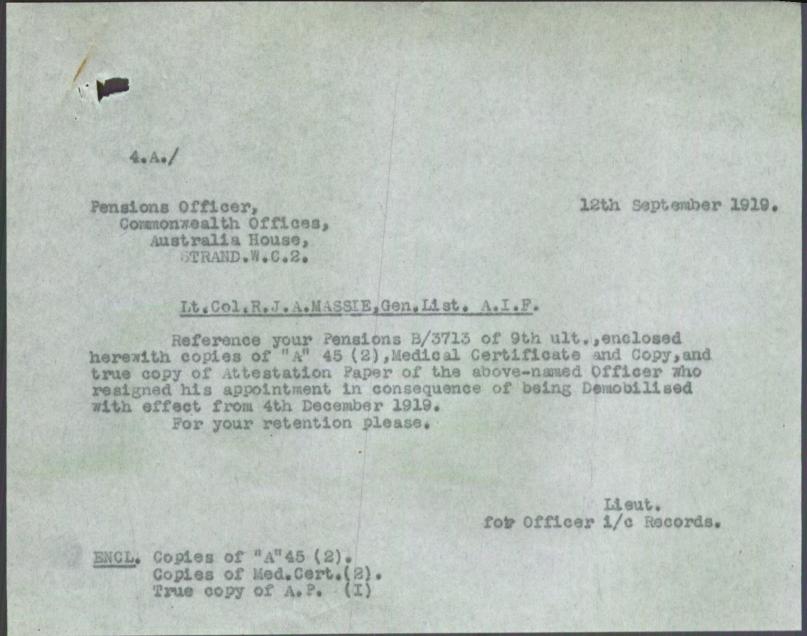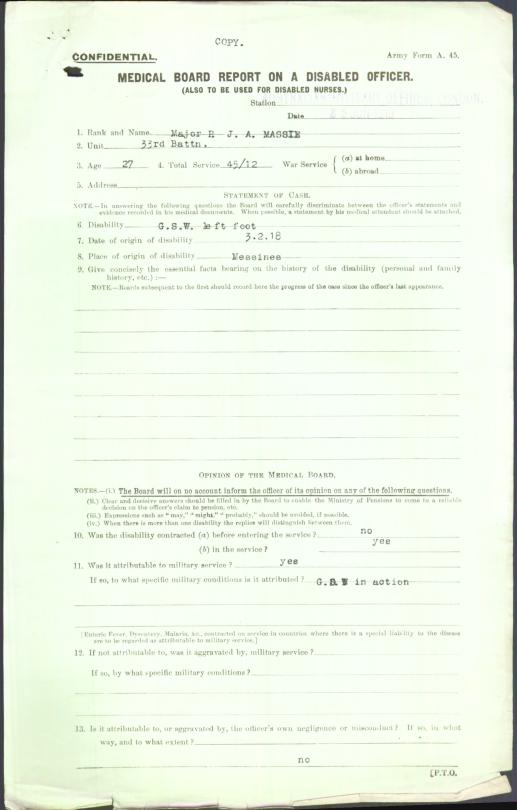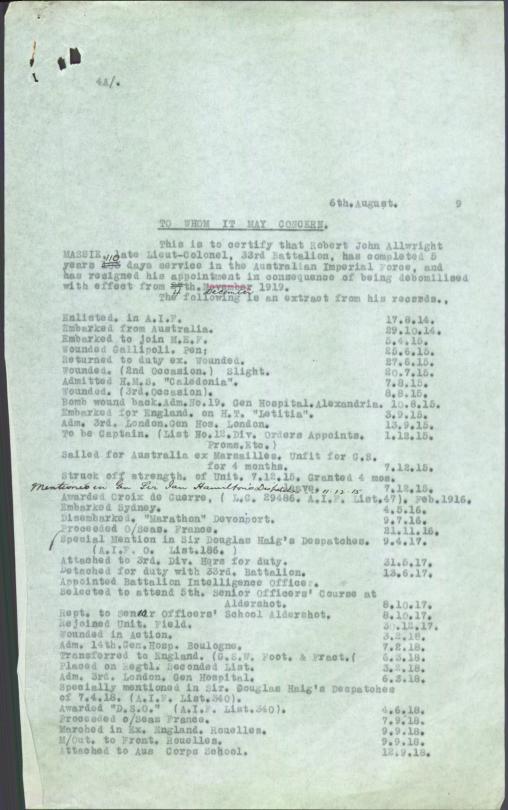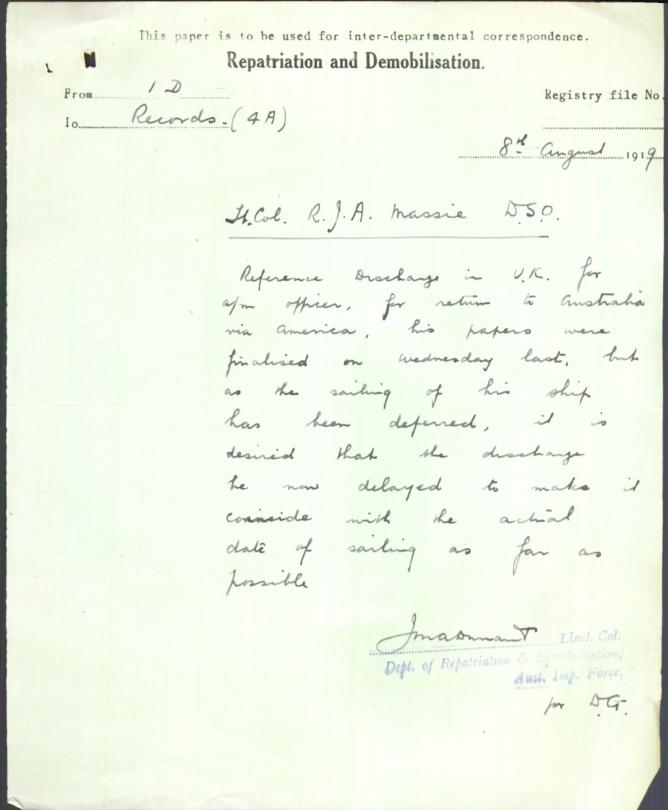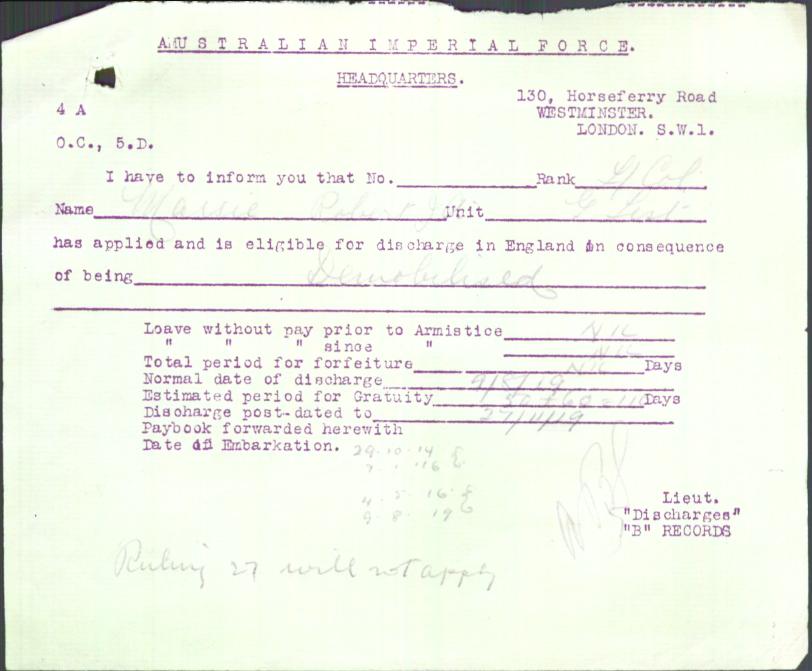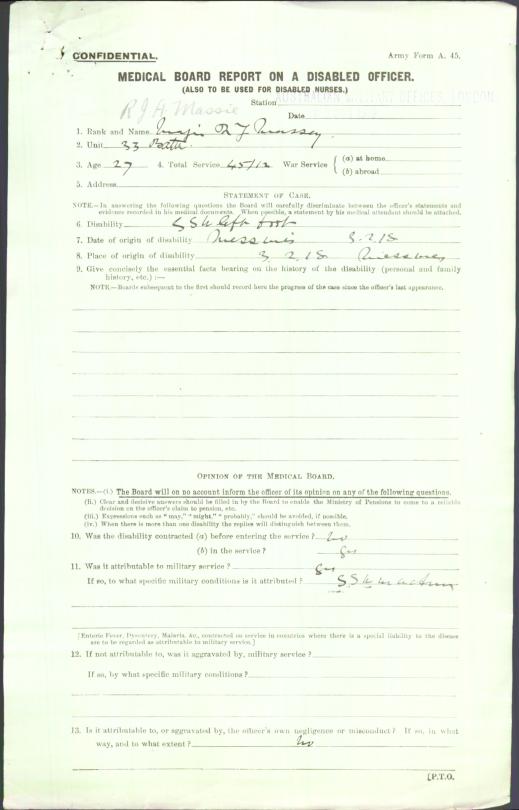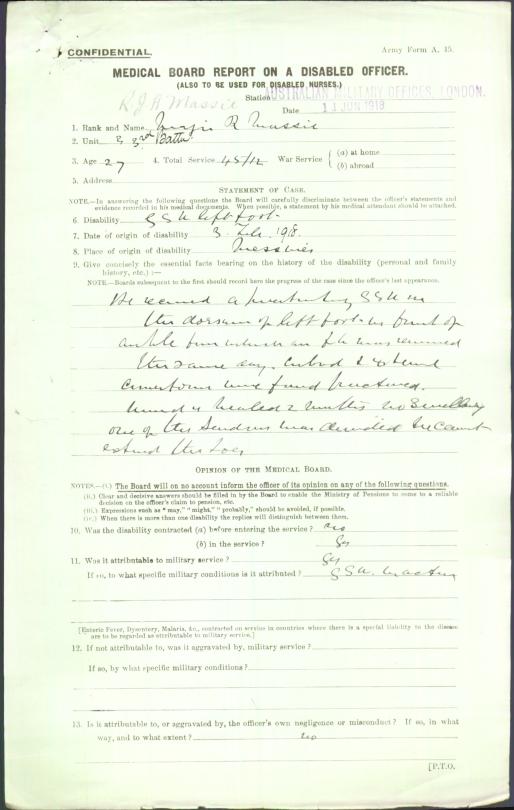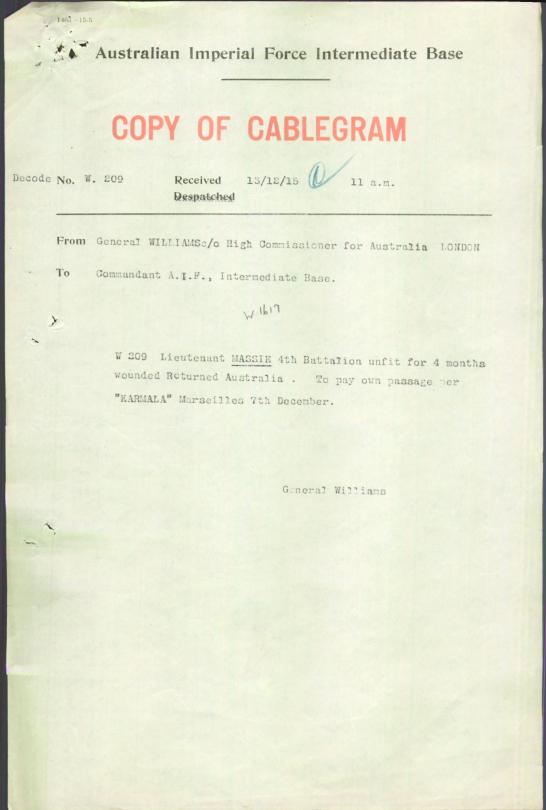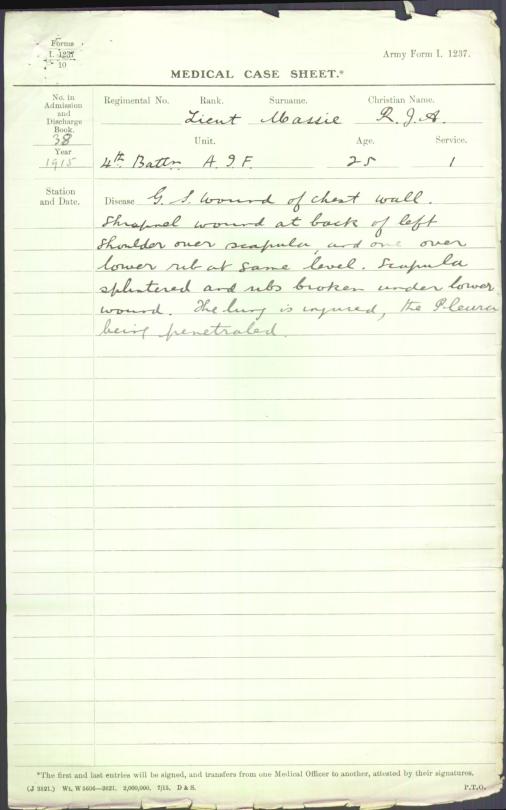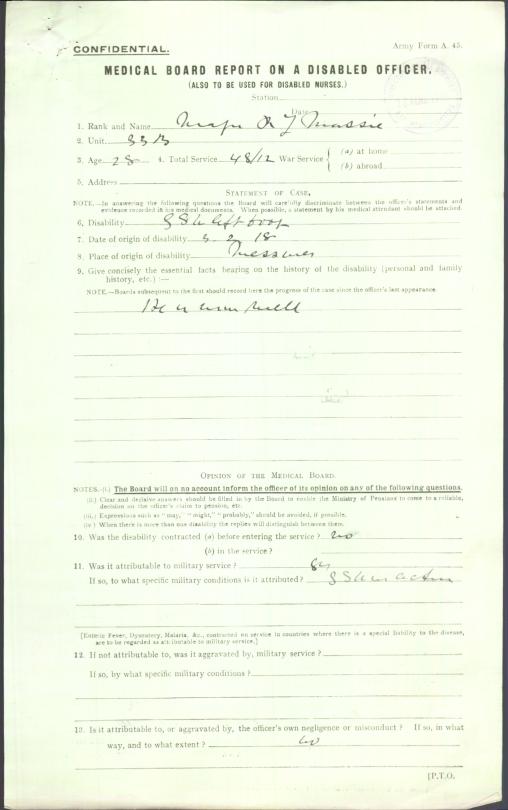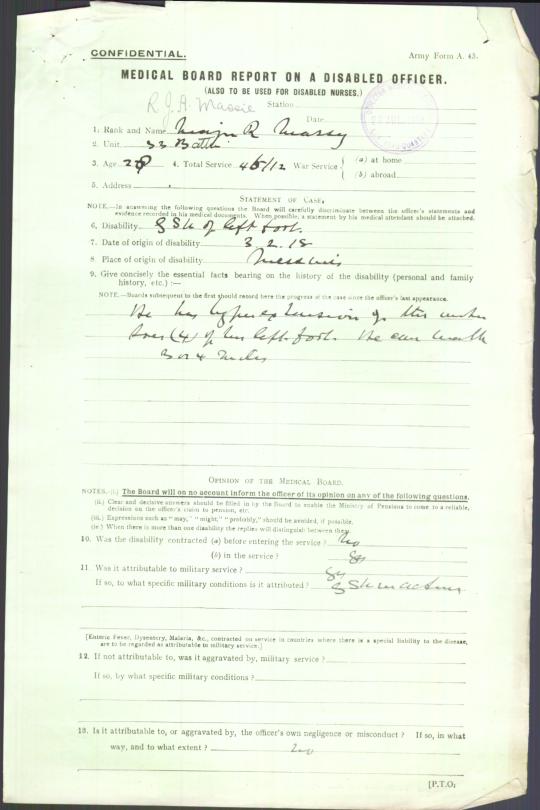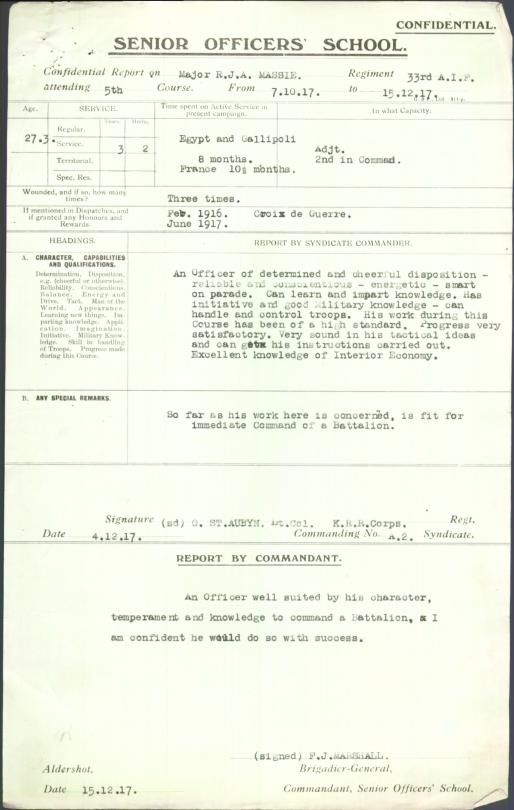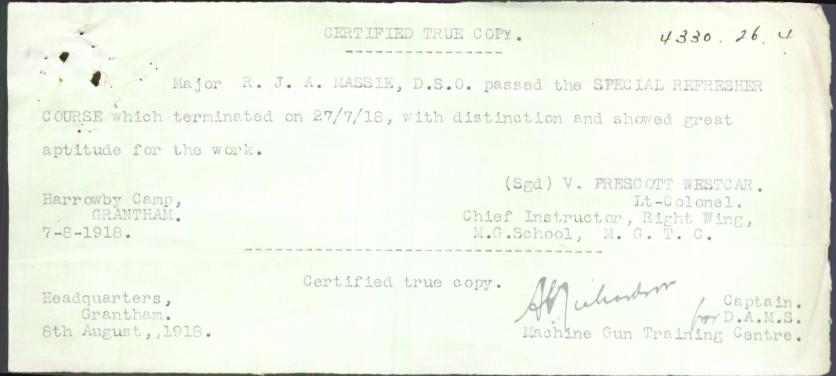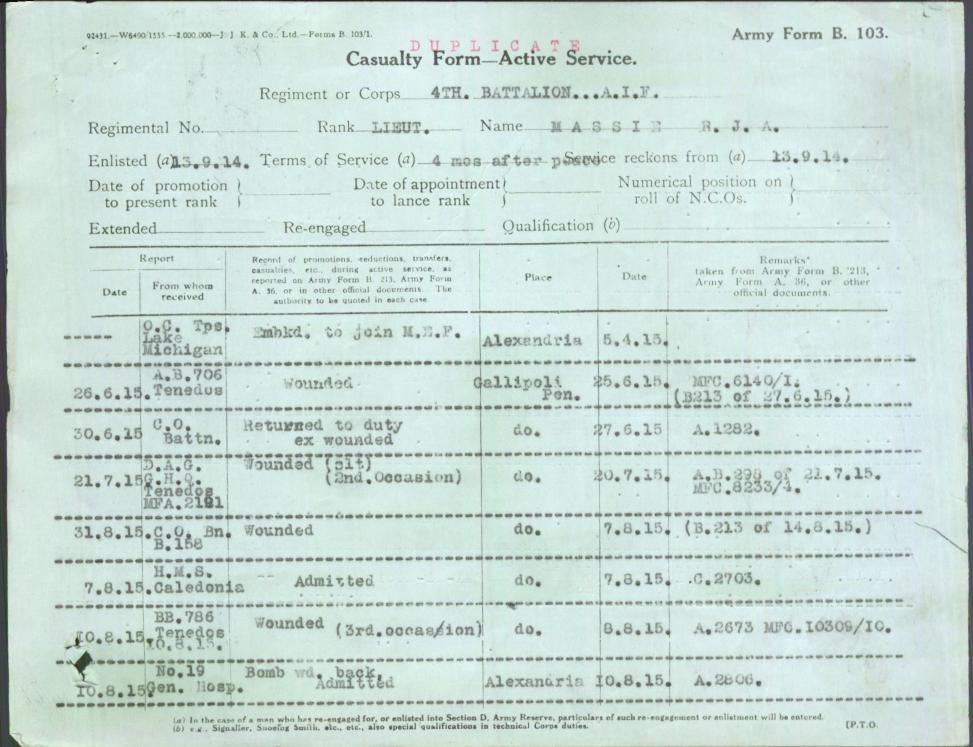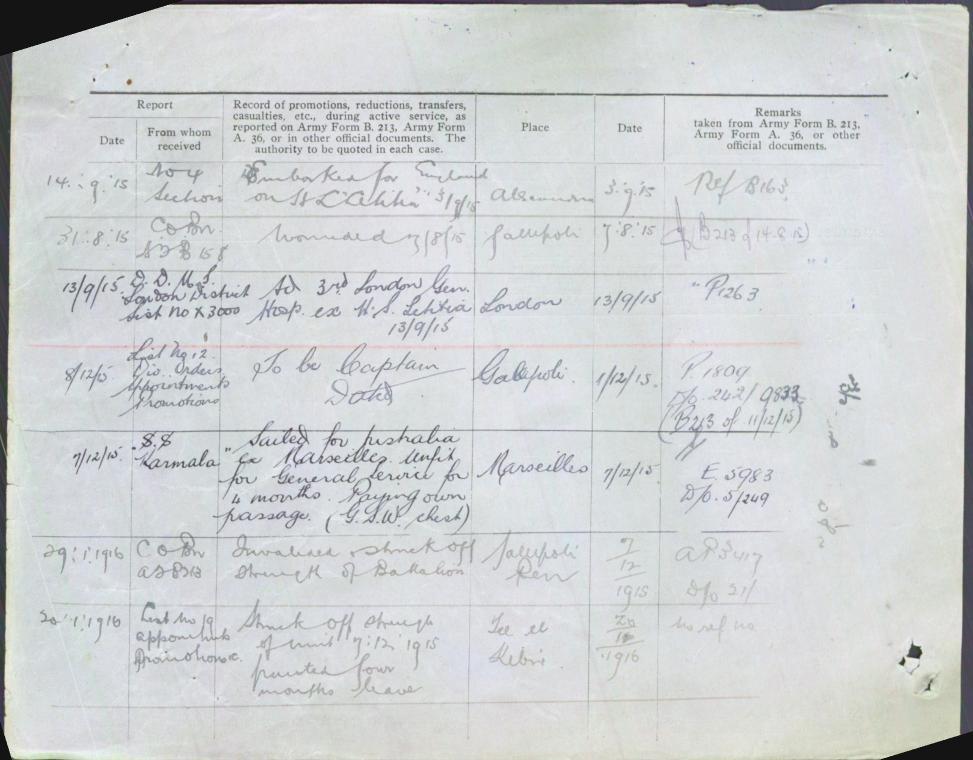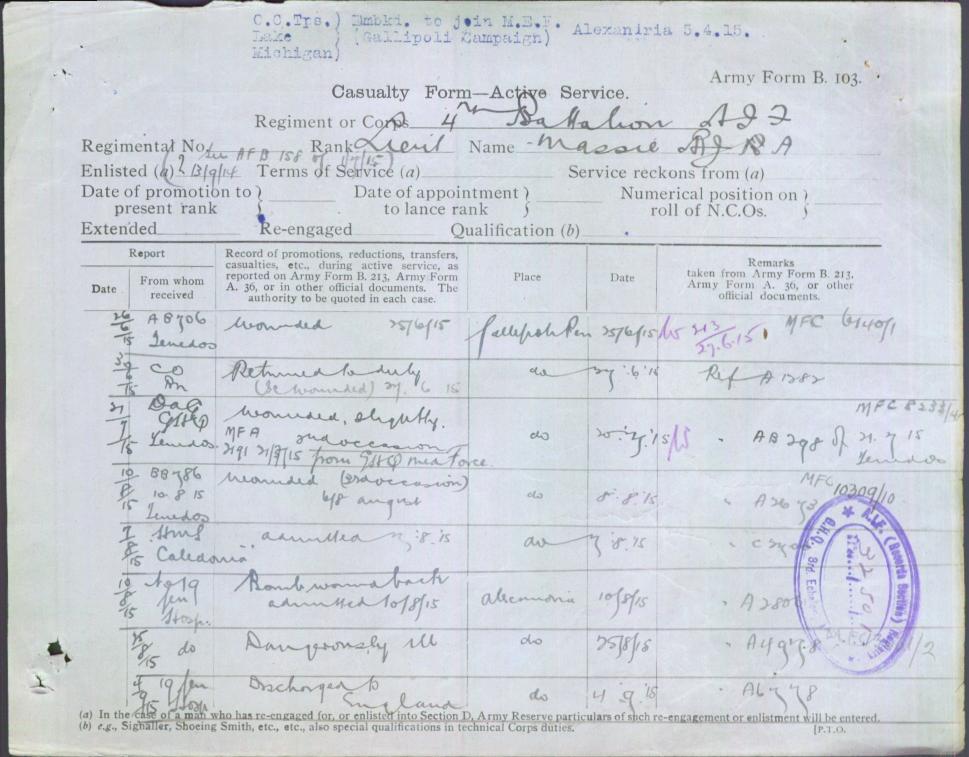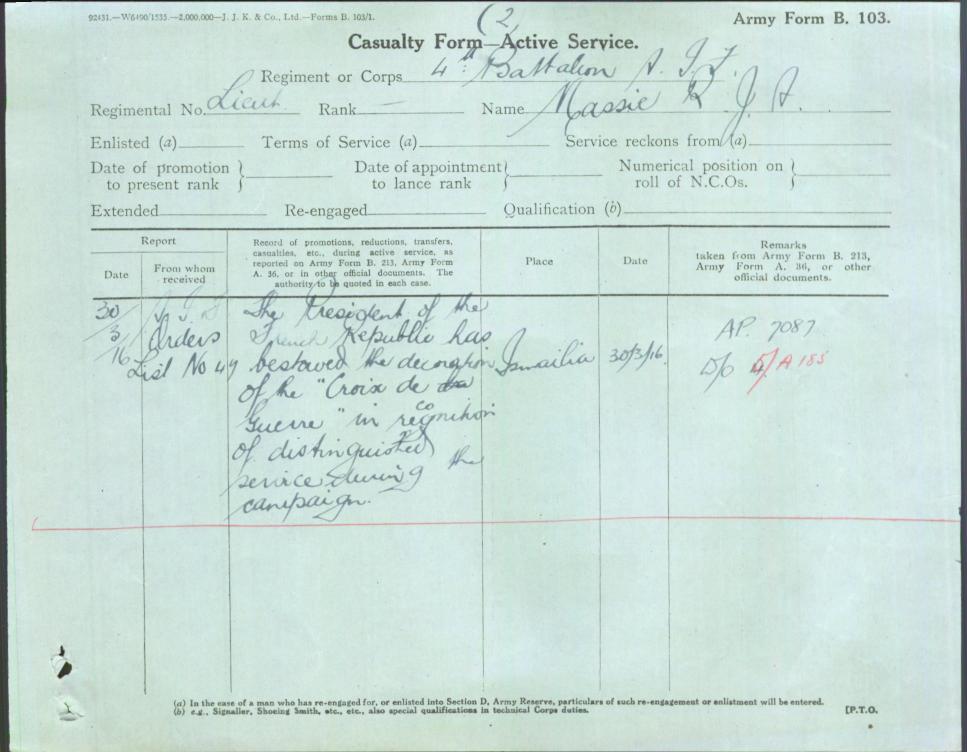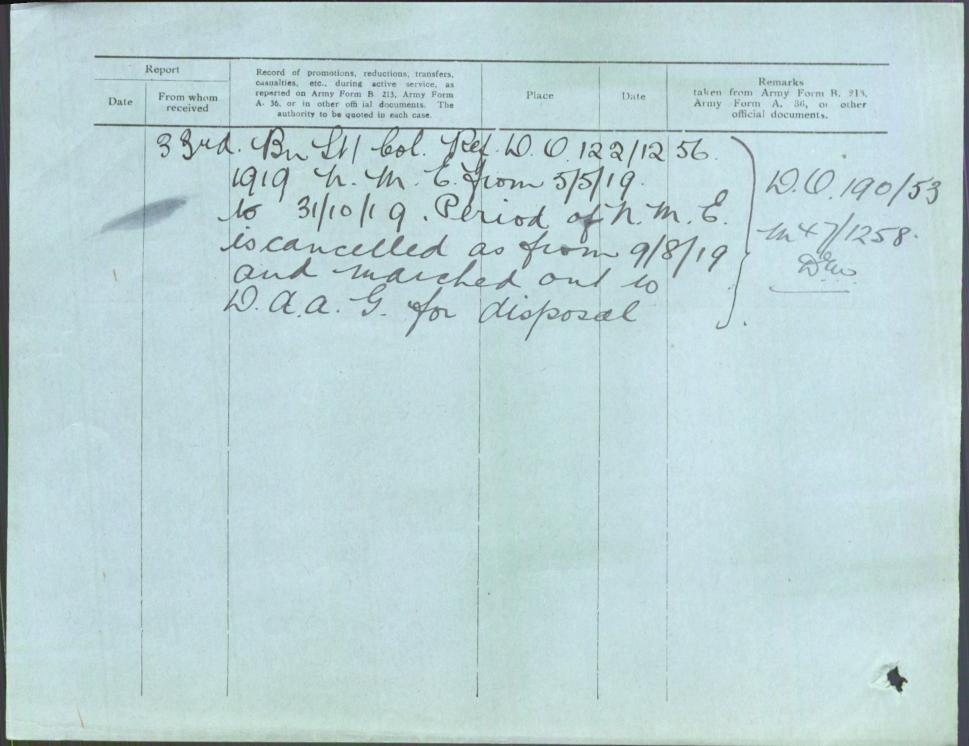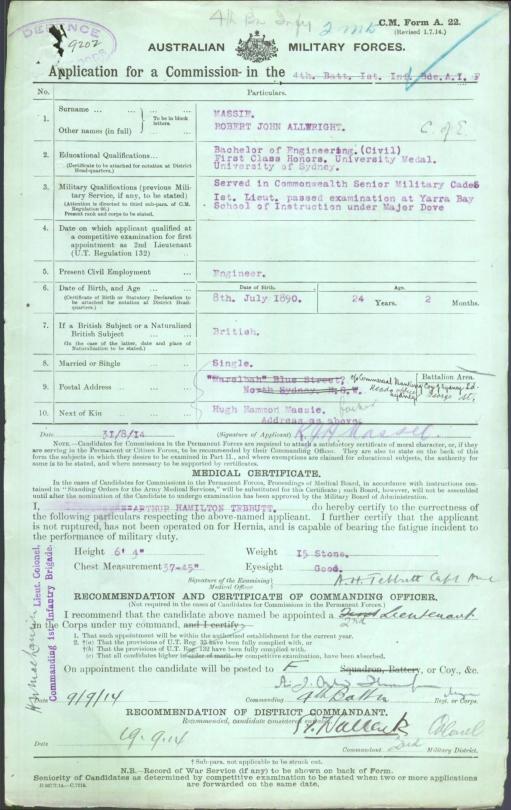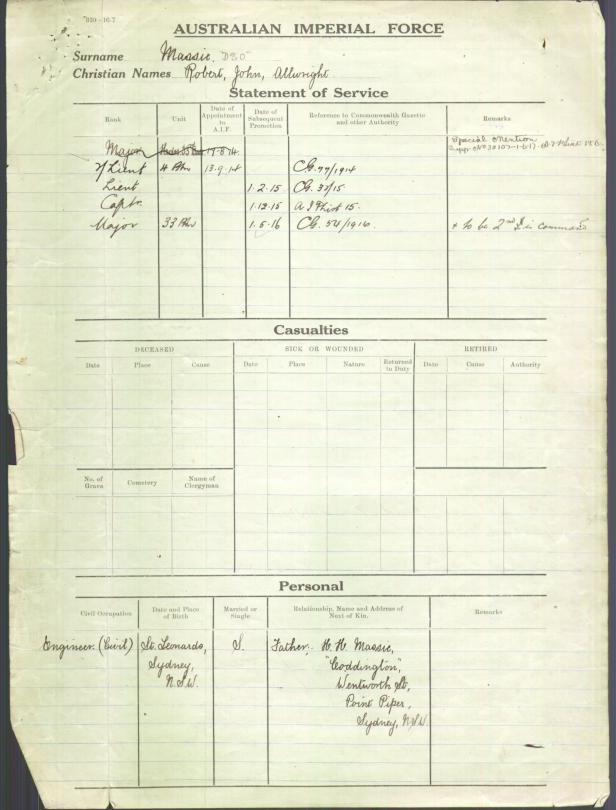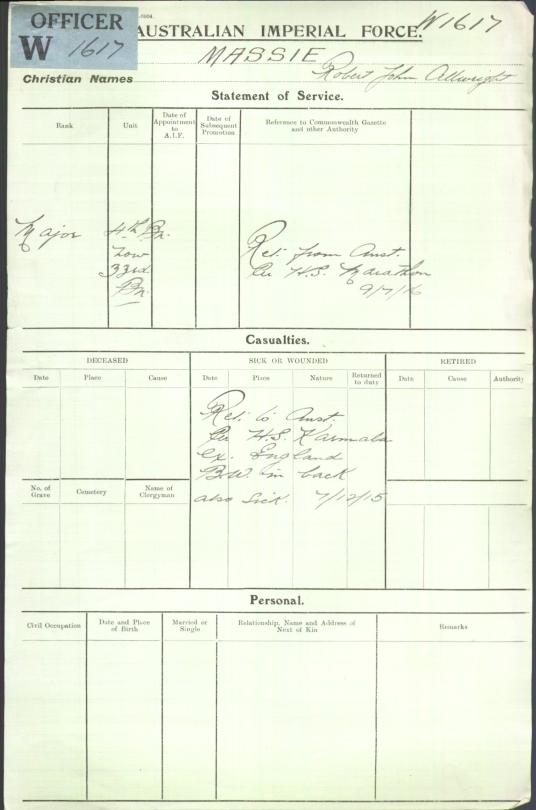
33rd BATTALION - 34th BATTALION A.I.F.
Lieutenant: 2384 Eric George SCHMUTTER. @ (SHELDON) D.C.M.
Born: 26th August 1896. Armidale, New South Wales, Australia. Birth Cert:28356/1896.
Married:1920. Armidale, New South Wales, Australia. Marriage Cert:19706/1920.
Wife: Beatrice Sheldon. nee: Varley.
Died: 31st October 1977. Balgowlah, New South Wales, Australia. Death Cert:25977/1977.
Father: Henry "Harry" Schmutter.
Mother: Matilda Schmutter. nee: Rose.
INFORMATION
Eric George Schmutter enlisted on the 4th Reinforcements, 33rd Battalion AIF on 16th of September 1915, he changed his surname to SHELDON in 1917.
Informant; Private: 2432 John ROBERTSON 33rd Battalion. Private: 3007 William (Doom) ARKINS was hit by a shell when in billets early in the morning, shell seemed to explode right under him. He was taken away from Billets on a stretcher but I don't think he was alive long I saw this. He was wounded at Passchendaele and not long back.
Informant; Sergeant 2432 Eric George SHELDON "We were in billets in Villers-Brettoneux and ARKINS was hit by a piece of shell when in his billet. I heard the shell burst and went in to the billet and found him unconscious. Corporal: 3069 Henry Dayrell HERDSON C Coy, 12th Platoon, 33rd Battalion was under the same blankets with ARKINS, and was not touched.
Fritz attacked that day and we had to go out, but I heard that ARKINS never regained consciousness and died in the dressing station in Villers Brettoneux of which Captain: Melrose Holtam MAILER Medical Officer 33rd Battalion was in charge. ARKINS as in C Company 12th Platoon, and was a Lewis Gunner, and a very fine chap. He was a School Teacher at home, but I do not know where I should think he was 30 or so.
8th August 1918.
The approach was made in two stages. The 33rd Battalion moved from VIEW SECTOR on the night of August 6th/7th to AUBIGNY and rested there for 24 hours. On the night of August 7th/8th the Battalion passed the starting point at C.3.C.70.20 at 10.20pm. "A" track was used. The marking of the route was not sufficient, consequently it was picqueted by 30 men, including the band, under an officer. The march was made without incident or interruptions and we suffered no casualties. the head of the column reached the jumping-off line at 1.10 am. The march discipline throughout was excellent.
"A" track was laid to our left flank, consequently a tape line was laid to the centre of the Battalion front. "A" and "B" Company's wheeled in single file to the right, and "C" and "D" Company's to the left. As shown in the attached map, the jumping line was in rear of our outpost line in places. There was plenty of room in the front line (BARRABOOL TRENCH) for the whole Battalion to be under cover. The original plan was to remain in this trench until zero minus 5 minutes. But the situation was so quiet that the Companies were able to take up their dispositions in their ordered formation, and so rest in the open.
This assembly was completed at 2.10 am. We had no casualties before zero hour. Lieutenant: 129 Walter Gilligan MASON. (A Company Scout Officer) had charge of laying the tapes and did this work very well. Six direction tapes each 100 yards long were laid, one on each flank of the Battalion and one in the centre of each platoon front. These proved of the greatest value owing to the fog. The 33rd Battalion Scouts relieved those of the 38th Battalion who were holding the sector at 10.00 pm. At 10.30 they encountered an enemy post at P.21.B.30.20; the enemy threw bombs and wounded five of our men. Ten minutes later the 38th Battalion had an Officers patrol in NO MAN'S LAND but no further trace of the enemy could be found.
The Assault at about 4.00 am, as a dense fog arose, so dense was it that it was impossible to see more than 10 feet ahead. The whole artillery opened fire with great precision, and the barrage was very accurate. The fog made it extremely difficult to keep direction and to maintain formation, consequently the advance resolved itself into small parties moving on their own initiative. Only the first of the special ACCROCHE WOOD Signals could be seen, the smoke accentuated the fog. Even the barrage could not be seen.
ACCROCHE WOOD was strongly garrisoned and contained an abnormally large number of machine guns, but the garrison offered no resistance and readily surrendered. The attack was quite unexpected, and the fog was certainly to our advantage. The enemy remained in his dugouts during the bombardment. He gave us very little occasion to use bombs as he readily came forward with his hands extended above his head, one would almost think this was one of his favorite P.T. exercises.
Most of the guns in LONE VALLEY got away they were aided by the fog and all that we could do was to open fire on them. We captured only three guns in this valley, three 4.2s south of RAT WOOD. HAZEL WOOD was captured without difficulty. The GREEN LINE was reached according to schedule and consolidation immediately commenced. On the left protective barrage at 8.20 am when the 4th Division passed through us to the second phase of the attack, this line was re-sited and ran from Q.25.B.40.80; to Q.20.A.40.10; We were in touch with the 35th Battalion on our left and the 18th Battalion who did not occupy their allotted front. The sector was organised into four Company Sub Sectors each with two Platoons in the front line and two in support. Battalion Headquarters were established at P.23.D.50.50; The re-organisation and refitting of the Battalion was carried out without delay.
The barrage was excellent, not a single short being reported. All ranks are most enthusiastic in their appreciation of the exceedingly fine work of our artillery. The movement forward of our batteries to assist in the second phase was splendidly carried out. Special mention too must be made to the good work of the 10th and 9th A.L.T.M. Batteries and the 5th and 6th A.M.T.M. Batteries. One expected to see many more enemy dead in the area, not more than 50 were seen. The enemy's resorting to deep dugouts and his good form in athletics accounted for this.
The enemy's artillery was surprisingly feeble. At no time was his fire effective. When he eventually did learn something of the situation he lost no time in beating a hasty retreat. In the early stages the tanks were no assistance, being behind our troops most of the time. When the visibility allowed the tanks to go forward they did excellent work. Only one tank reached the green line with our troops. When they did get in front they were handled to great advantage. Their effect on the enemy's moral greatly delighted our men. The supply tank formed our dump 300 yards in rear of our line. The value of getting such large supplies forward so early and saving of infantry carrying parties cannot be overestimated.
The work of our machine guns could only be heard. Their fire appeared to be well concentrated and undoubtedly must have been accurate. Only one means of communication was possible, namely runners, and they had very great difficulty in finding their way; On the fog lifting viability and telephonic communication was established. The liaison patrols with the 5th Brigade on our right did not function.
Seven officers, 500 other ranks were captured. This is a conservative estimate and much below the totals submitted by the Companies. 457 can be definitely accounted for these having passed through Battalion Headquarters. 4 x 4.2 Howitzers and 6 x 77 MM Guns. These were captured by Lieutenant: 3072 Frank Albert HUTCHINGS M.C. and party and were marked and tagged. This party worked in the Second Division's area and captured these guns just north of LA MOTTE-en-SANTARRE. On returning in the afternoon to ascertain the number they found, that the guns had been taken away. The remaining there were captured at LENA WOOD. 30 machine guns. Of these 16 have been sent to the HAMELET dump. We have not the numbers of the remaining 14, but the total of 30 is a low estimate. a number of our guns were removed by other units which did not take part in the attack. 1 x Anti-Tank gun. 10 light Minenwerfers, 2 medium minenwerfer, 1 horse, 2 typewriters, large quantity of shells, rifles, equipment, documents and war material.
Casualties 10 Killed in Action, 50 wounded.
(33rd Battalion Unit Diary)
21-22 August 1918.
"Zero Hour, August 21st, at thick fog lay across the front. The allied 3rd Army's Guns were clearly audible to the north. As reports filtered to the waiting Diggers, they learned that the Germans had been suprised, all objectives had been achieved and 2,000 prisoners had been taken. Because of the comparative ease of the victory of that first phase, it was decided to extend the second phase of the objectives. Gellibrand issued orders to continue the assault if the British 47th, on the Australian left flank, were successful and Bray was cleared. Unfortunately these orders, being last-minute, did not arrive at all units.
For the Australians their first active involvement in the action was planned for dawn on the 22nd August, at 4:45am. Zt 2:20am the Germans, possibly anticipating an attack, opened up with a barrage of artillery which went for an hour. The 33rd was being held in old trenches near Tallis Wood. It was a bright moonlit night, and officers and scouts laying tapes to mark the jumping off point could plainly see the advancing Battalions 800 yards away. A second enemy barrage fell at 4:00am. This time the 33rd were caught on the Meaulte-Etinechem Road where they had assembled. The men flattened themselves as shells landed around them on the road., continually showering them with dirt. For some reason a forward German post asked their Gunners to lift their range, to the great relief of the 33rd, but it wasn't such a good move for the 3rd Division Machine Gunners who were formed up in the rear ready to cover the flanks, nor for the reserve 11th Brigade. Both reported casualties from the shelling. The 33rd had been lucky to receive only twenty casualties, the 35th a mere six.
The road, well behind the forward posts, had been chosen as the starting point for the simplicity's sake. These posts were withdrawn just before the opening barrage, which began on schedule. From there the 'creep' was slow, the barrage advancing only a hundred yards in four minutes. A number of phosphorous shells were dropped along the way to form a smoke screen, and this, combined with the dust and early morning mist, cut visibility to only ten yards. The enemy counter barrage was fired within two minutes of the opening, but before the area was taken the Germans had cleared out. The 33rd met with a few enemy Machine-Gun posts in the valley bottom, but these were quickly outflanked and subdued. A forward German Battalion Headquarters, of the 124th Imperial Reserves , was also captured, along with its commander, liaison officers, forty men and four Machine-Guns.
Shortly afterwards our own wounded commenced to arrive at the Dressing Station and the Regimental Medical Officer Captain: William Johnstone BINNS. and staff commenced to get busy. He was assisted by Battalion Padre Chaplain: 12991 Walter Emra Kingscote BIRKITT who was an old field ambulance man. Lieutenant: 2559 Robert Horner FLETCHER- wounded by an aerial bomb - was the first officer to appear and he was able to give us some idea as how things were going. About this time word was received that Captain: Thomas William TOLLIS of C company and Lieutenant. Alfred Gordon FARLEIGH of B Company had been killed by shots from our own barrage".
(Never a Backward Step; Edwards 1996)
30-31st August 1918.
St QUENTIN
On the northern flank the 3rd Division's attack had been arranged at short notice after a day exhausting to both infantry and artillery, and in the face of other particular difficulties. The timing of the attack was to be taken from the left where the 58th Division, somewhat further back than the 9th Brigade, started at 5:10 am behind a very slow barrage to attack Marrieres Wood. The 9th Brigade using the 33rd Battalion, started at the time arranged, 5:40 am, but the artillery had not yet received its orders and though it fired, the barrage was thin and machine-guns in the south-west corner of Road Wood stopped the 33rd.
One Company was late, but Captain: Walter John Clare DUNCAN. M.C. had swung his Company into its place. Major: Cedric Errol Meyer BRODZIAK. D.S.O. was now killed while referring to his map. But within twenty minutes the artillery greatly increased its fire. The 33rd were able to raise their heads. A private Private: 726 George CARTWRIGHT. V.C. stood up and from the shoulder fired at the troublesome German gunner and then walking forward shot him and the two men who took his place.
Next, covering his run by exploding a bomb shot of the trench, he rushed the gun and captured 9 Germans. The 33rd stood up and cheered him, and then advancing by two's and three's entered the wood. Private: 792 William Allan IRWIN. D.C.M an Australian half-caste, after attacking like Cartwright, was mortally wounded and Died of Wounds on the 1st of September 1918.
The 33rd was now considerably behind the 6th London (58th Division), having chased the Germans from Marrieres Wood, was held up by fire from Wary Alley which curved up the gully between the woods. Coming through the south Company Sergeant Major: 967 Louis John MATHIAS. D.C.M & Bar. cleared the Germans by fire from a Lewis Gun.
The 33rd now set to bombing up the old trenches leading up to the upper end of the 1916 Spur where the Peronne-Bapaume Road also ran through. On the nearer side of the road a German battery commander with his gun crews and some infantry was blazing with six field-guns into the Australian groups every were they left shelter.
From the southward side Lieutenant: 559 Edward Allen TURNBULL. and Lieutenant: William Alexander McLEAN. M.C. of the 33rd-the latter greatly helped by the leaders of the 10th Brigade Sergeant 1007 E E Walters. D.C.M, 39th Battalion and Corporal 5024 A V GRINTON. D.C.M, 38th Battalion, worked up and presently rushed the guns, the German Battery Commander fighting to the last with his revolver. He was shot by Lieutenant: 559 Edward Allen TURNBULL.
Captain: Walter John Clare DUNCAN. M.C. reaching realised that the old quarry beyond it was a commanding position and accordingly took it and 40 German prisoners and placed a post on its eastern rim. He then went back to Wary Alley, and finding some of the 6th London Regiment, got Captain: S T COOKE M.C, and 20 men to garrison the quarry while the 33rd lined the Bapaume Road on the right.
27/10/1918.
Recommended for the MILITARY MEDAL
Sergeant: 2384 Eric George SHELDON; For conspicuous gallantry and devotion to duty during the attack on ROAD WOOD near BOUCHAV... on the 31st of August 1918. Sergeant SHELDON took command of his Platoon on his Officer becoming a casualty. Meeting with heavy Machine-Gun Fire on entering the WOOD he organised an attack on the position under cover on his Lewis-Guns and succeeded in capturing the gun and 12 prisoners. On leaving the WOOD he again led his Platoon against a strong Machine-Gun post and captured the gun and crew. He then cleared the DEVILERS AKLEY and established liaison with the unit on our right flank. In the second advance that afternoon he again handled his Platoon with courage, resource and initiative. Throughout the operation, Sergeant SHELDON distinguished himself by his personal bravery and his skillful and determination leadership.
Awarded the DISTINGUISHED CONDUCT MEDAL
London Gazette 10th January 1920. Page 478 Position 5.
Commonwealth of Australia Gazette 15th of April 1920. Page 579 Position 11.
Eric was transferred to the 34th Battalion AIF on the 27th January 1919 and promoted to Lieutenant on the 6th of April 1919.
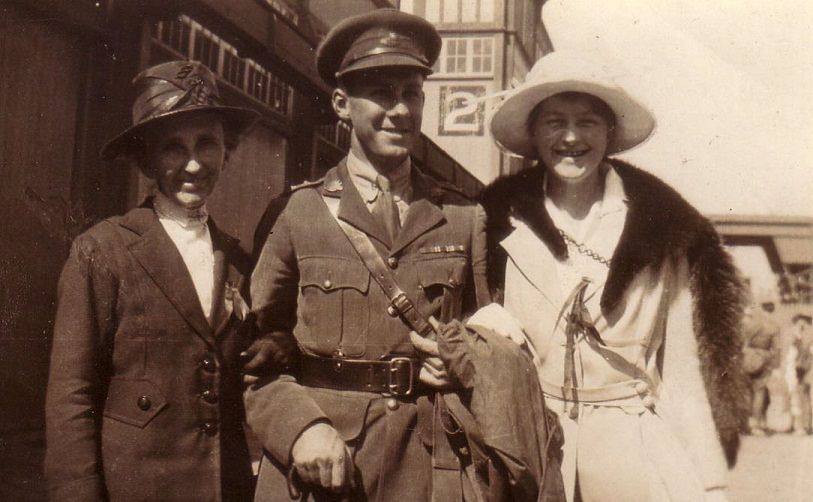
Eric embarked for Australia on the 25/07/1919 and was greeted by his mother Matilda and wife to be, Beatrice Van the 19 September 1919.

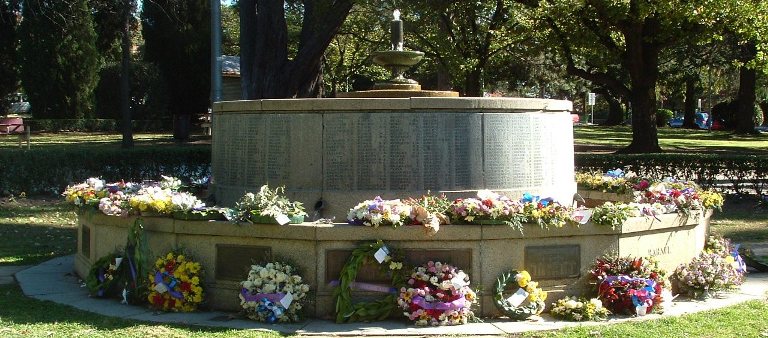
ARMIDALE WAR MEMORIAL
Family Information
Eric was a single 19 year old Draftsman from Erskine Street, Armidale upon enlistment. His parents Henry and Matilda Schmutter were married in 1891 at Patterson, N.S.W. Marriage Cert:6575/1891 and had 5 children. Clifford V K Schmutter born 1892 at Armidale, N.S.W. Birth Cert:4101/1892. Claude H G Schmutter born 1894 at Armidale, N.S.W. Birth Cert:3836/1894. Eric George Schmutter born 1896 at Armidale, N.S.W. Birth Cert:28356/1896 and died in 1977 in N.S.W. Death Cert:25977/1977. Roy L Schmutter born 1898 at Armidale, N.S.W. Birth Cert:28292/1898. Sydney L Schmutter born 1906 at Armidale, N.S.W. Birth Cert:862/1906.
Eric lived at 2/71 West Street, Balgowlah, N.S.W (Last Known Address) Eric enlisted during World War 2, service number: NX136965. Served as a Captain with the 2 GARRISON BATTALION.
Military Records
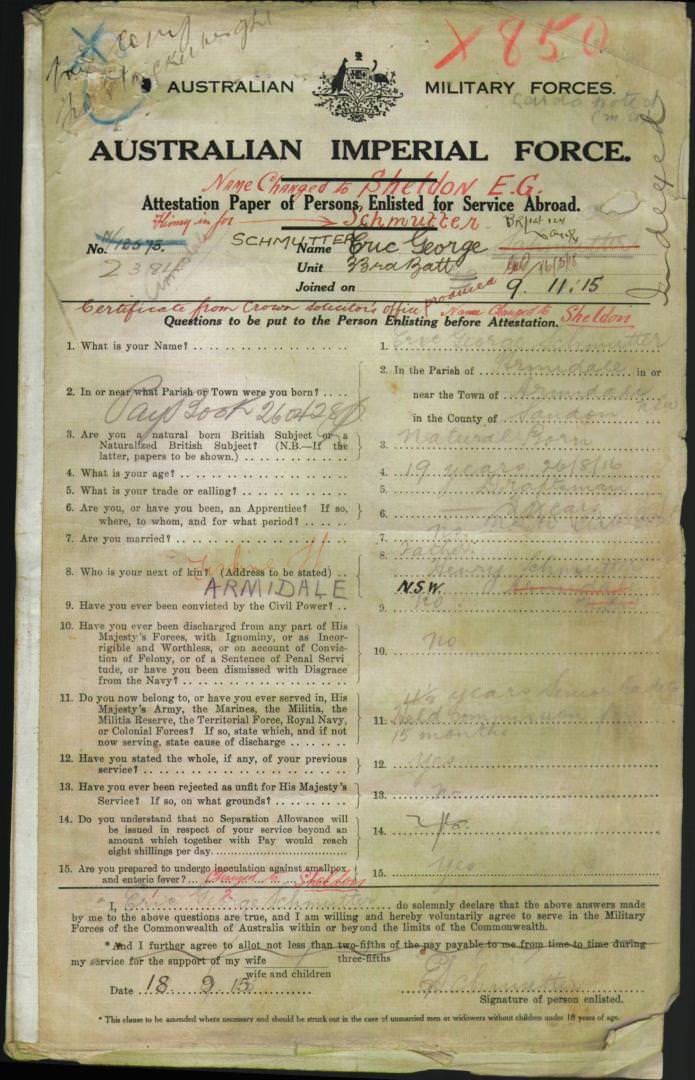
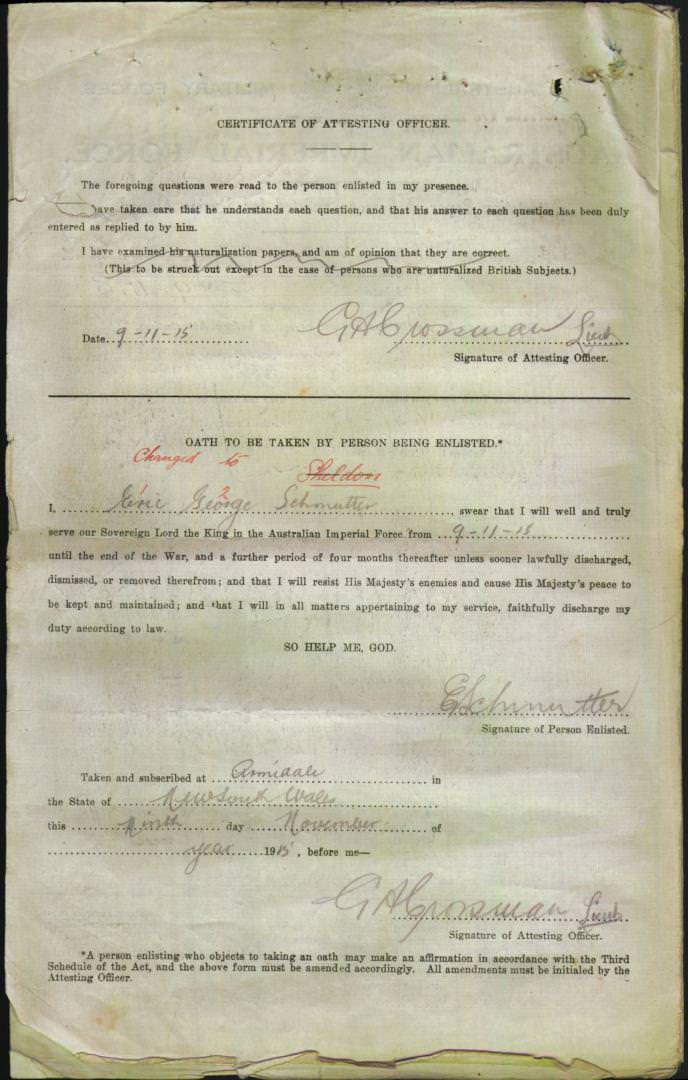

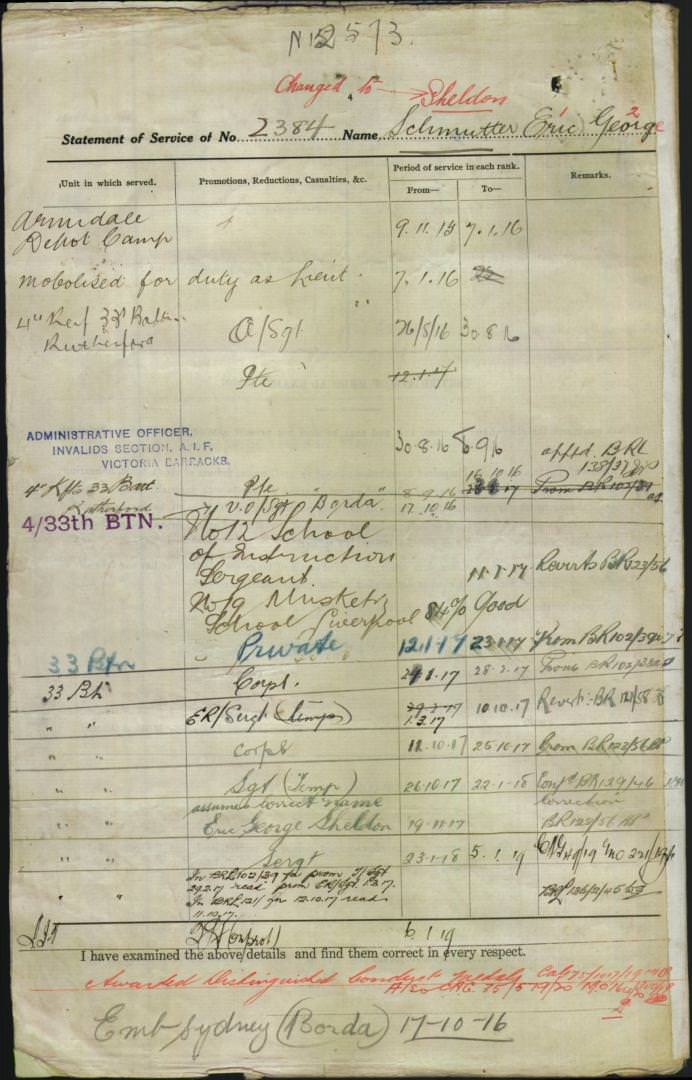

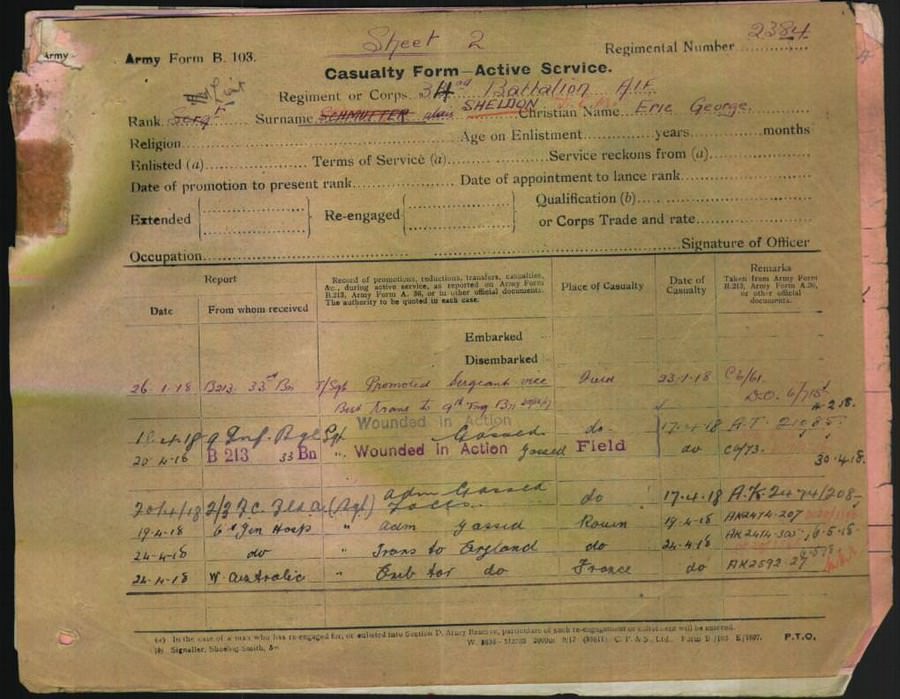
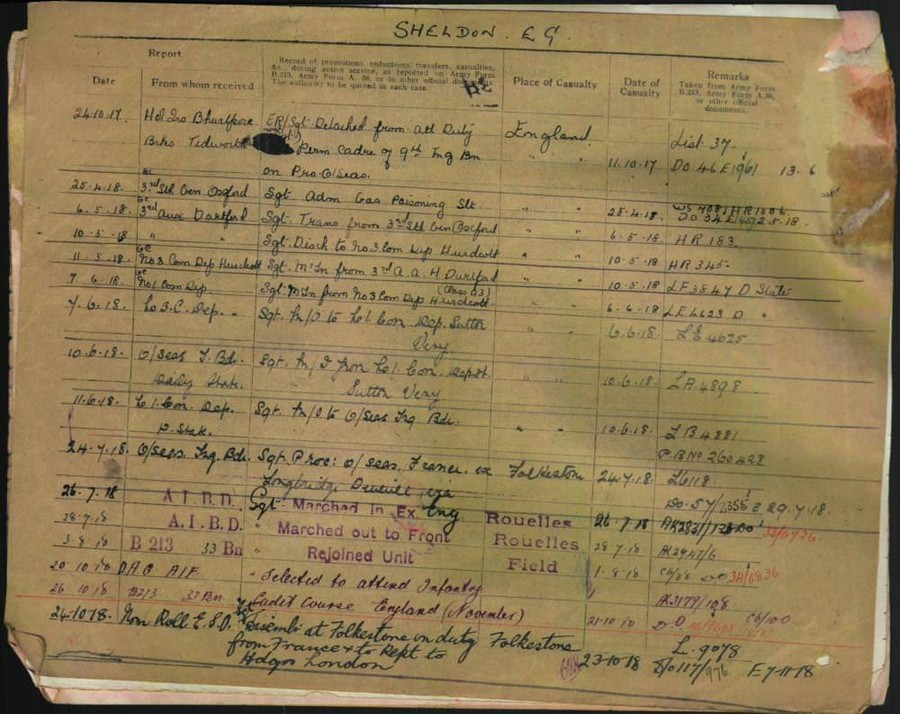
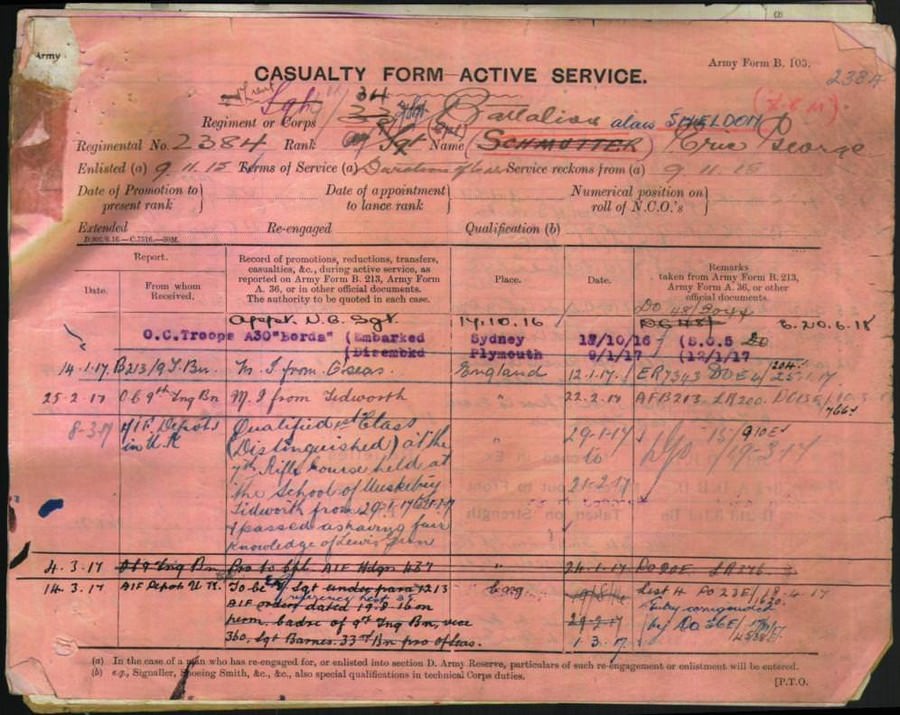
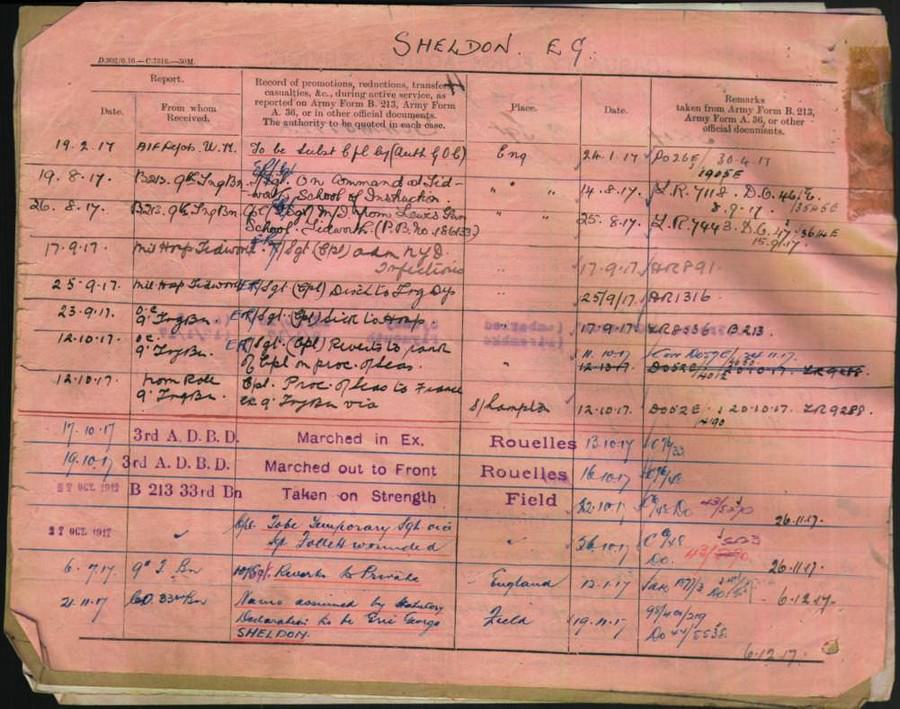
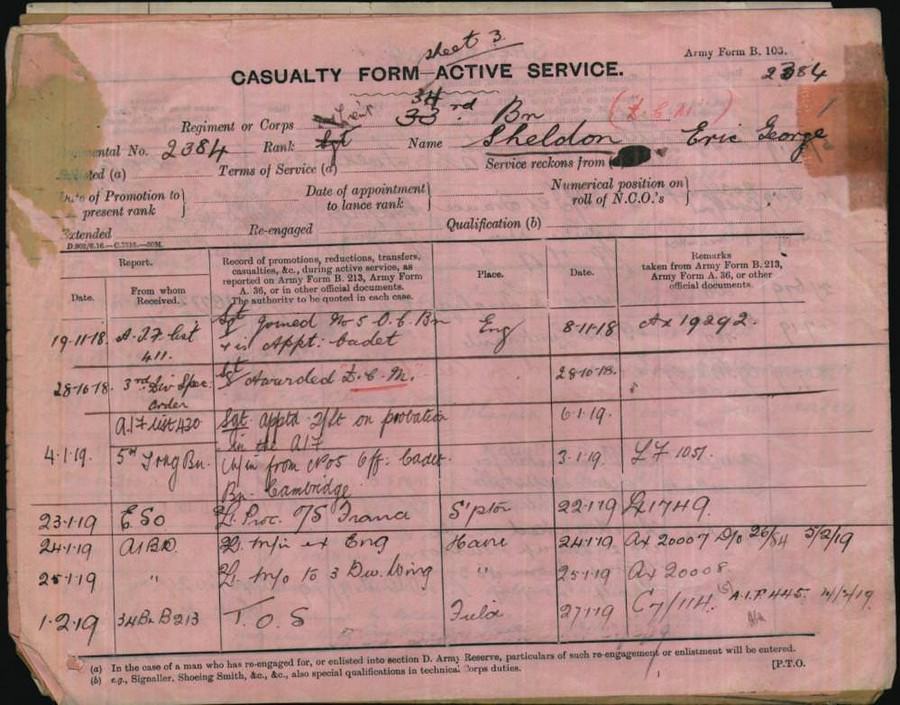
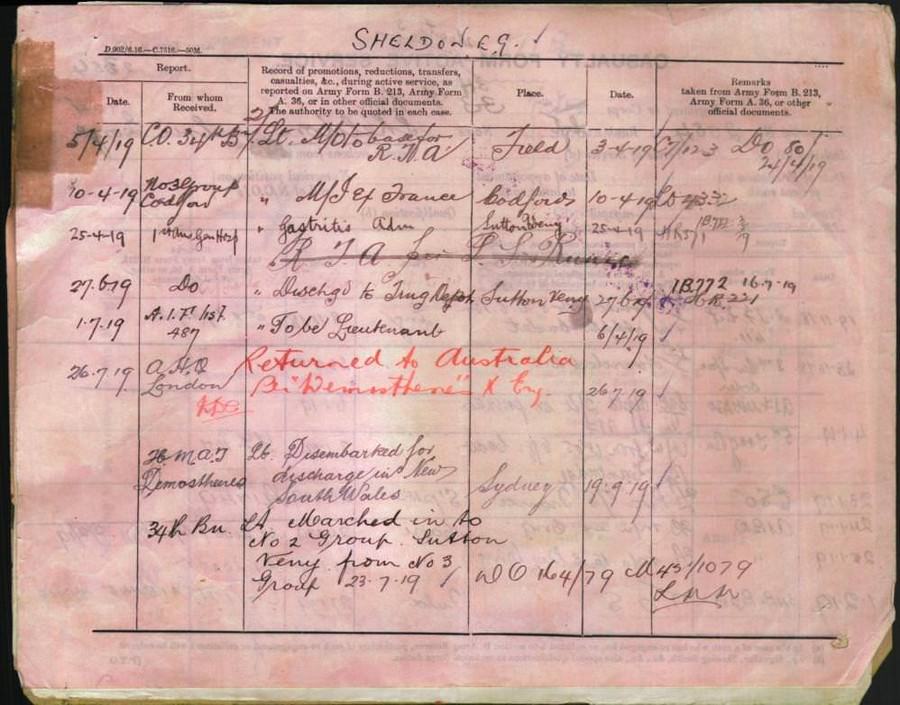
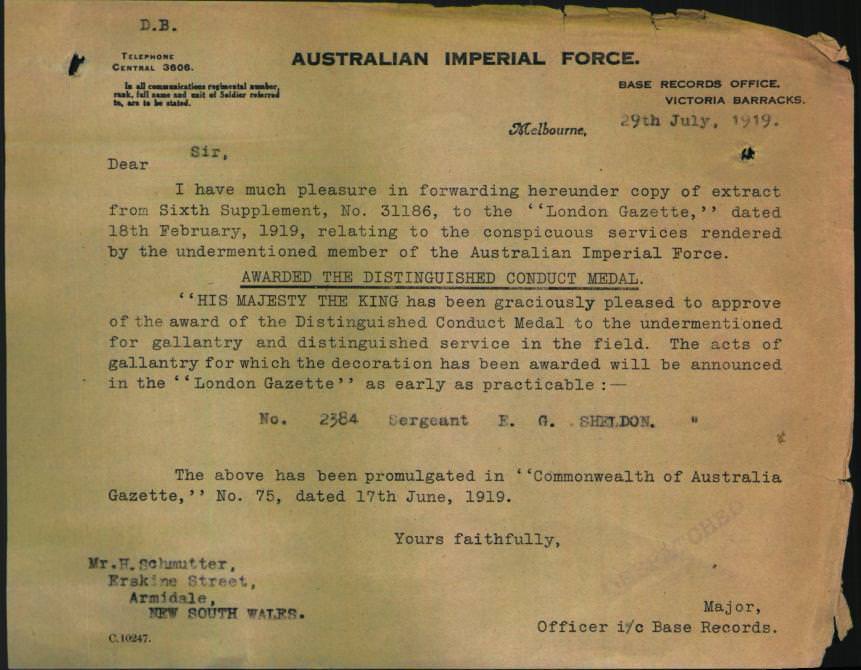
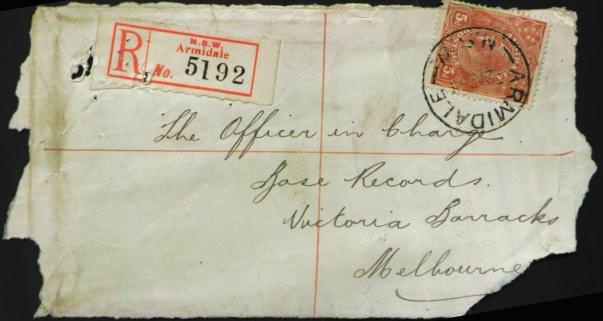
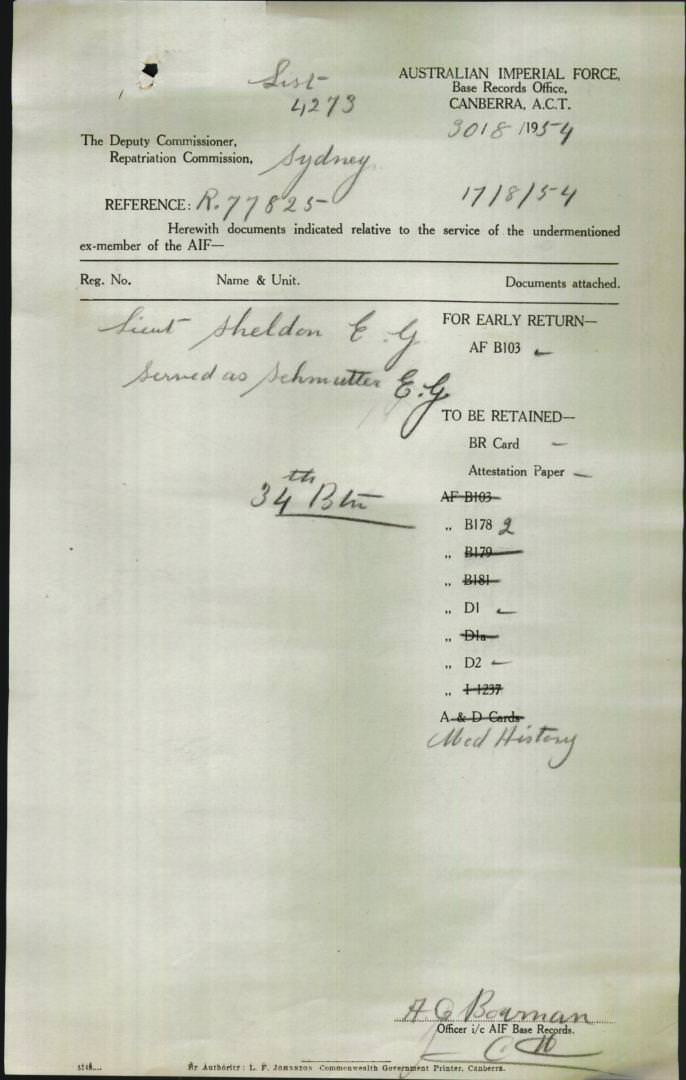
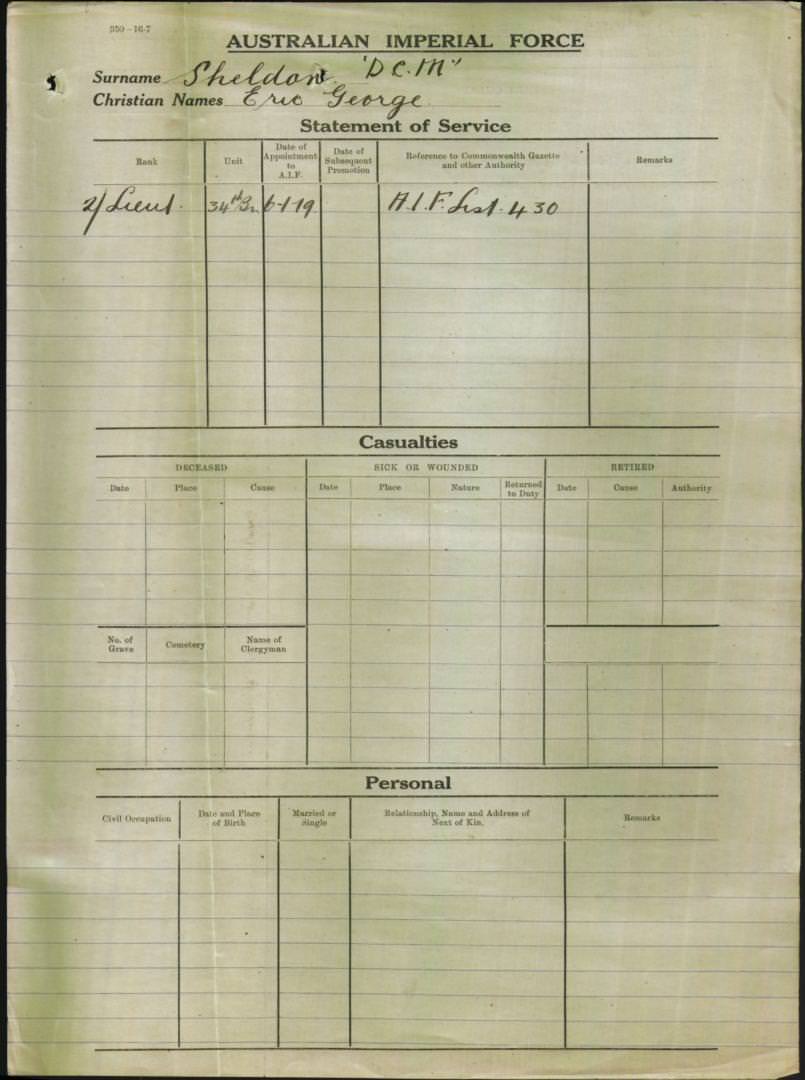

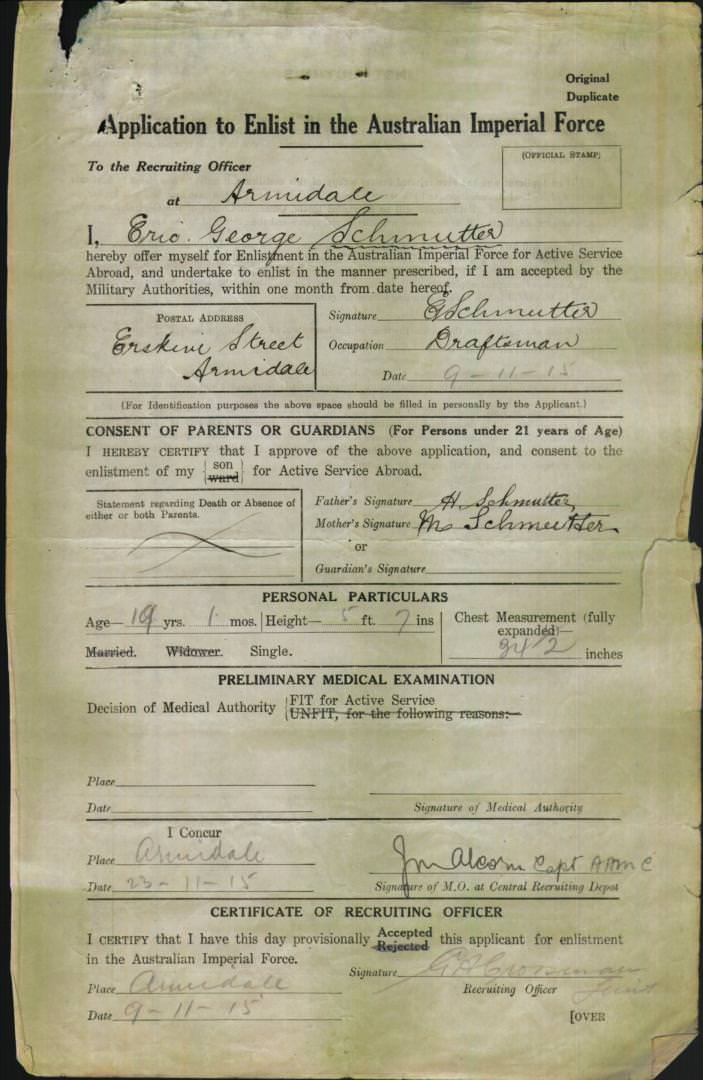
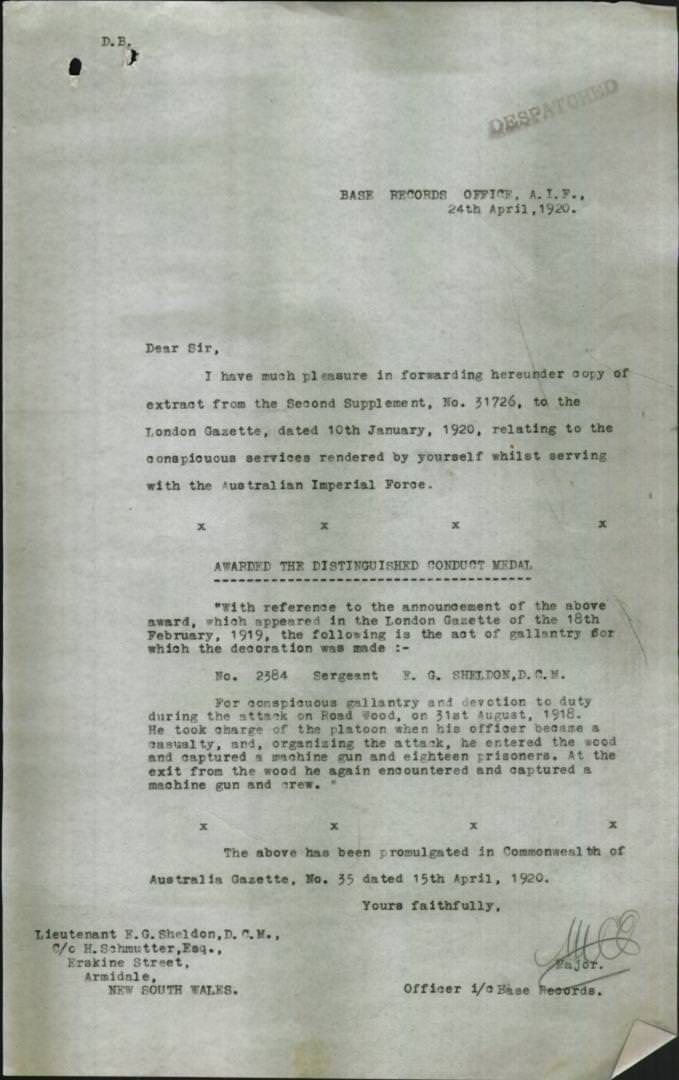
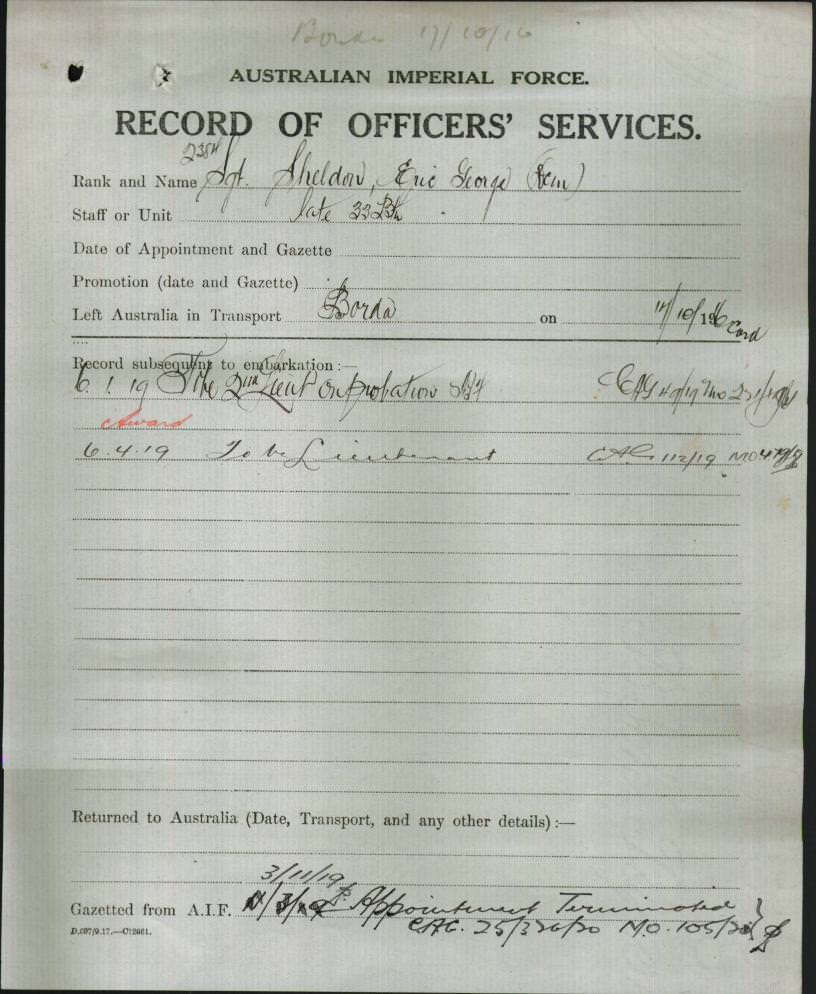
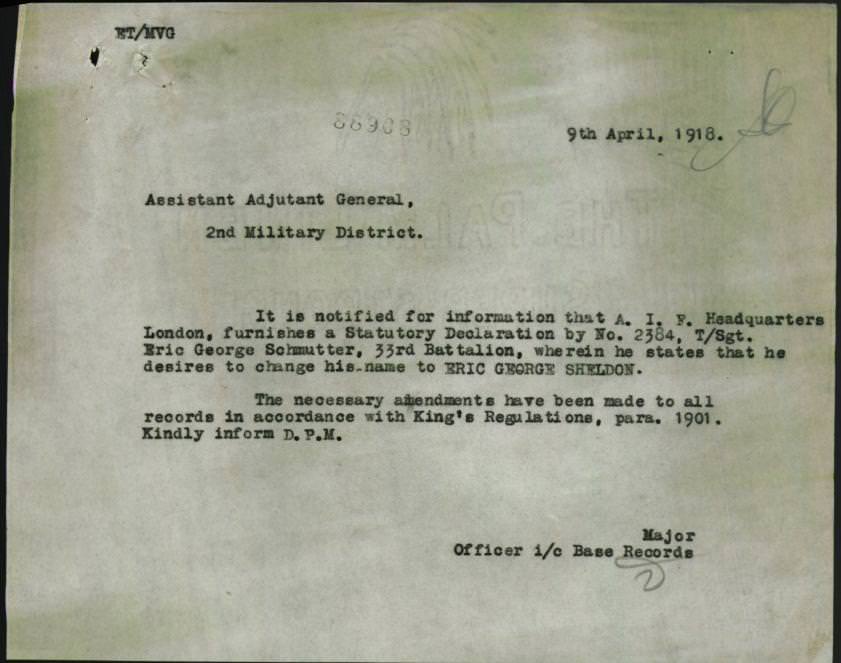
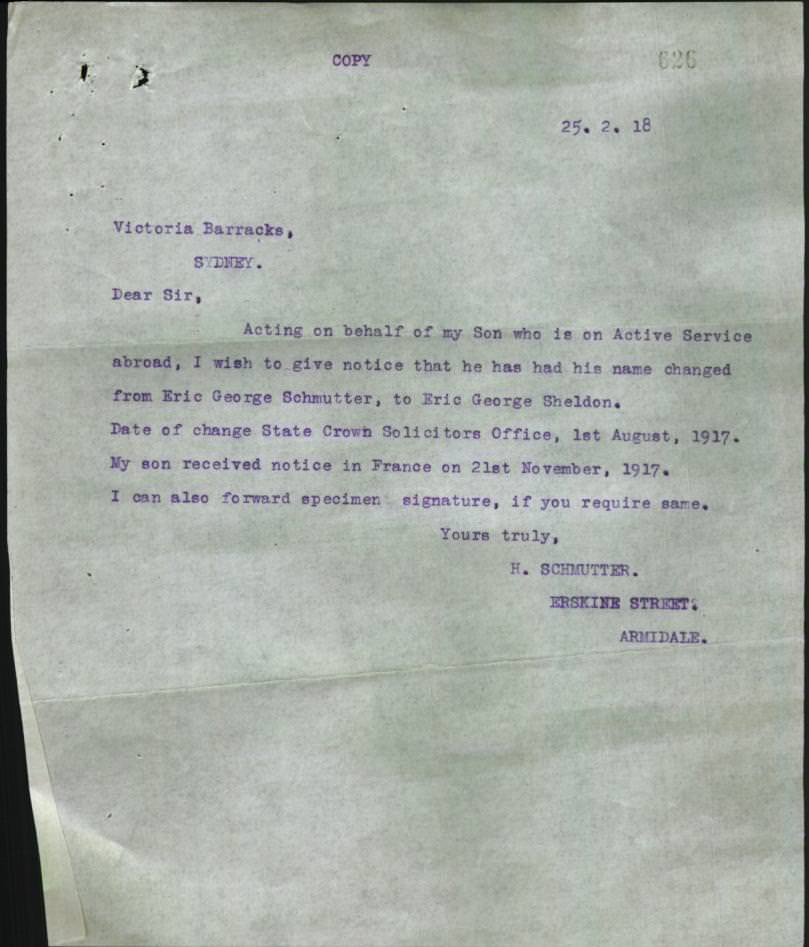

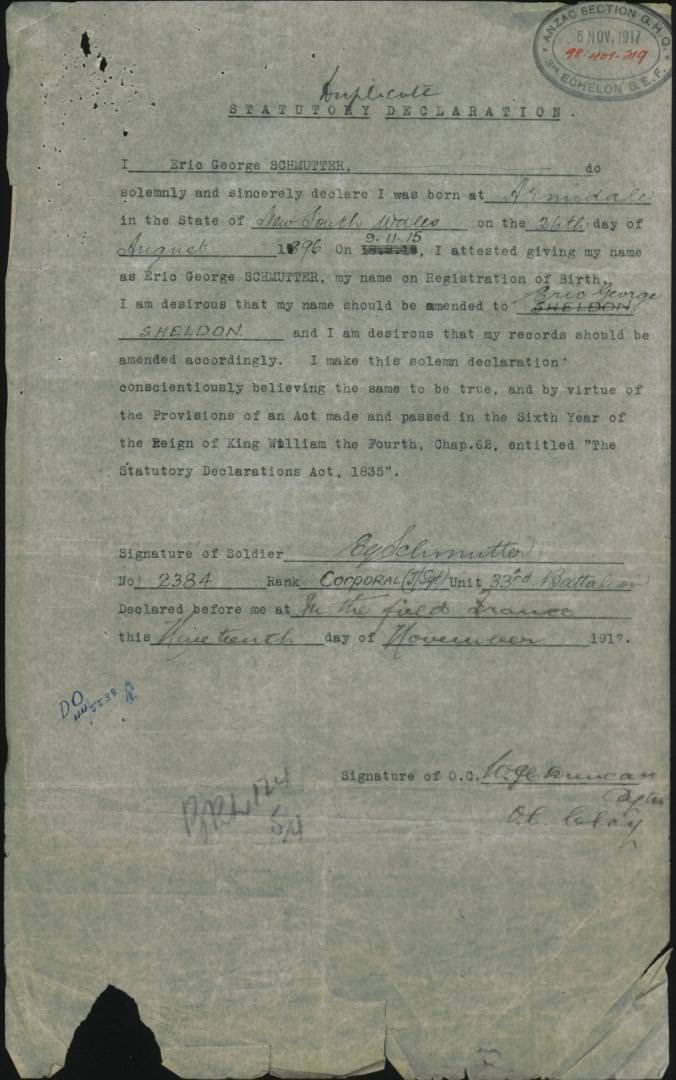
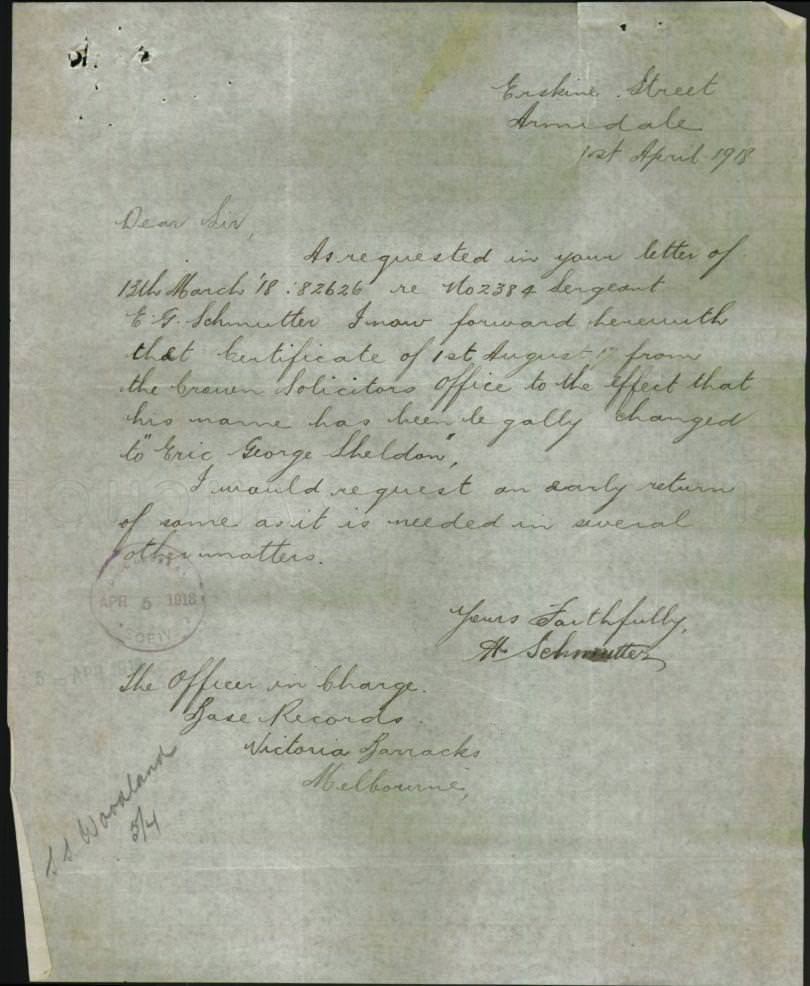
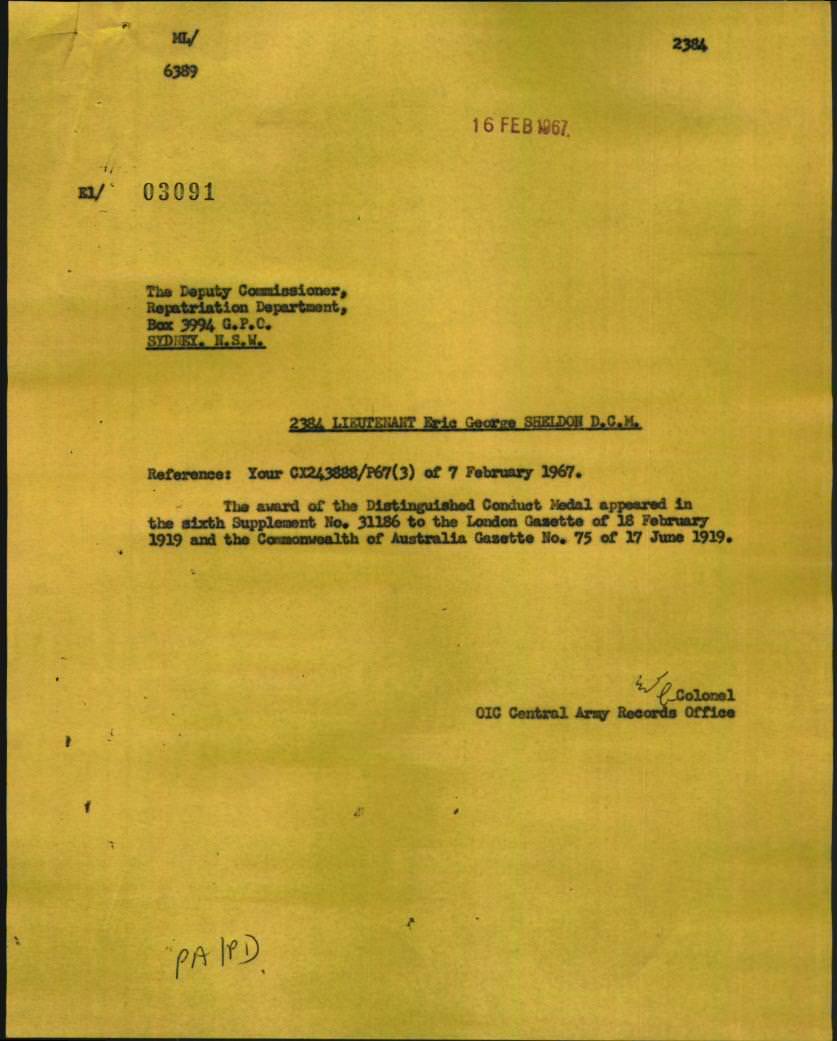
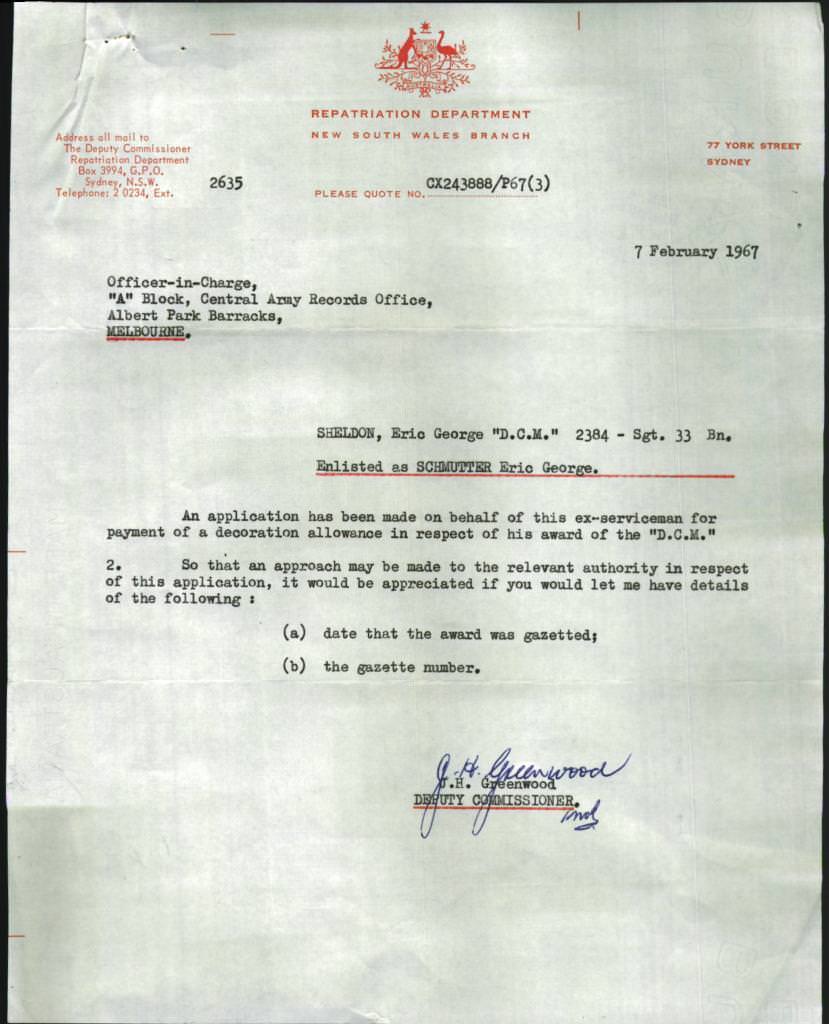

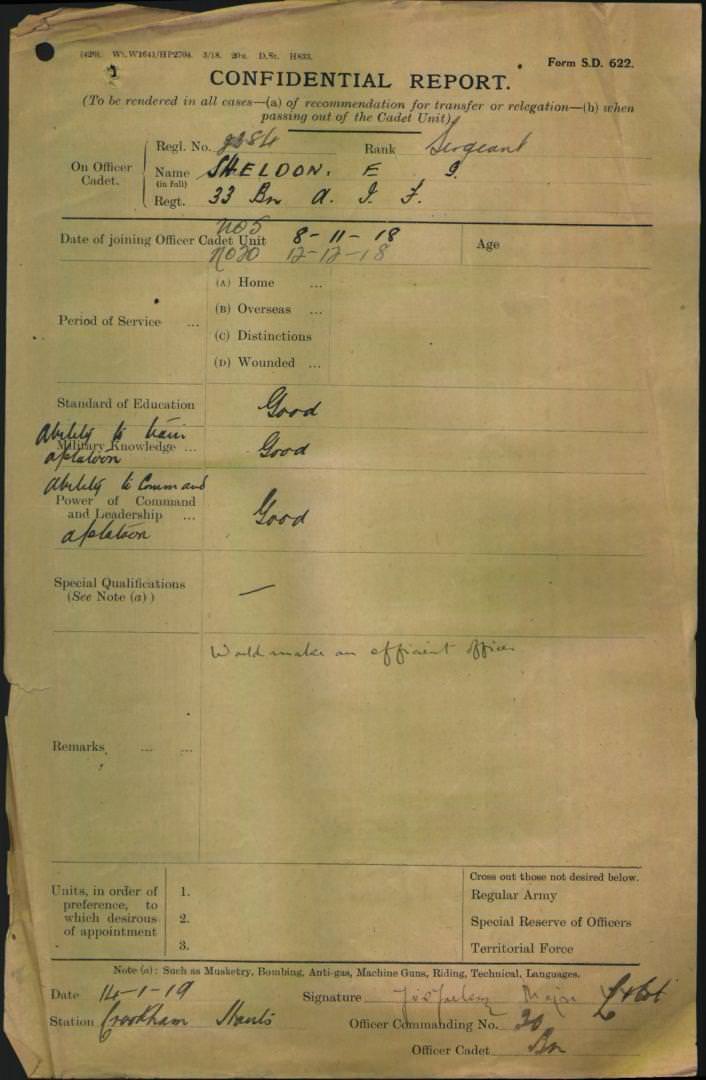

© Commonwealth of Australia (National Archives of Australia)
Under Construction; 11/08/2006-01/04/2022.
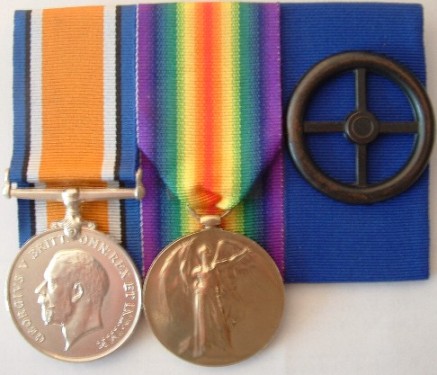
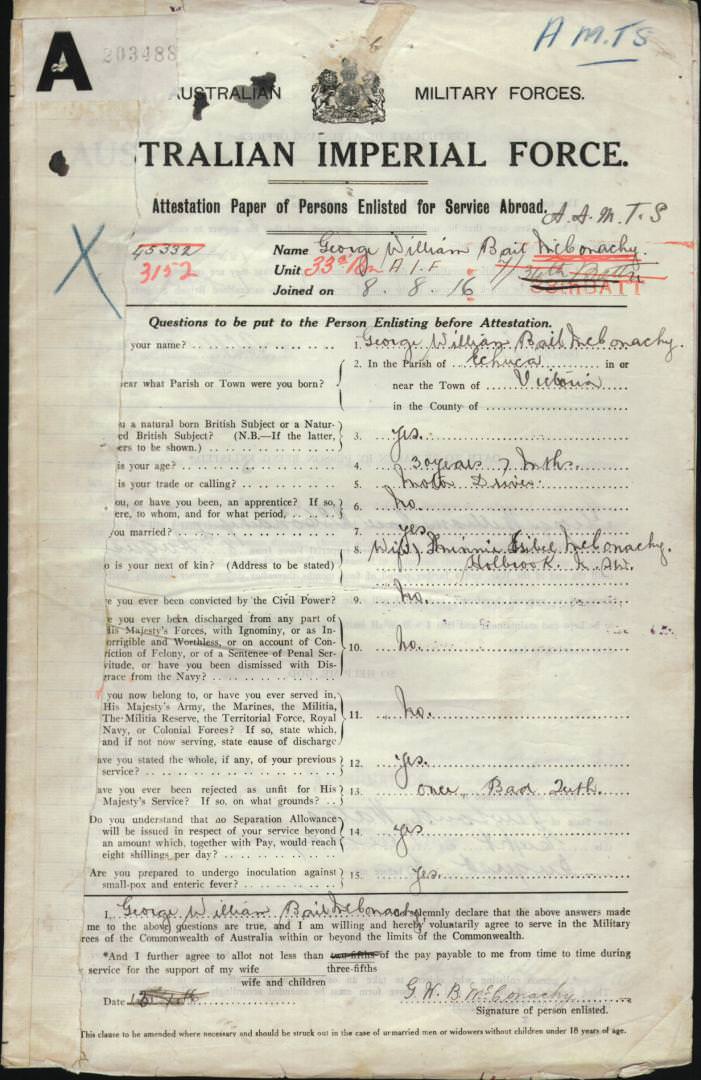
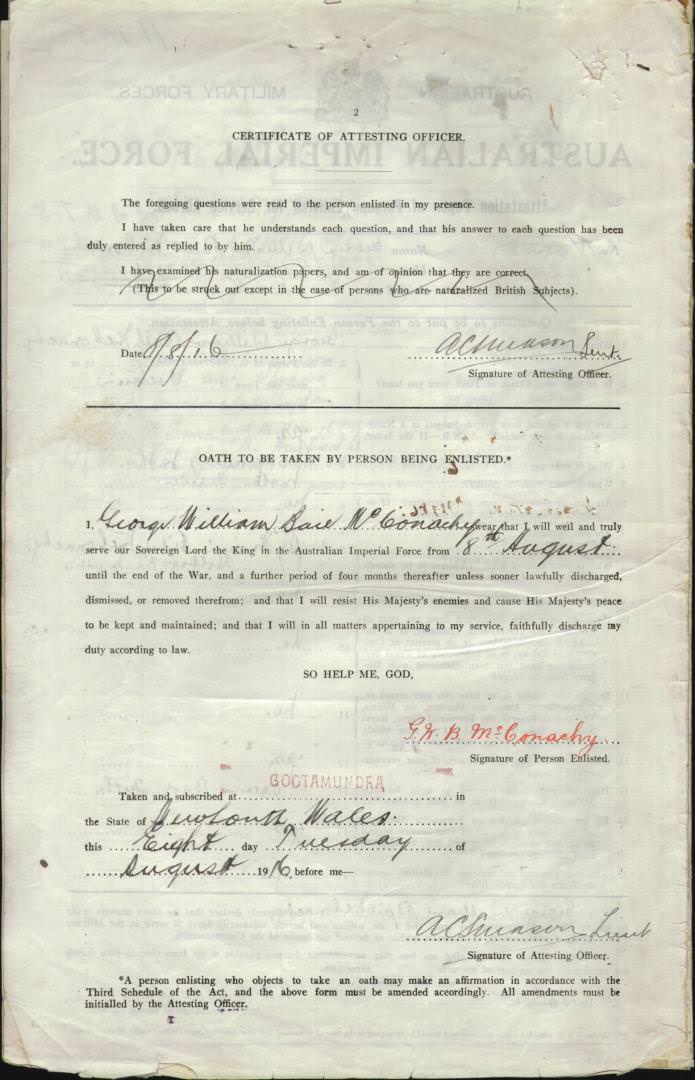
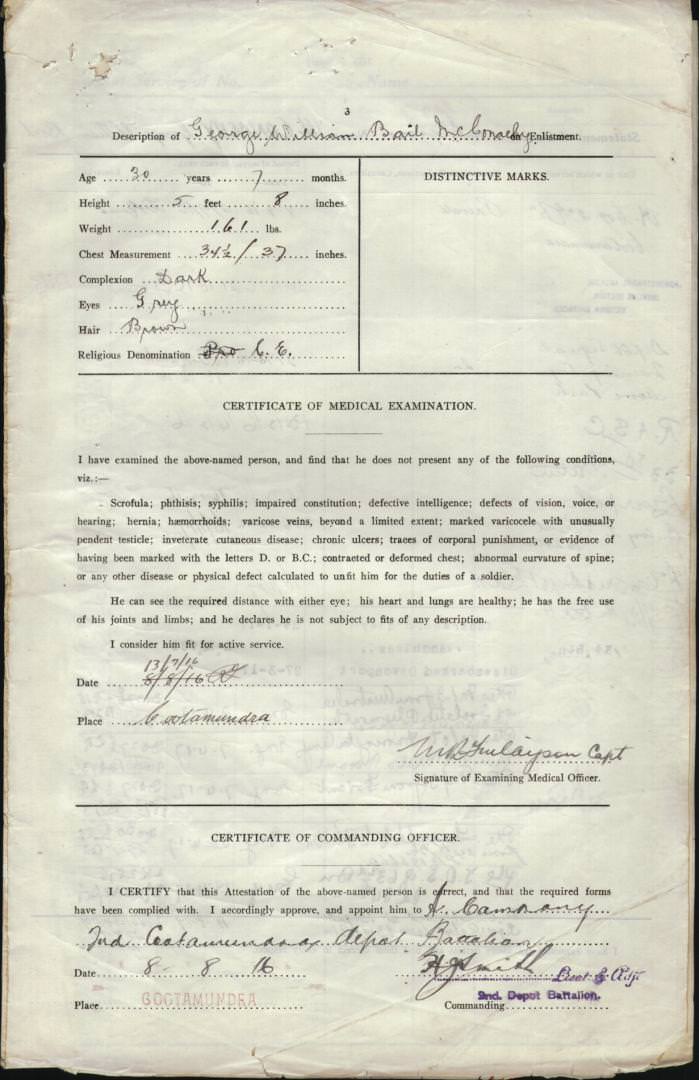
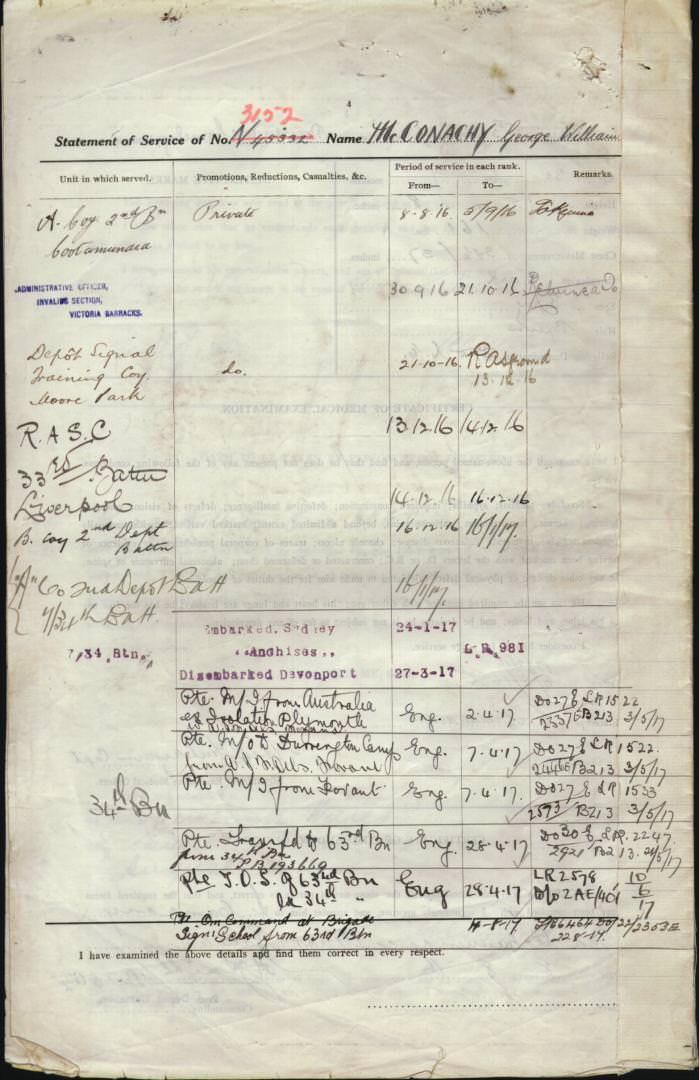

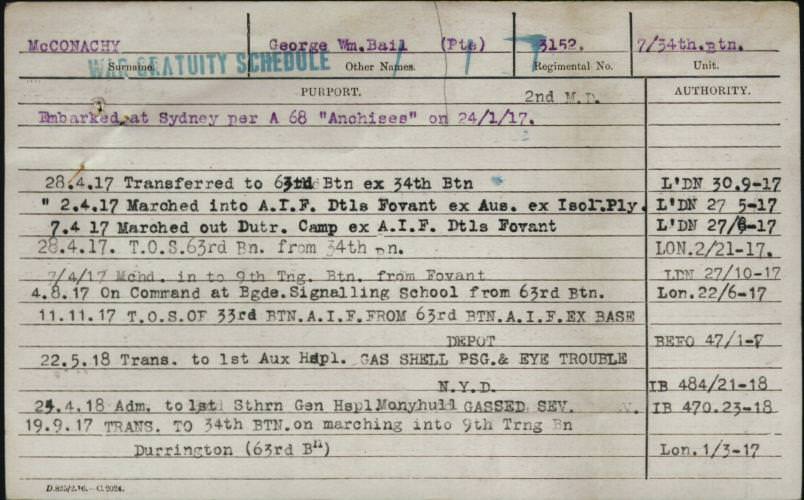
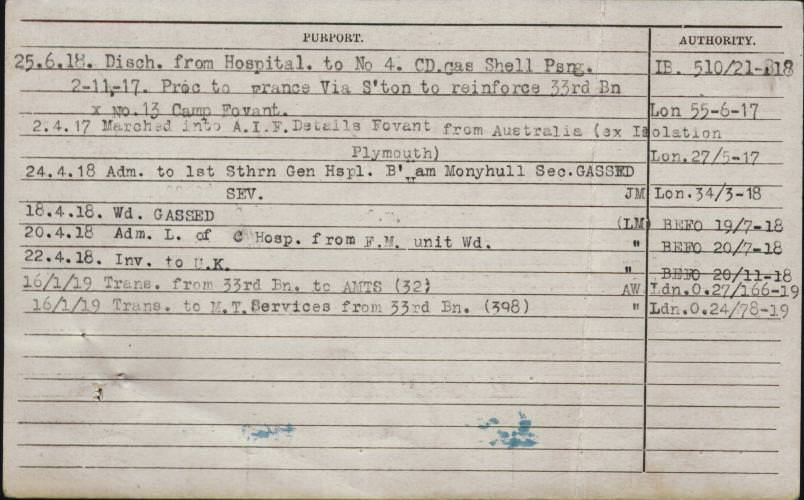
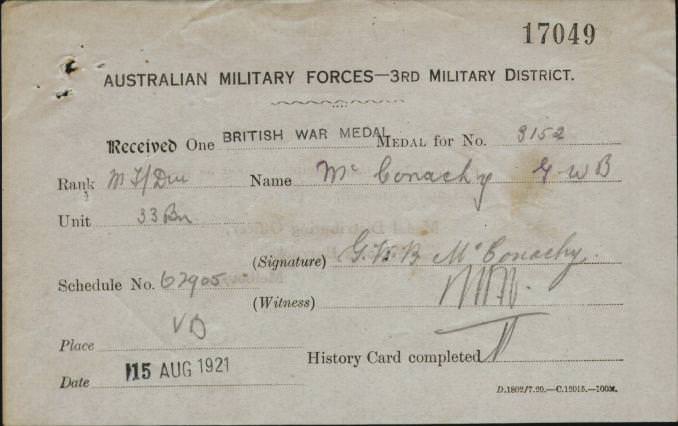


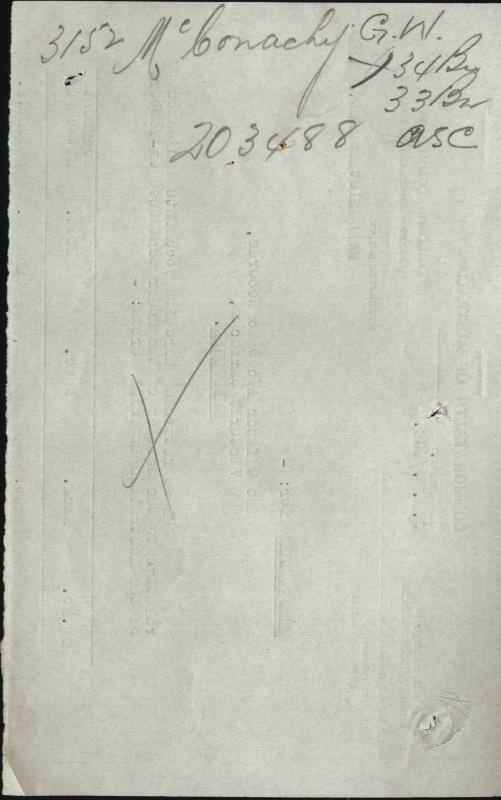
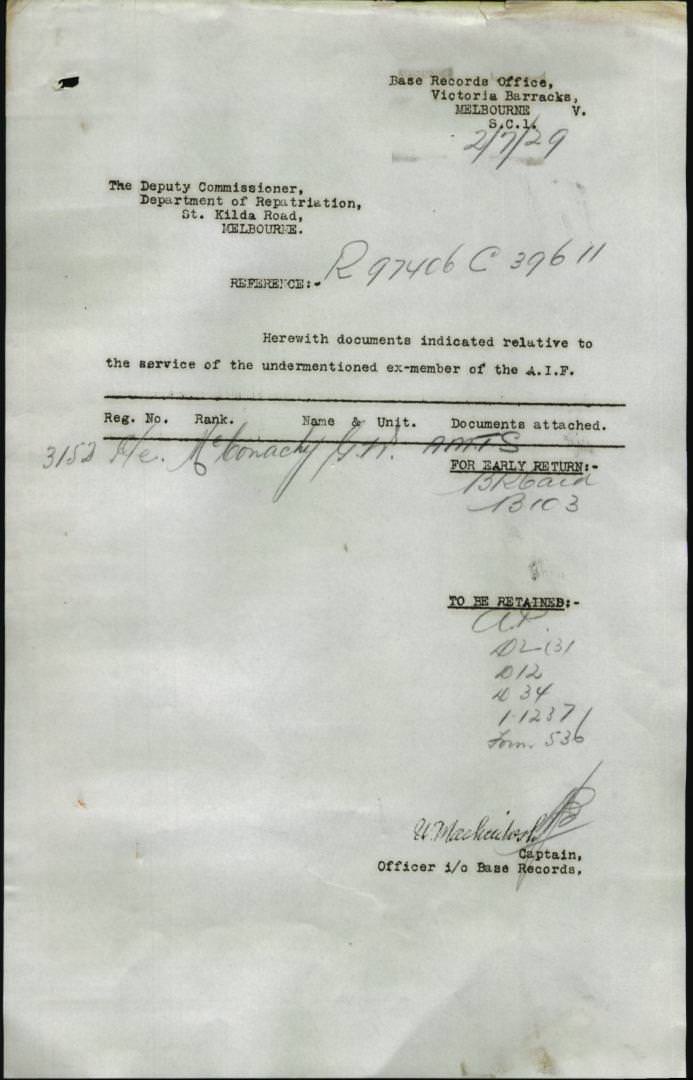
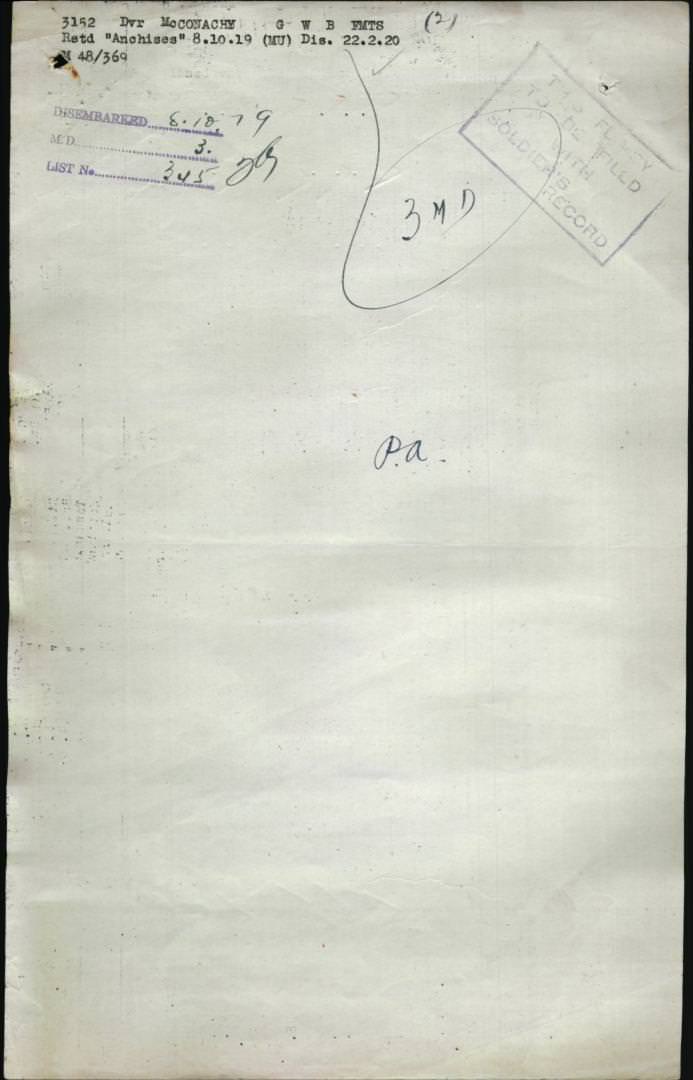
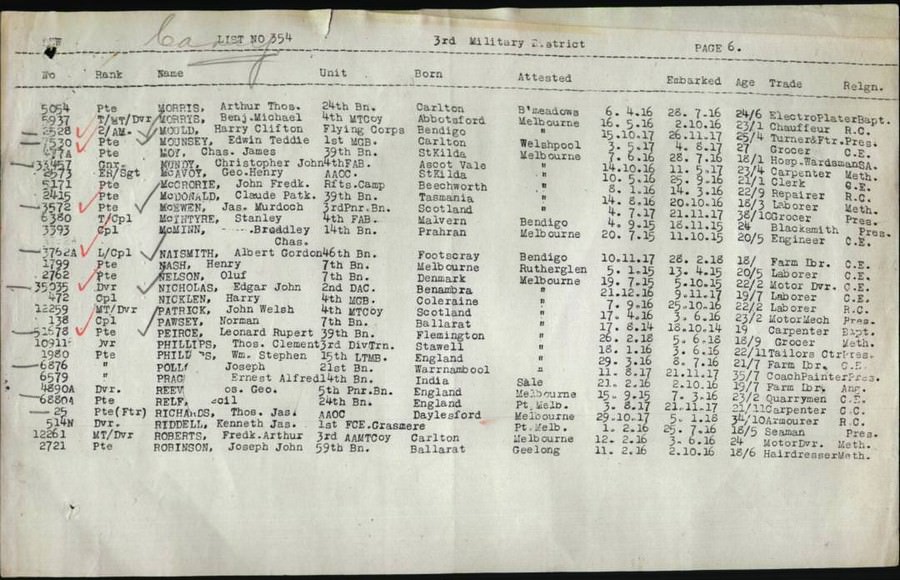
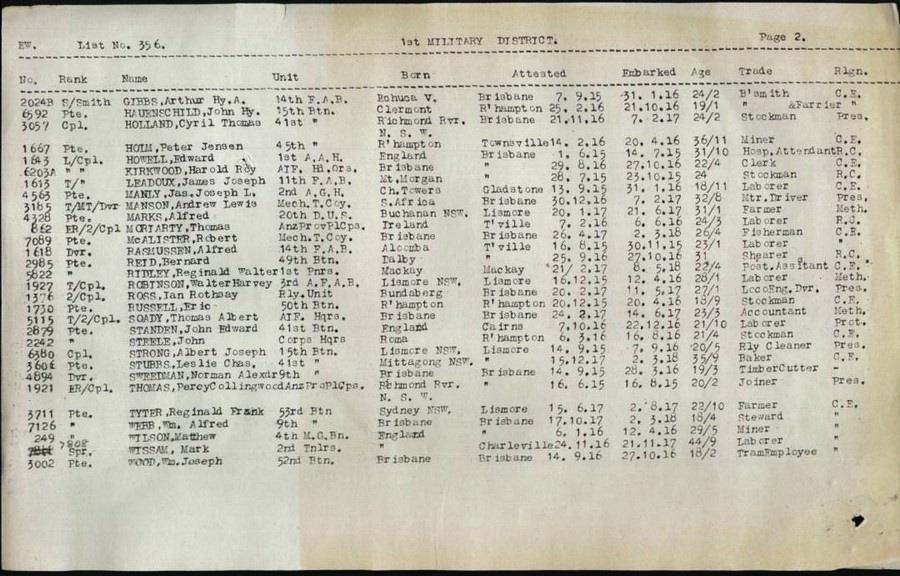

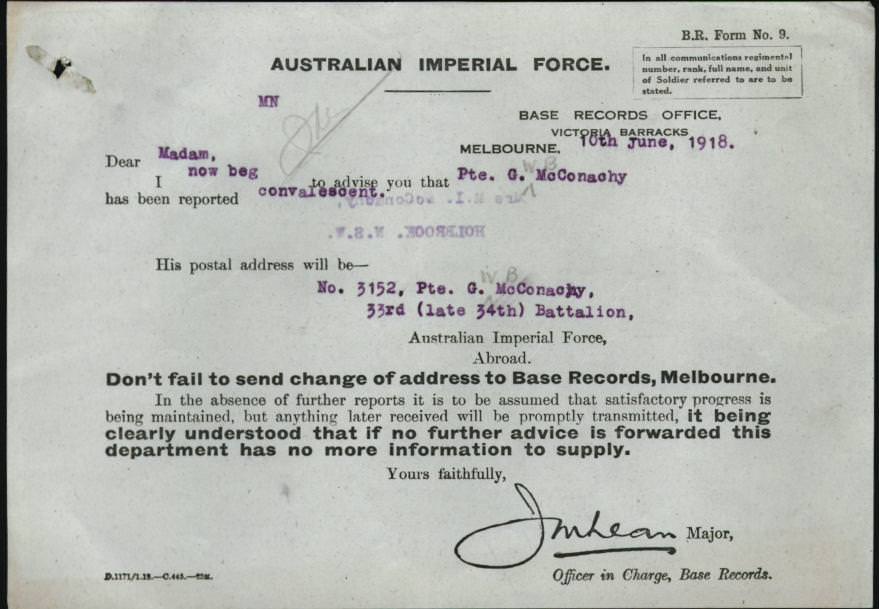
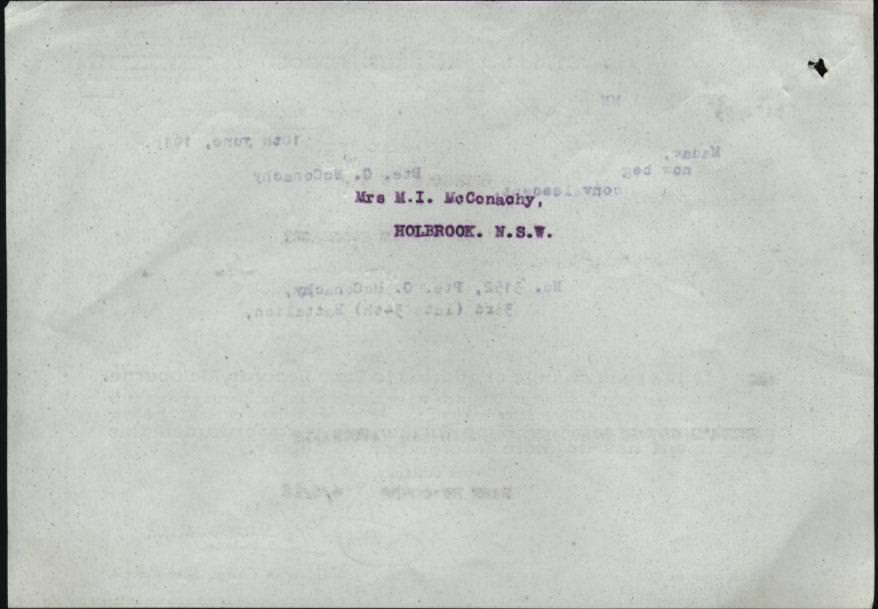
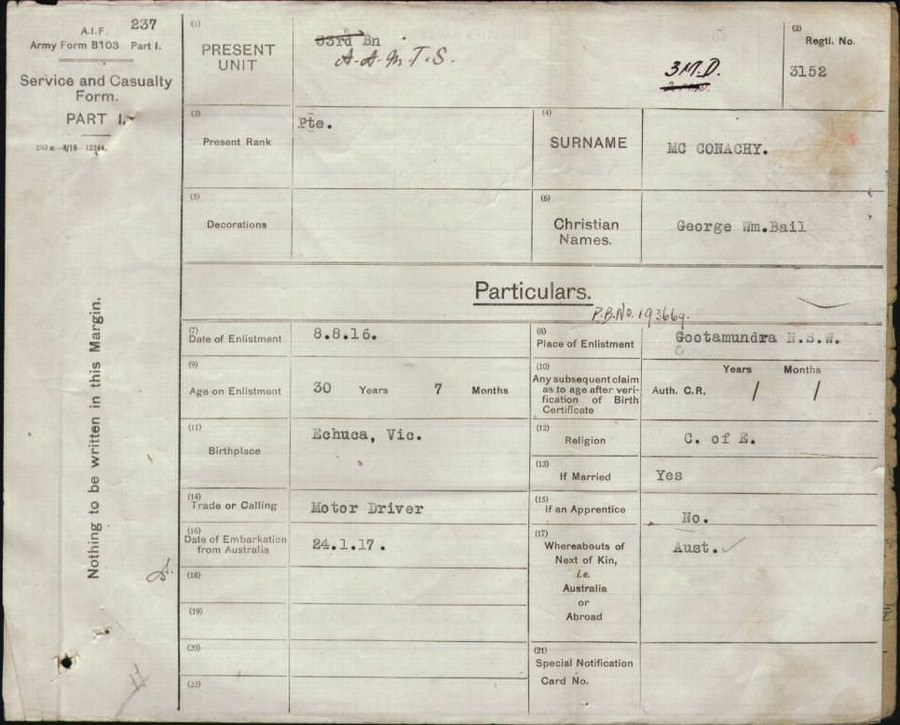
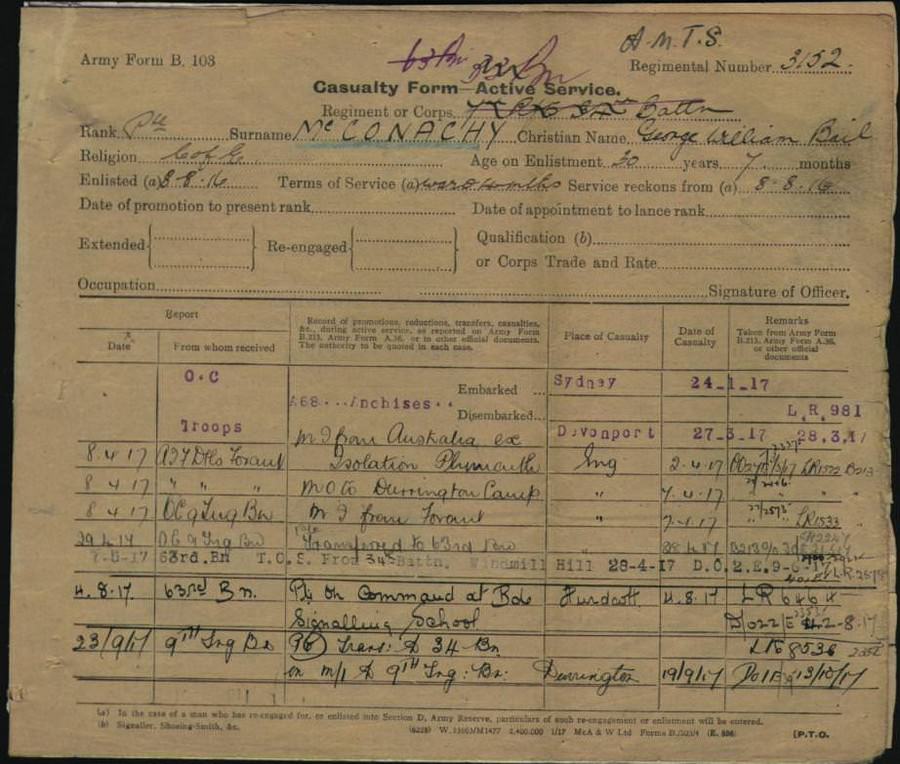
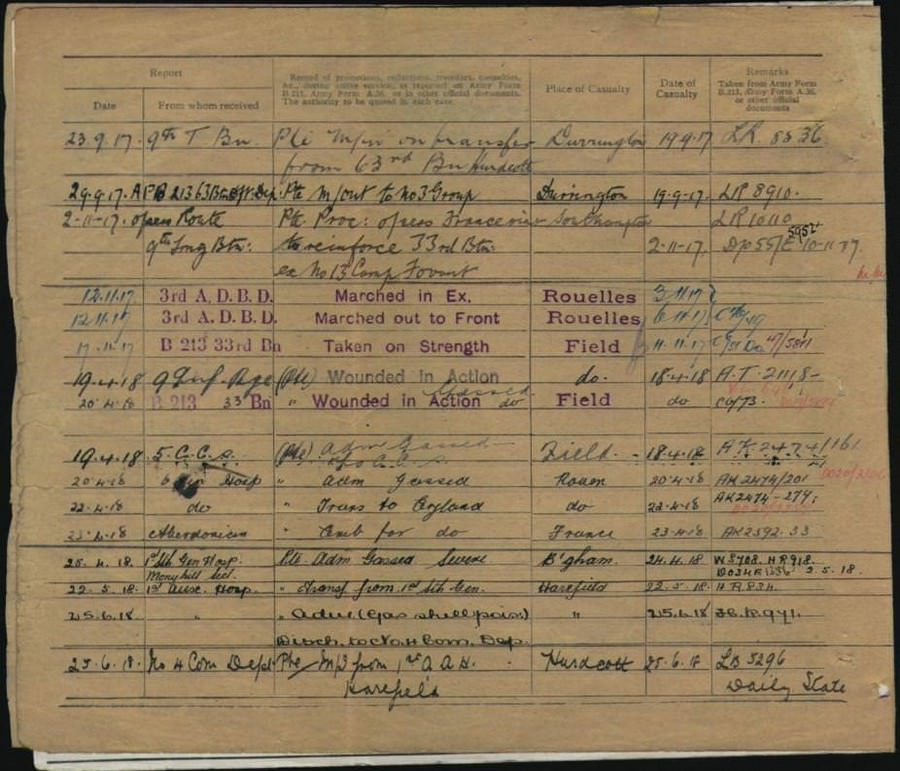
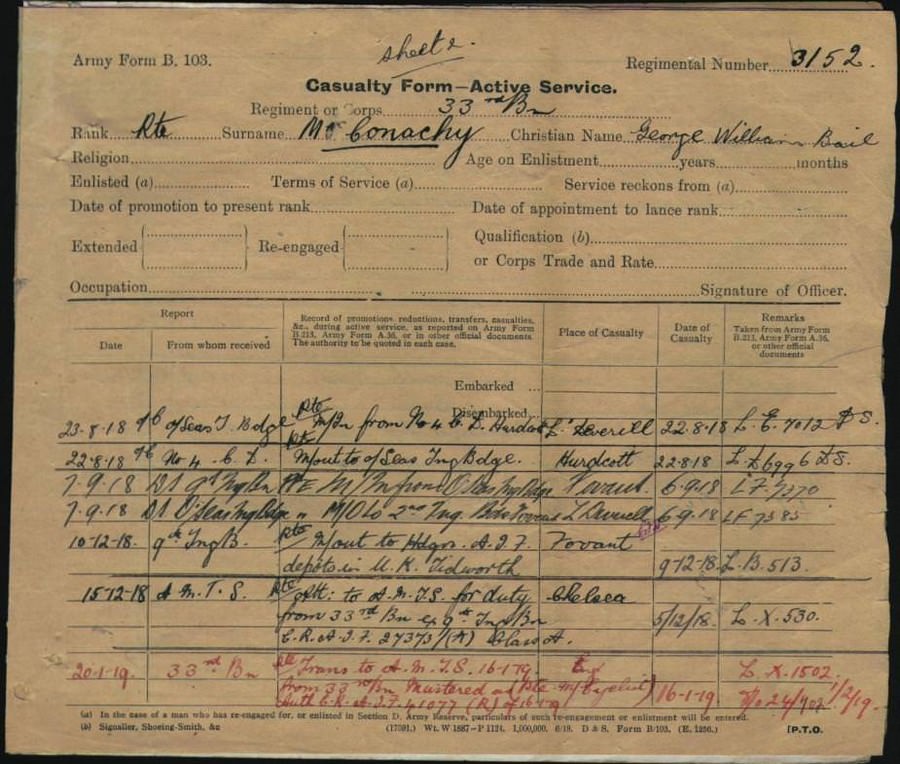
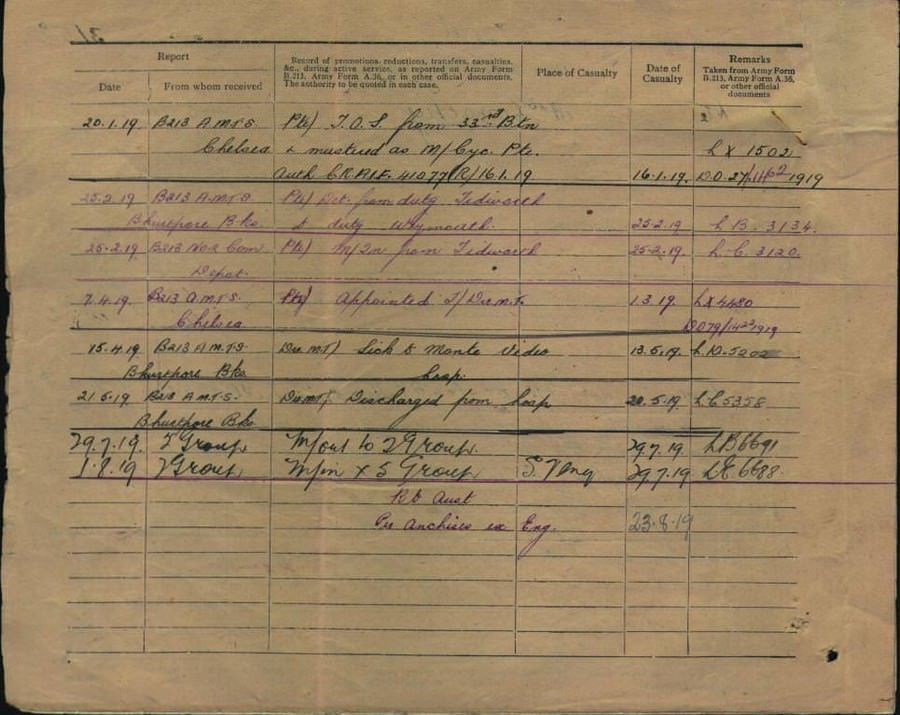
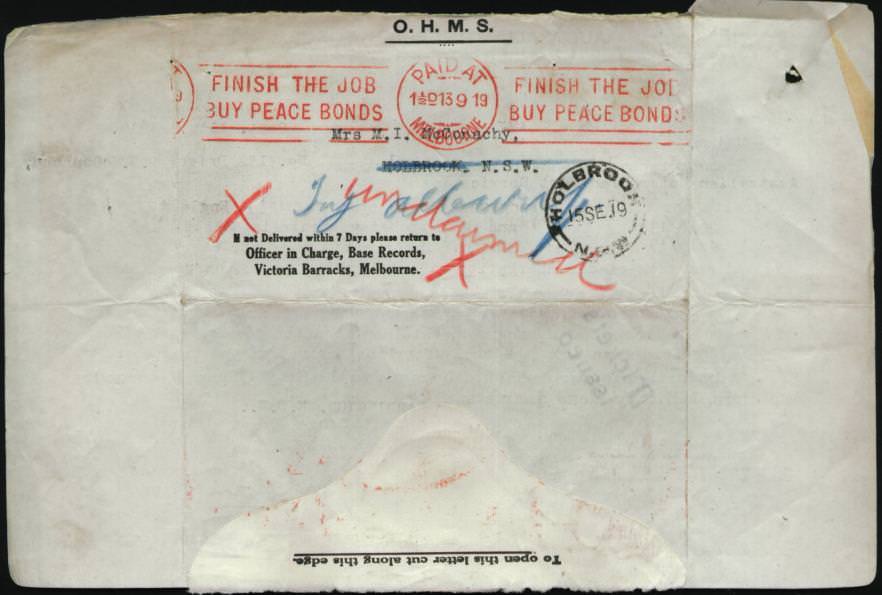
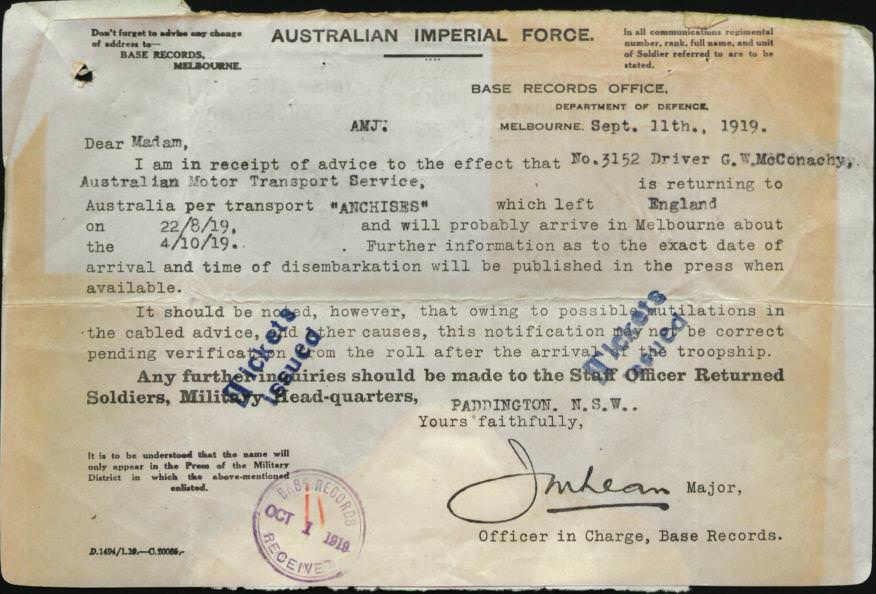

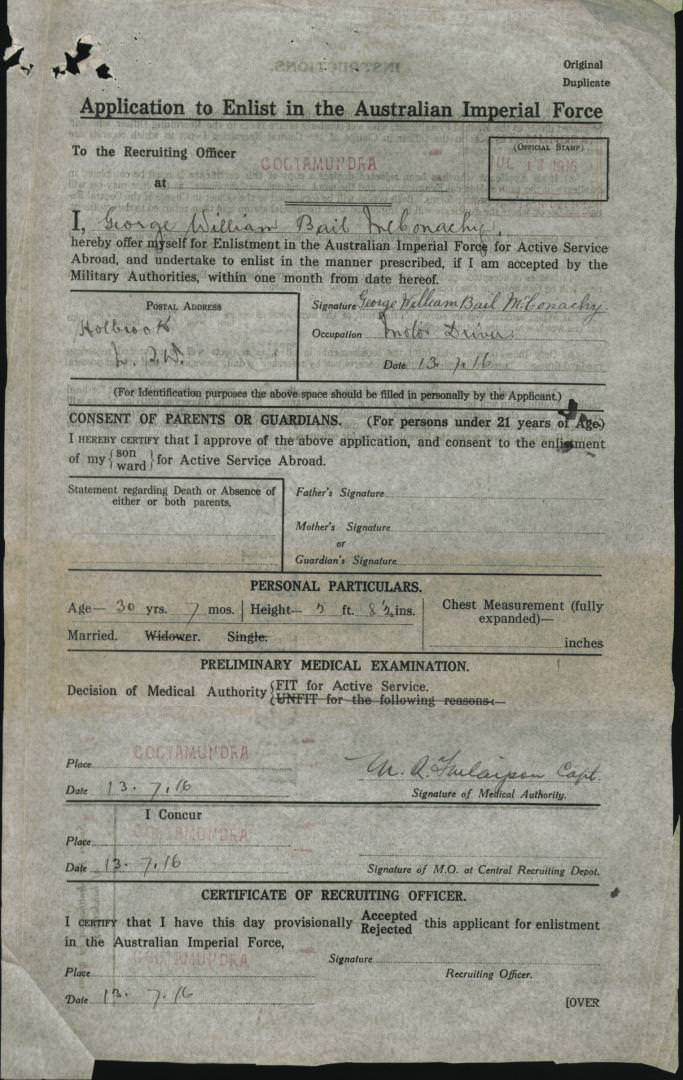
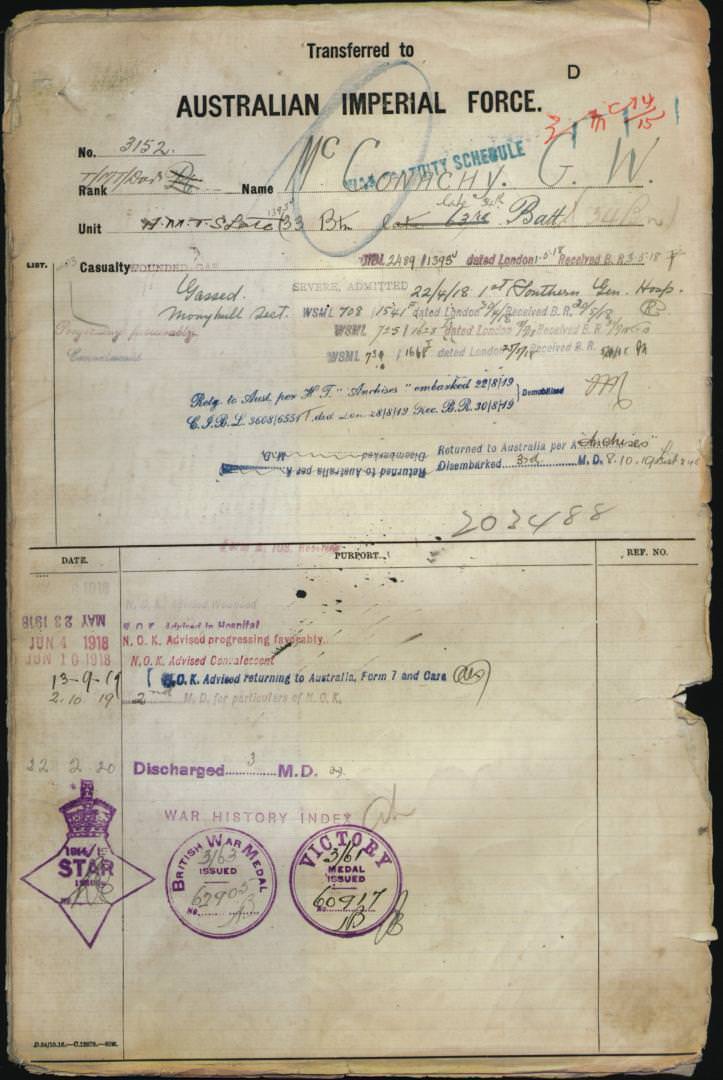

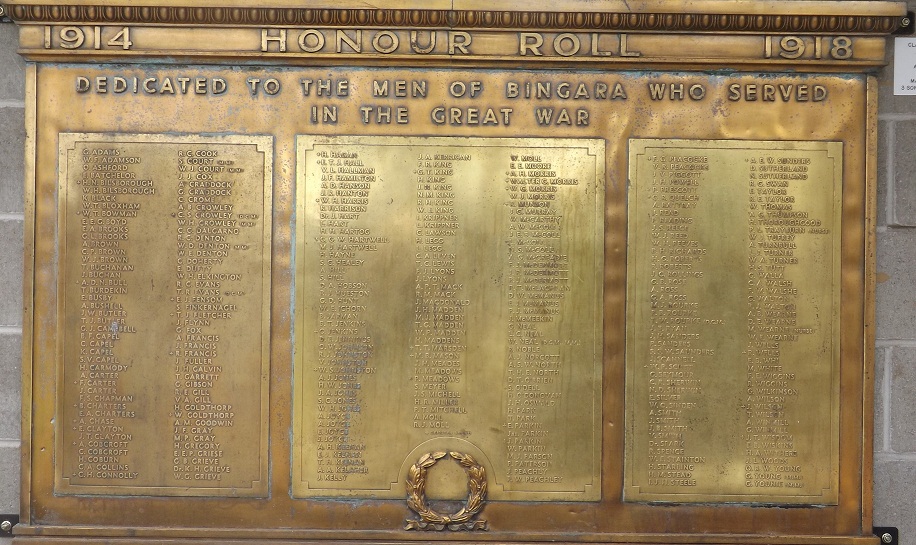
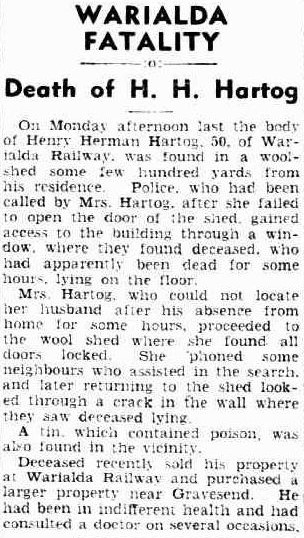


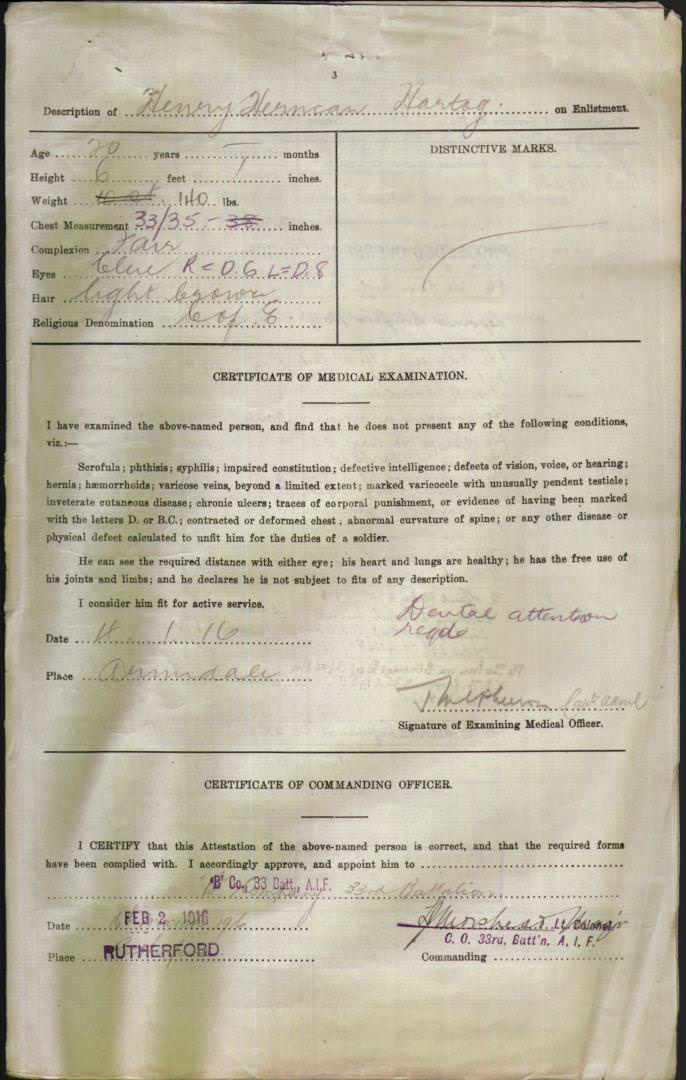
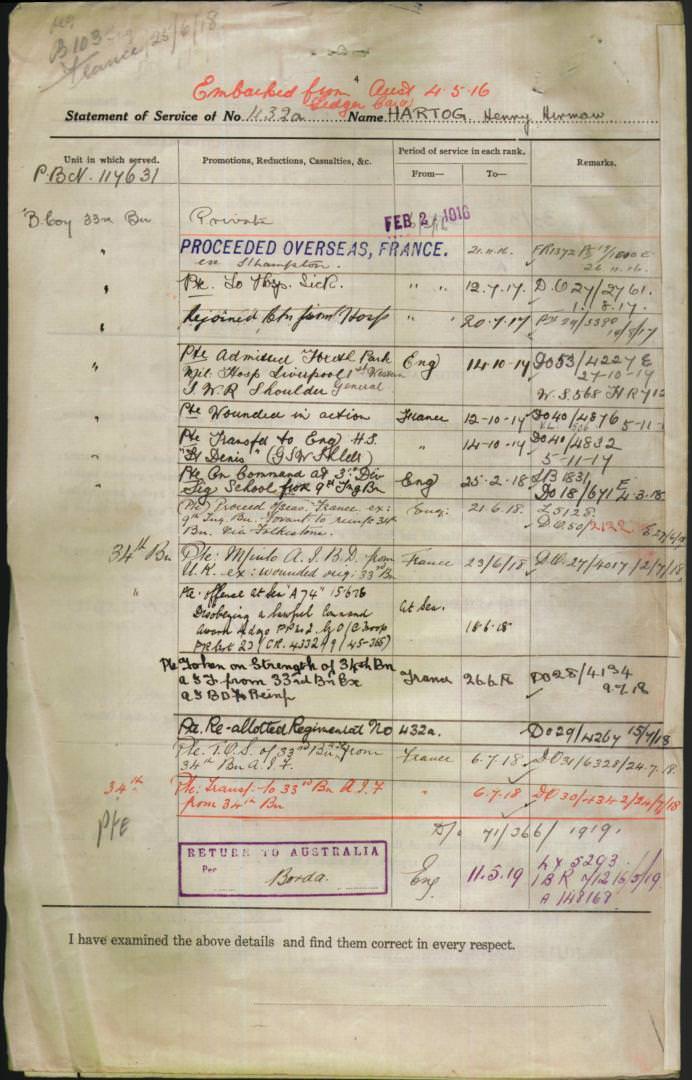
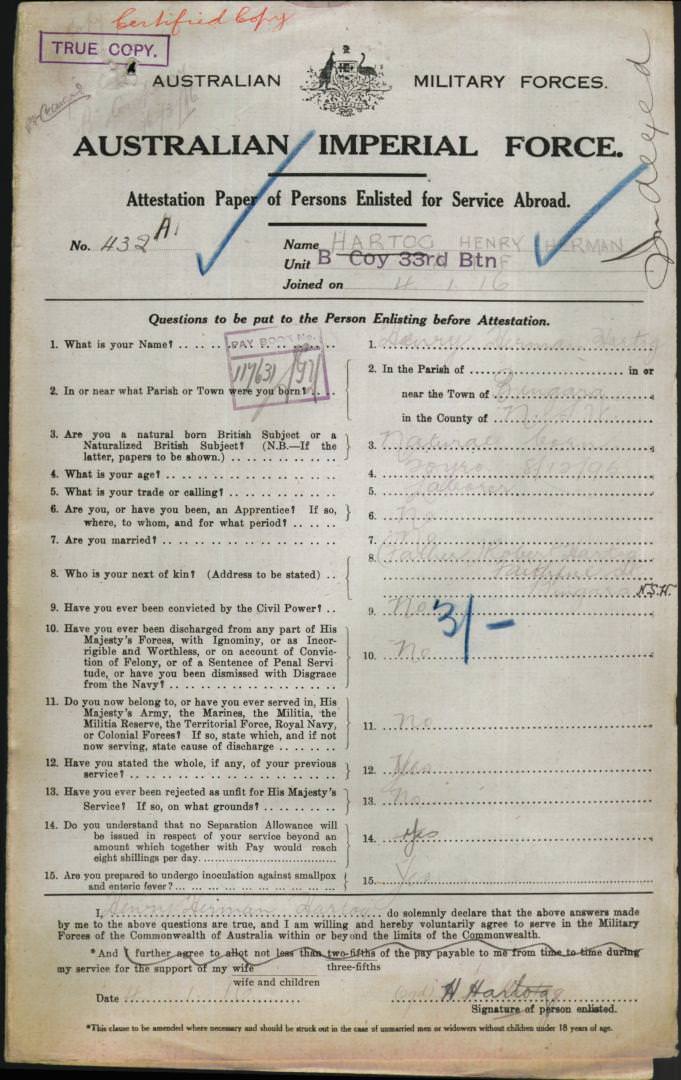
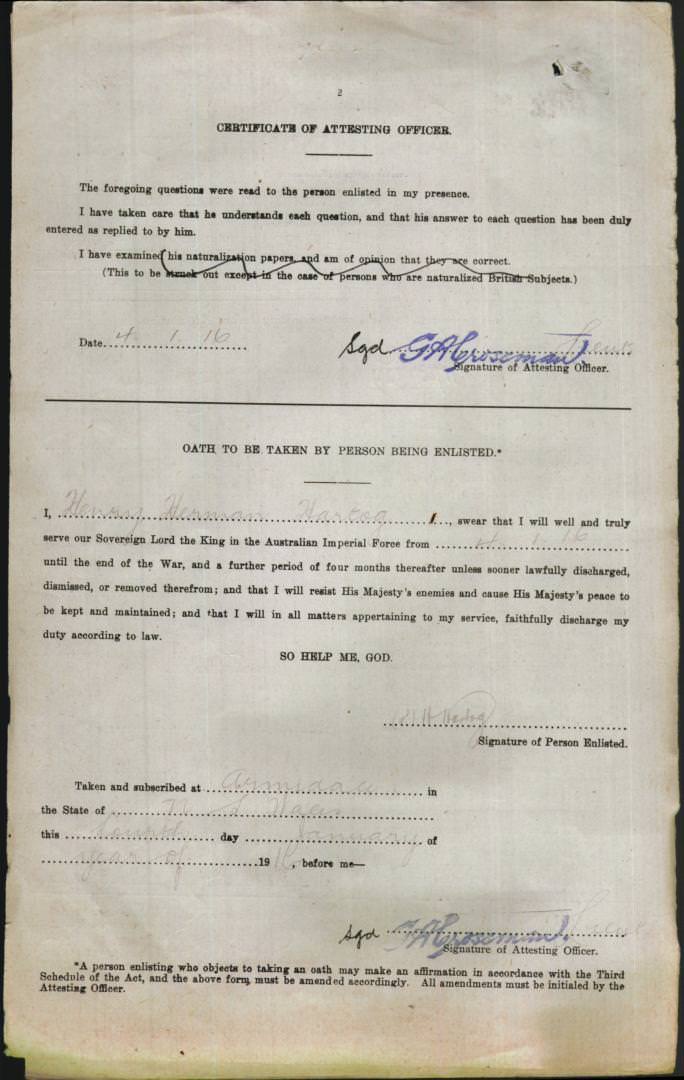
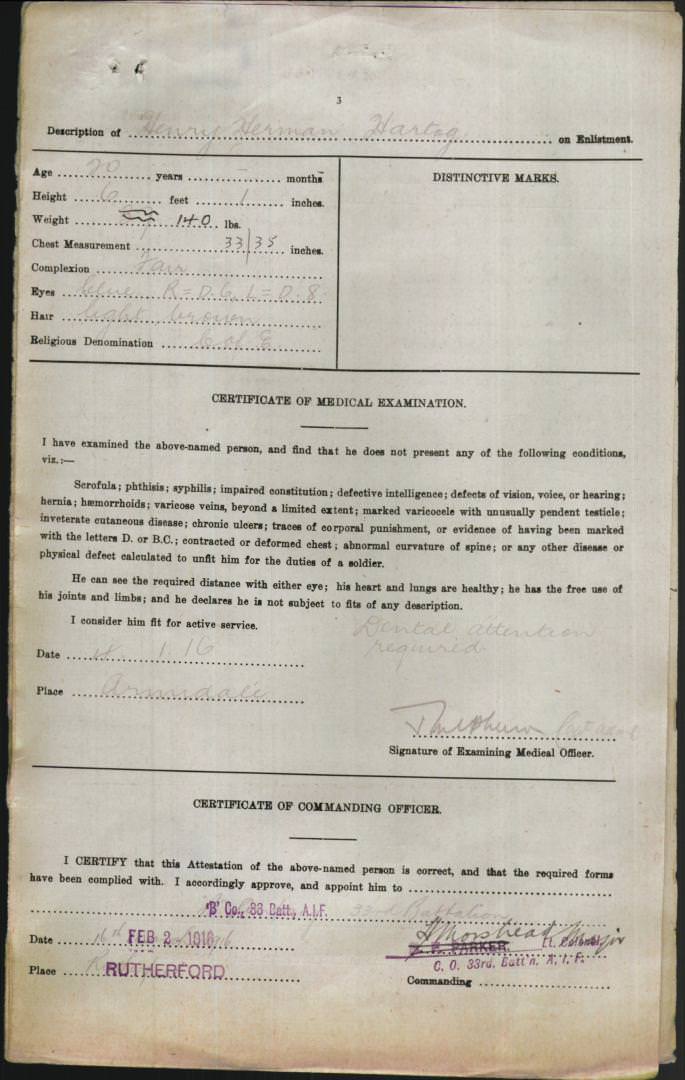

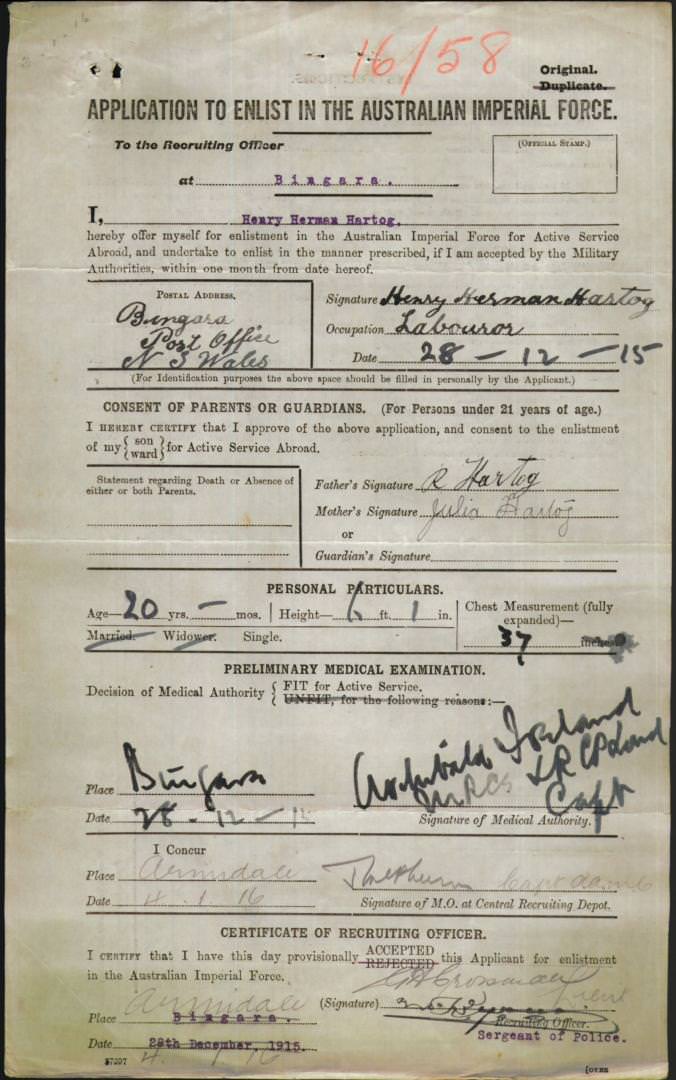
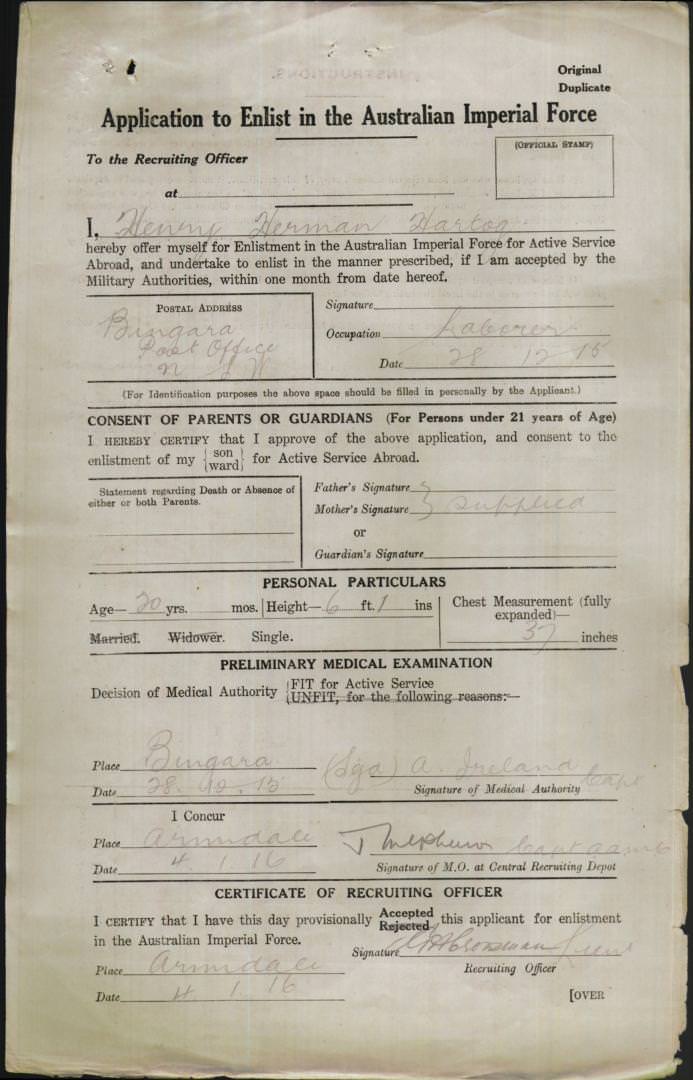
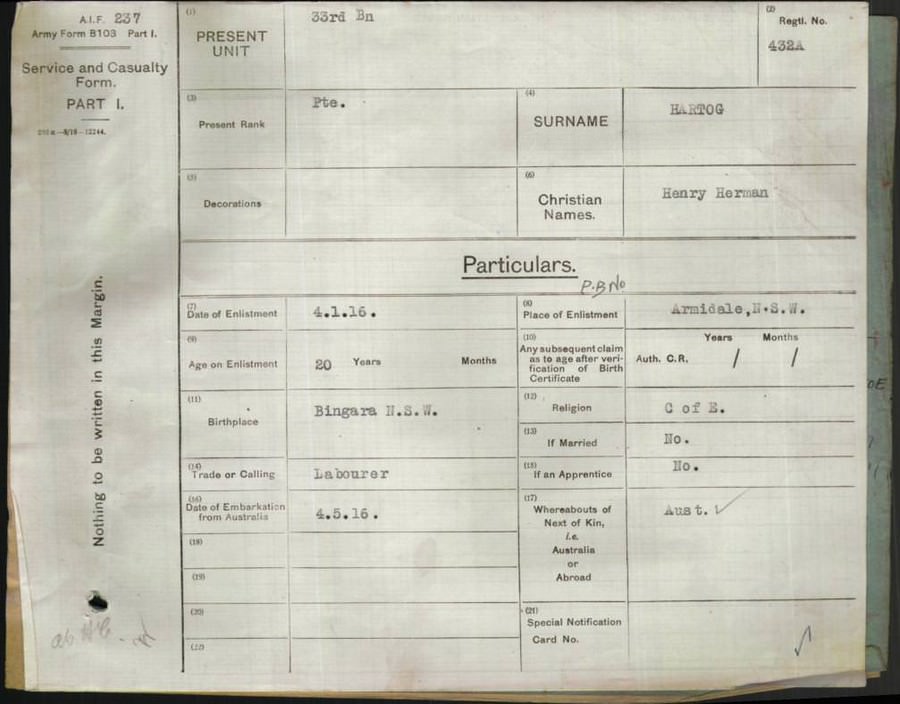


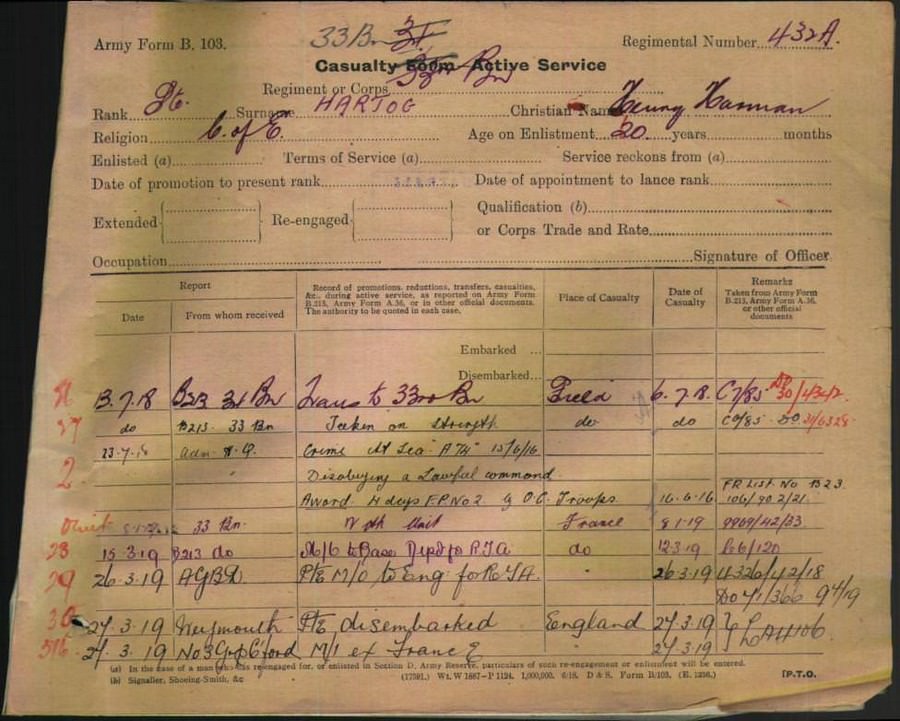


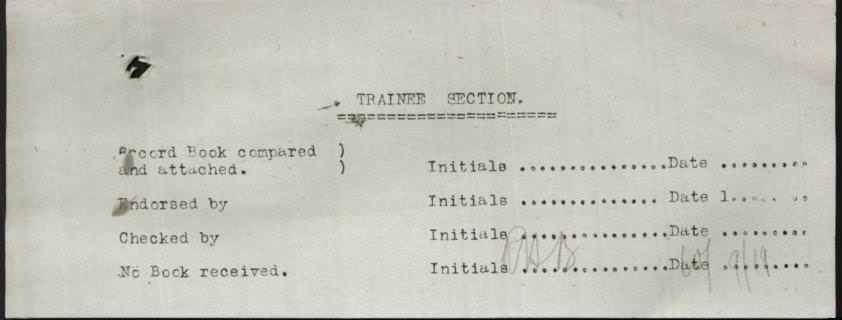
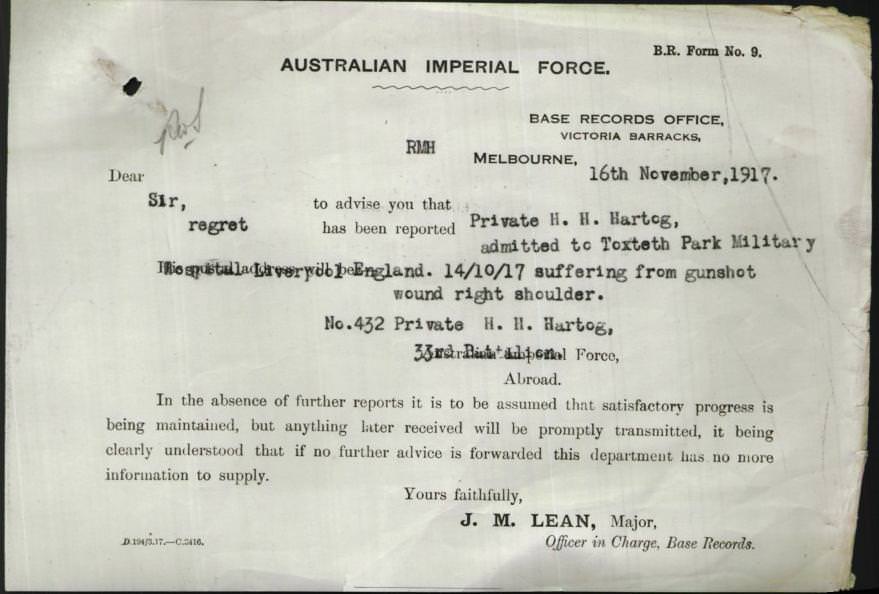
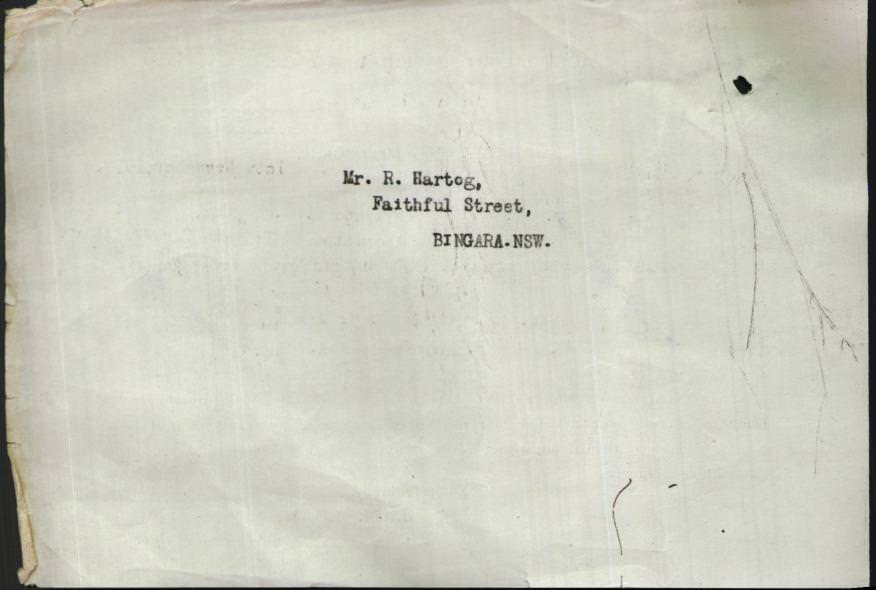
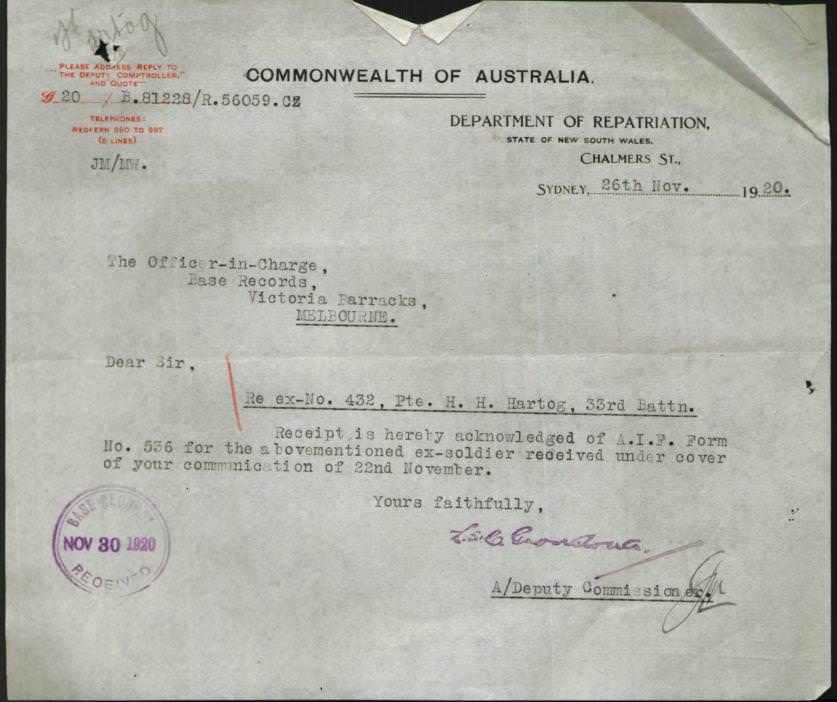



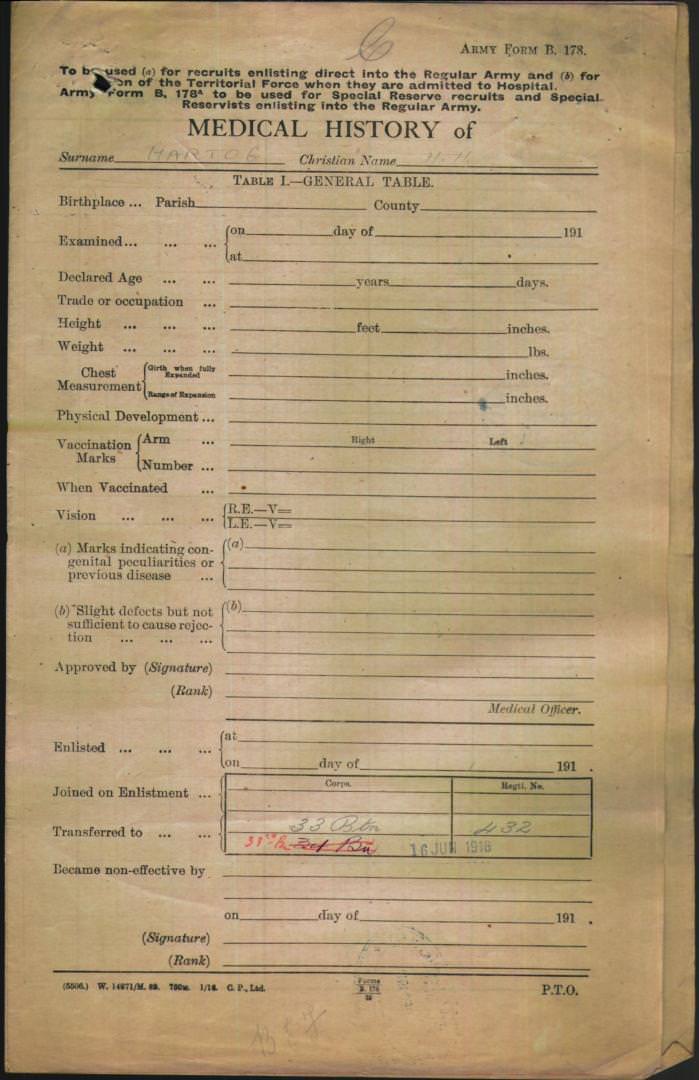


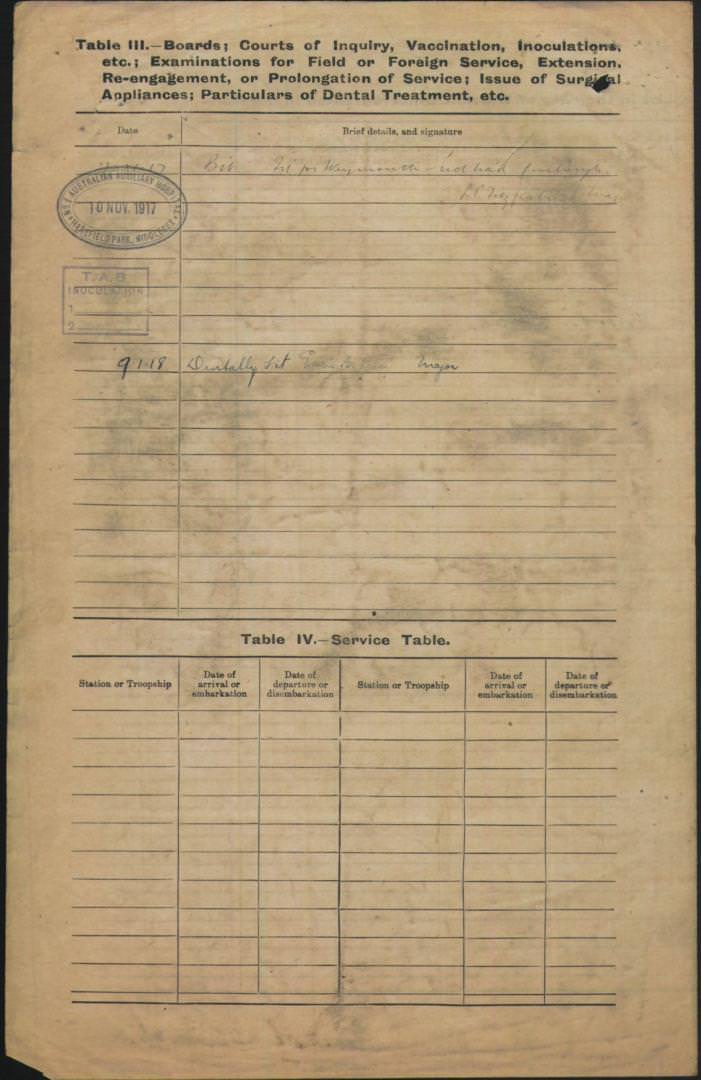
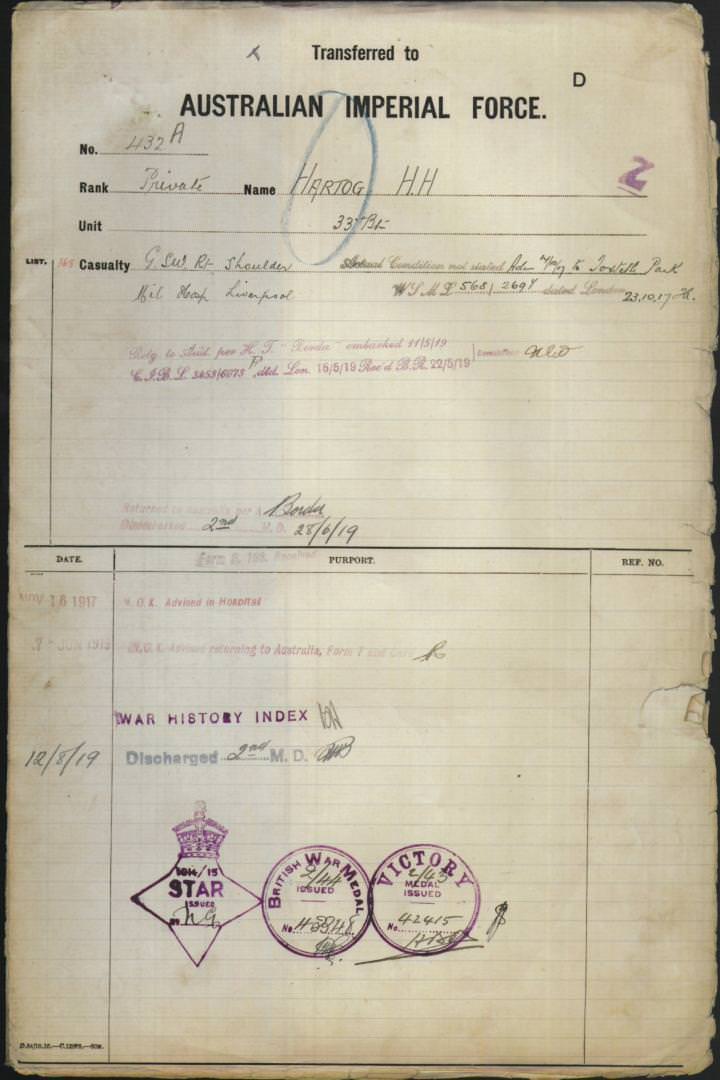
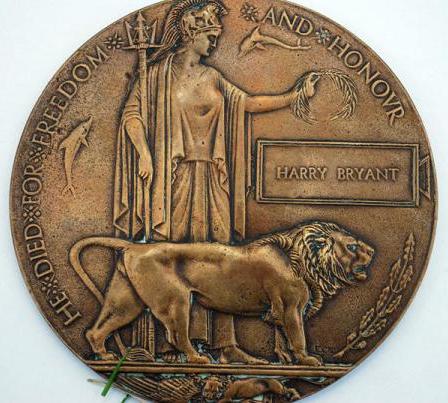



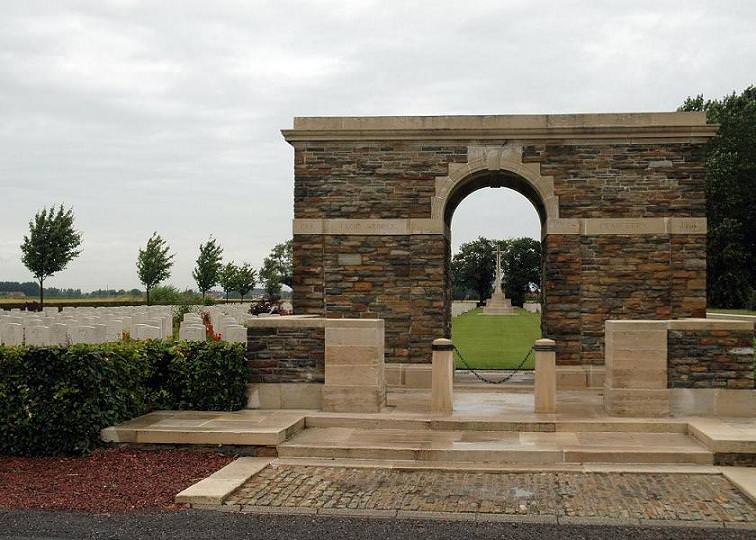



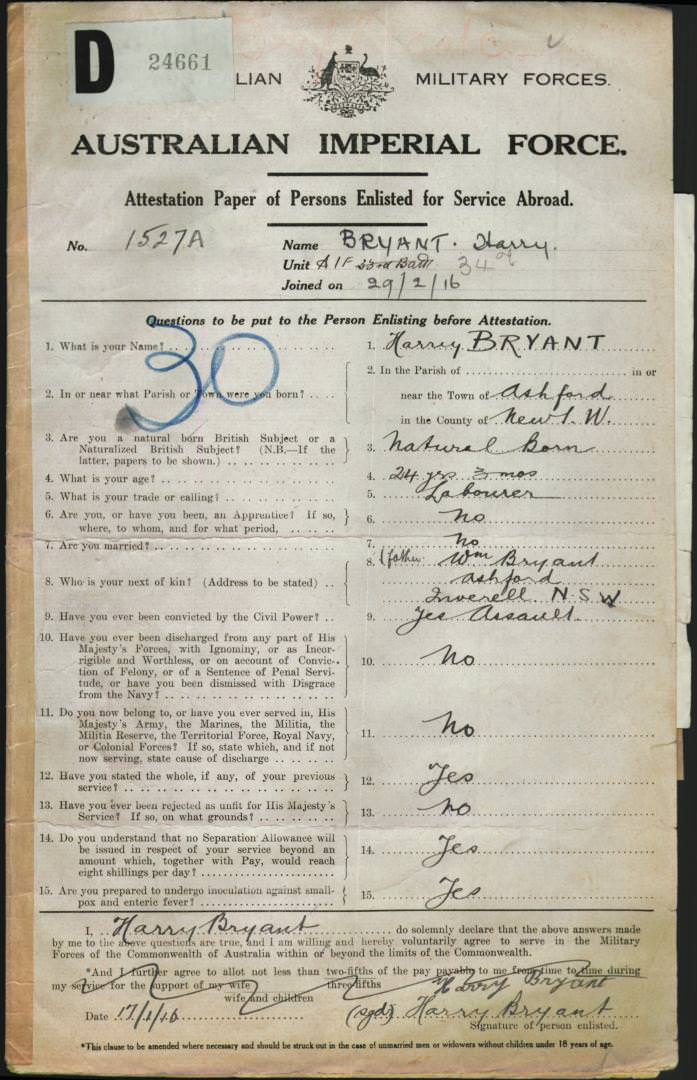
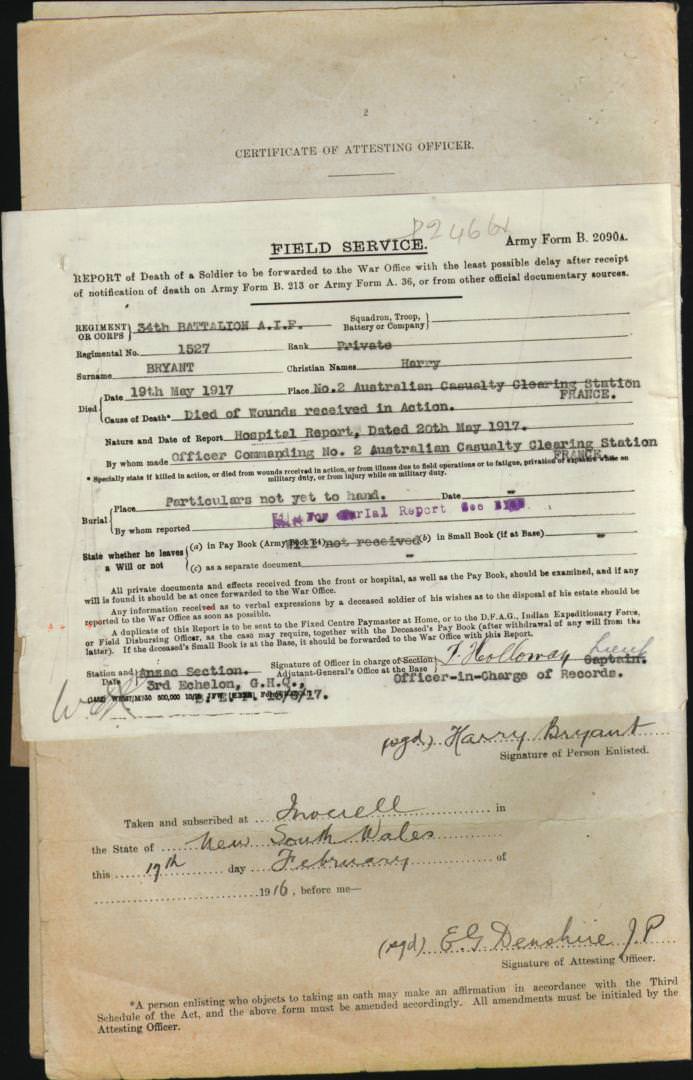
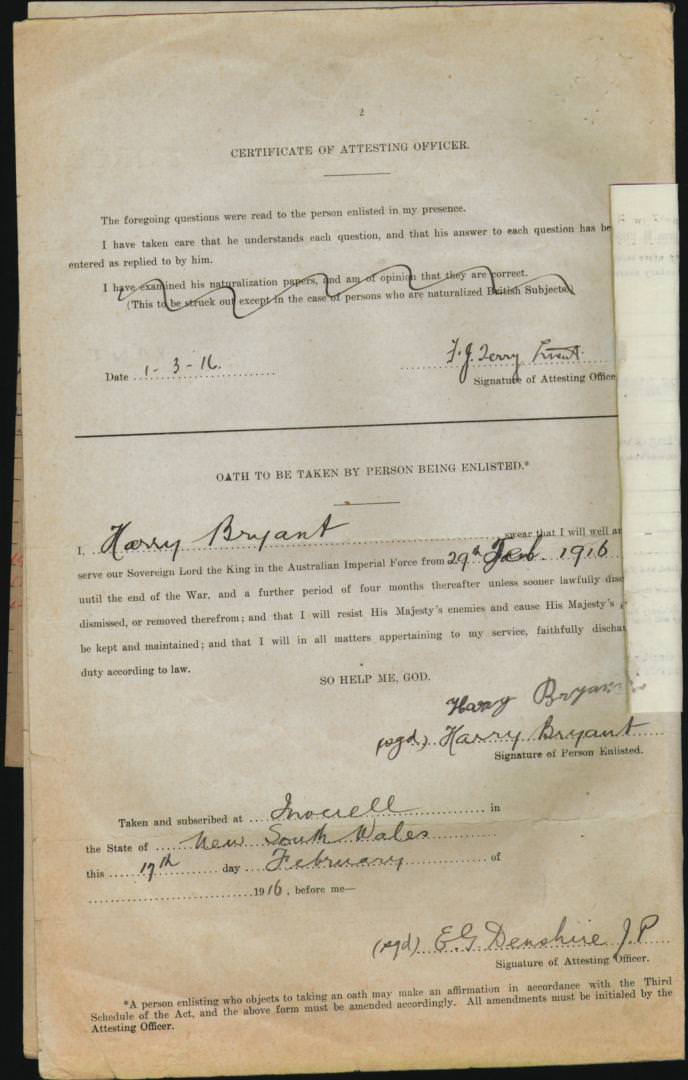
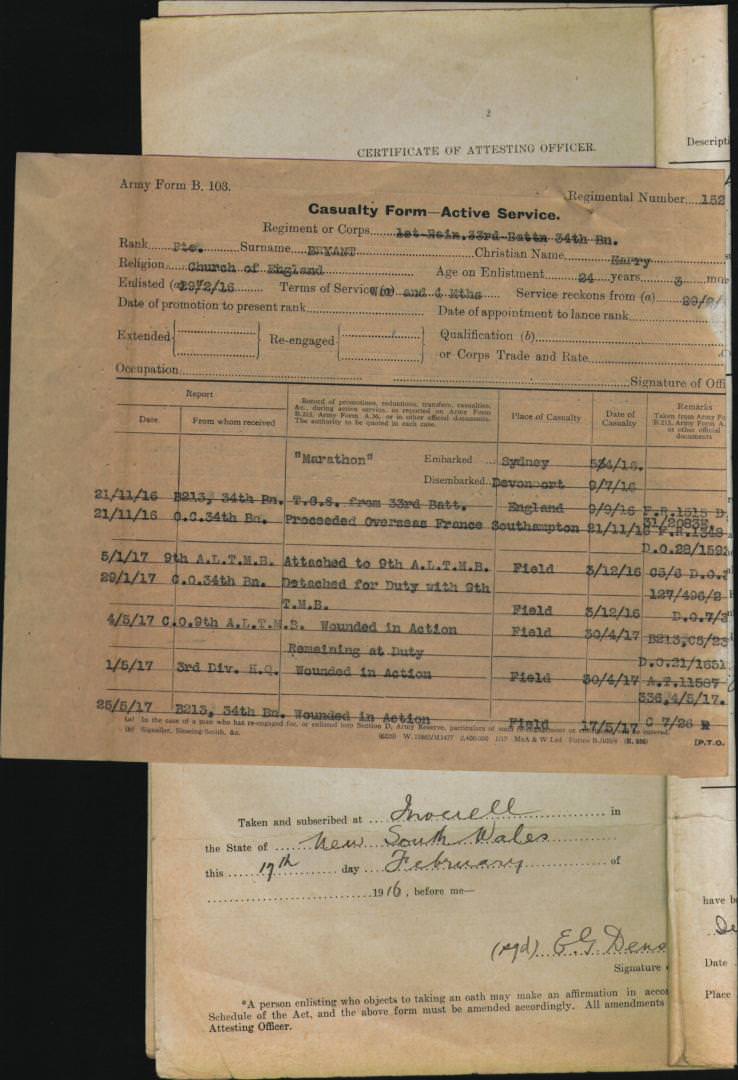
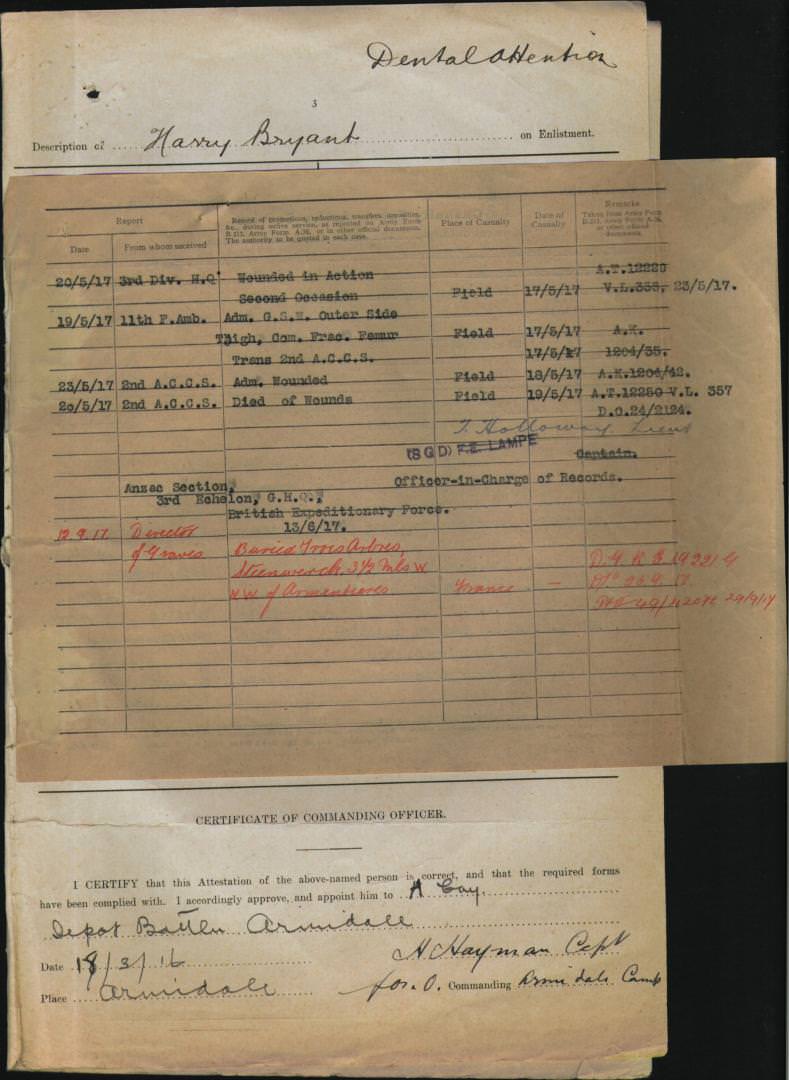
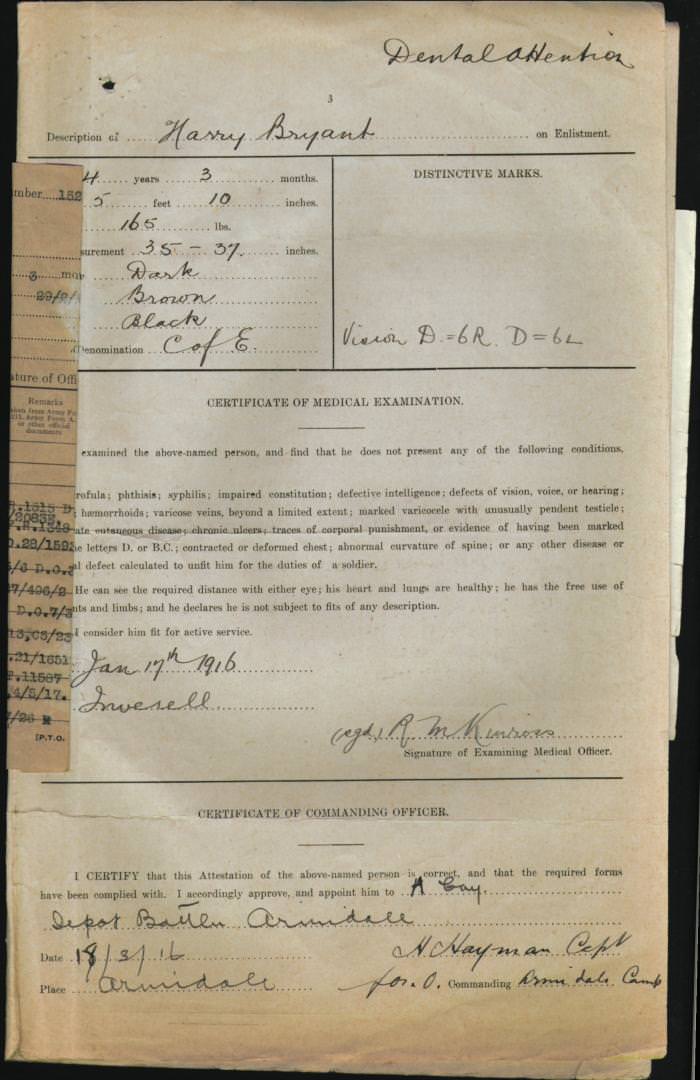
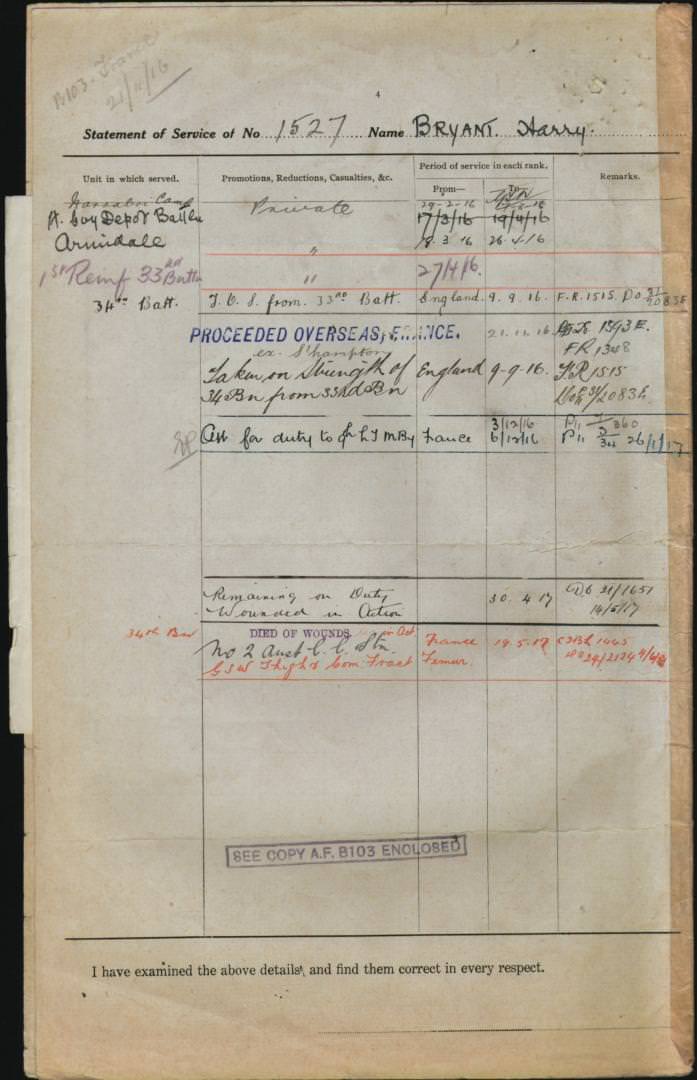
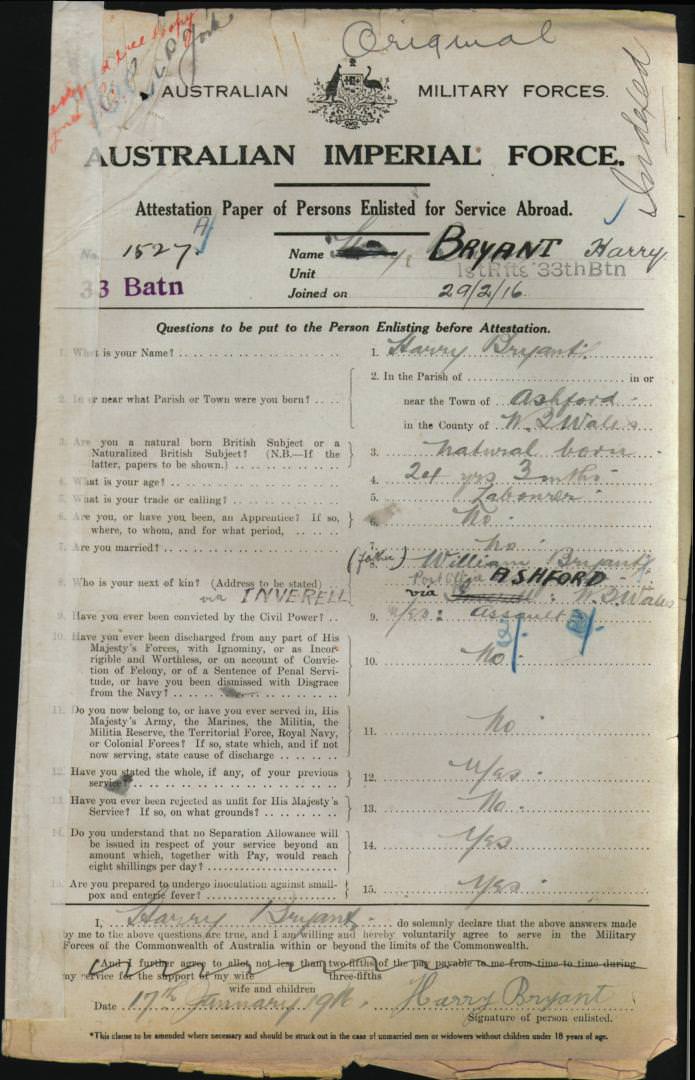
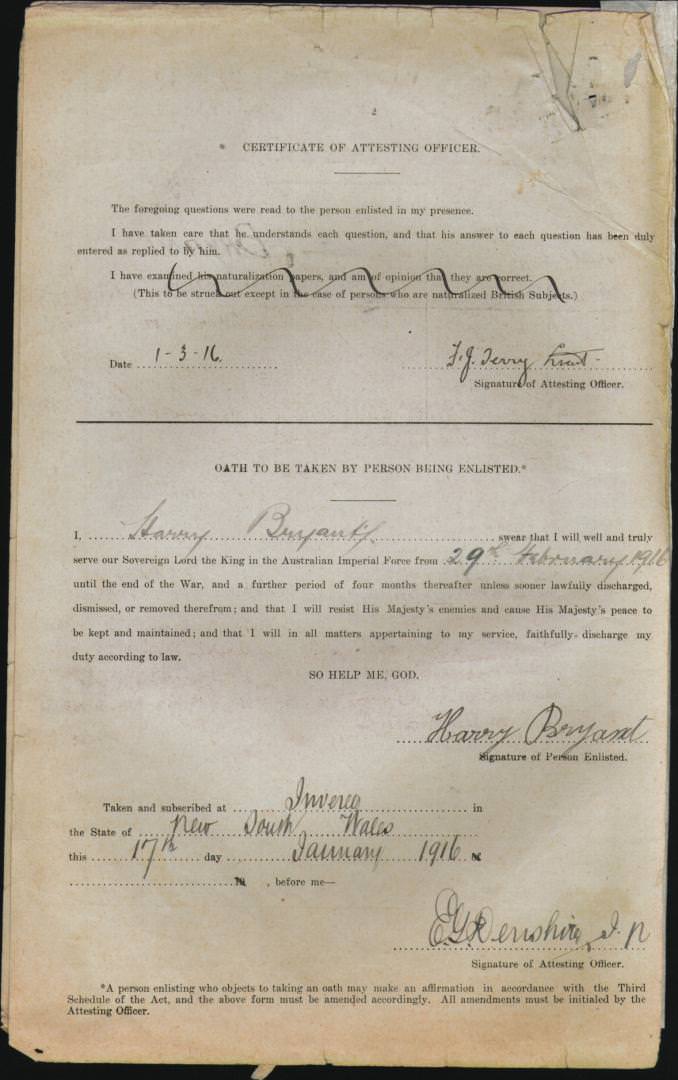
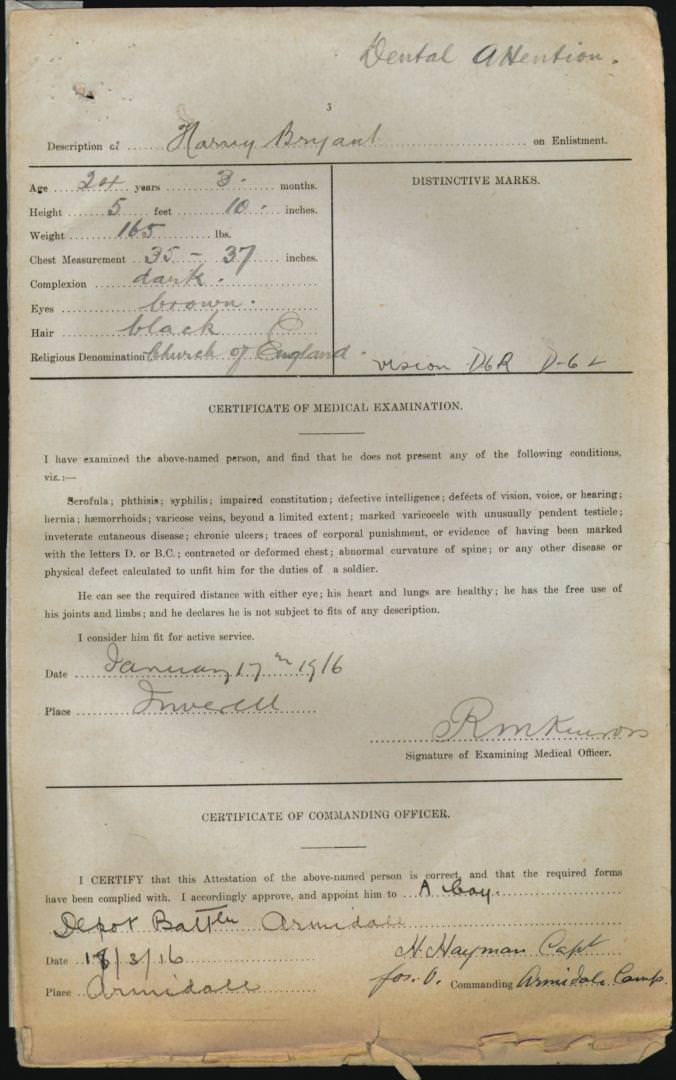
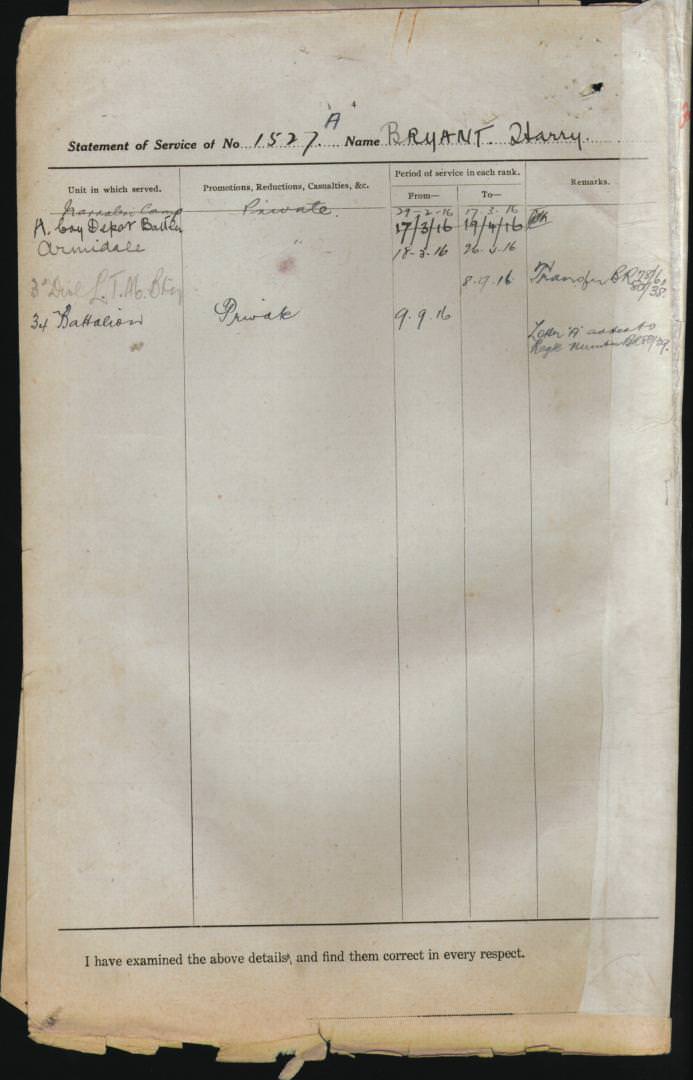
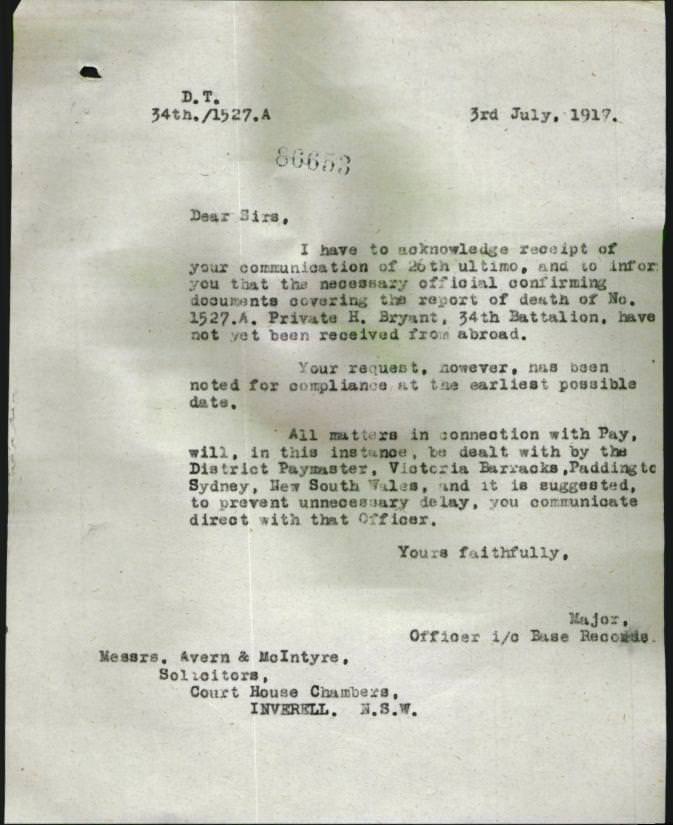

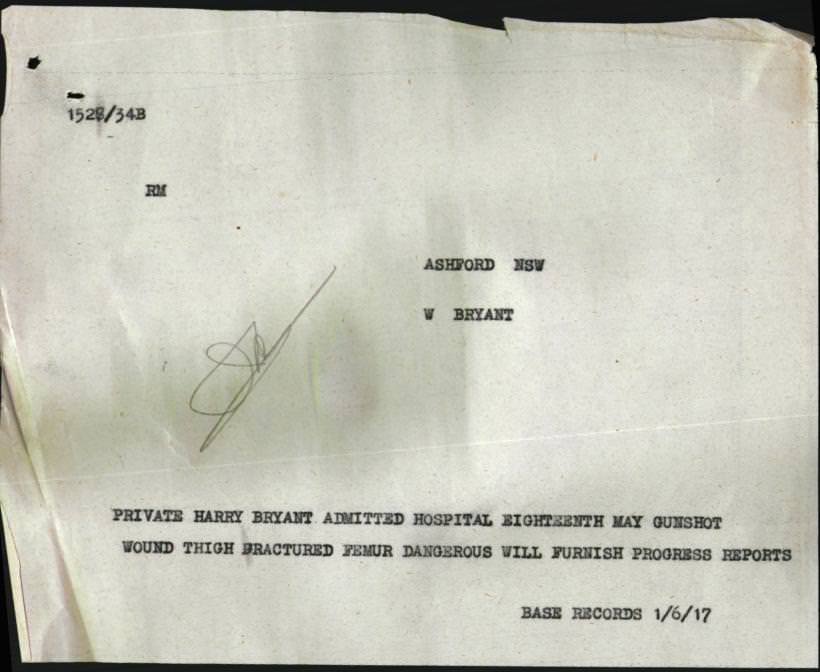


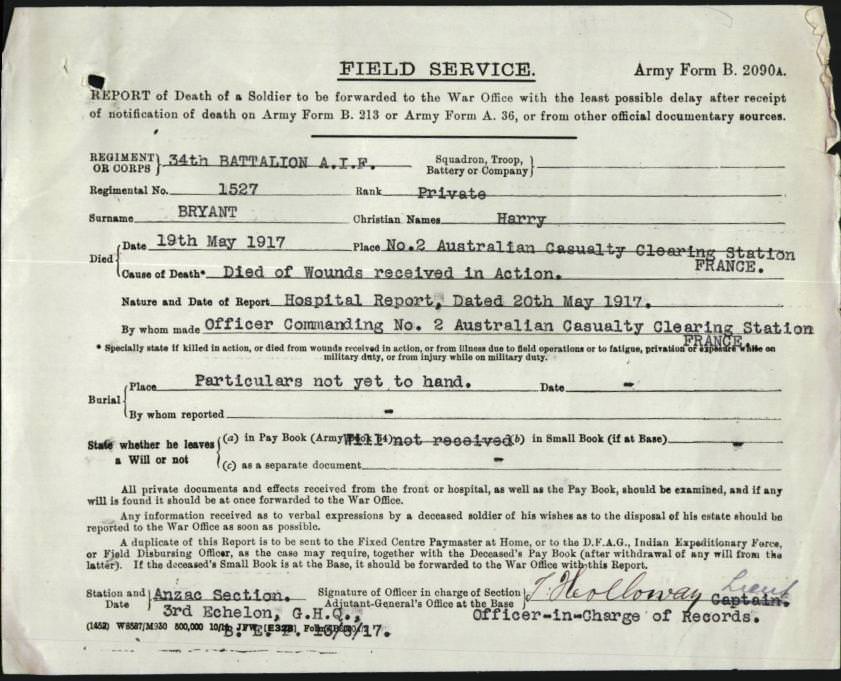
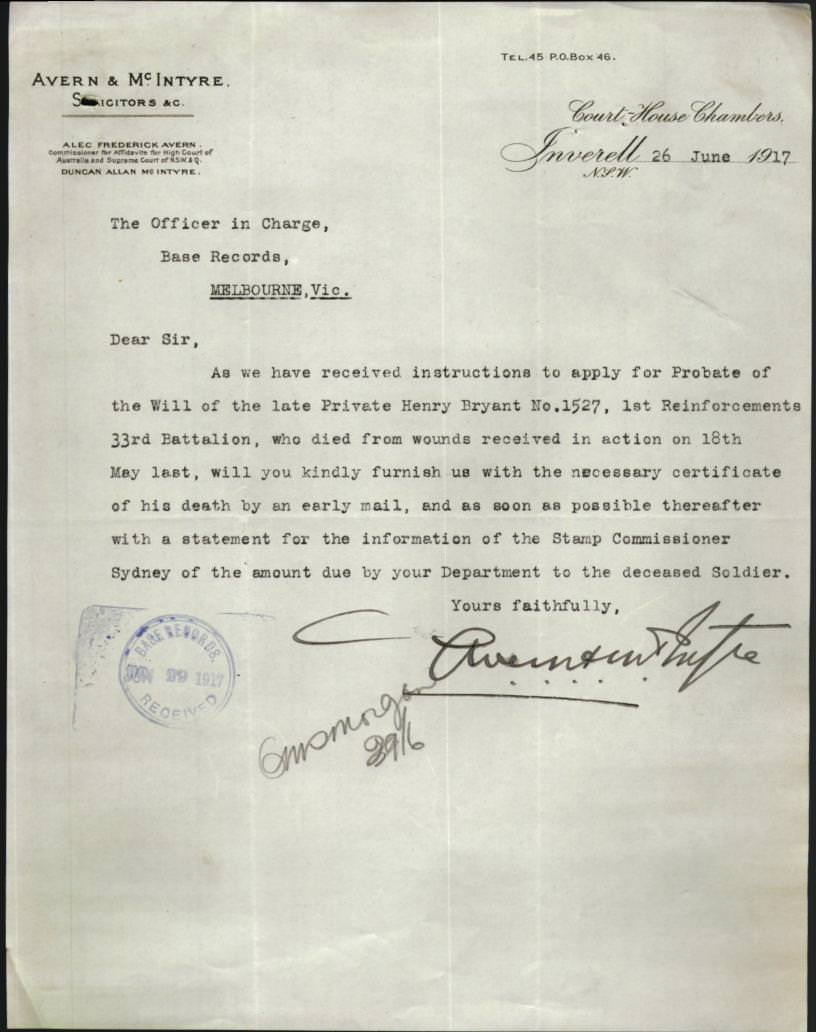
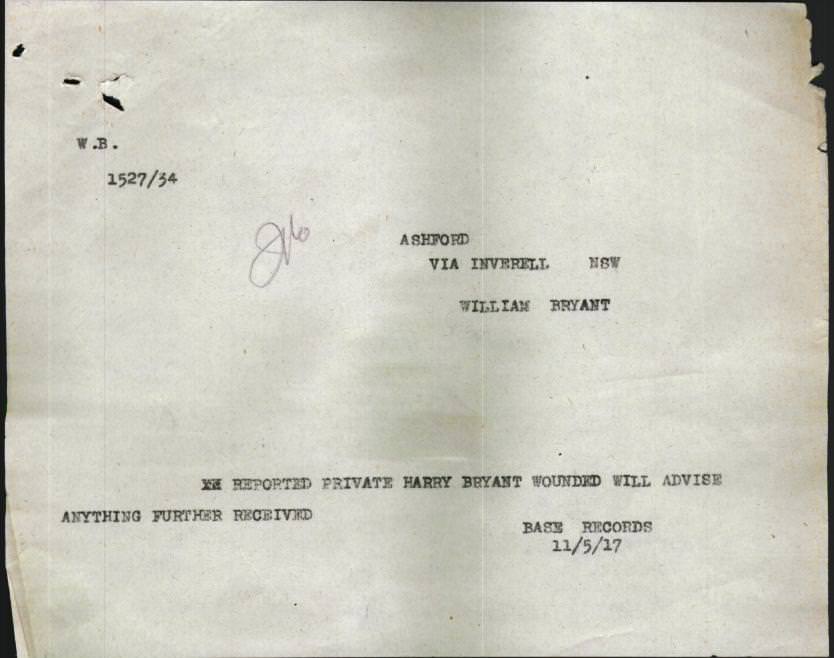
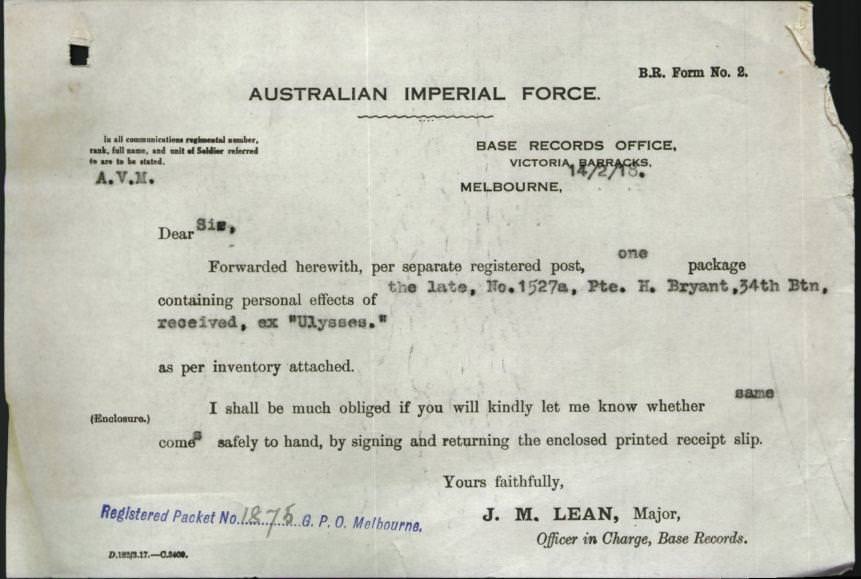
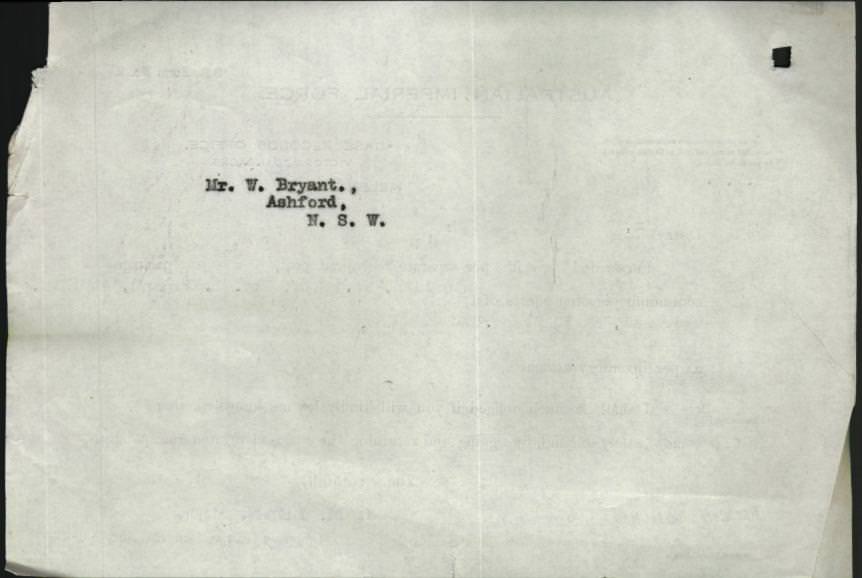
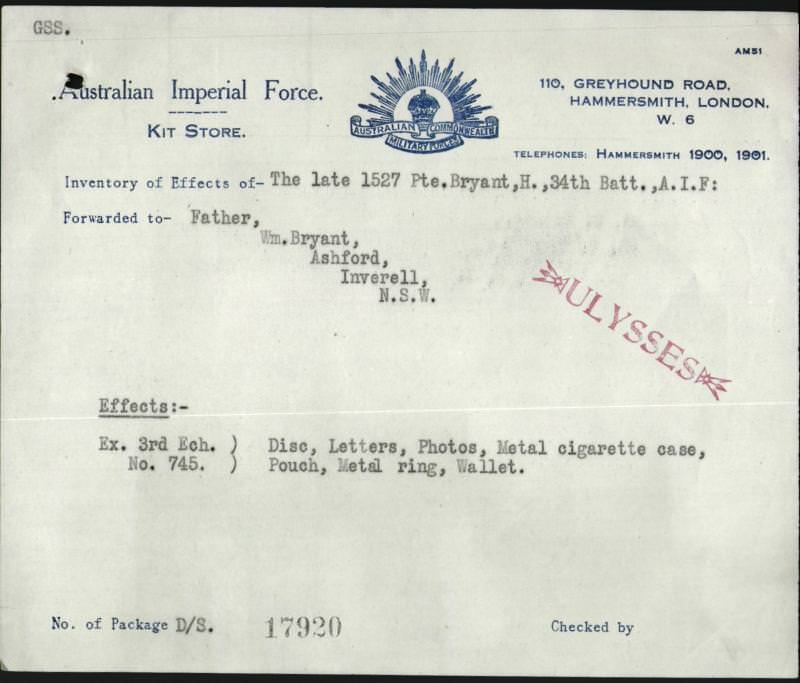
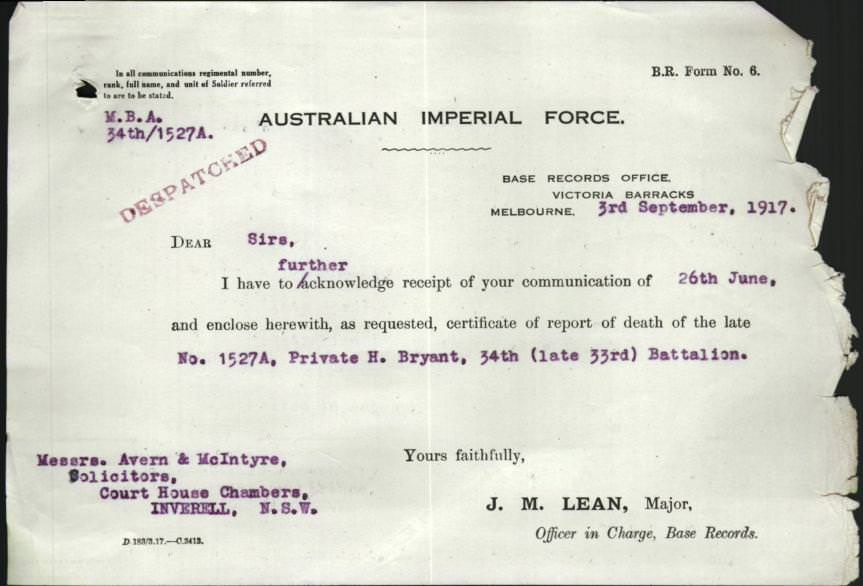
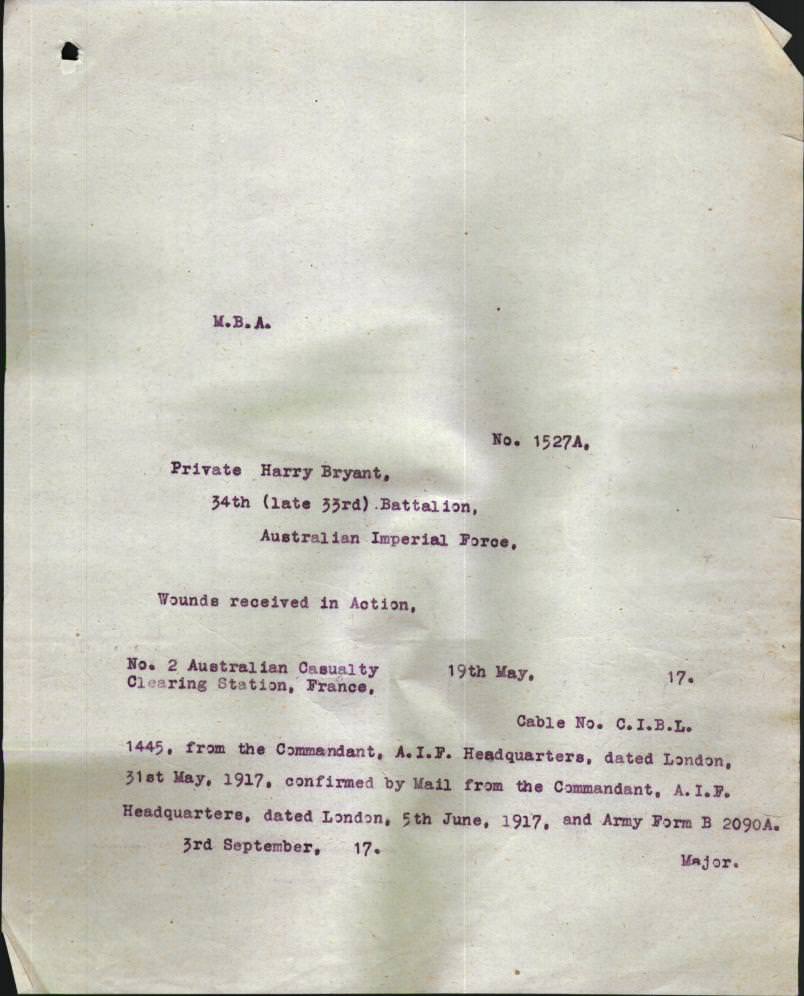
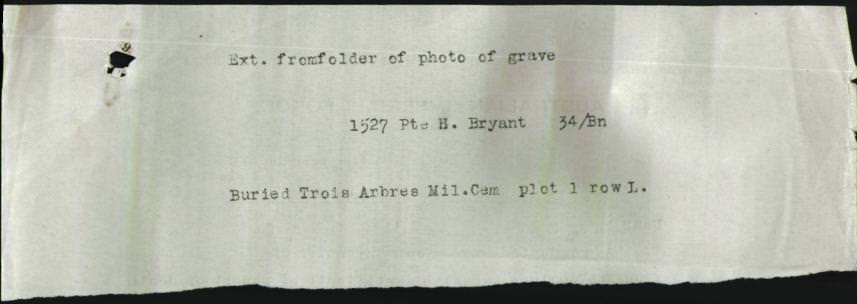
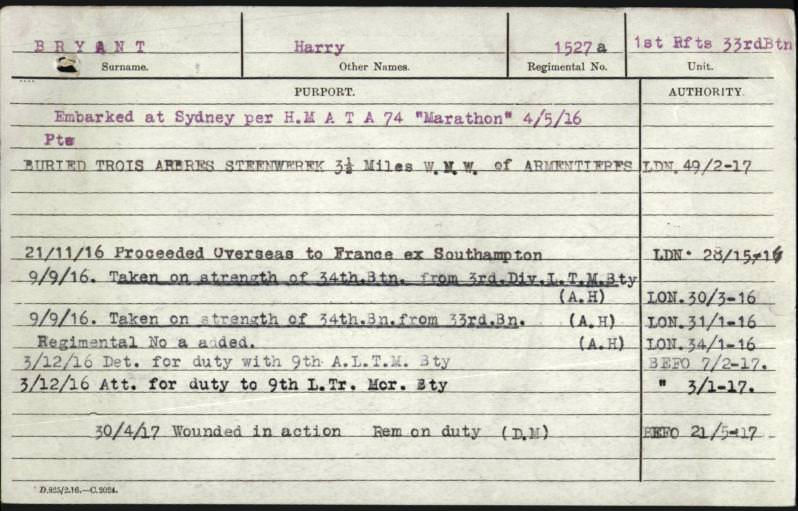
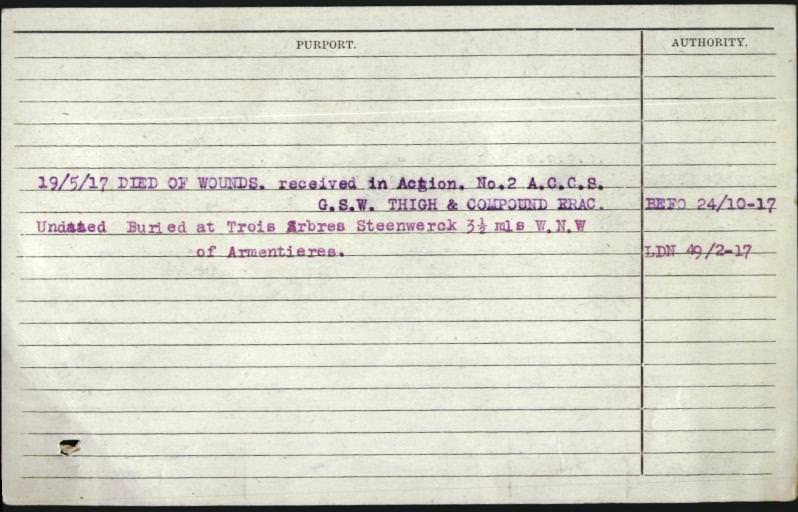
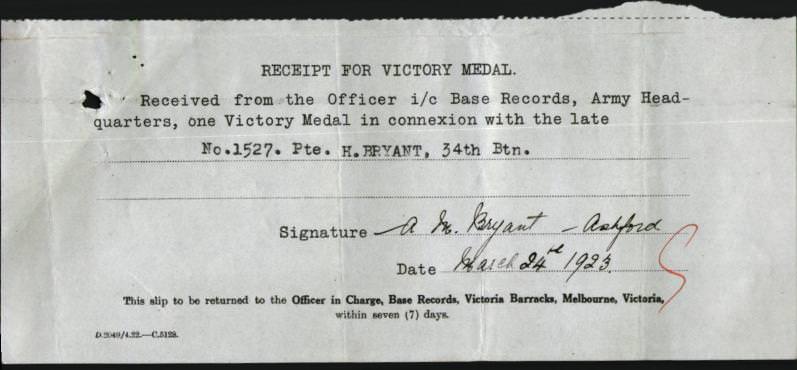
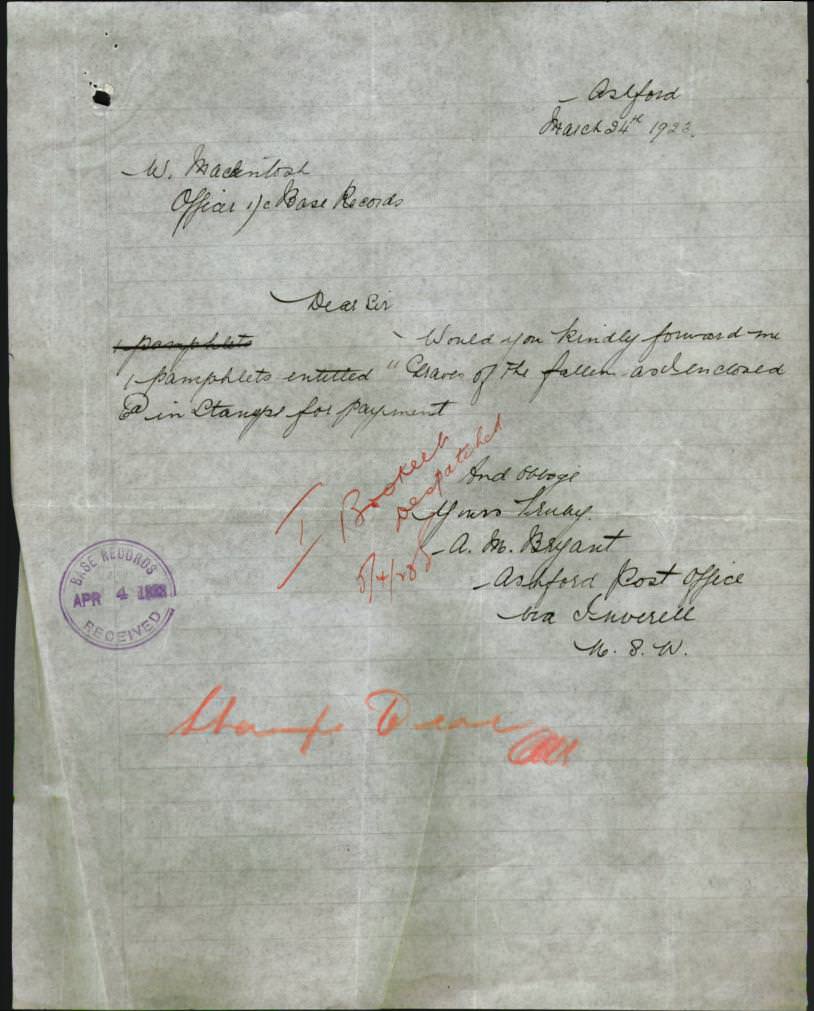
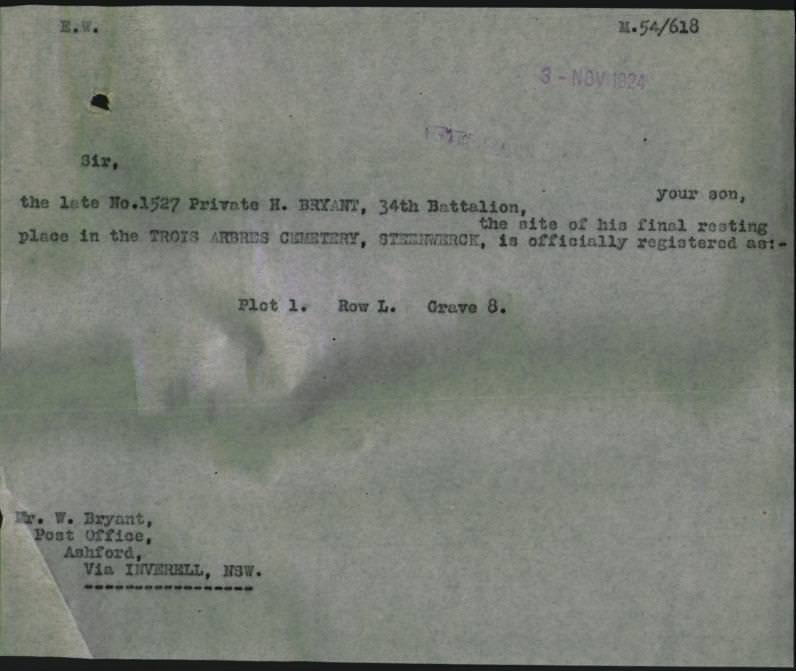
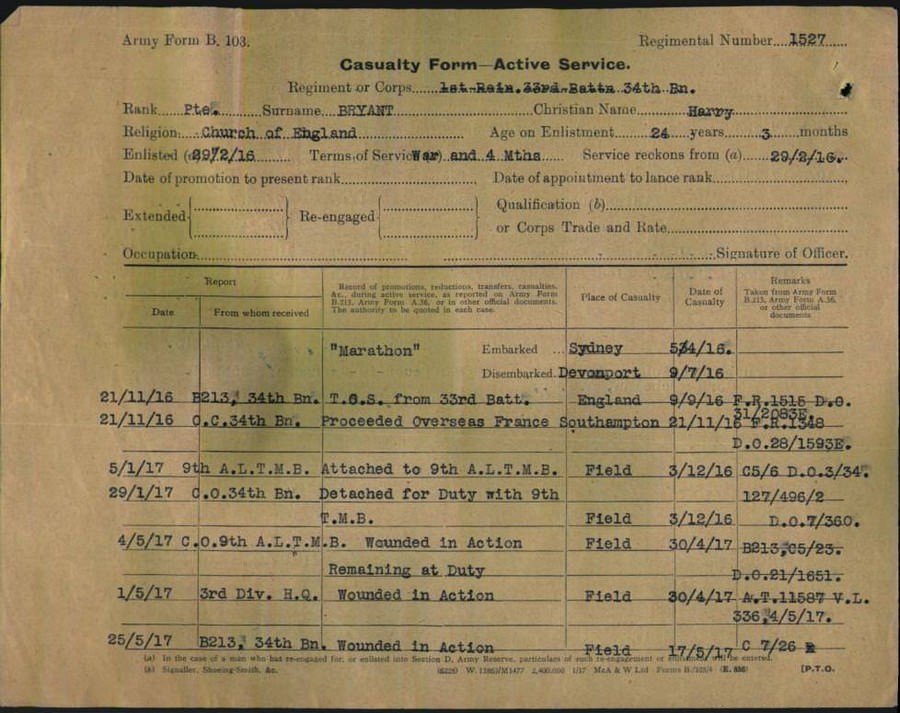

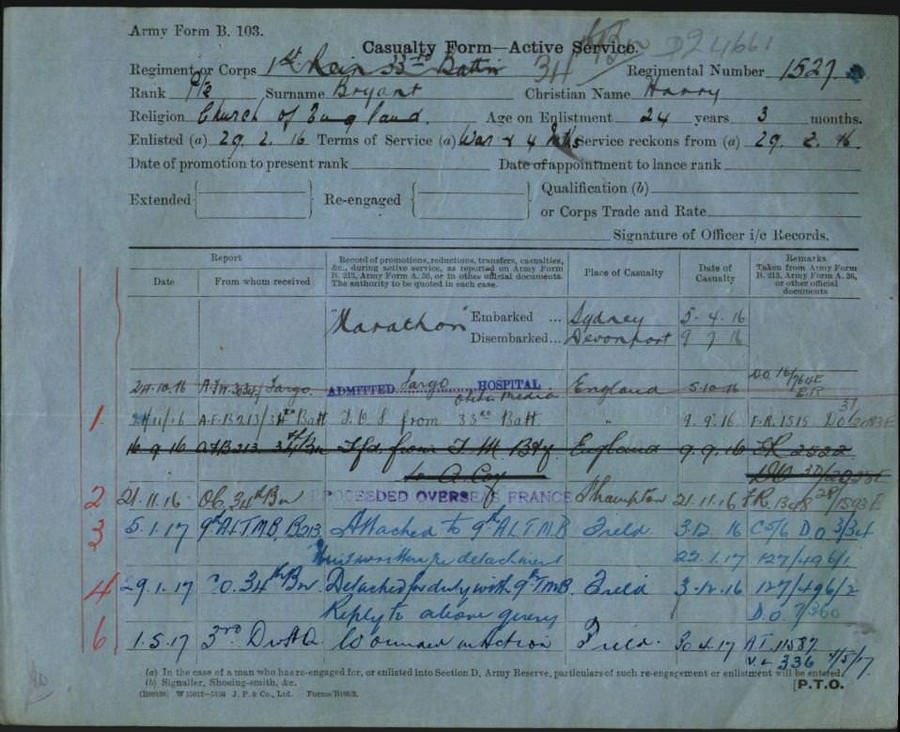

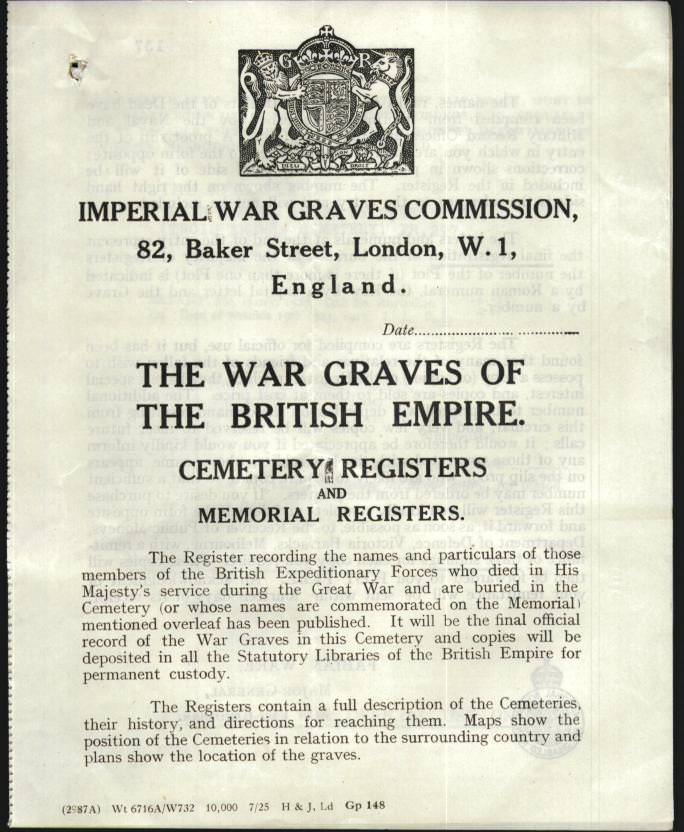
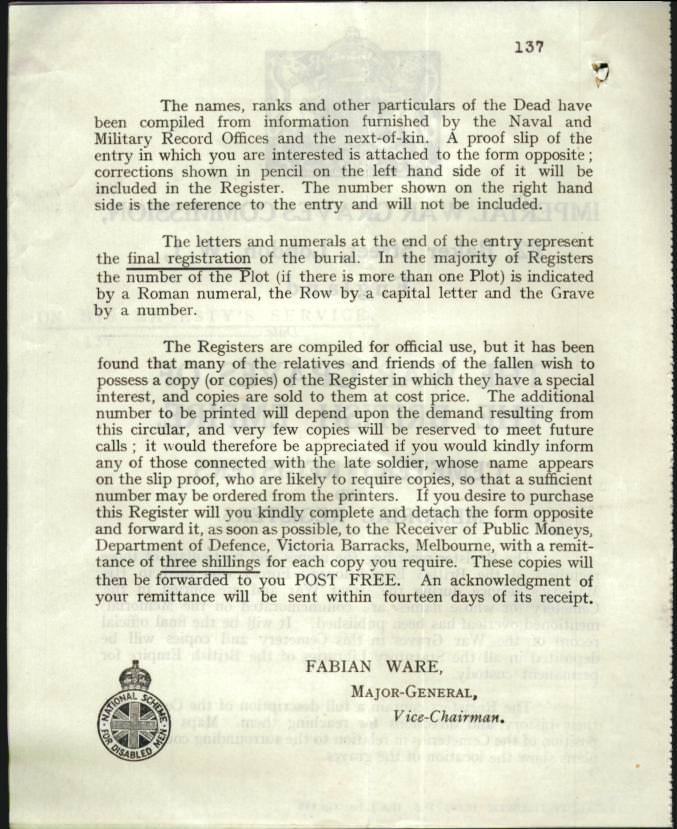
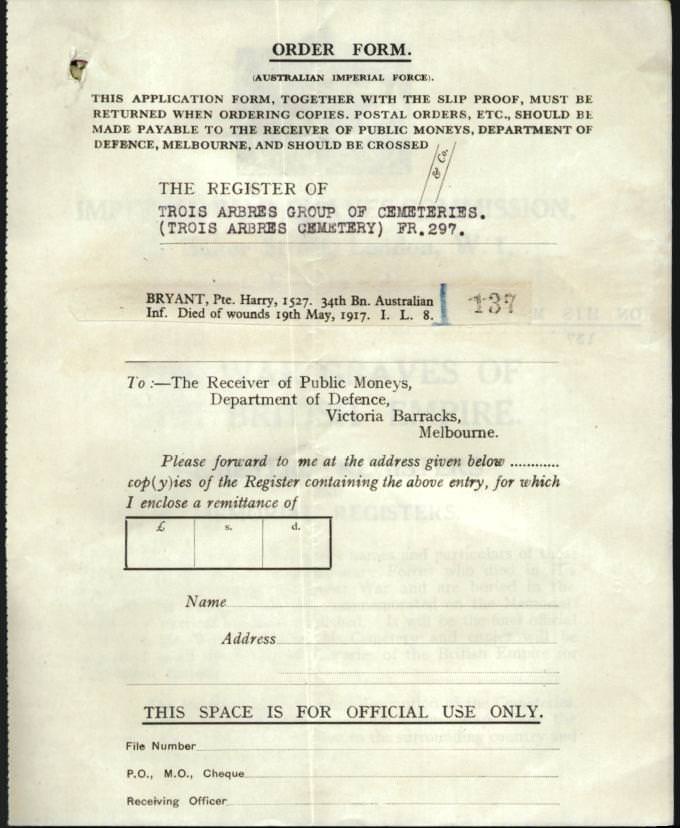
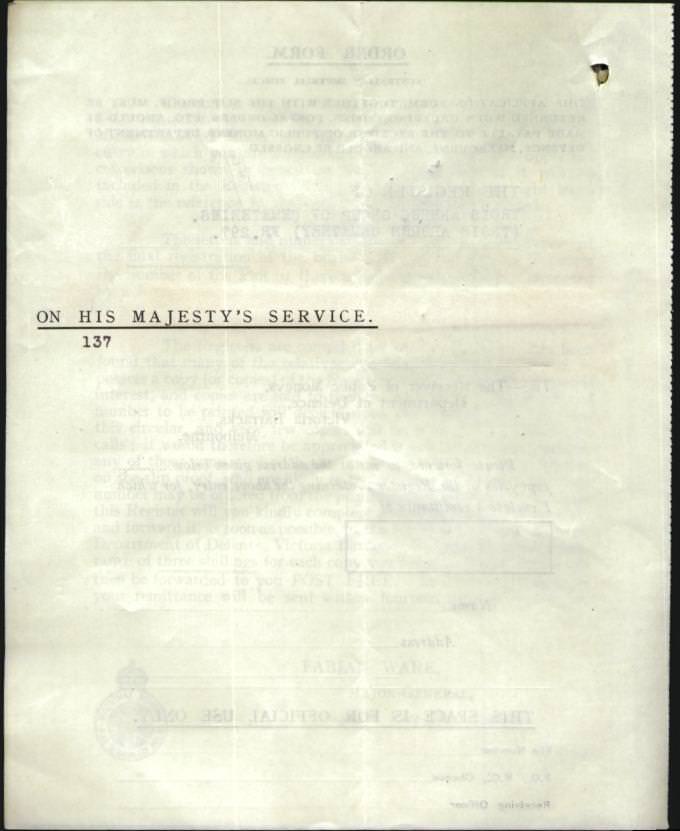


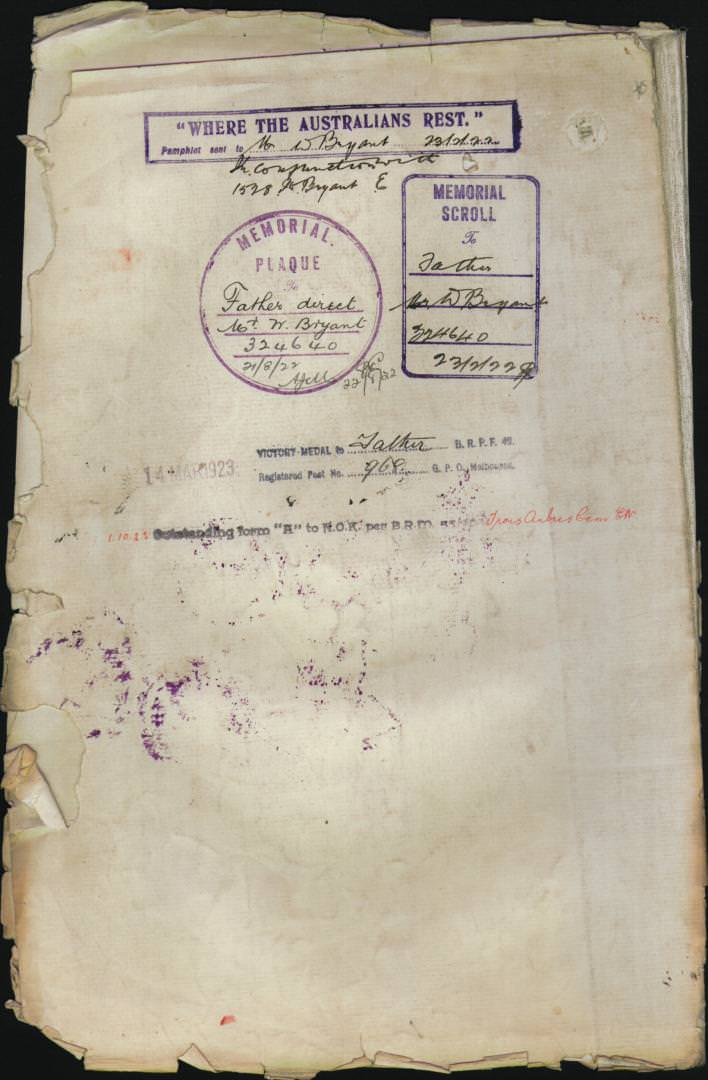
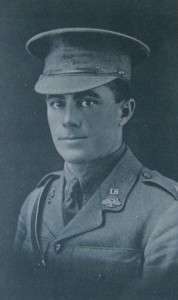
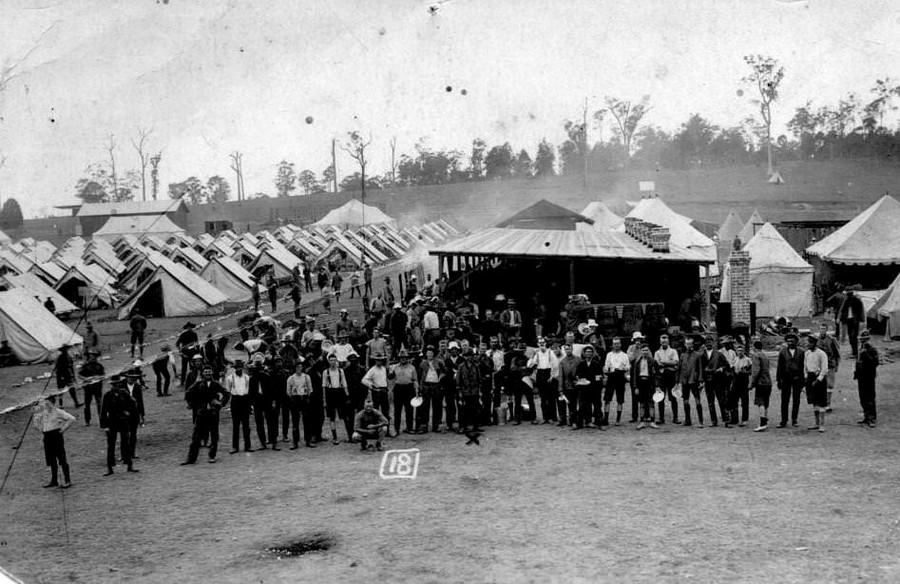


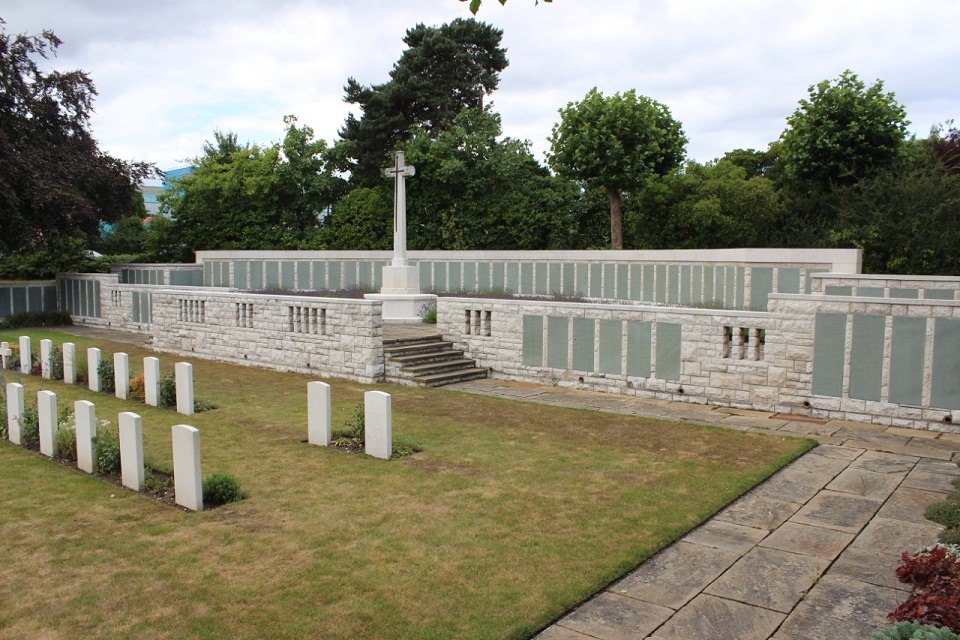

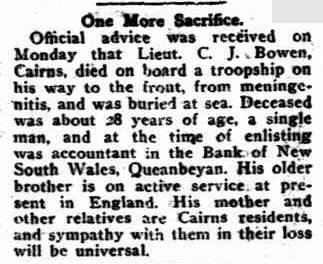
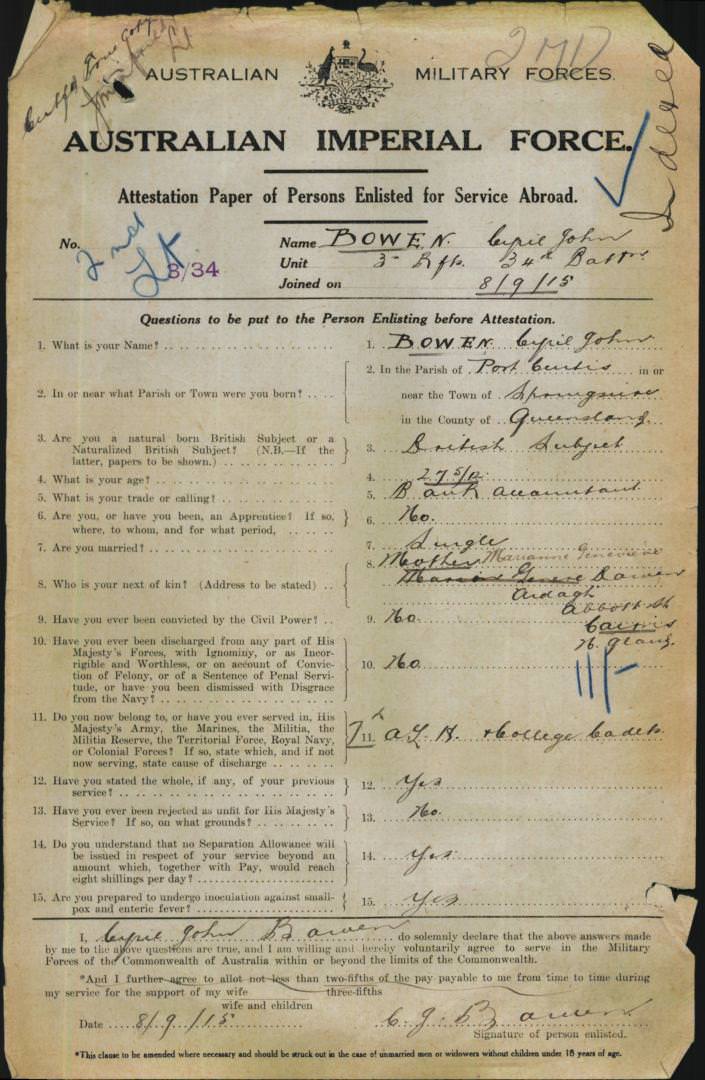
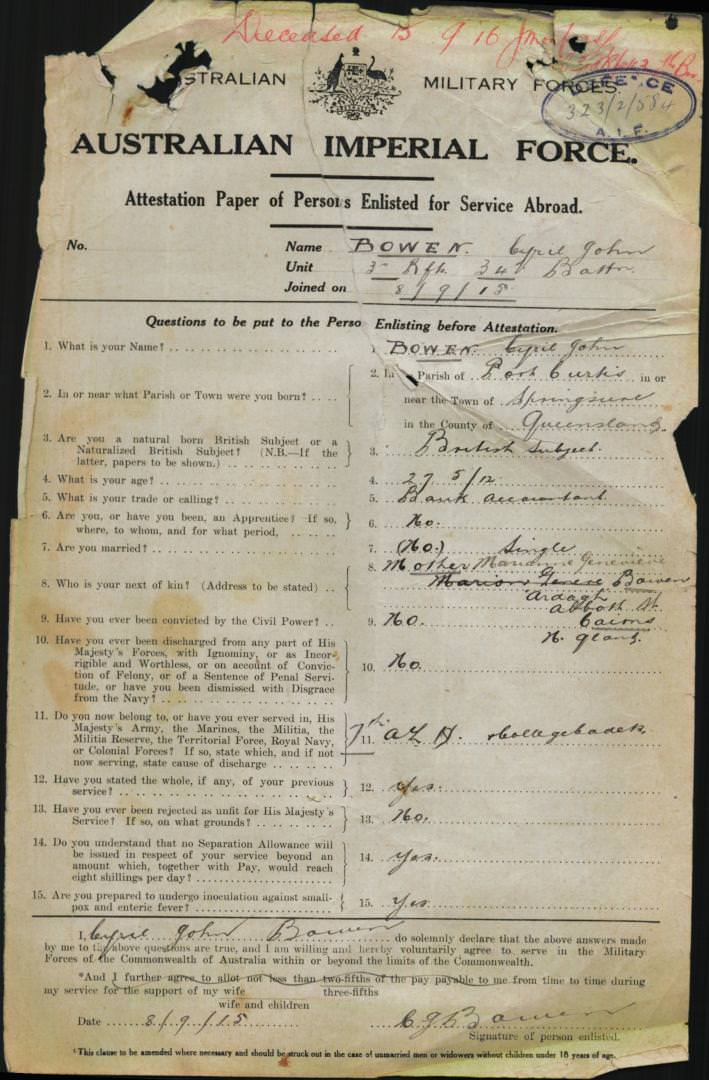
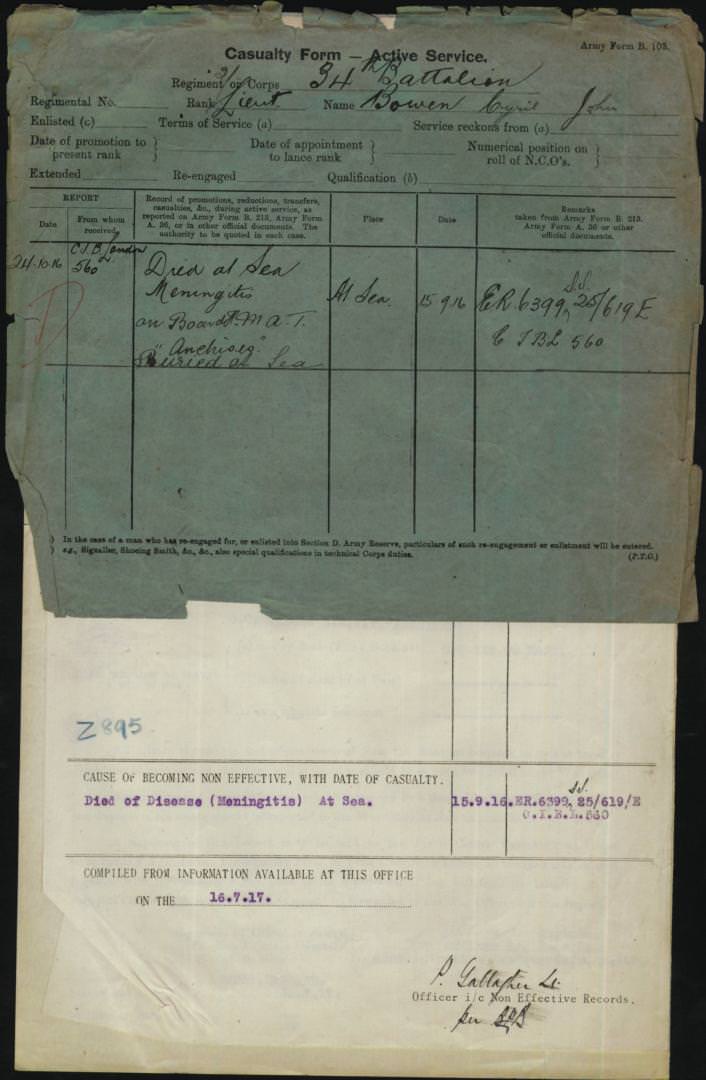
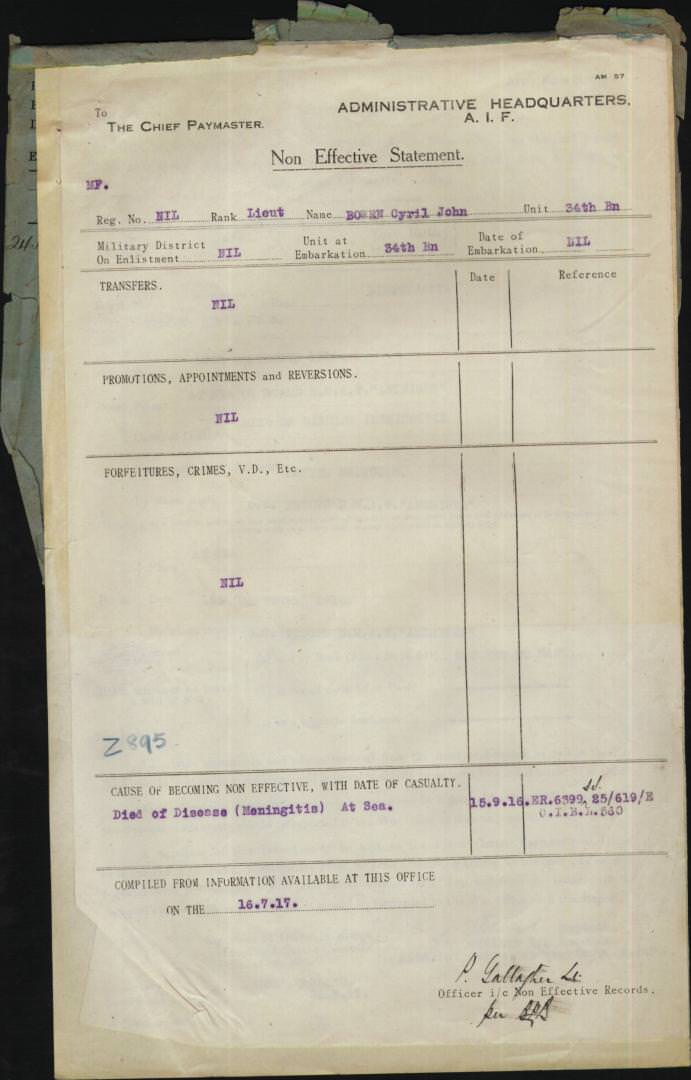

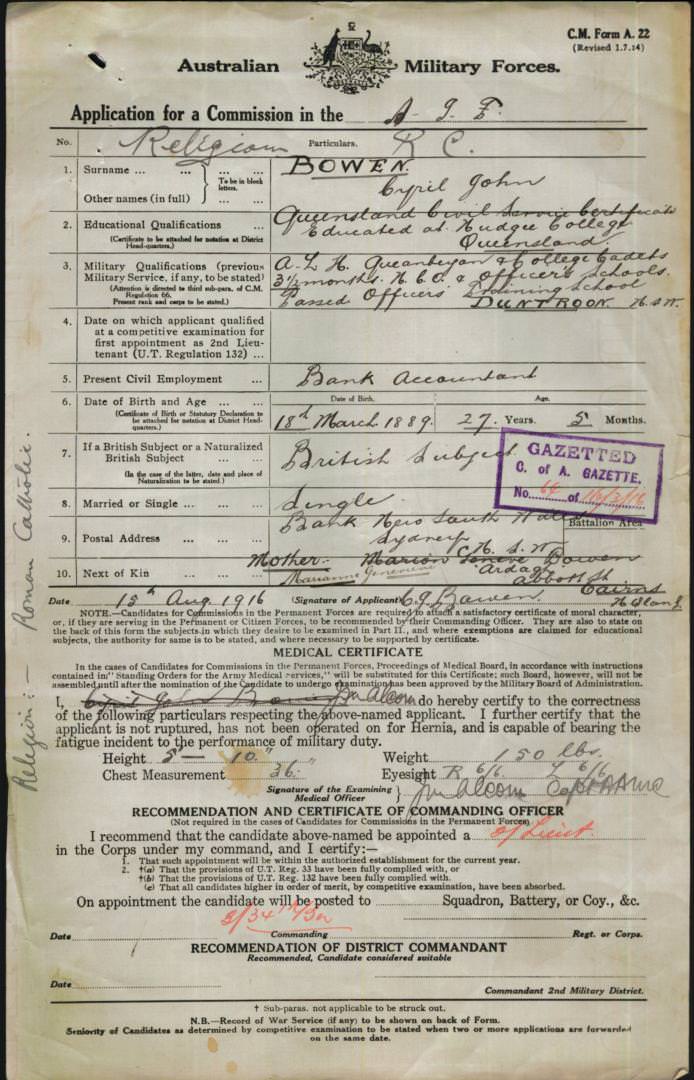

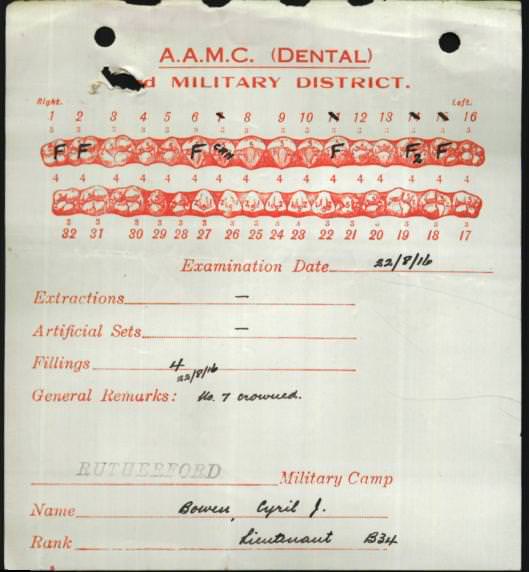
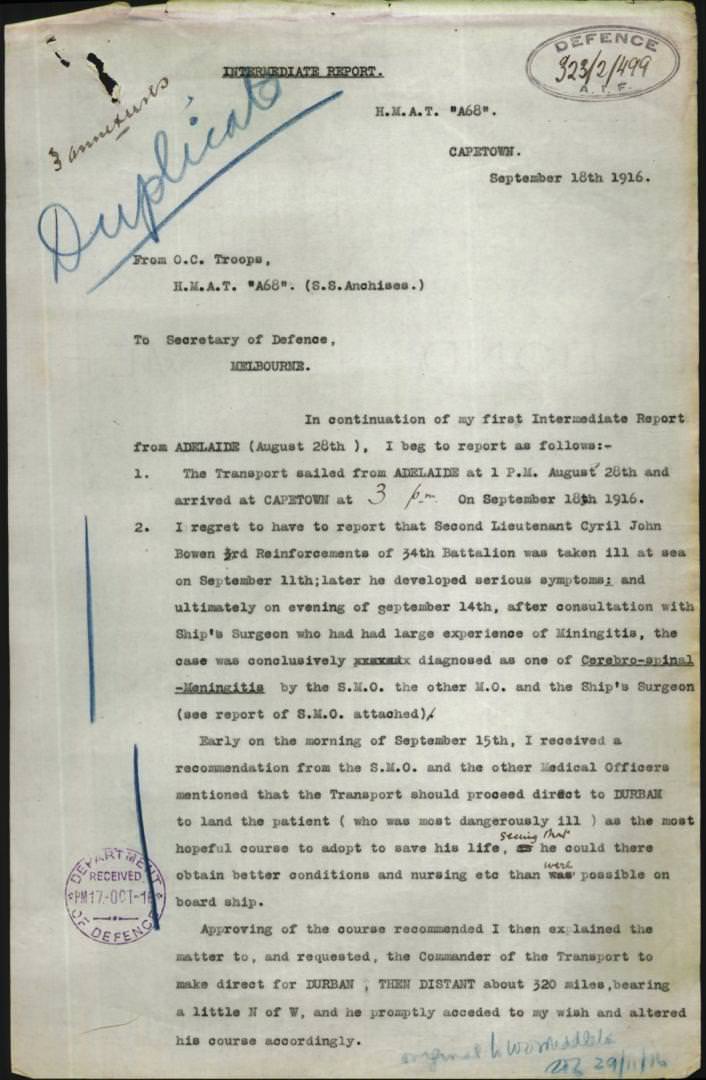
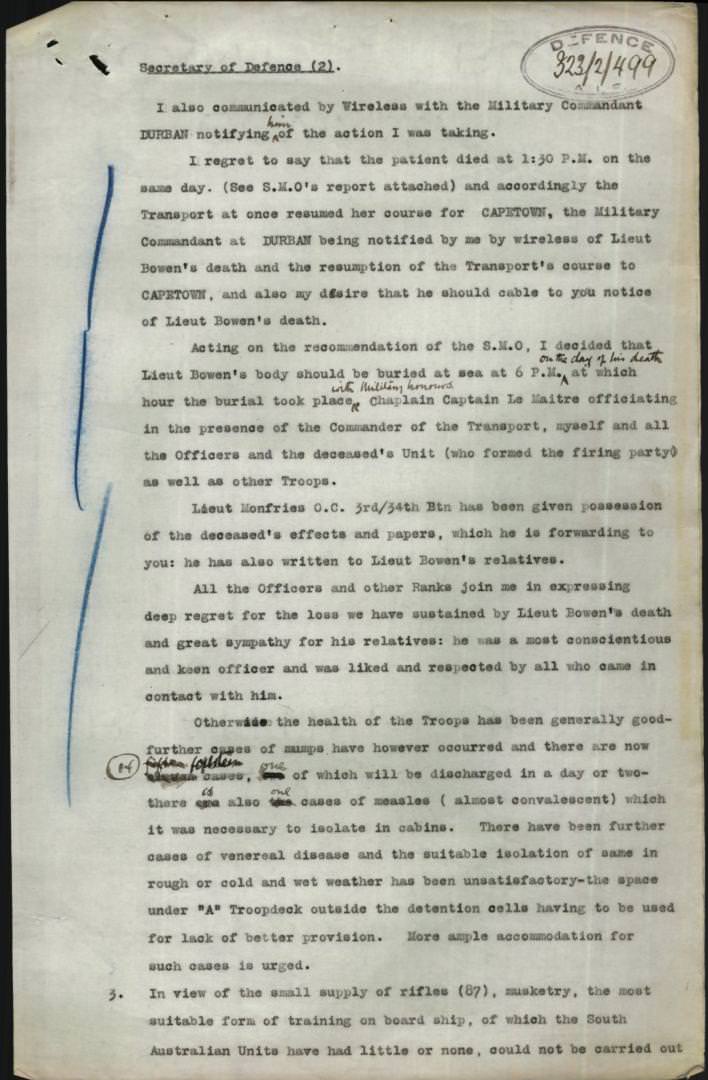
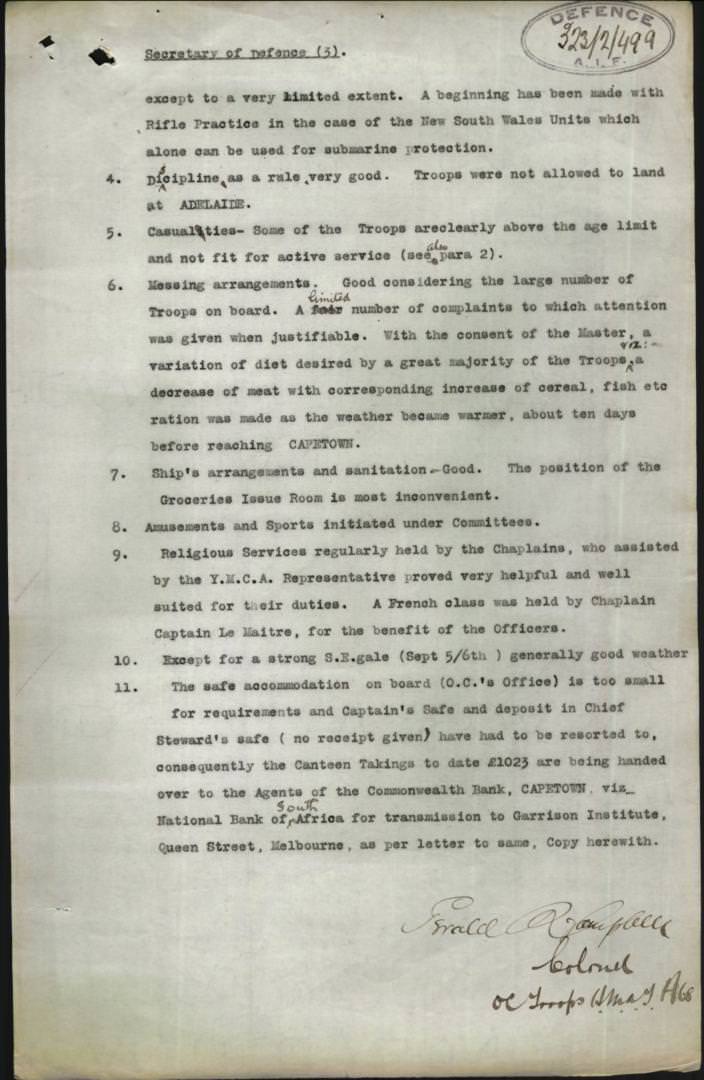
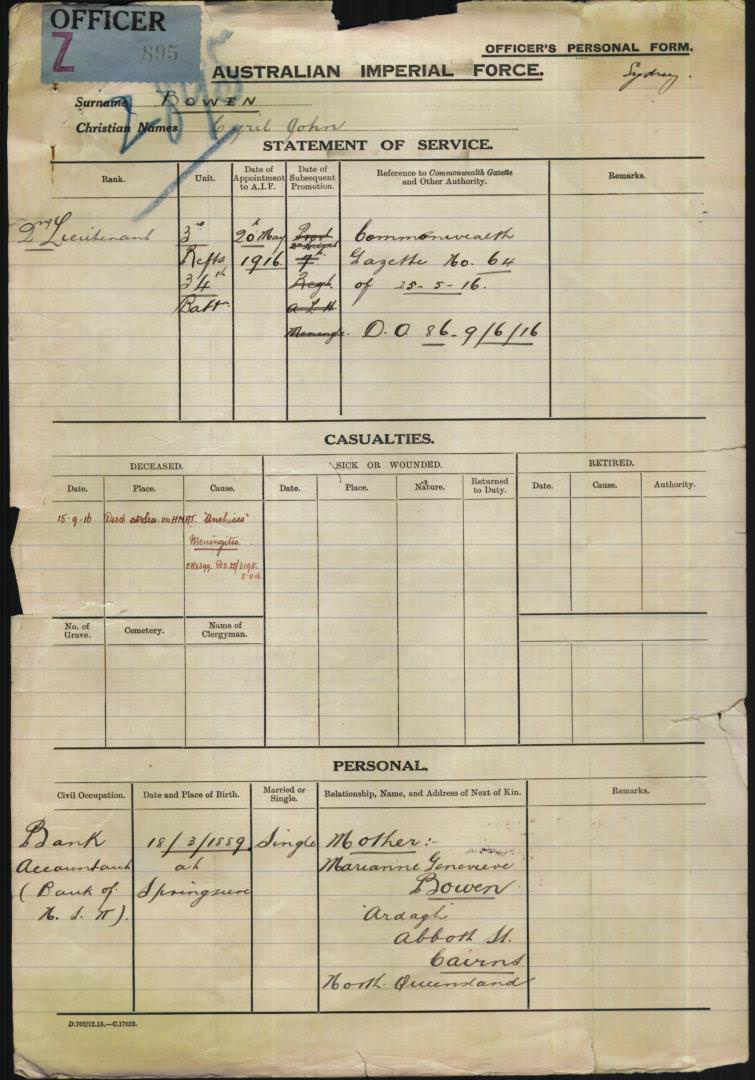
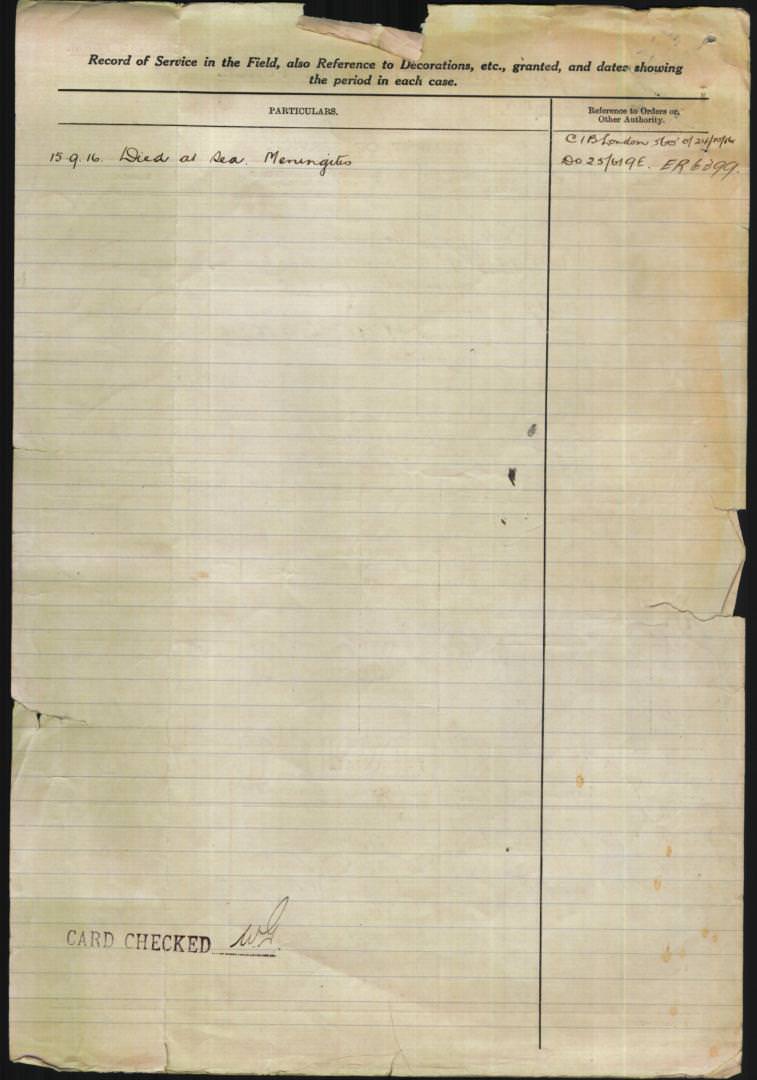
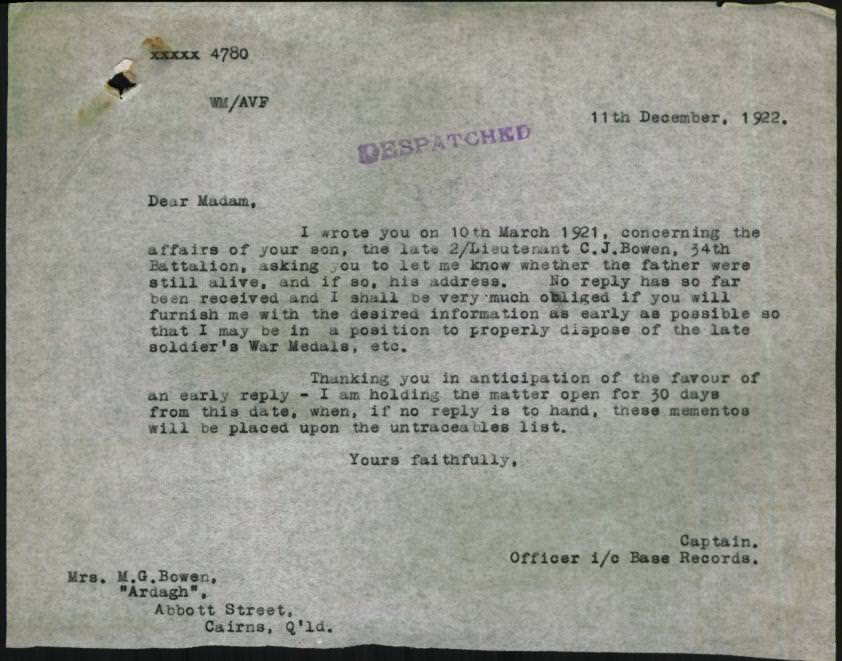

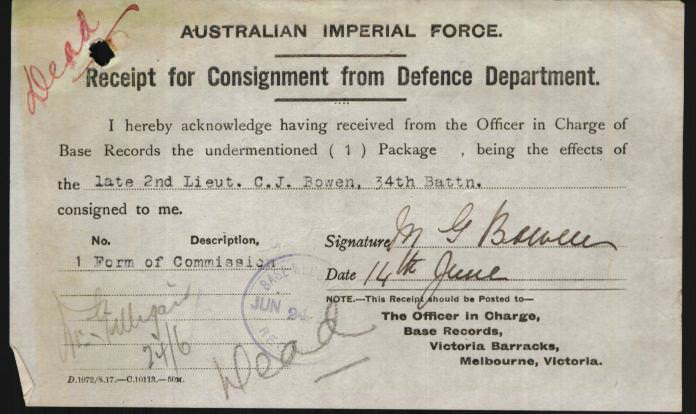
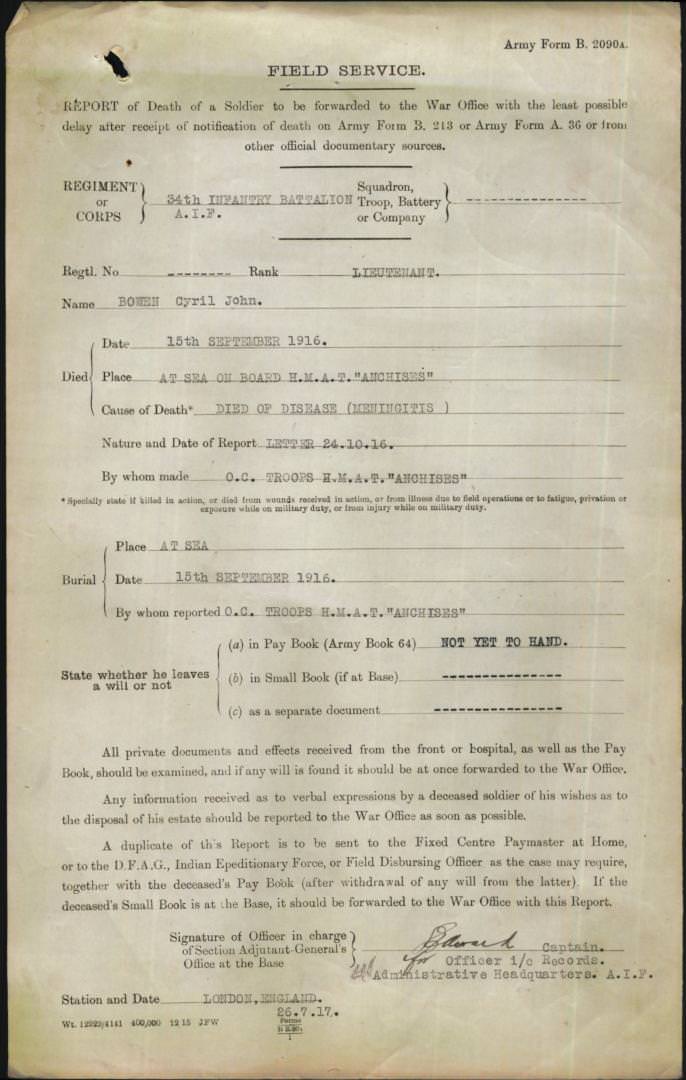
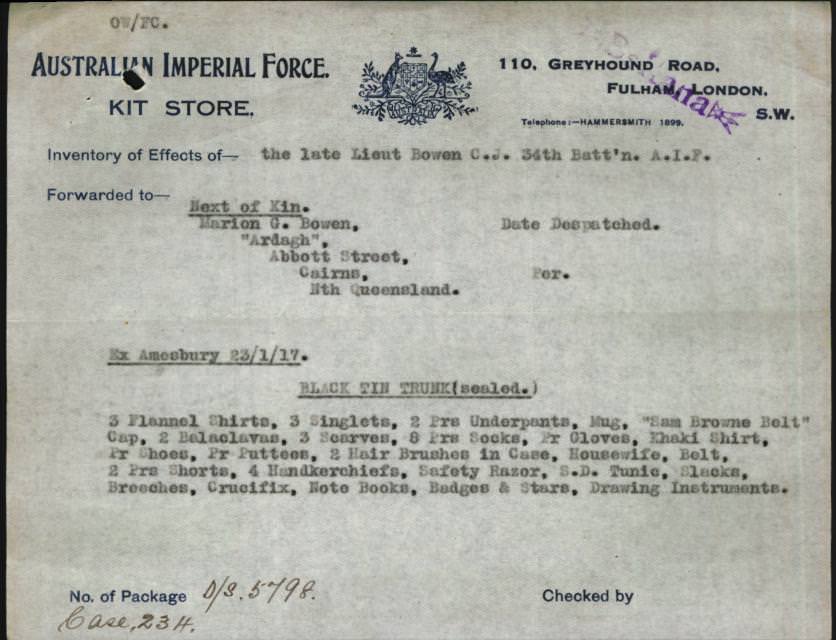
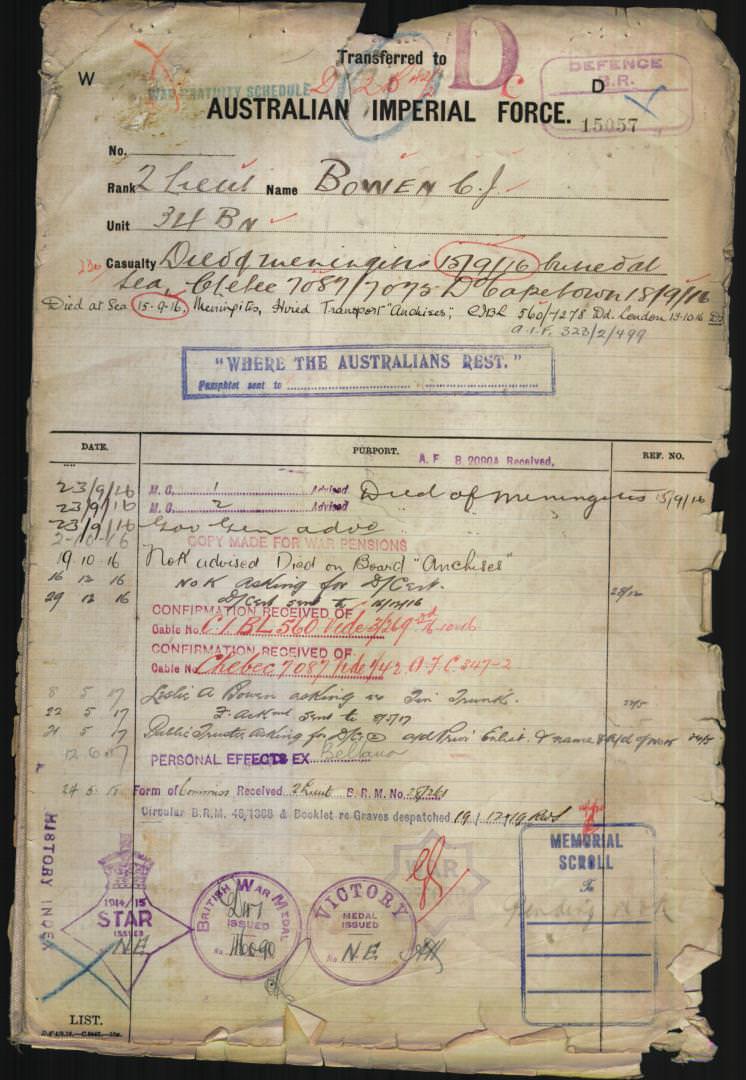
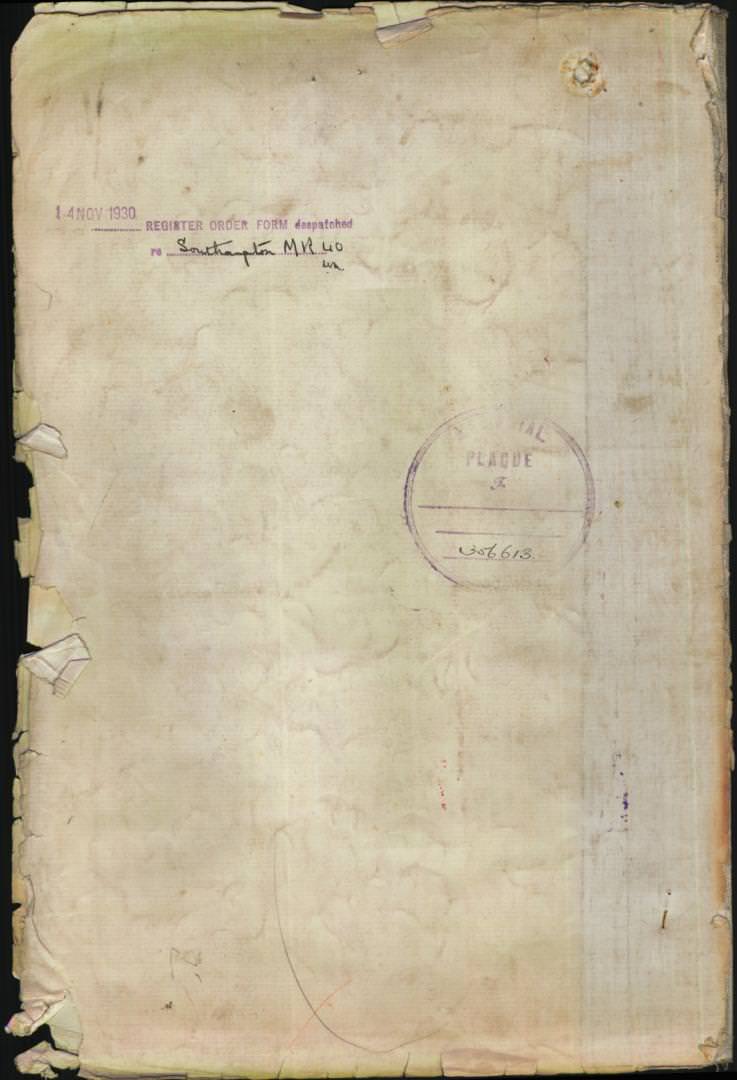
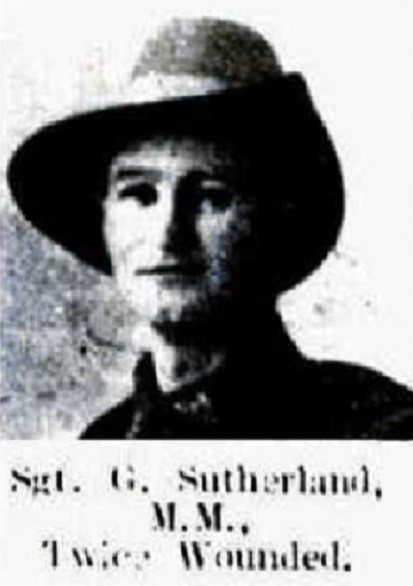
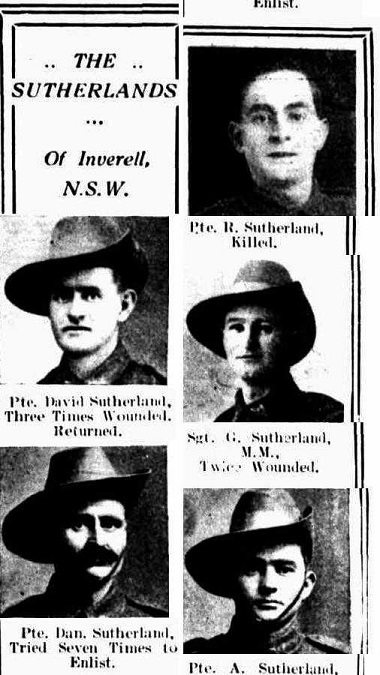
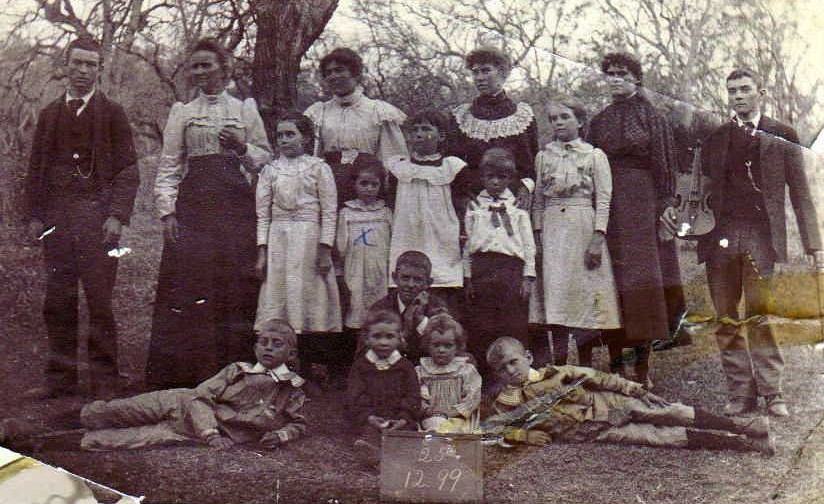
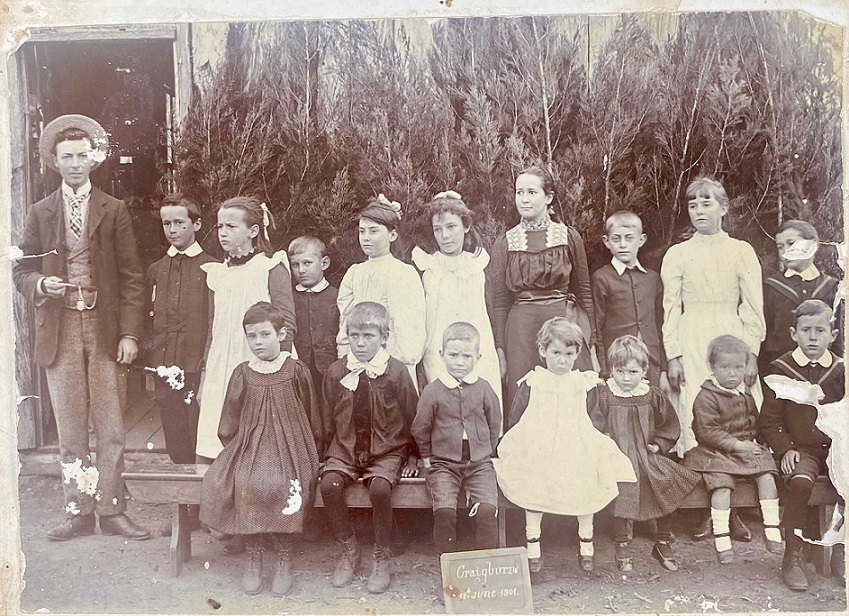
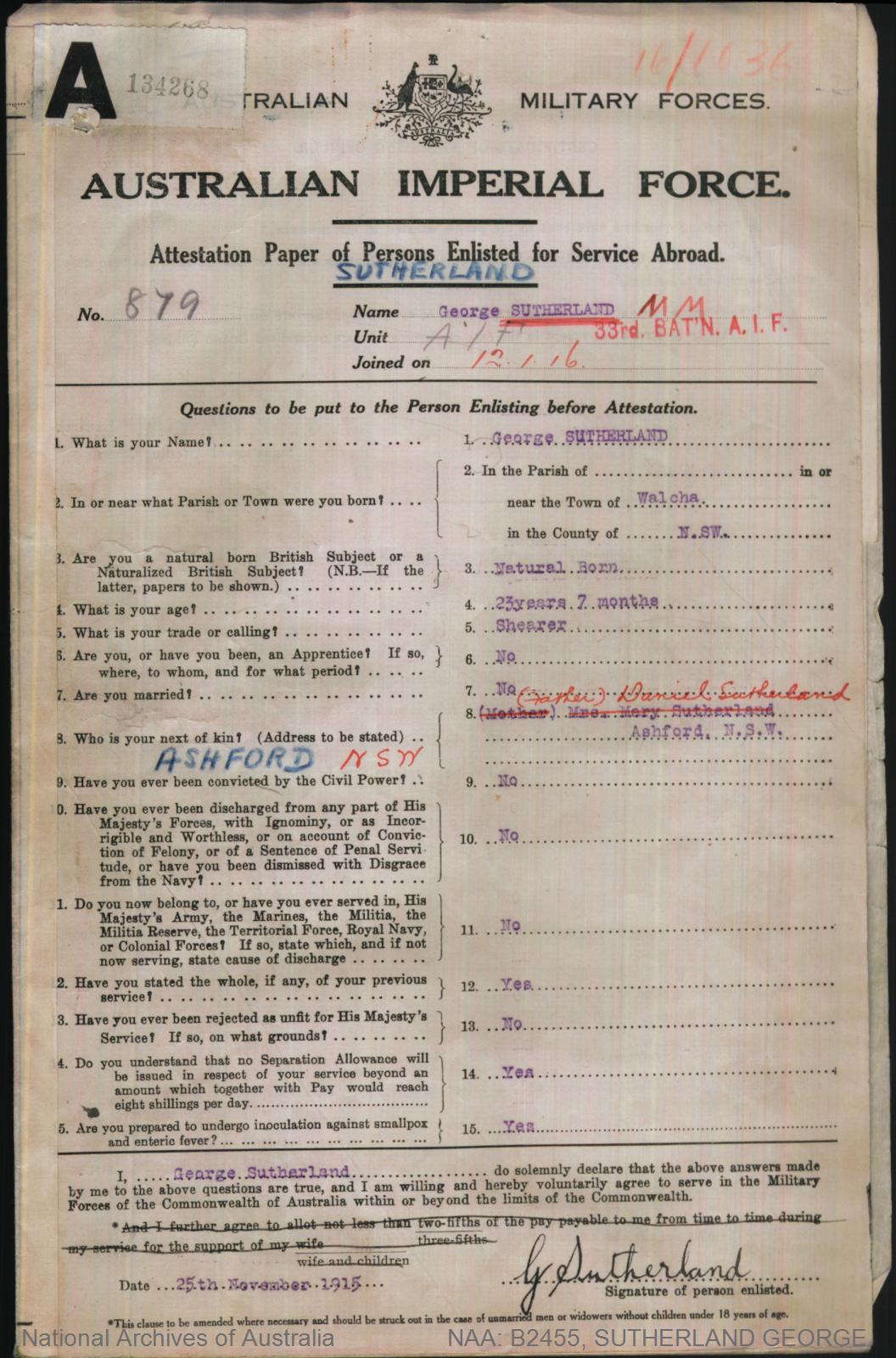
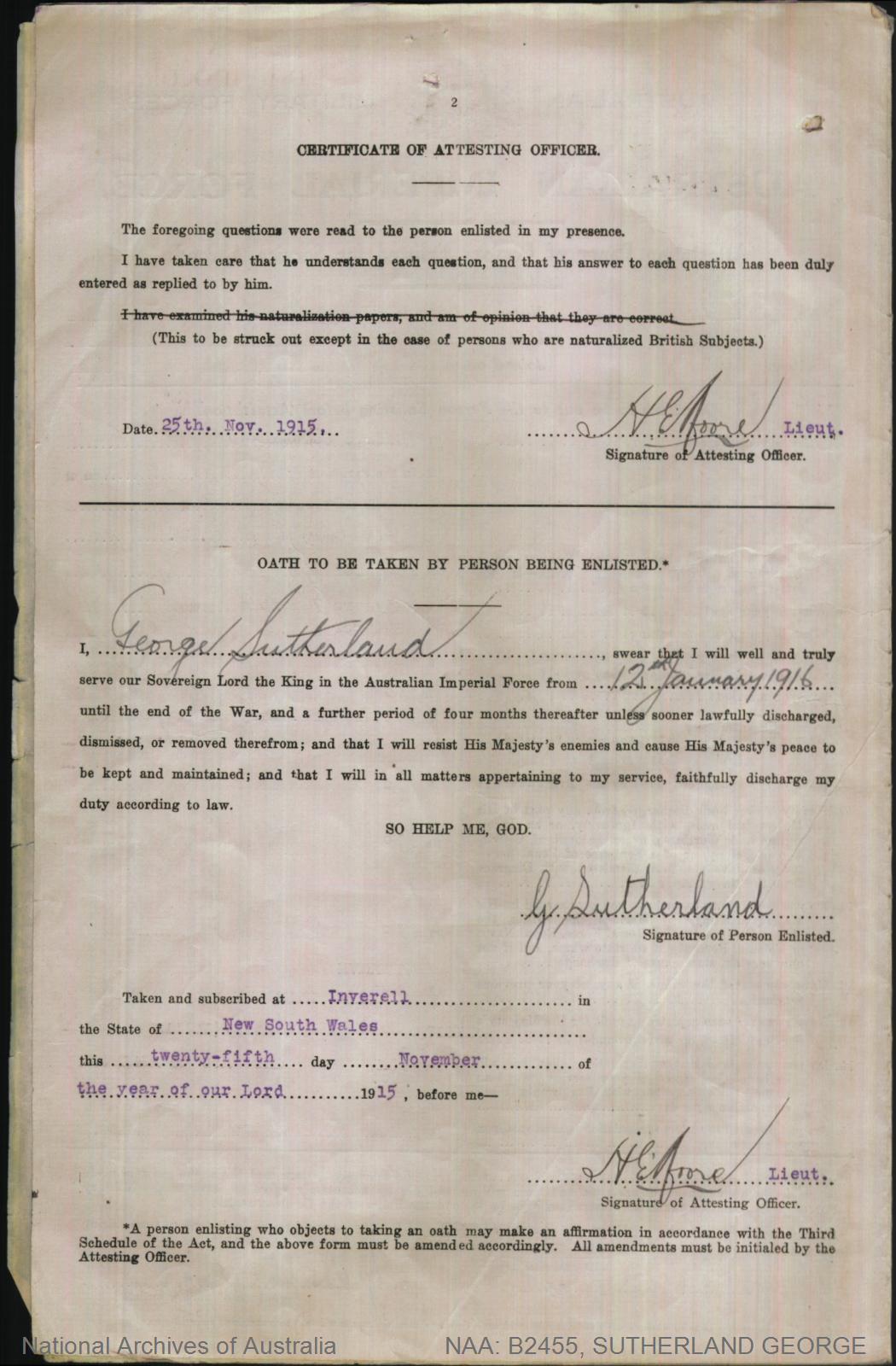
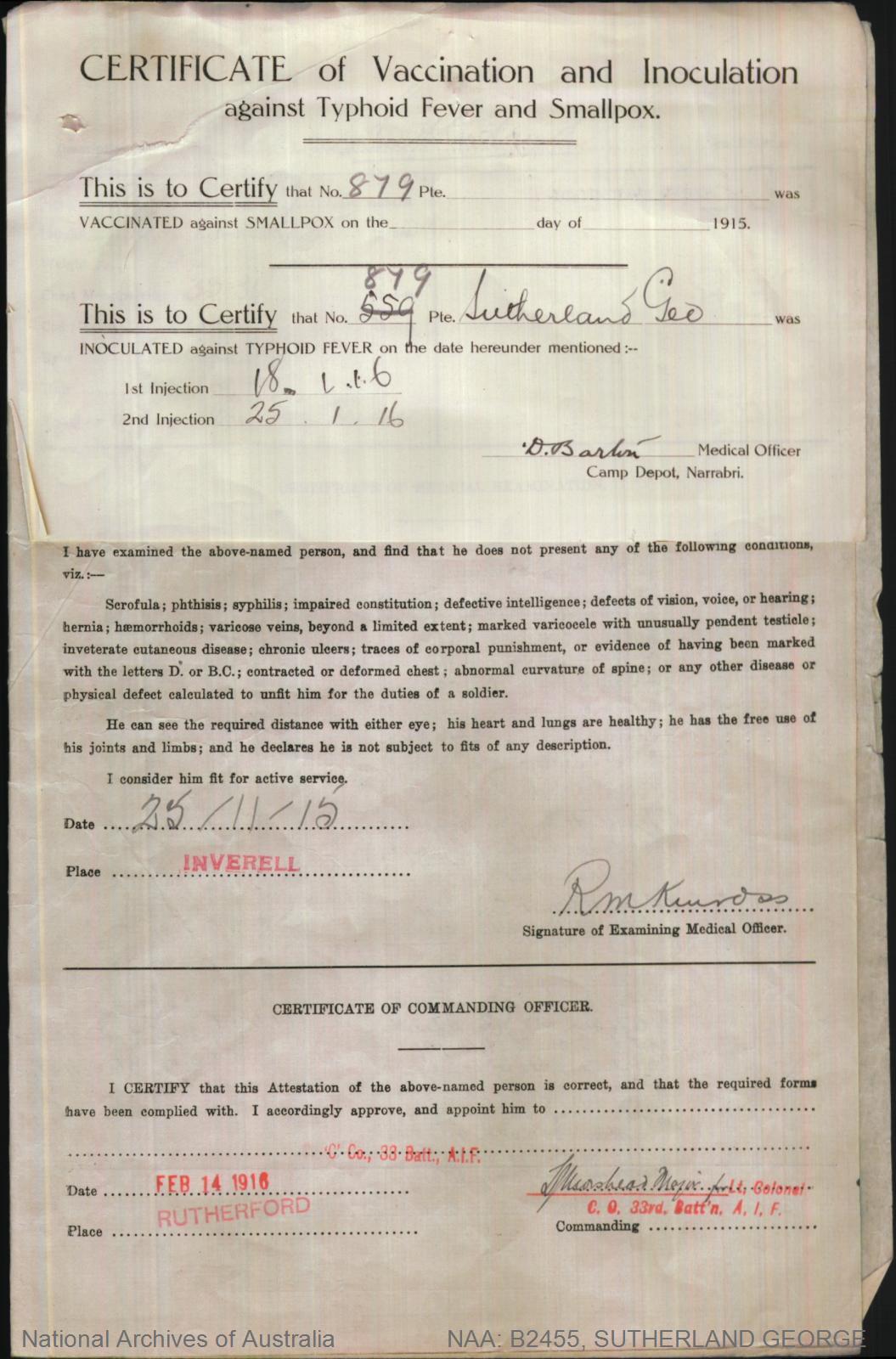
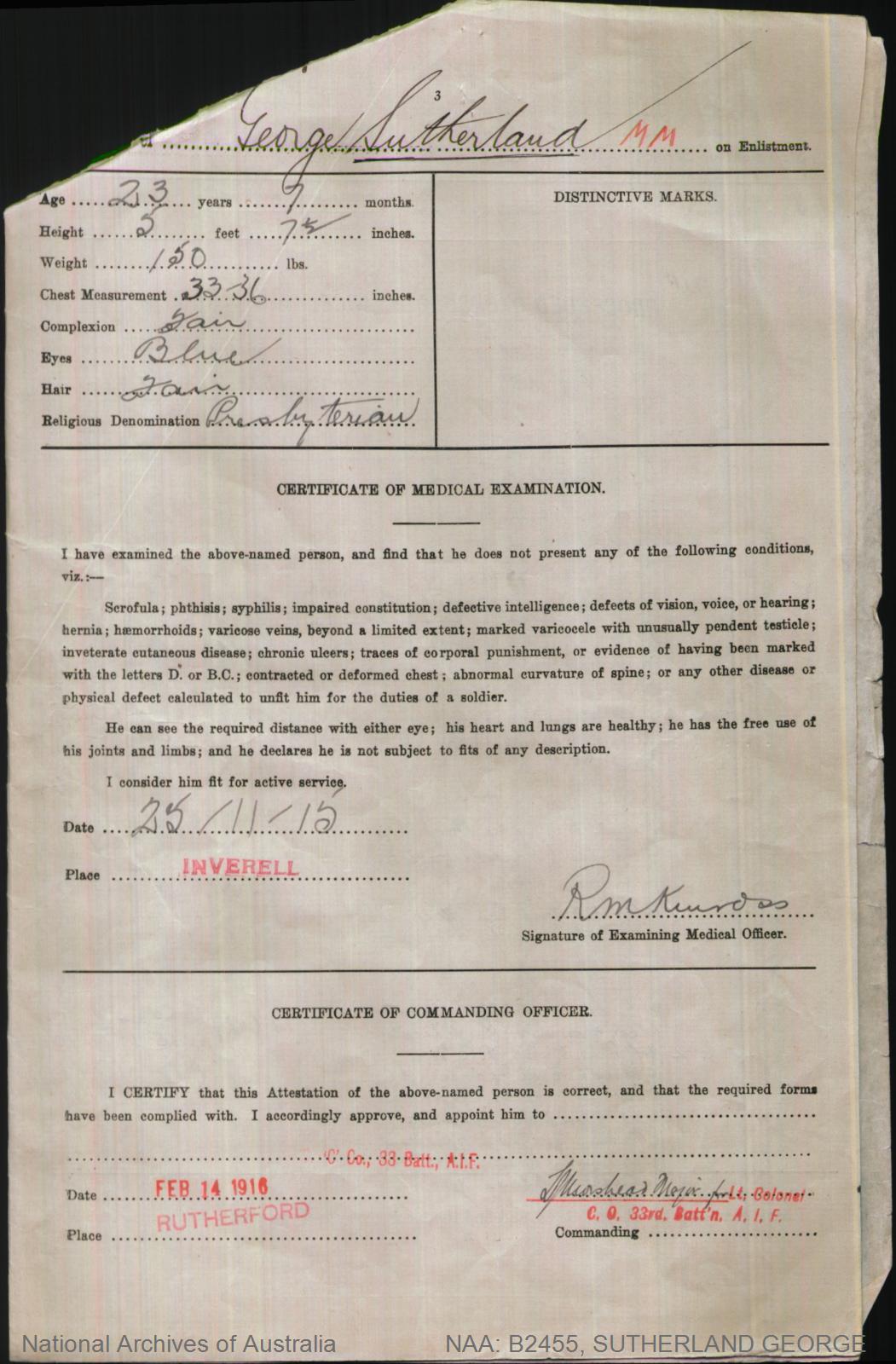

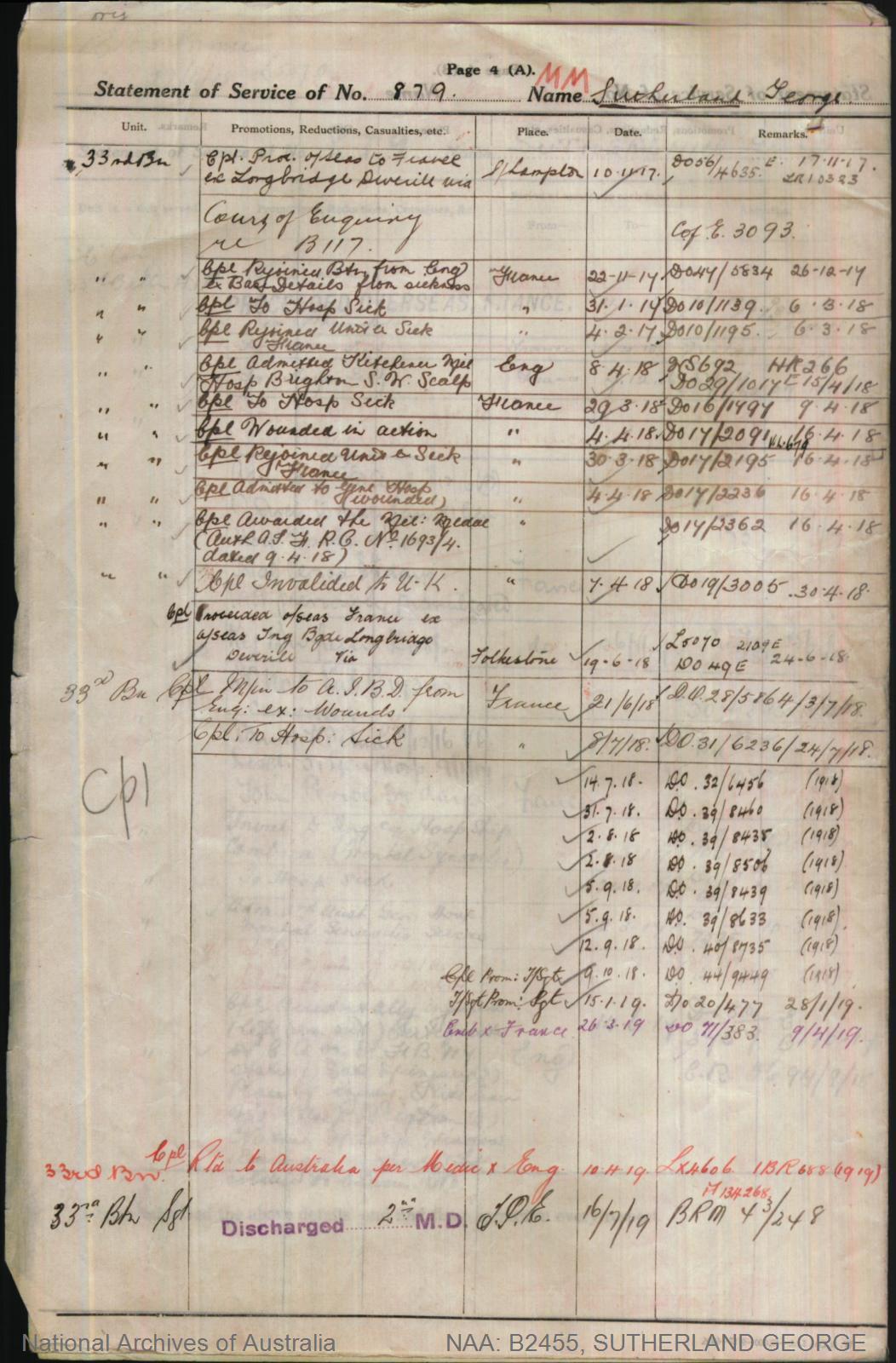
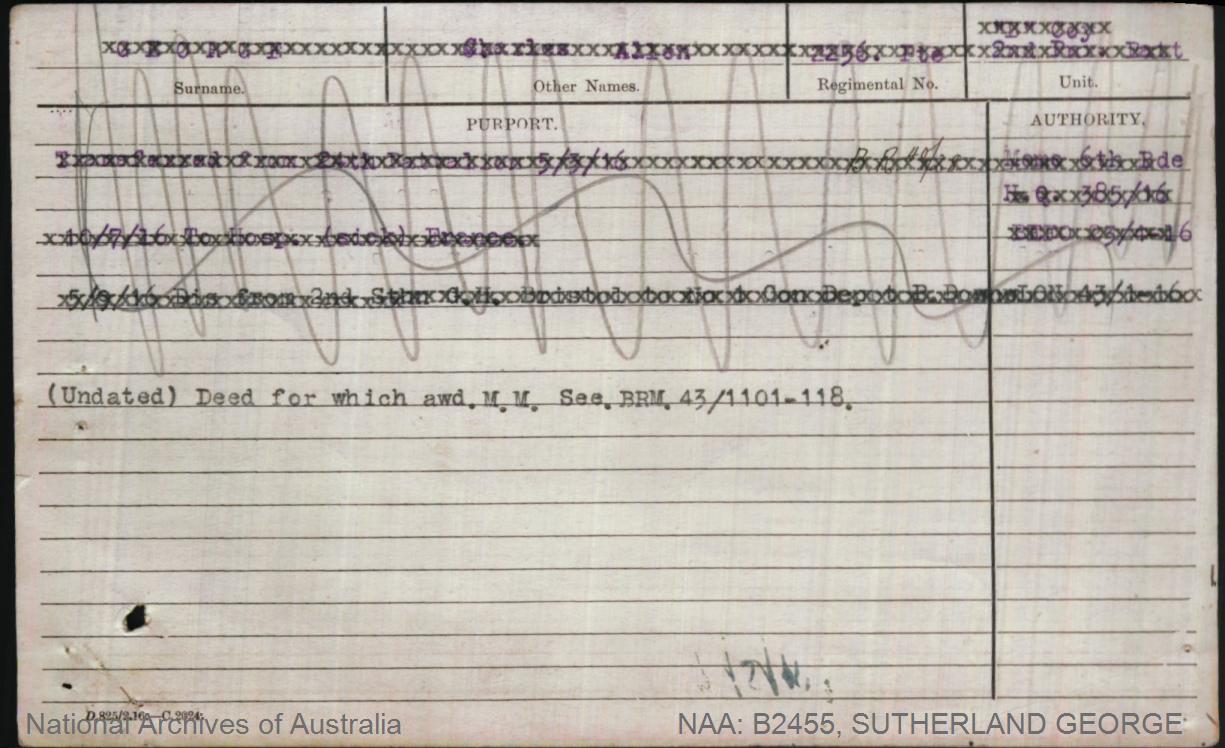

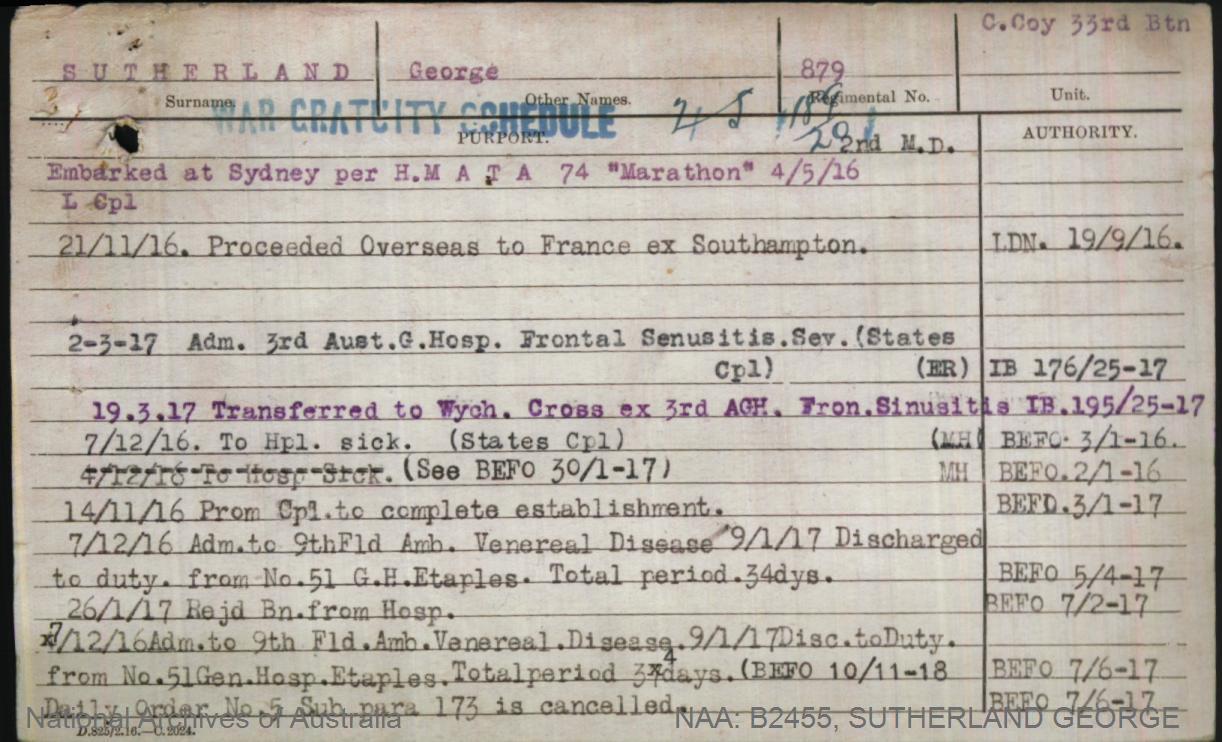
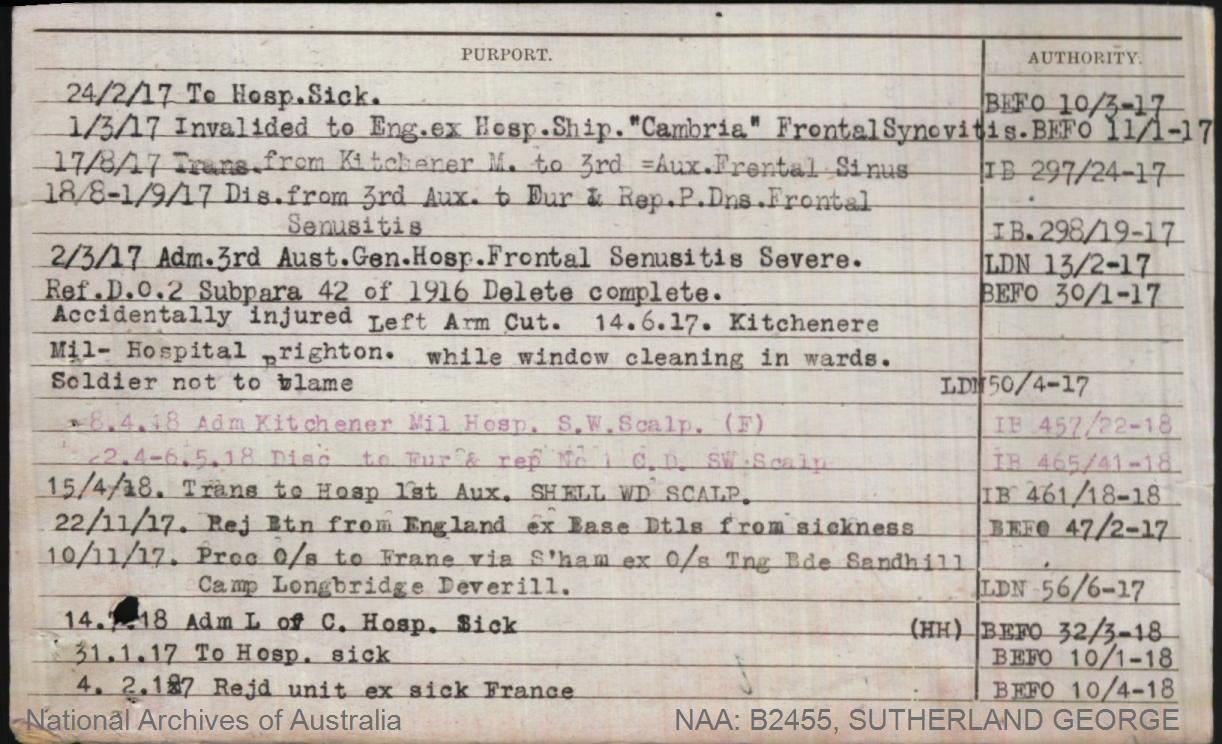
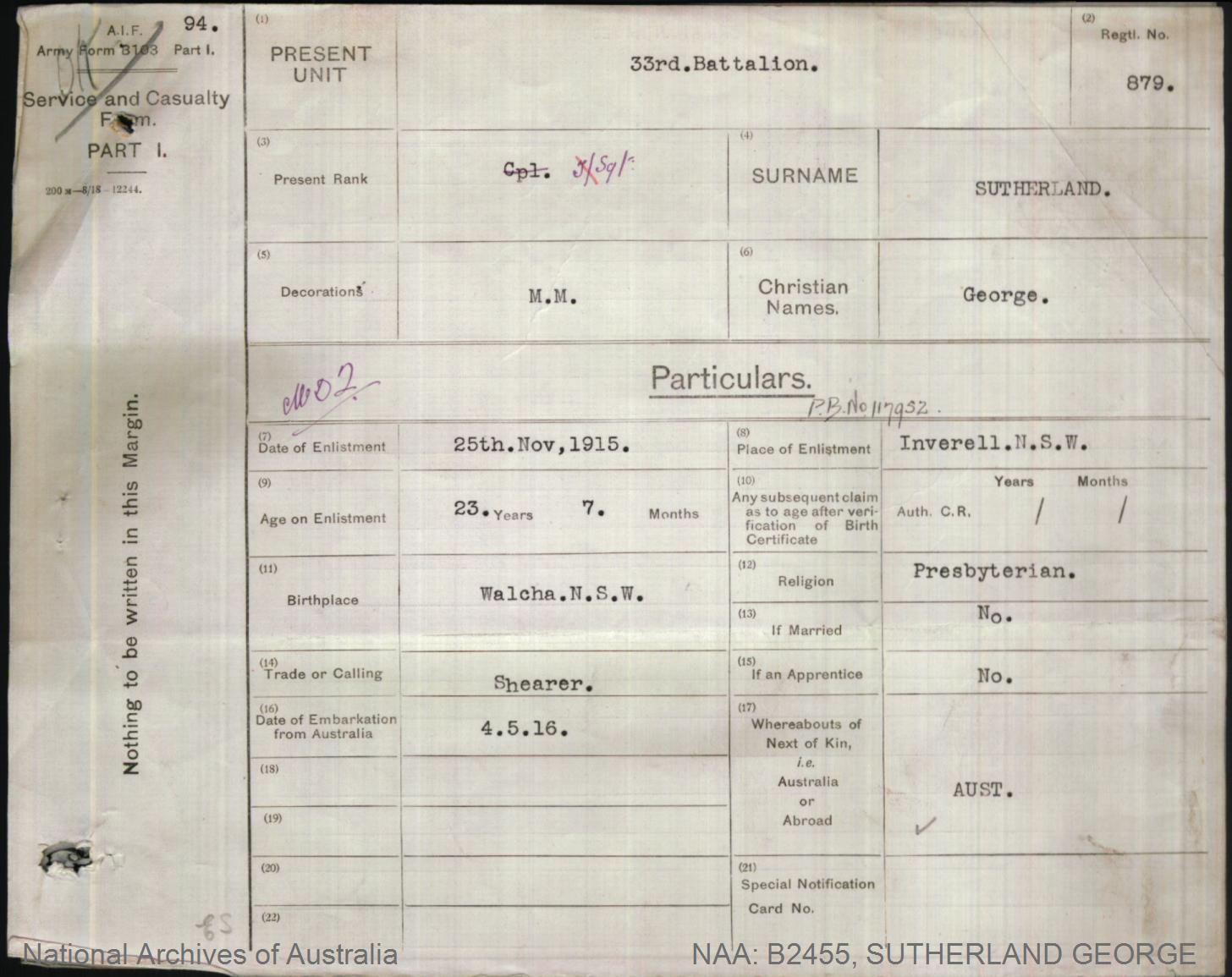
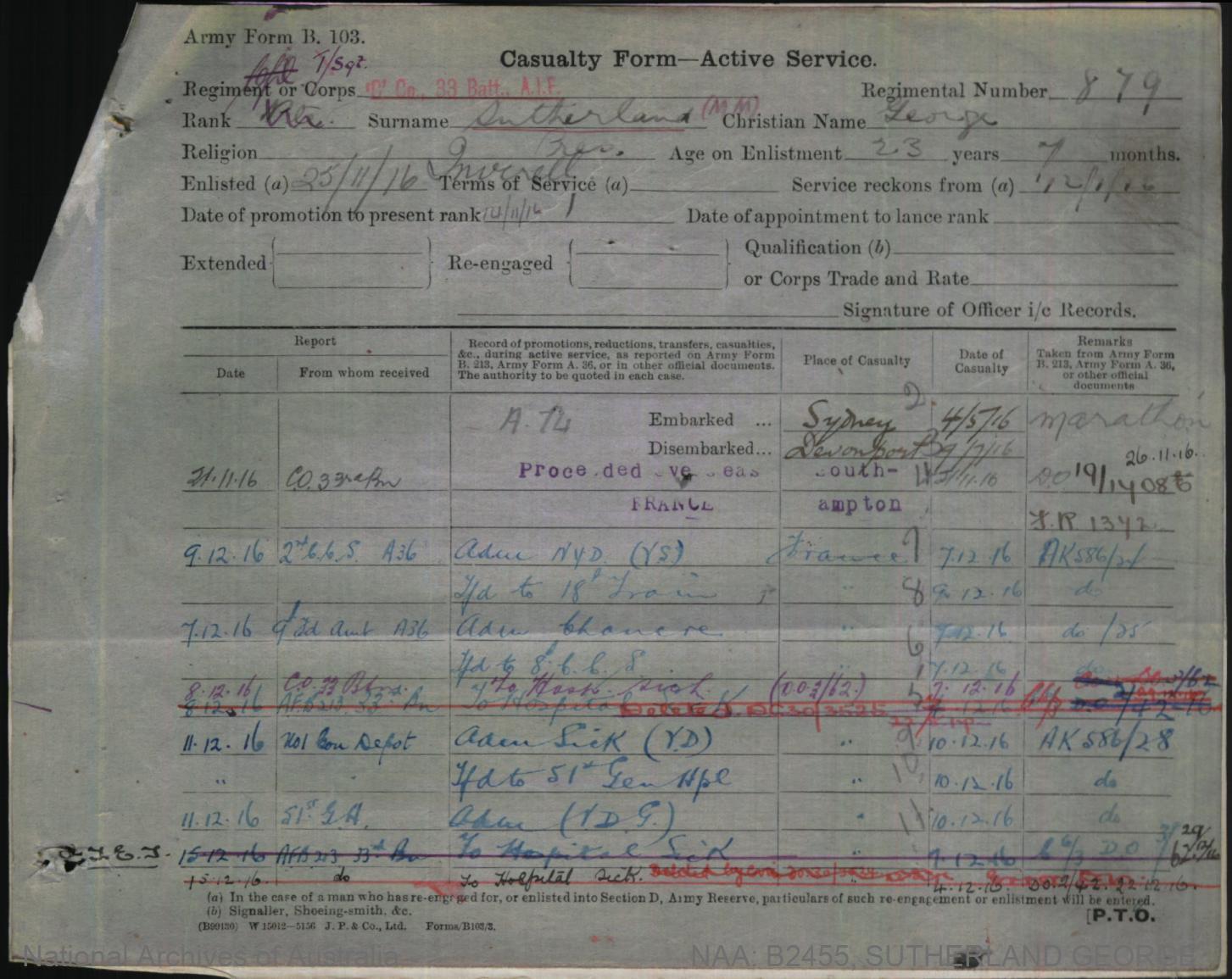
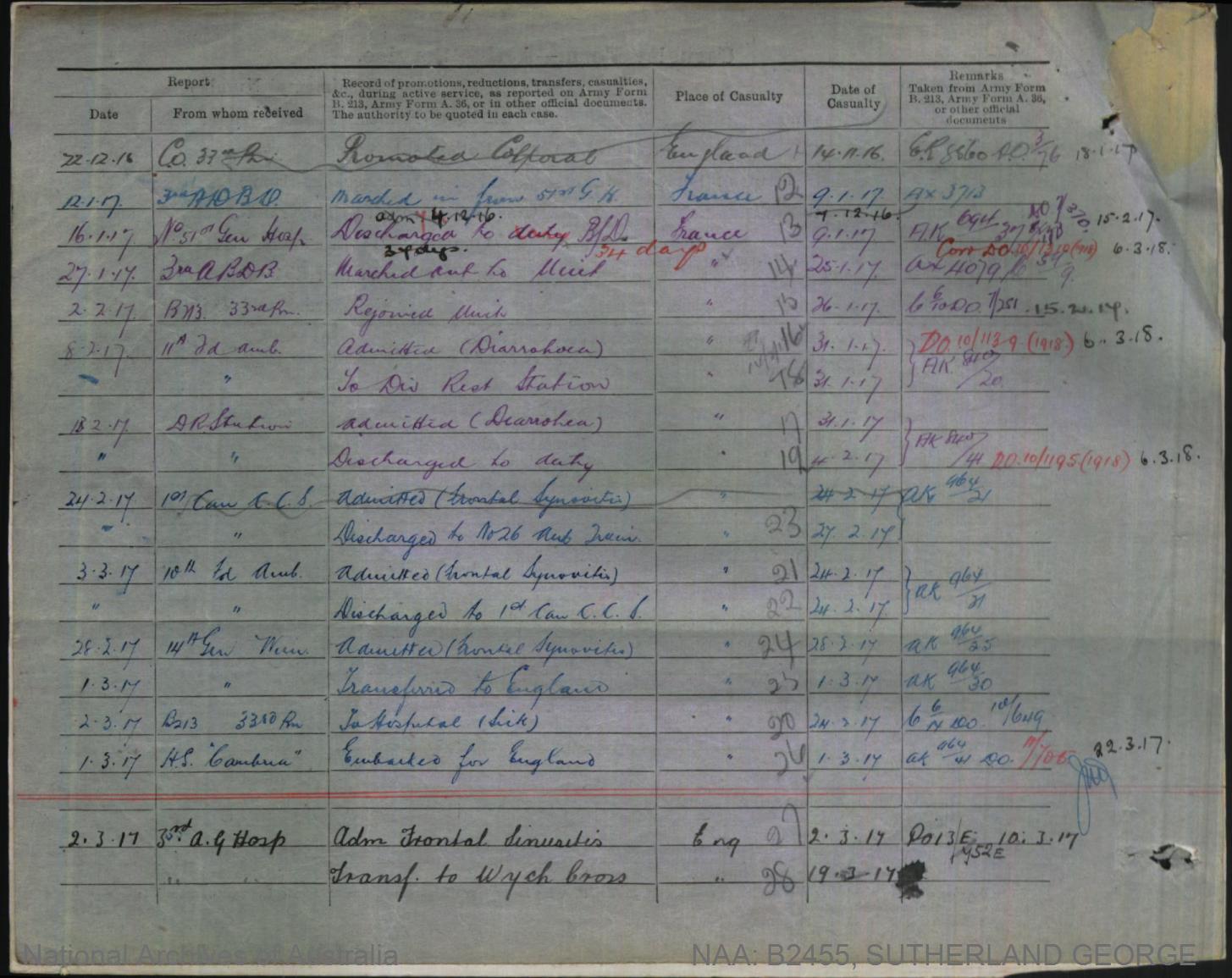
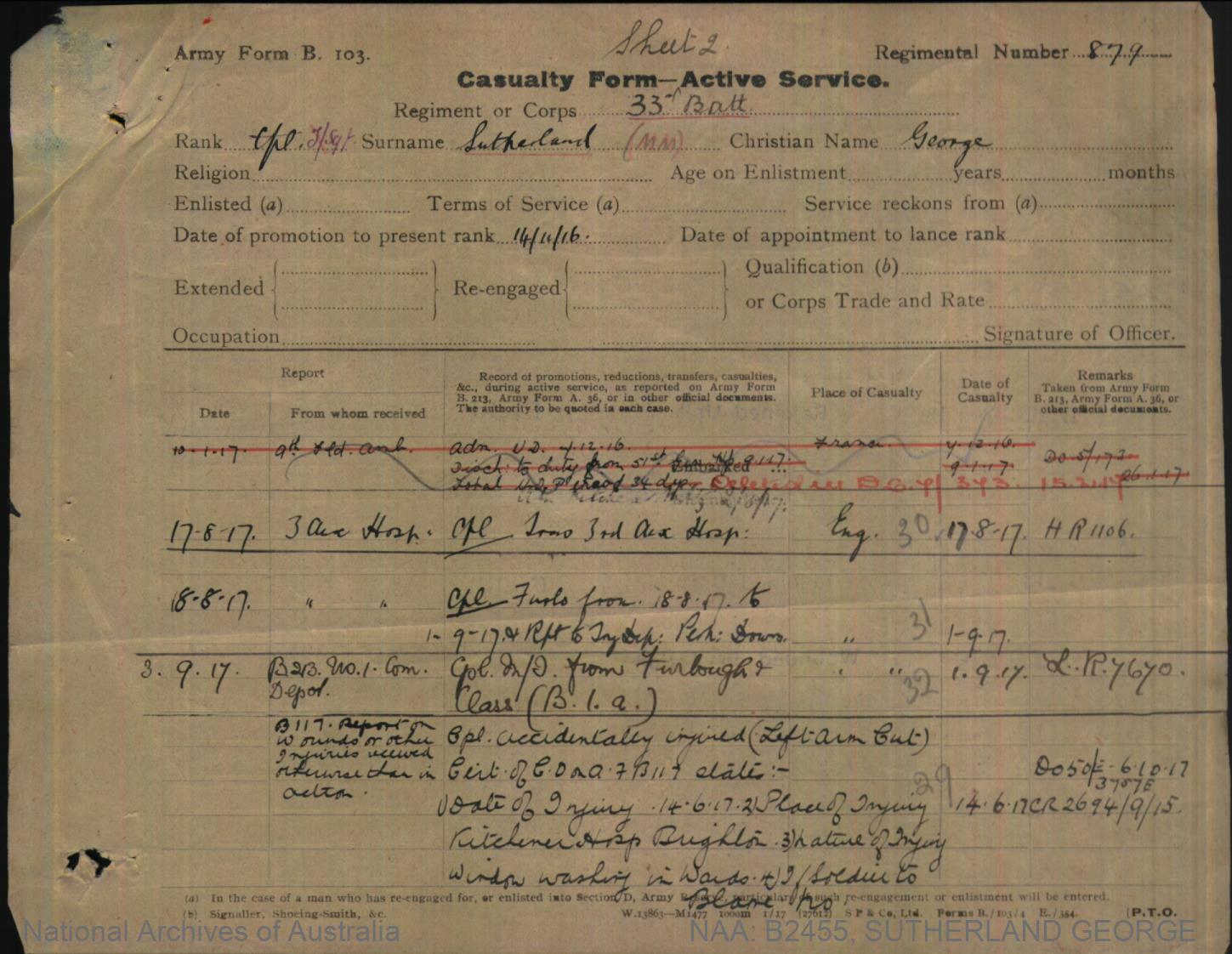
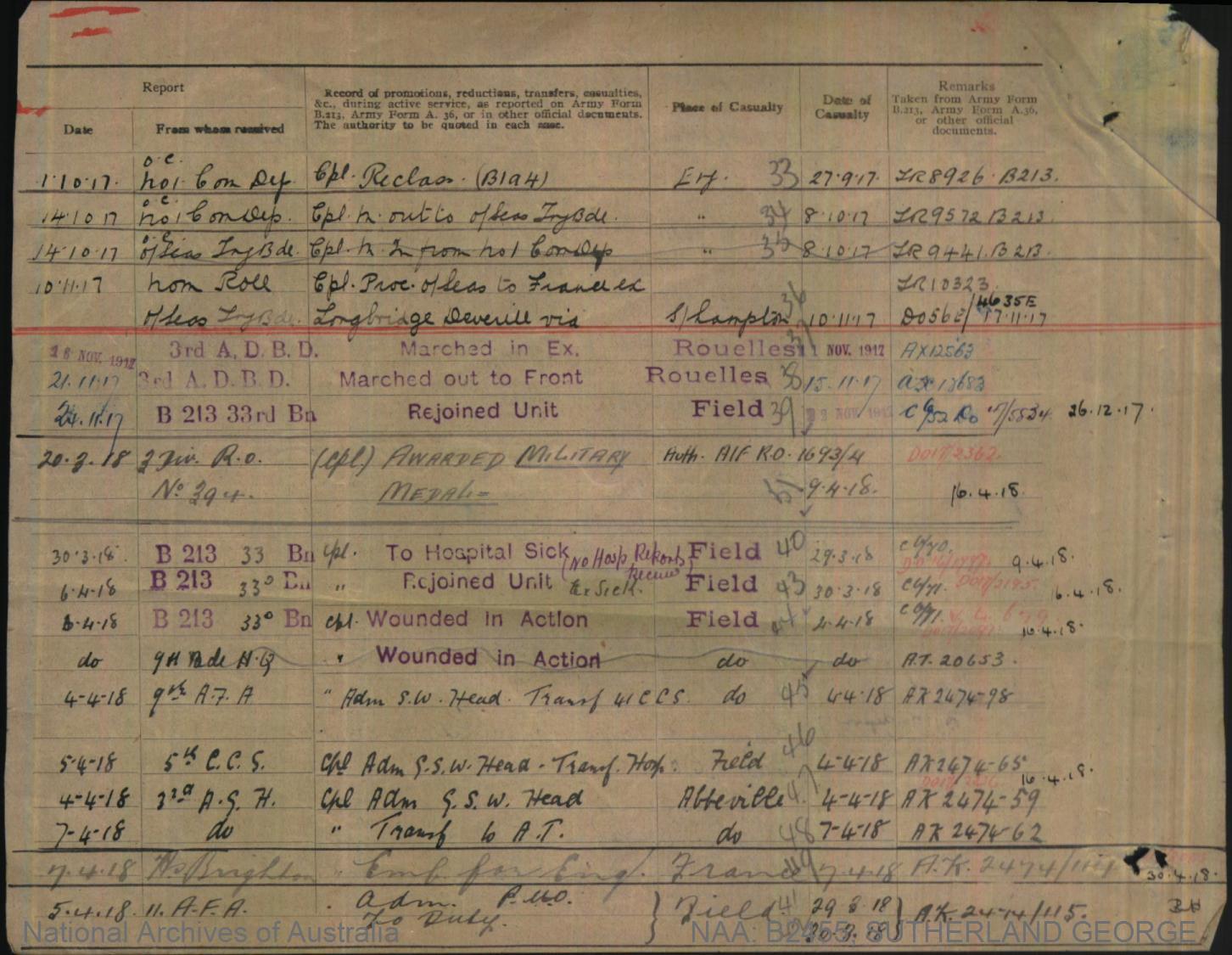
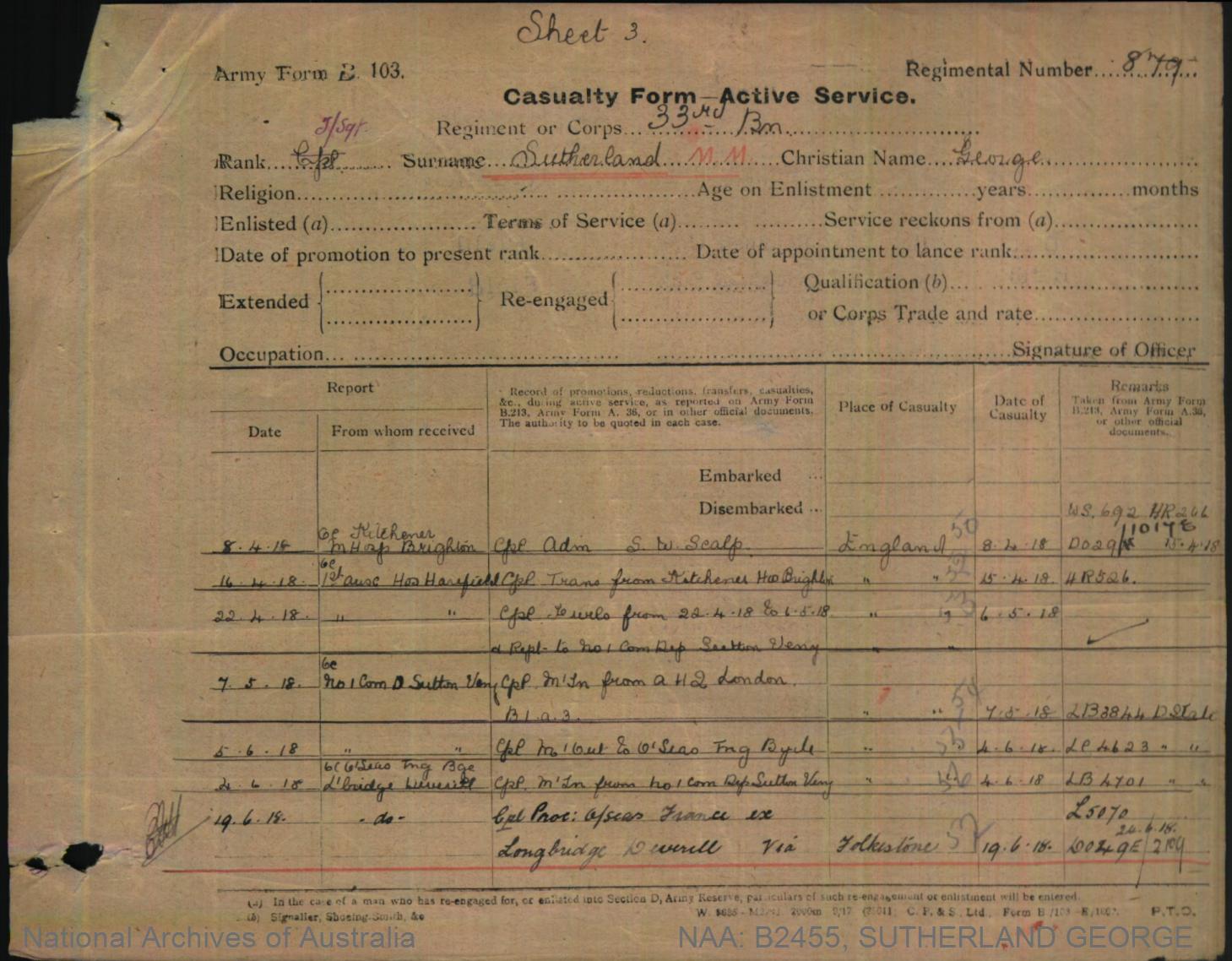
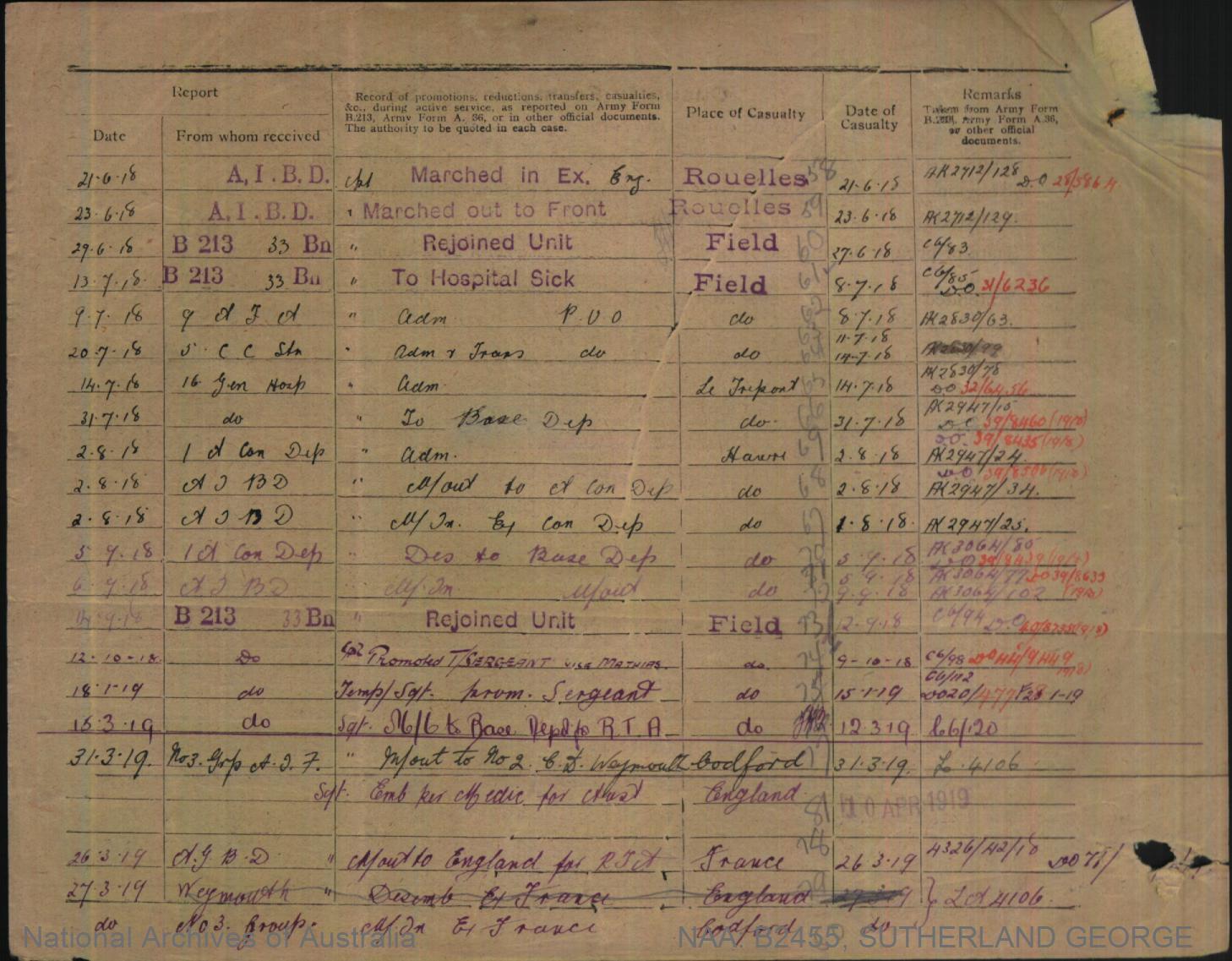
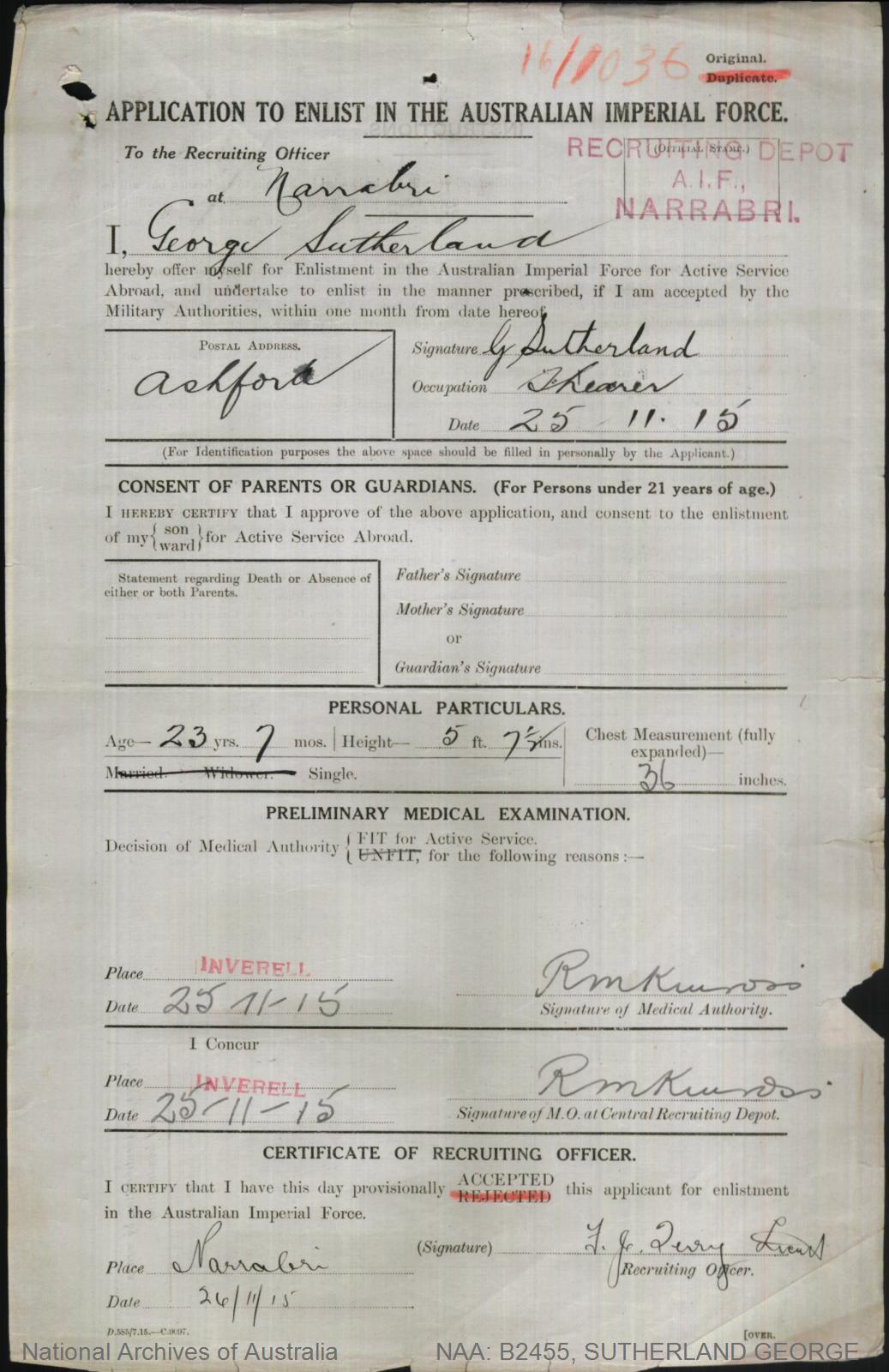
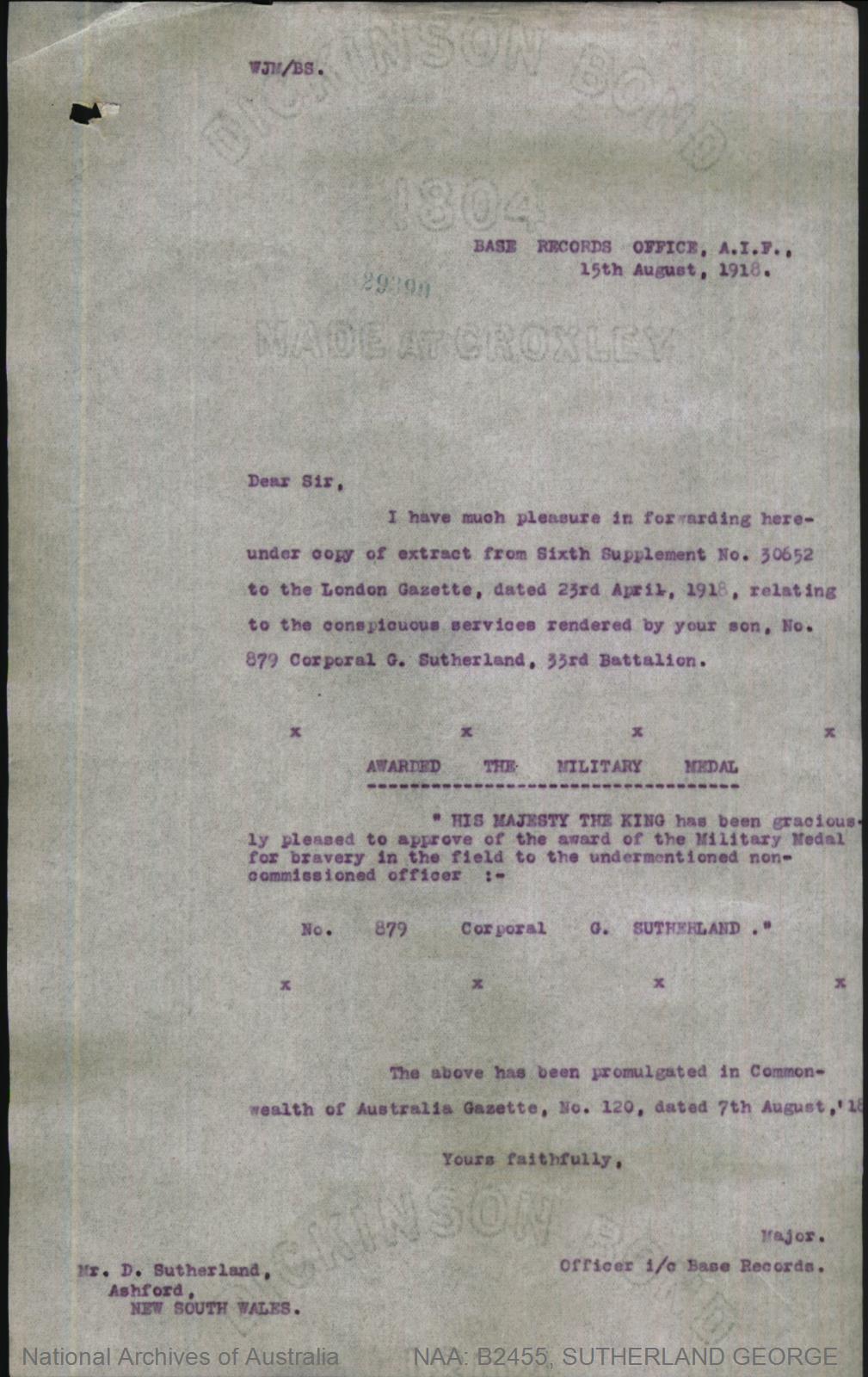
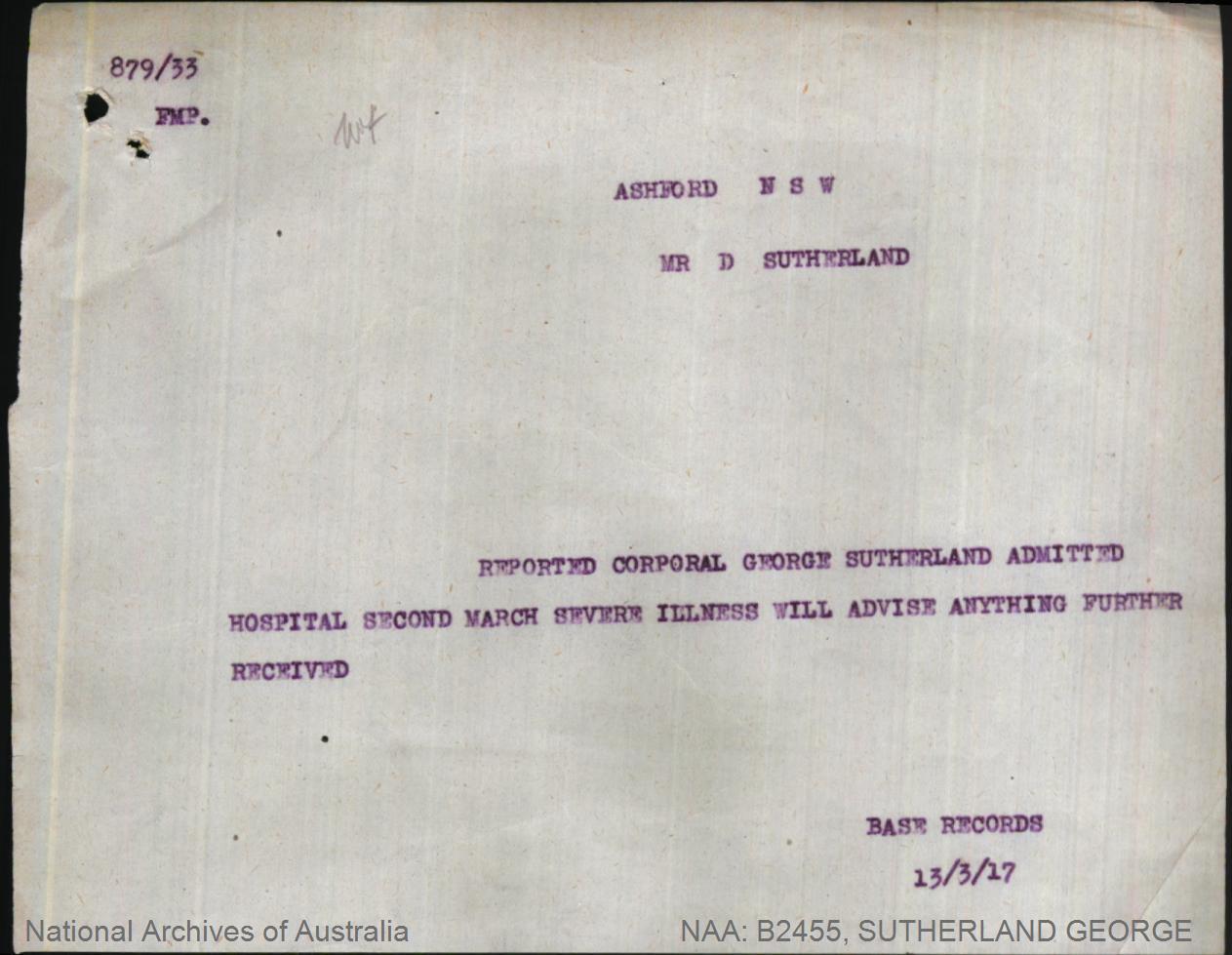

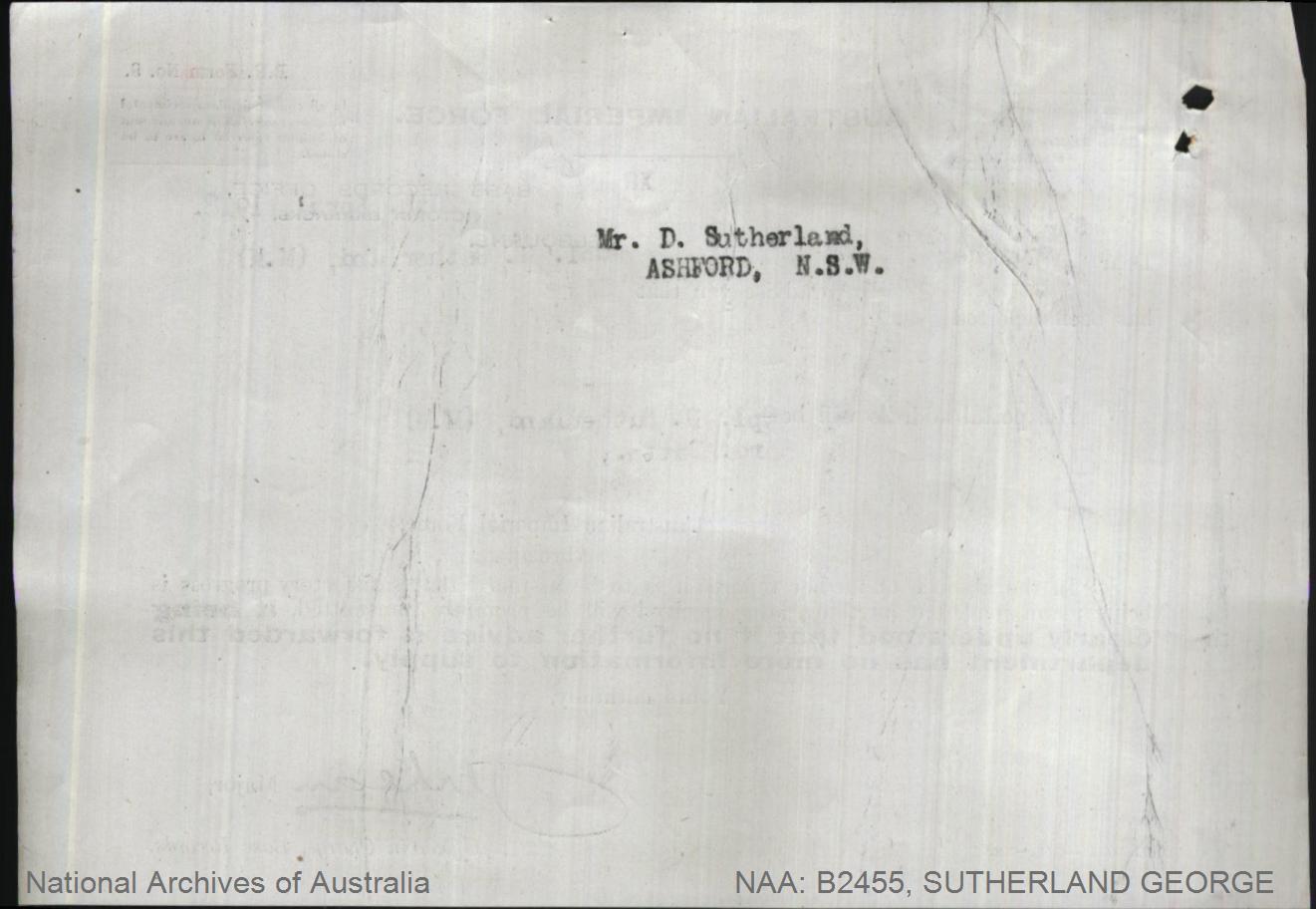


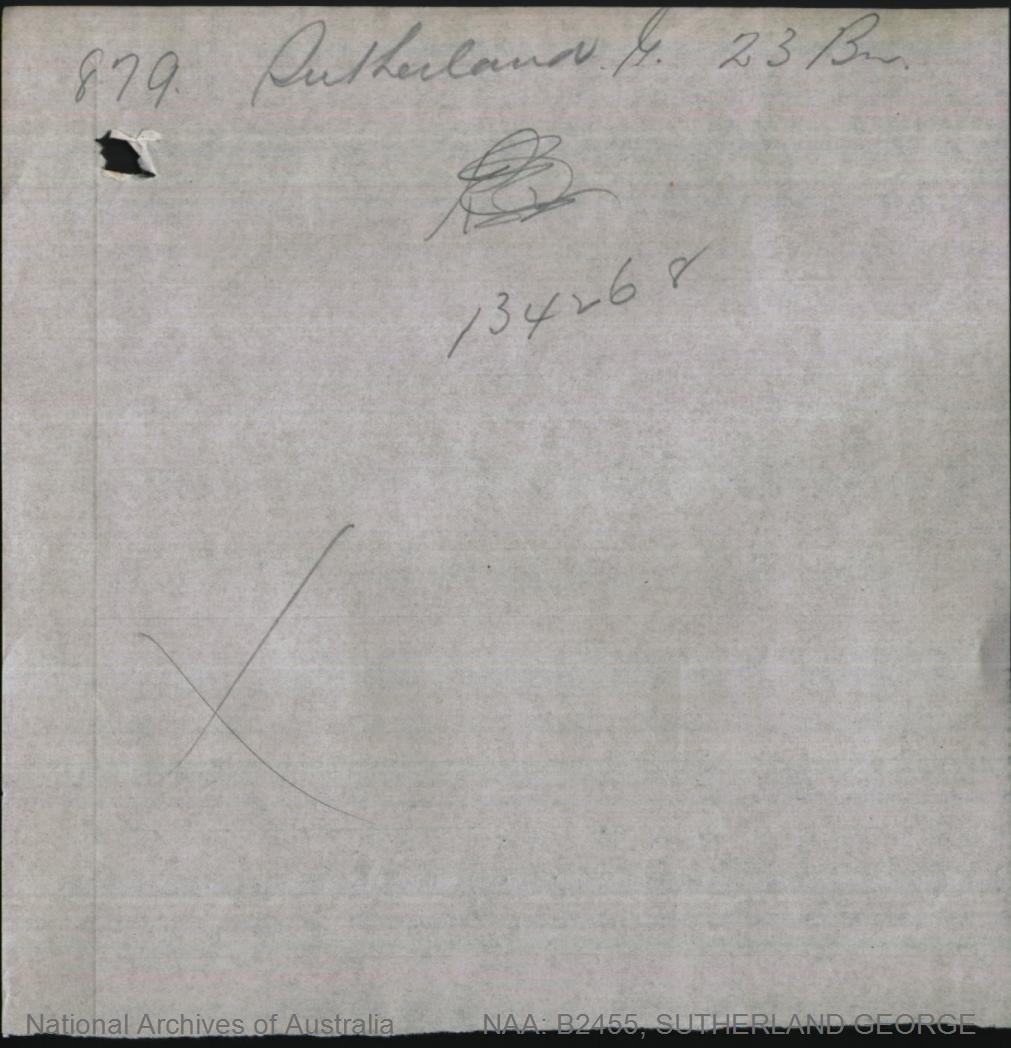
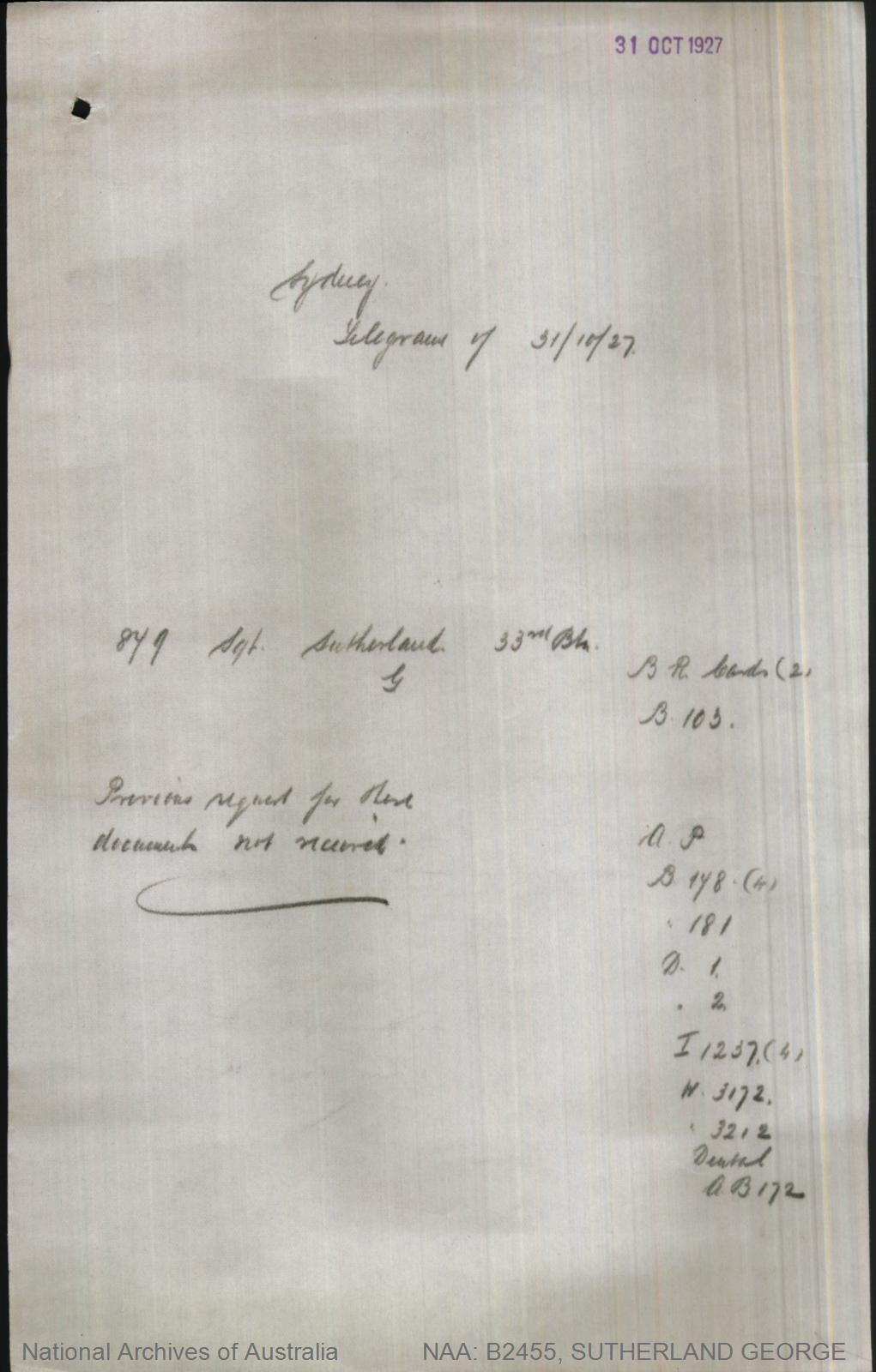
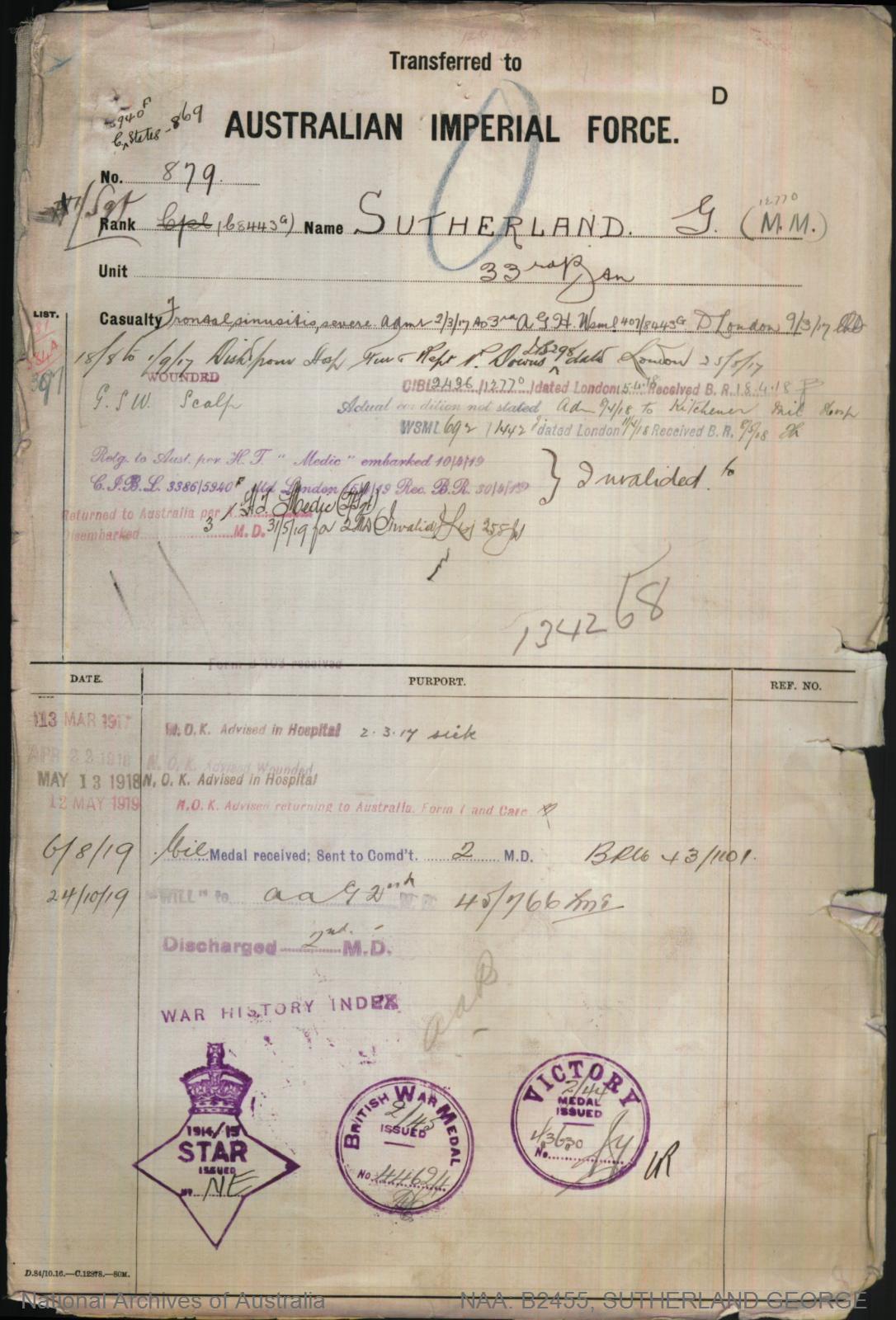













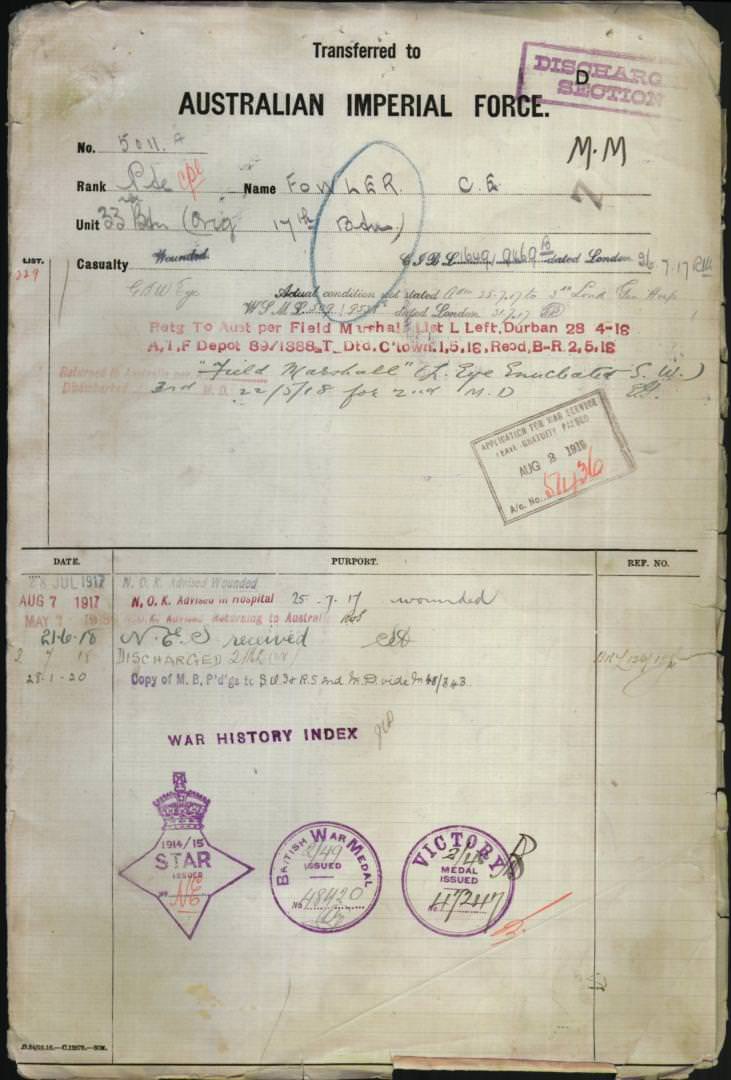

































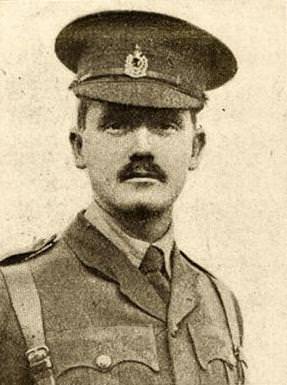
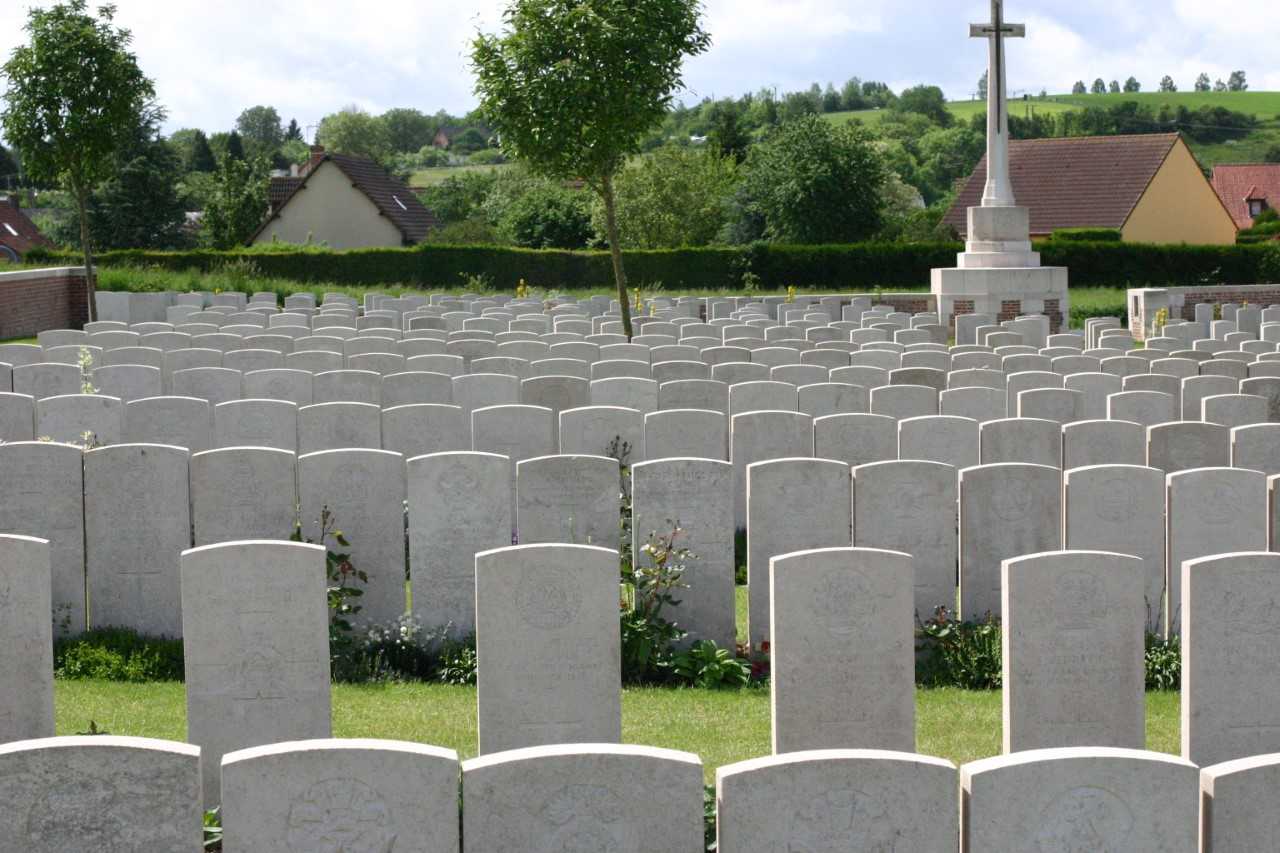
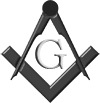
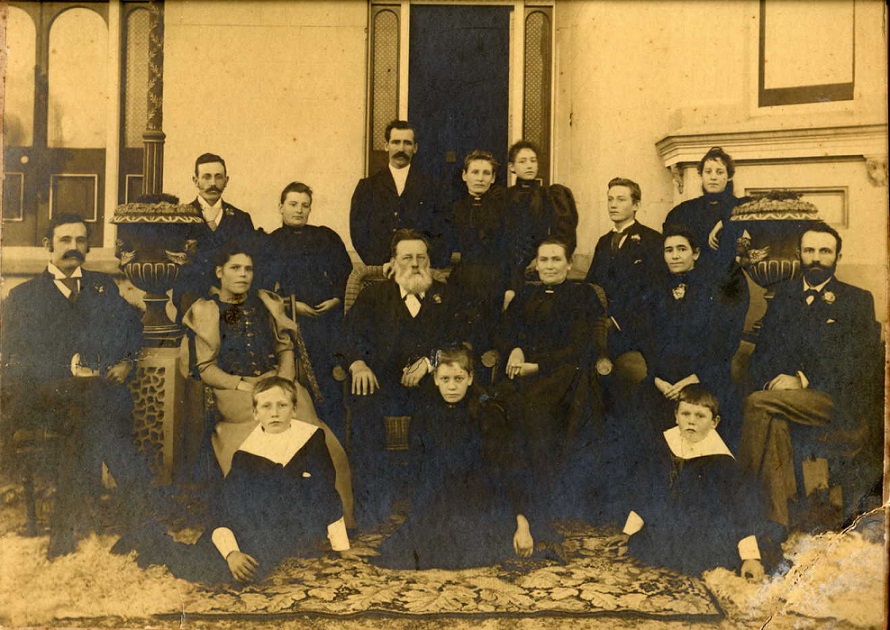

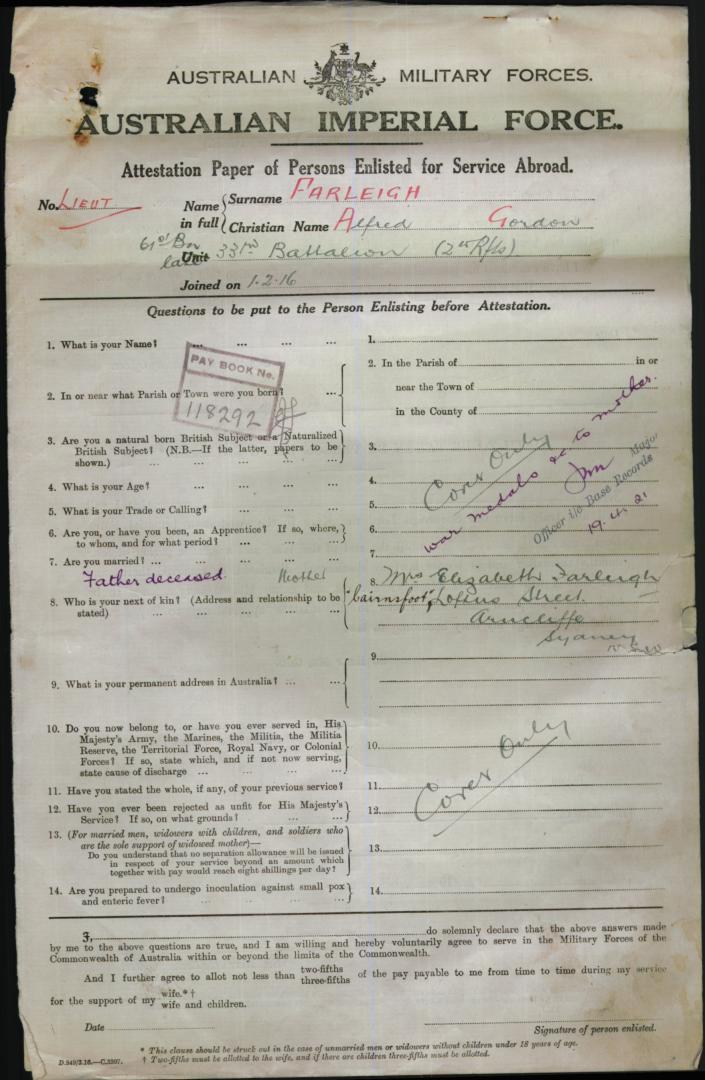

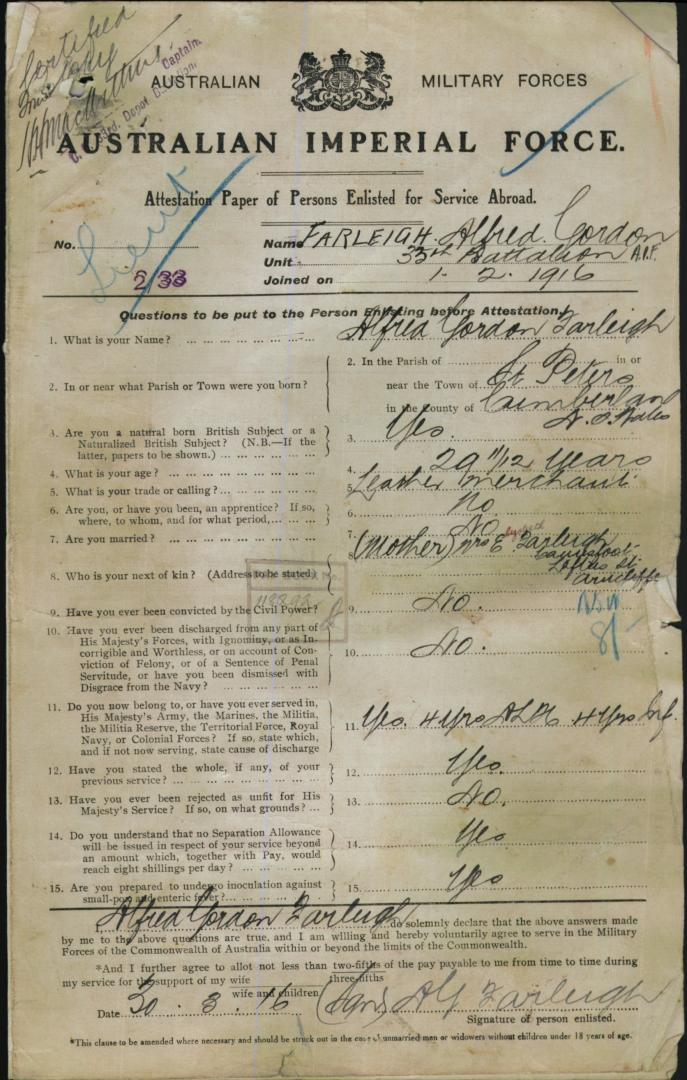
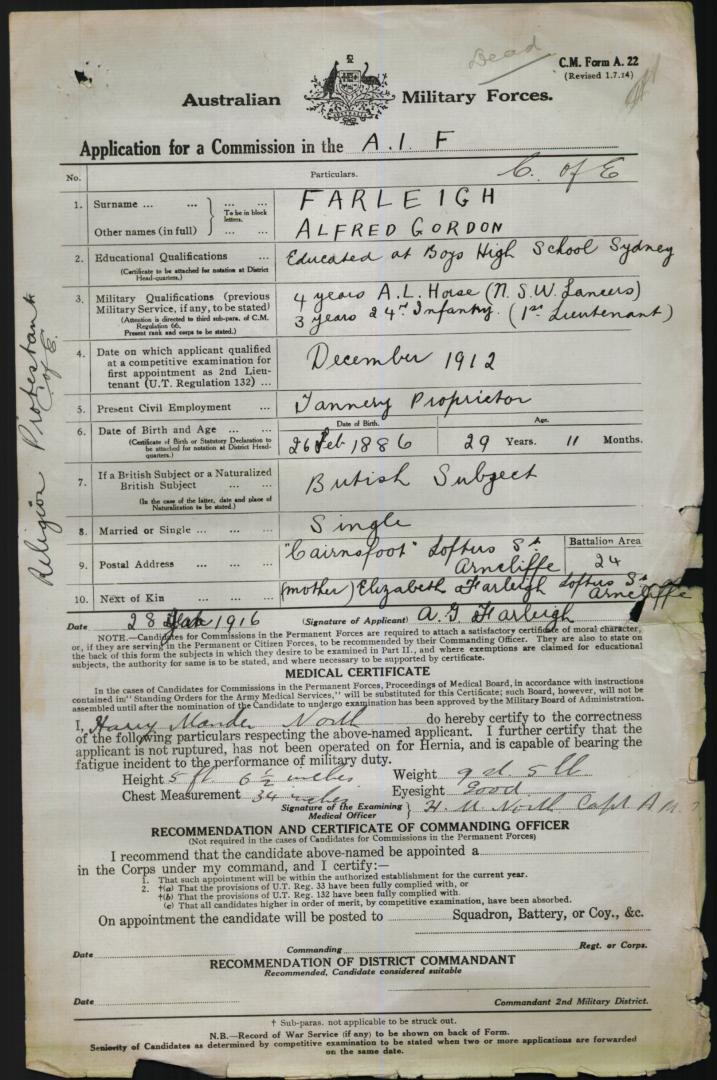



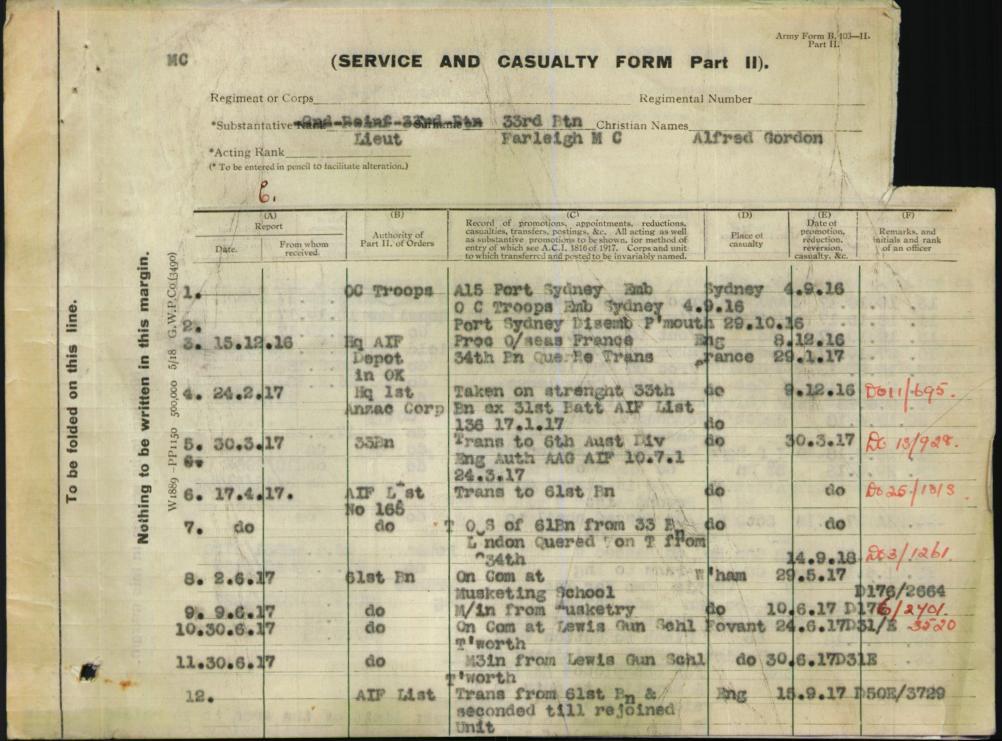
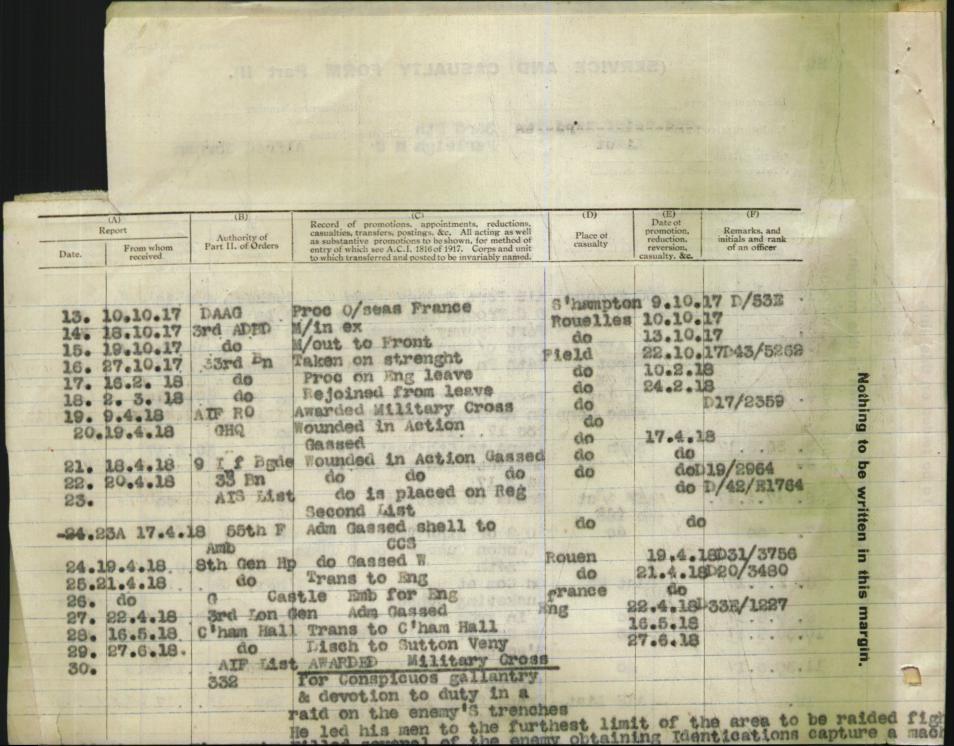
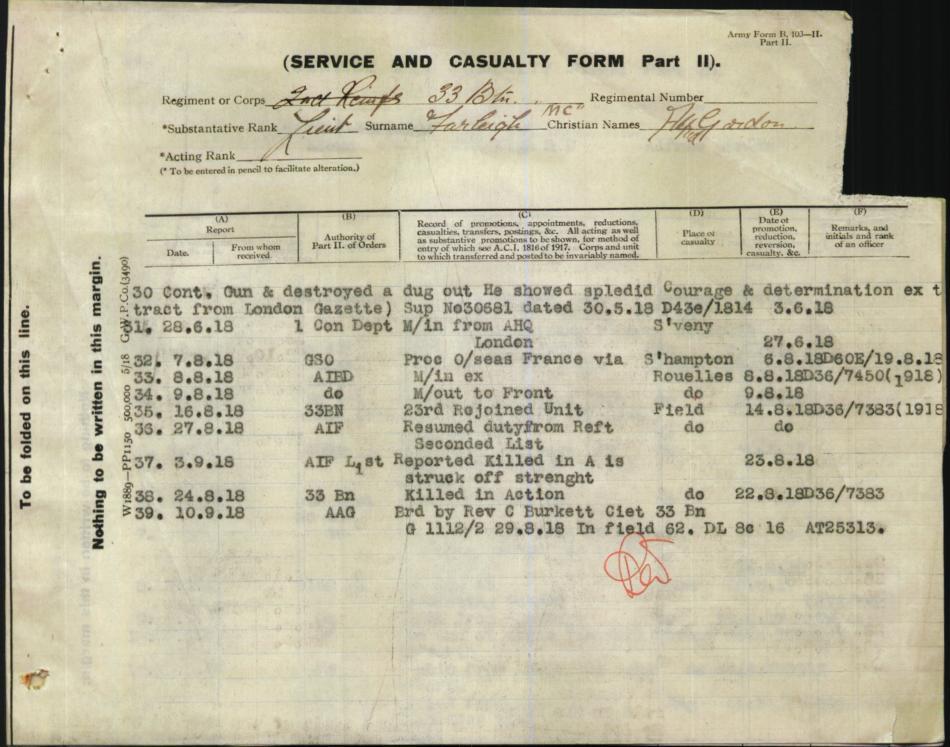

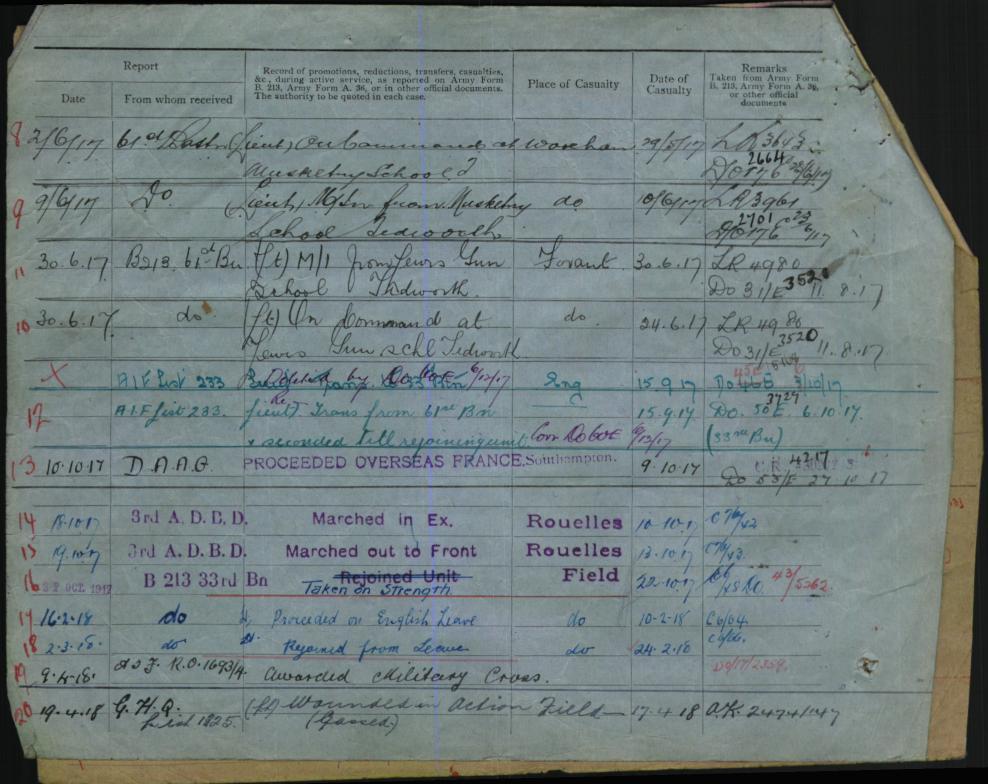
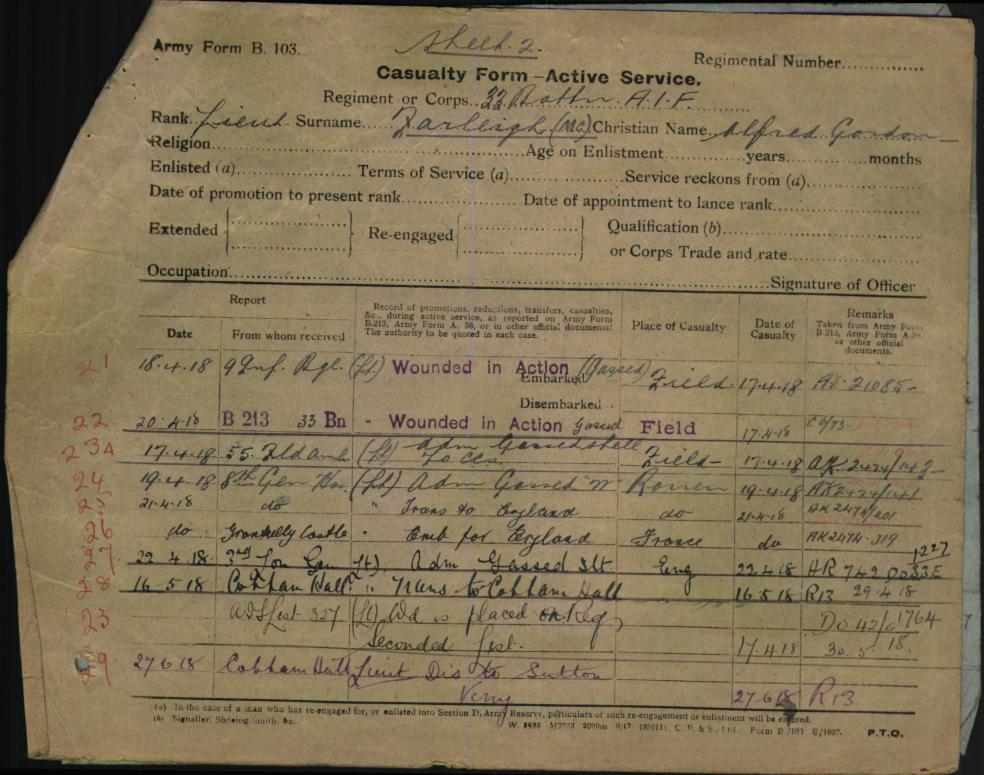


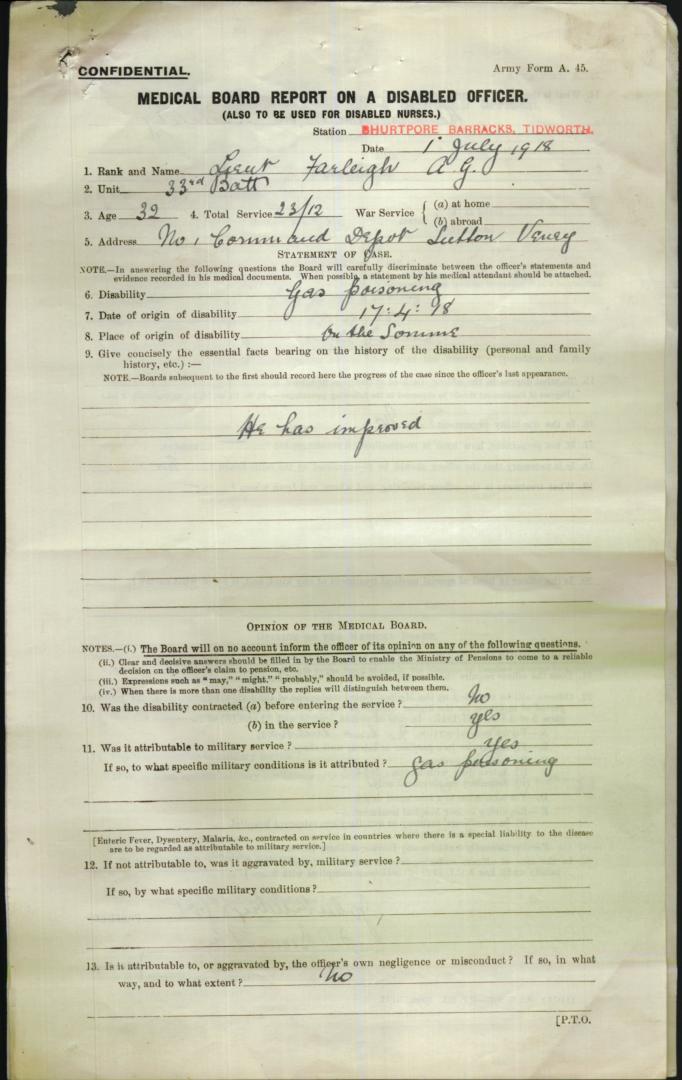
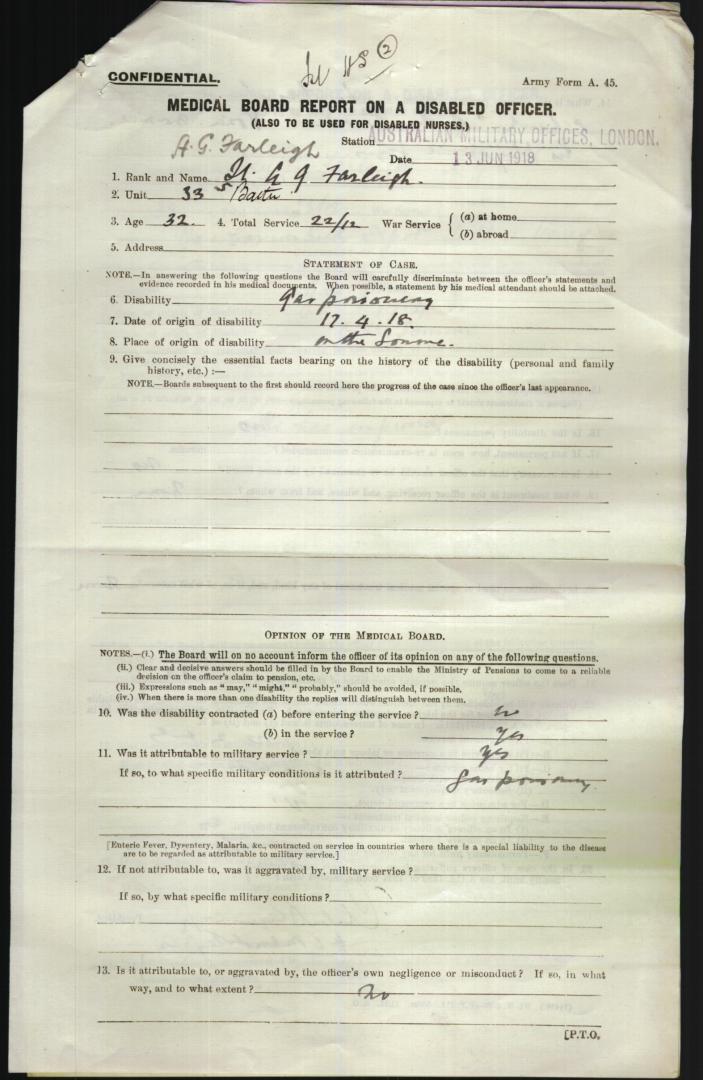
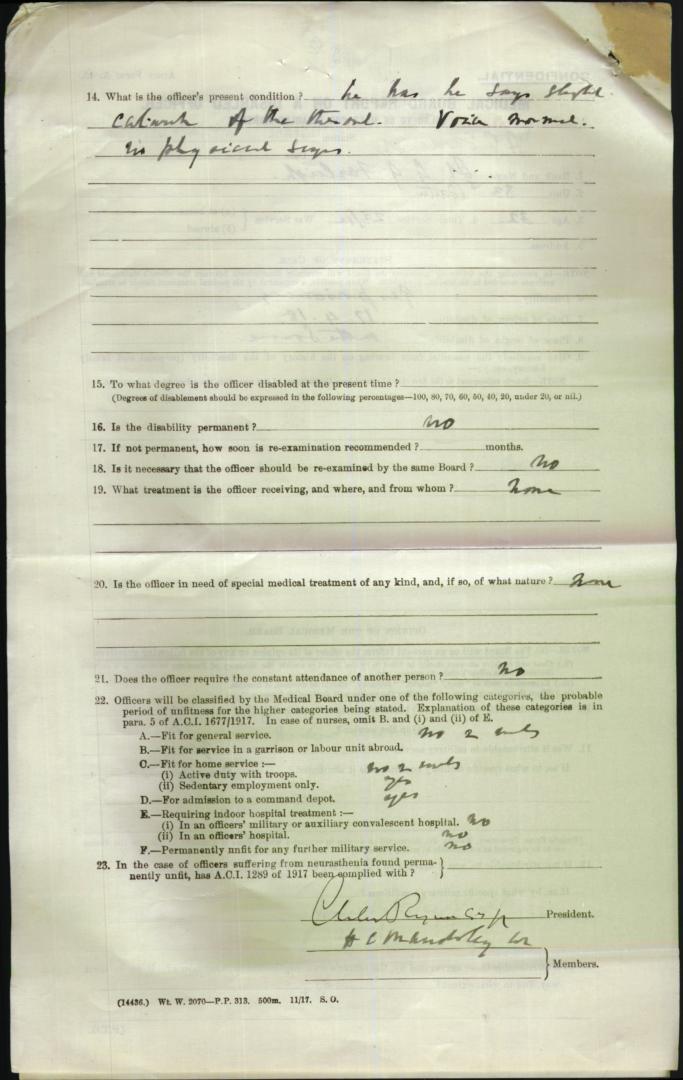
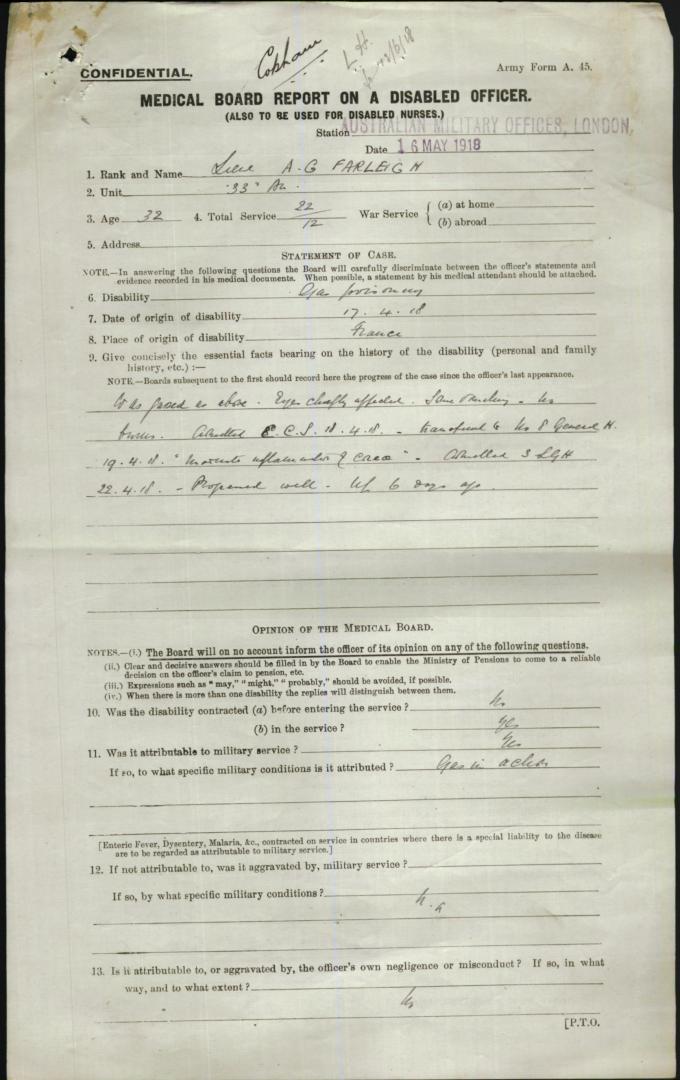
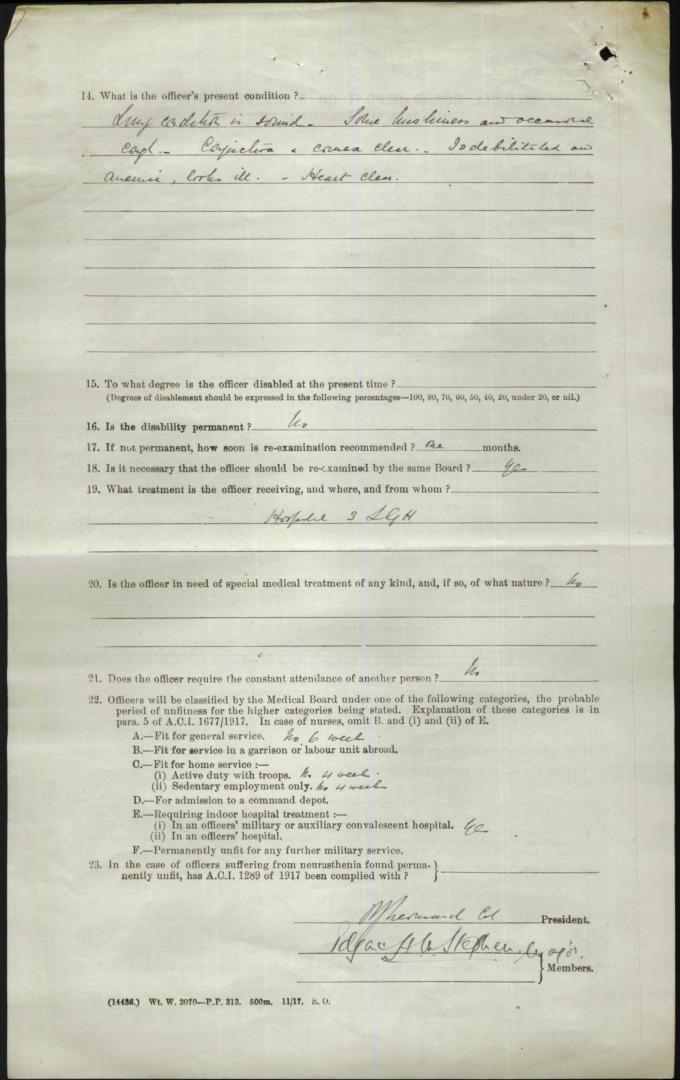
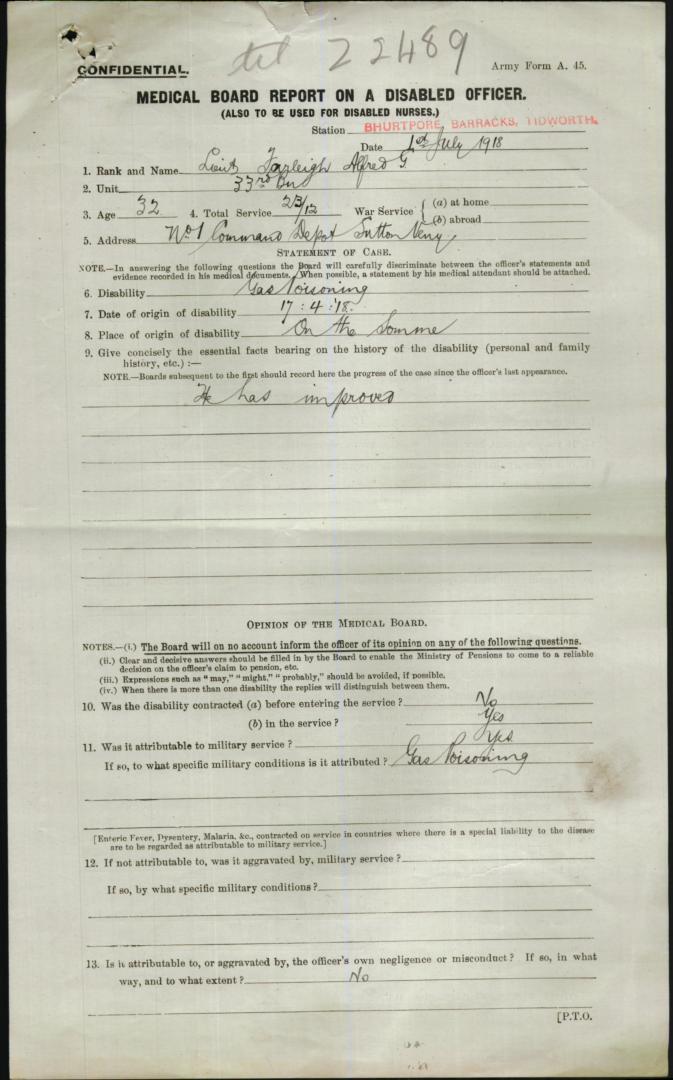
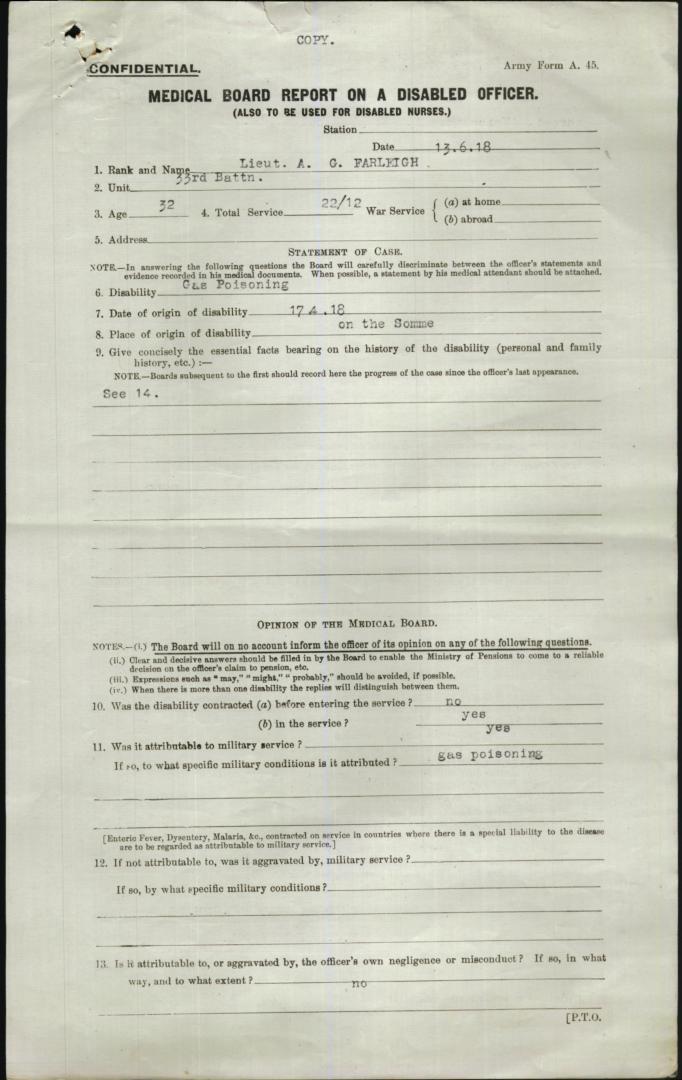

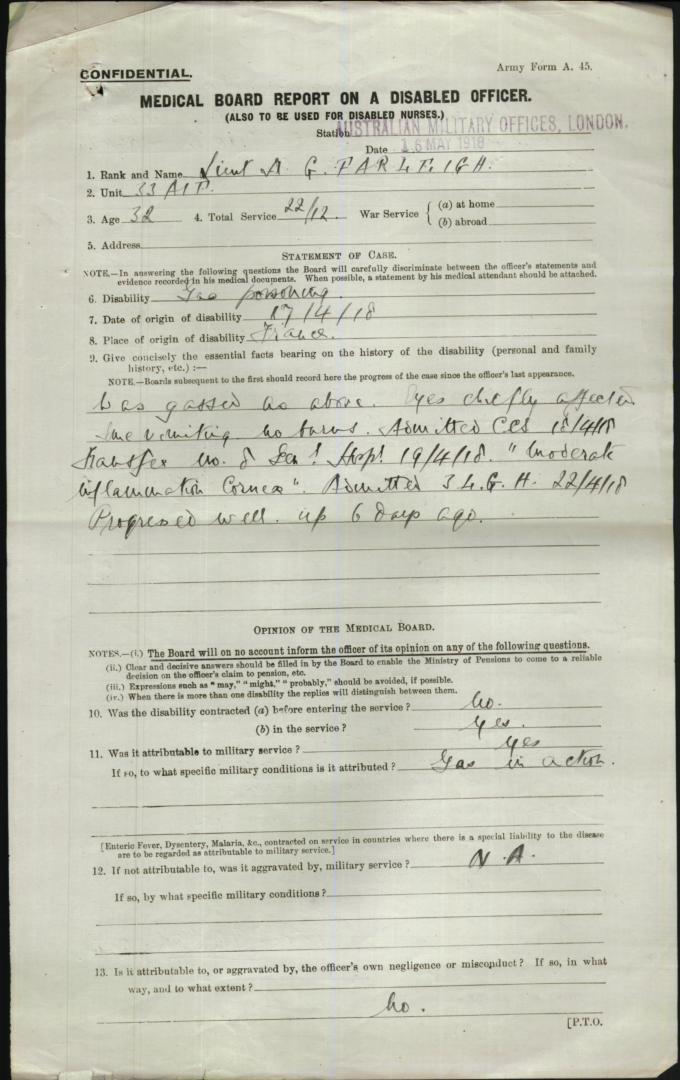

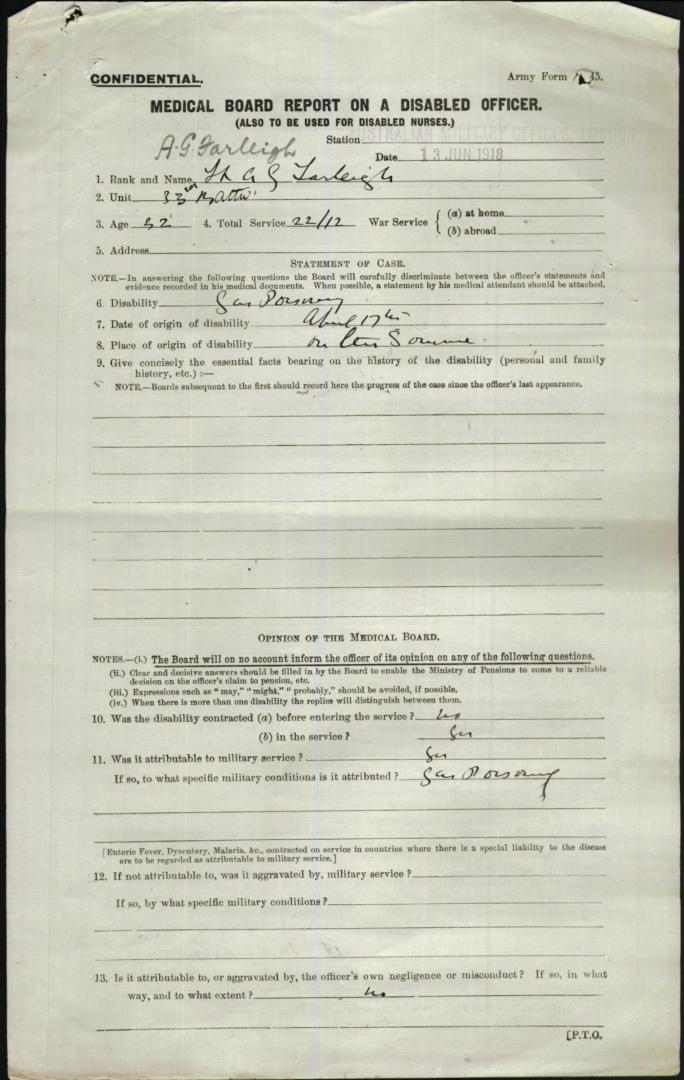



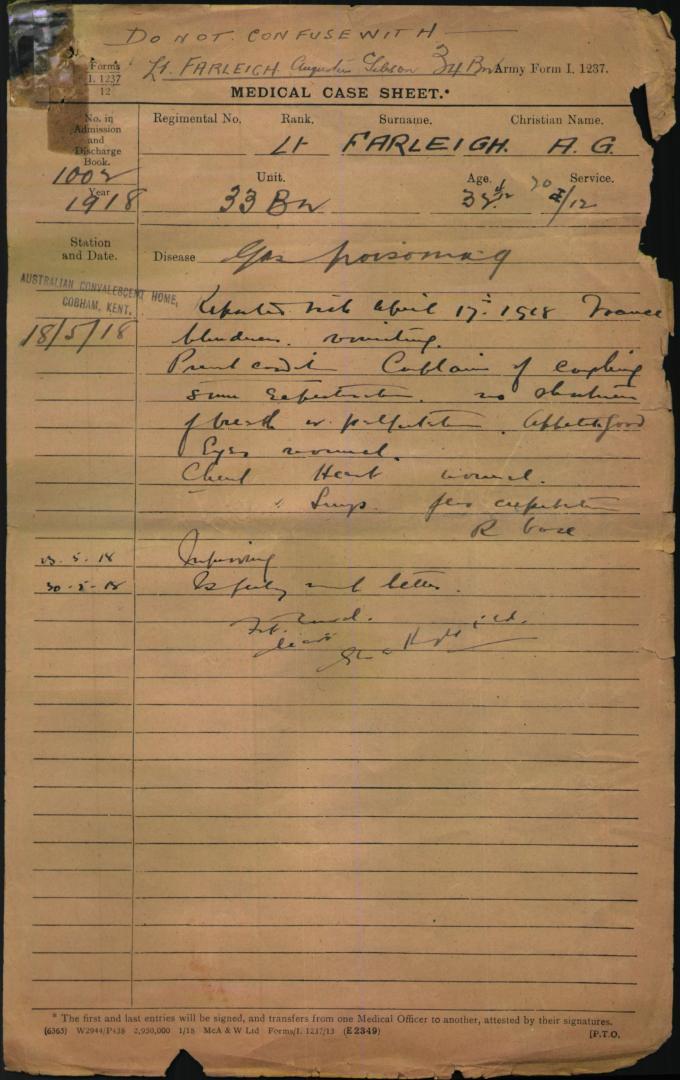
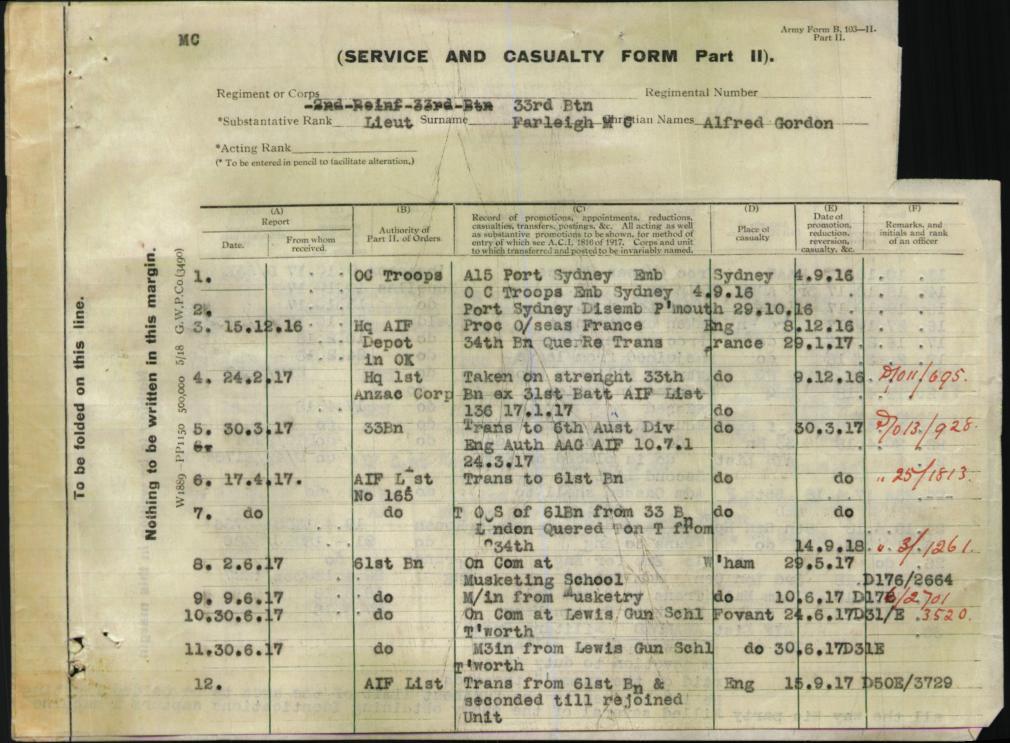
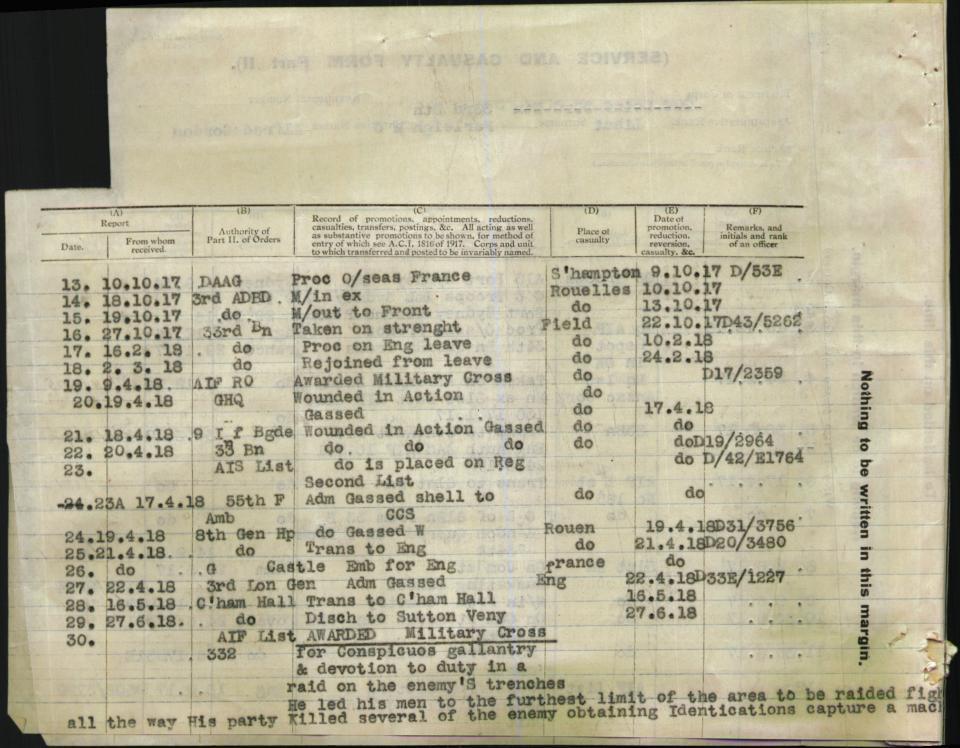

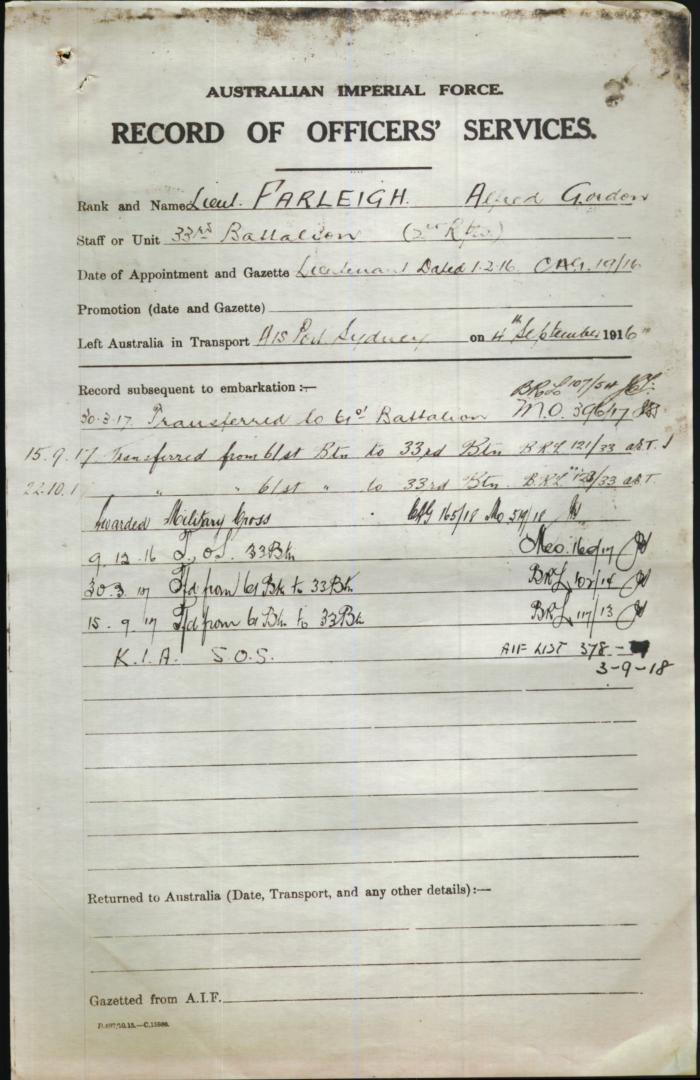
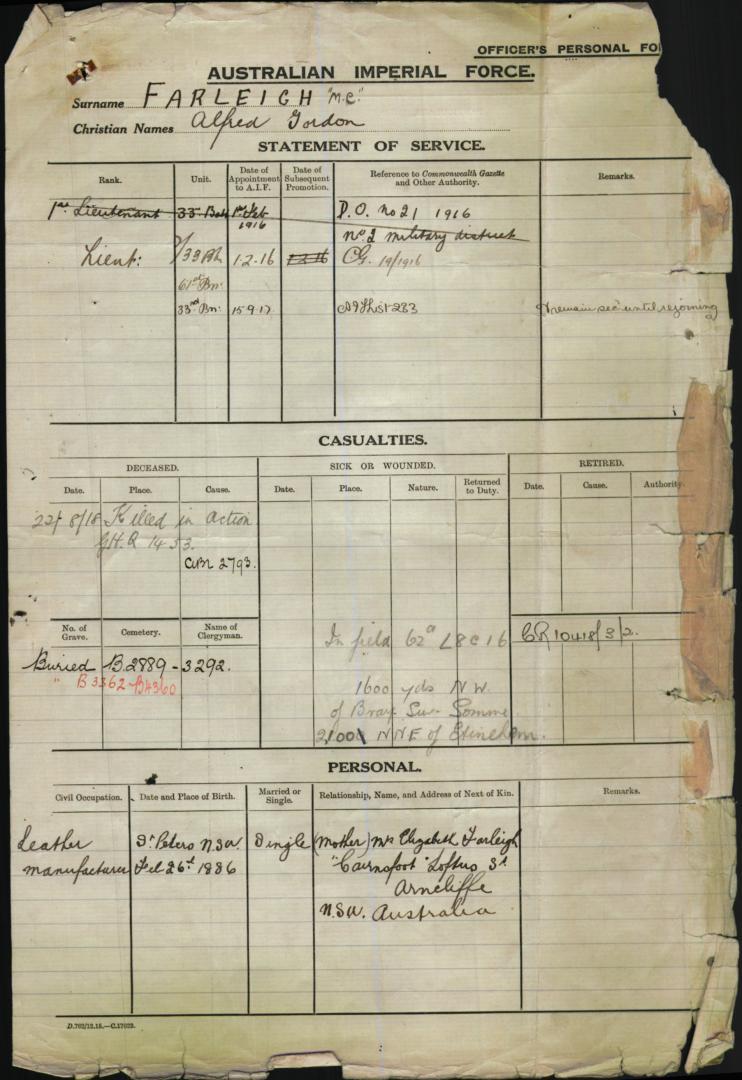

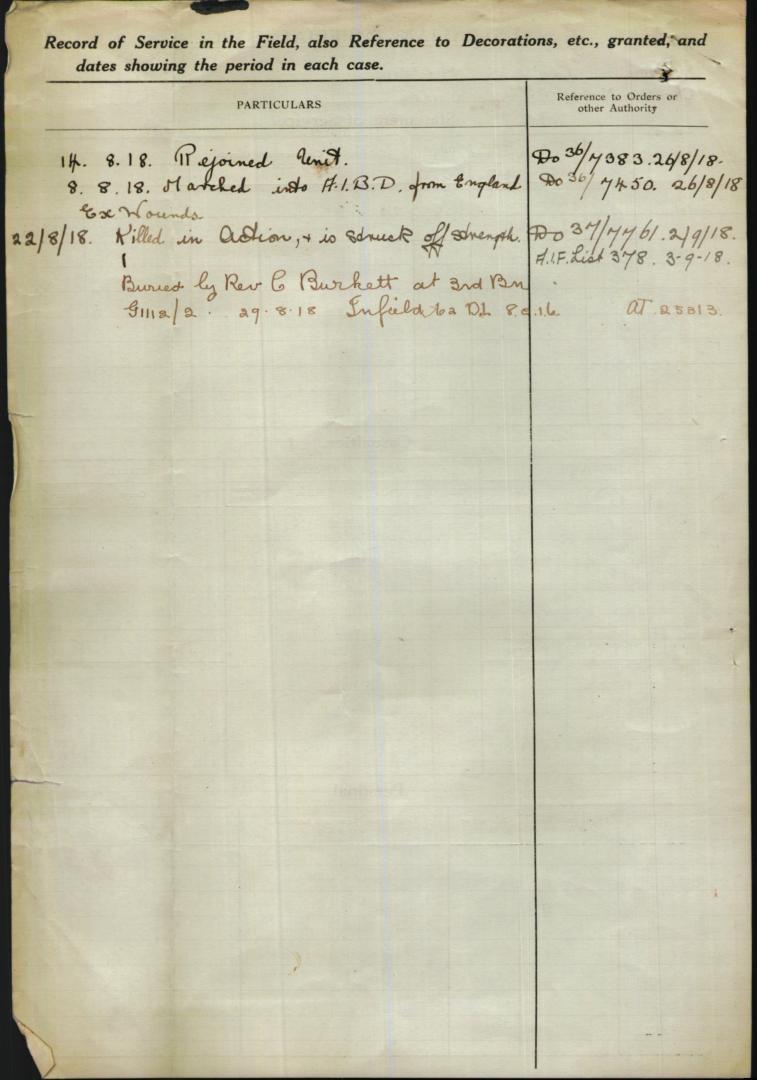
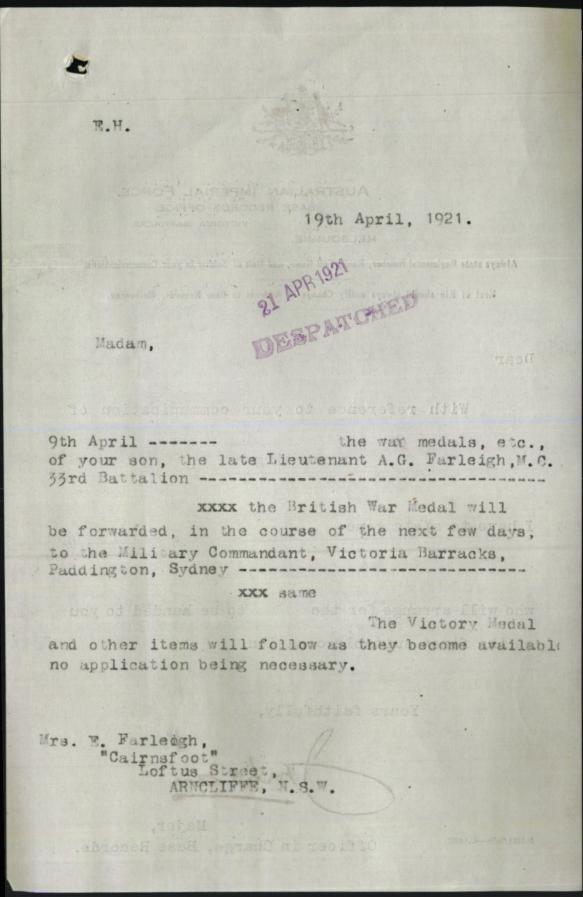
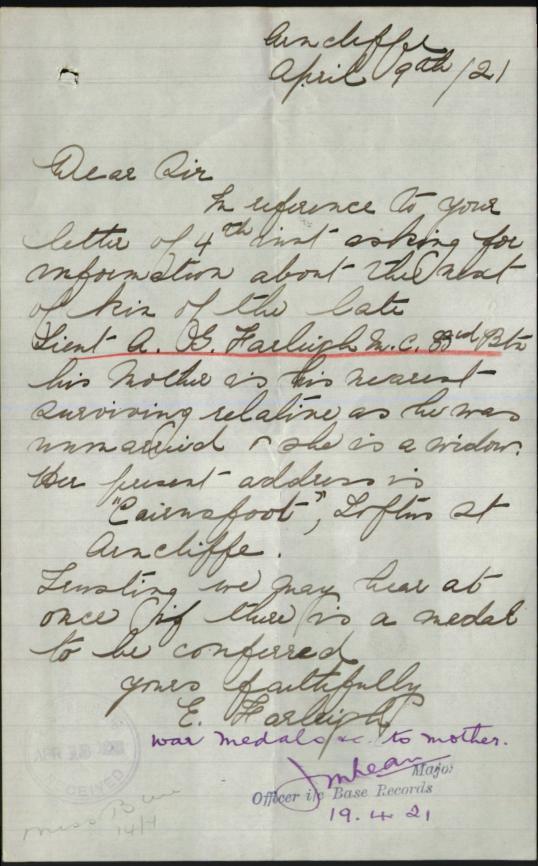
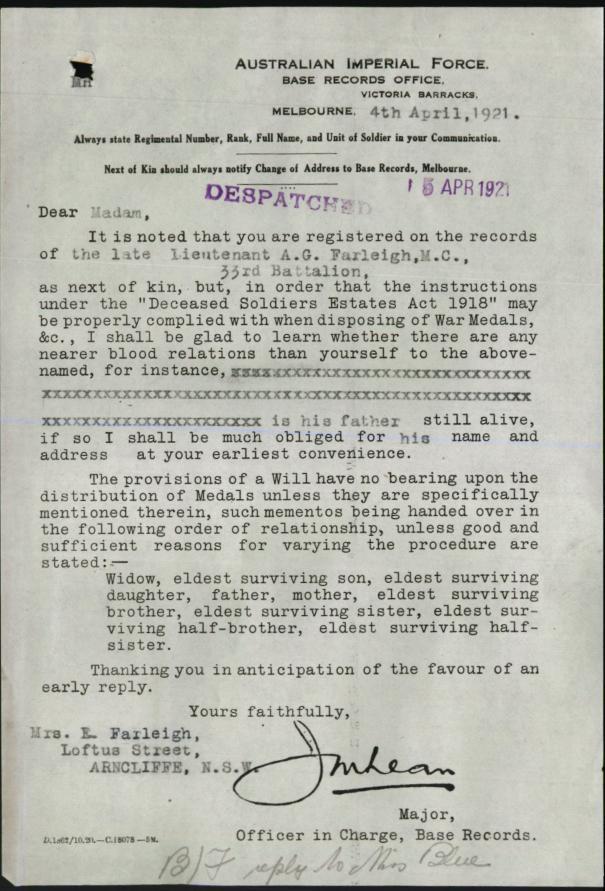
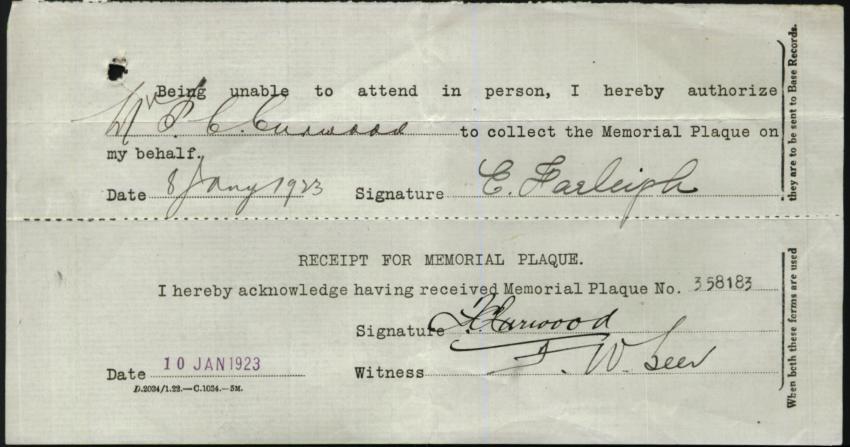
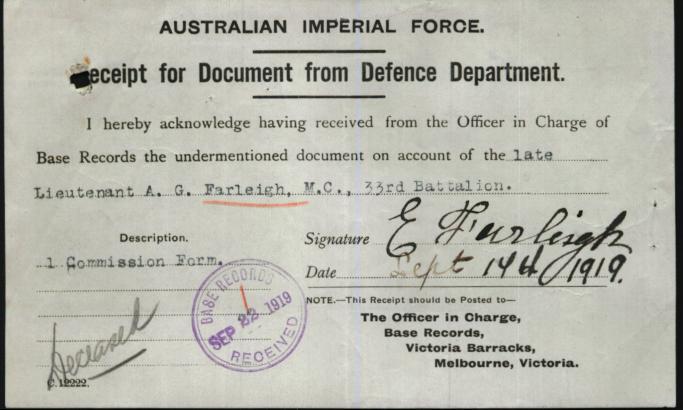



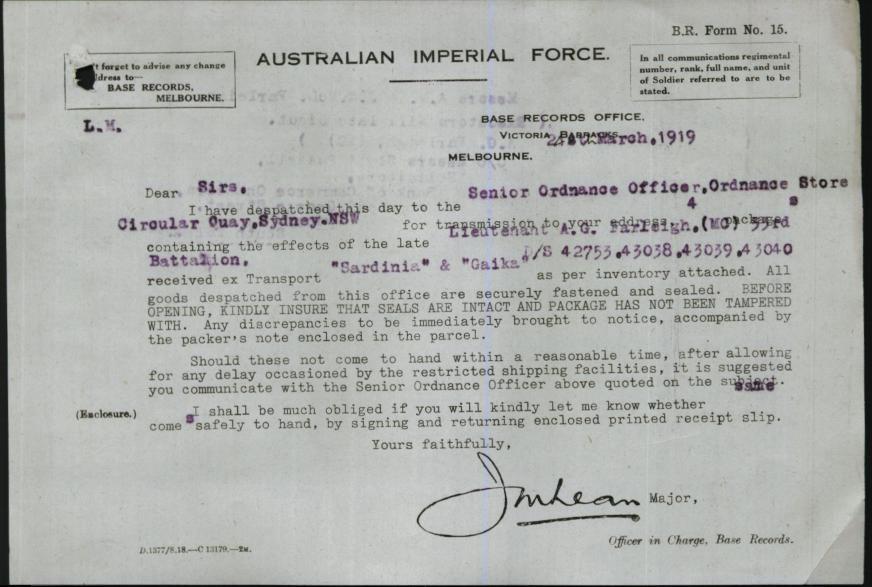

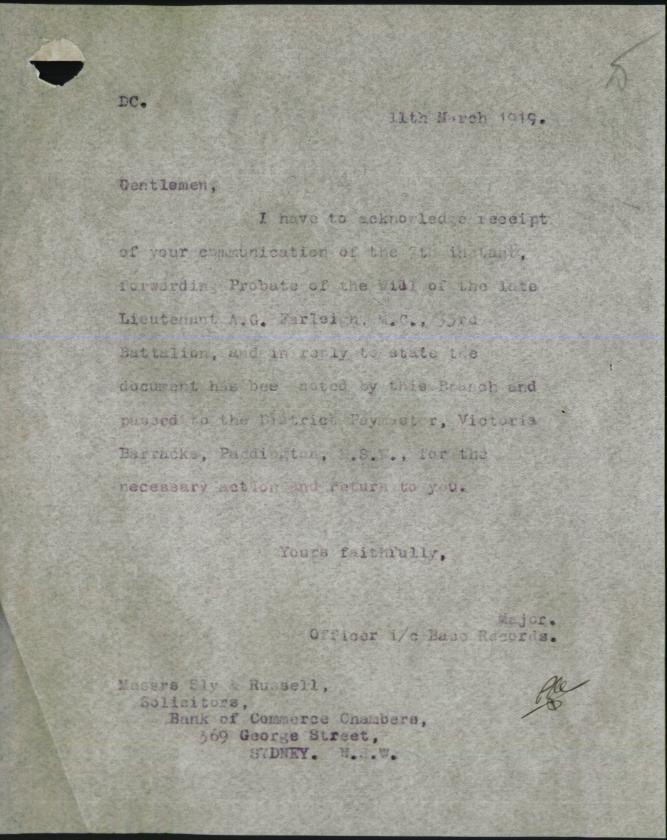
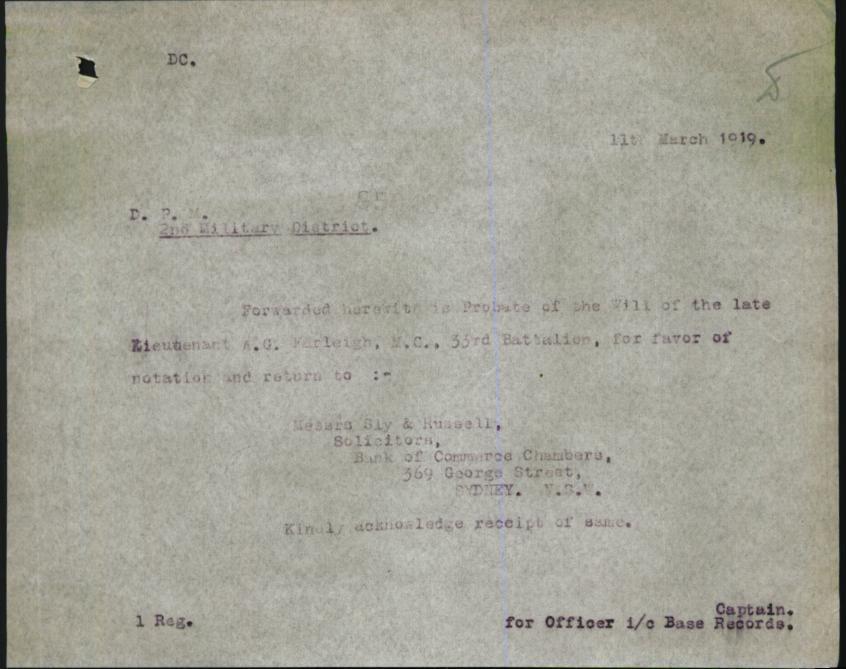
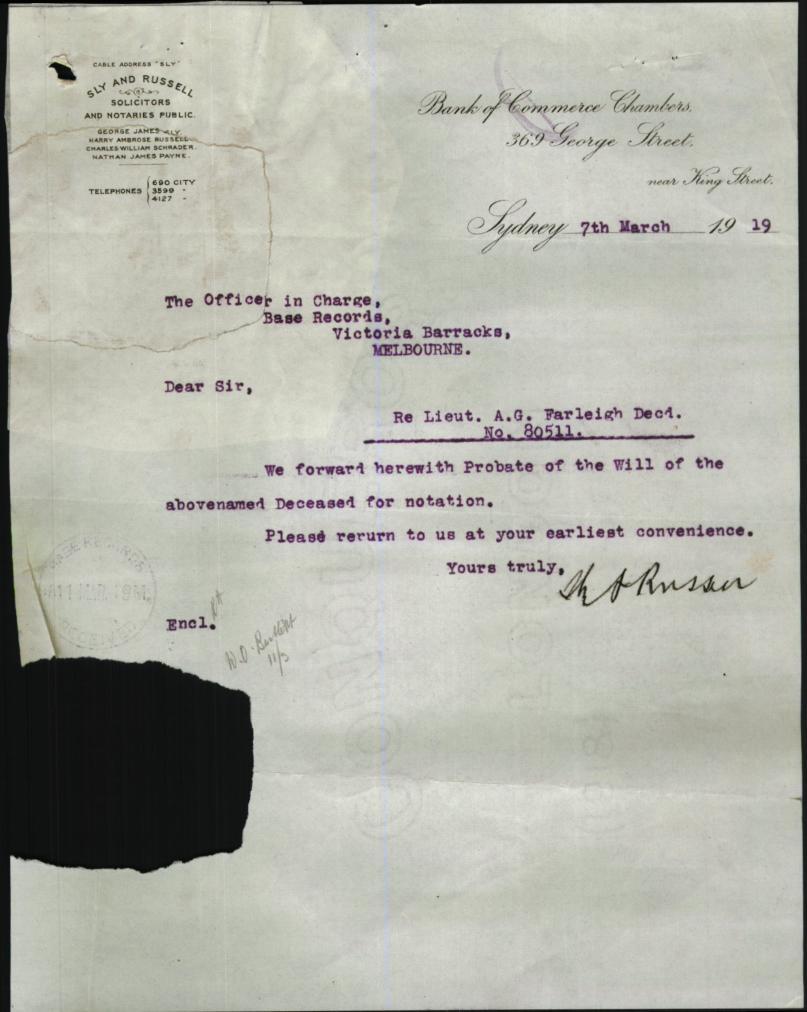
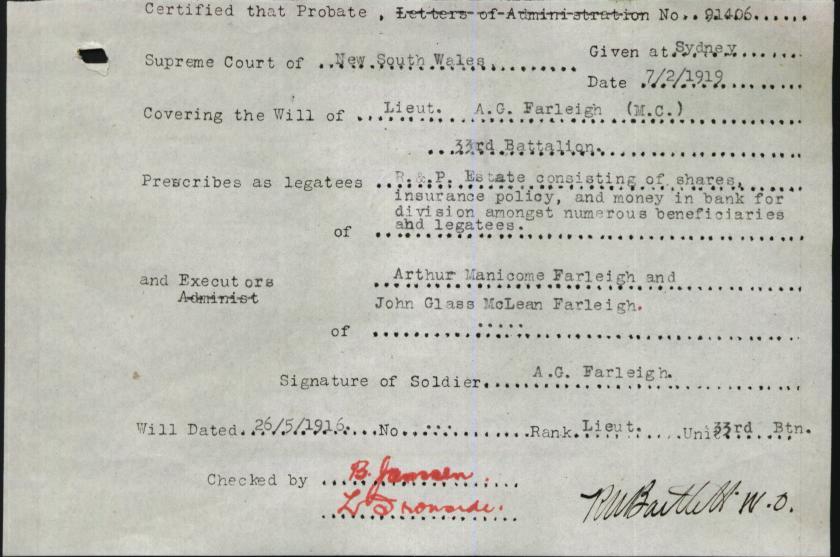

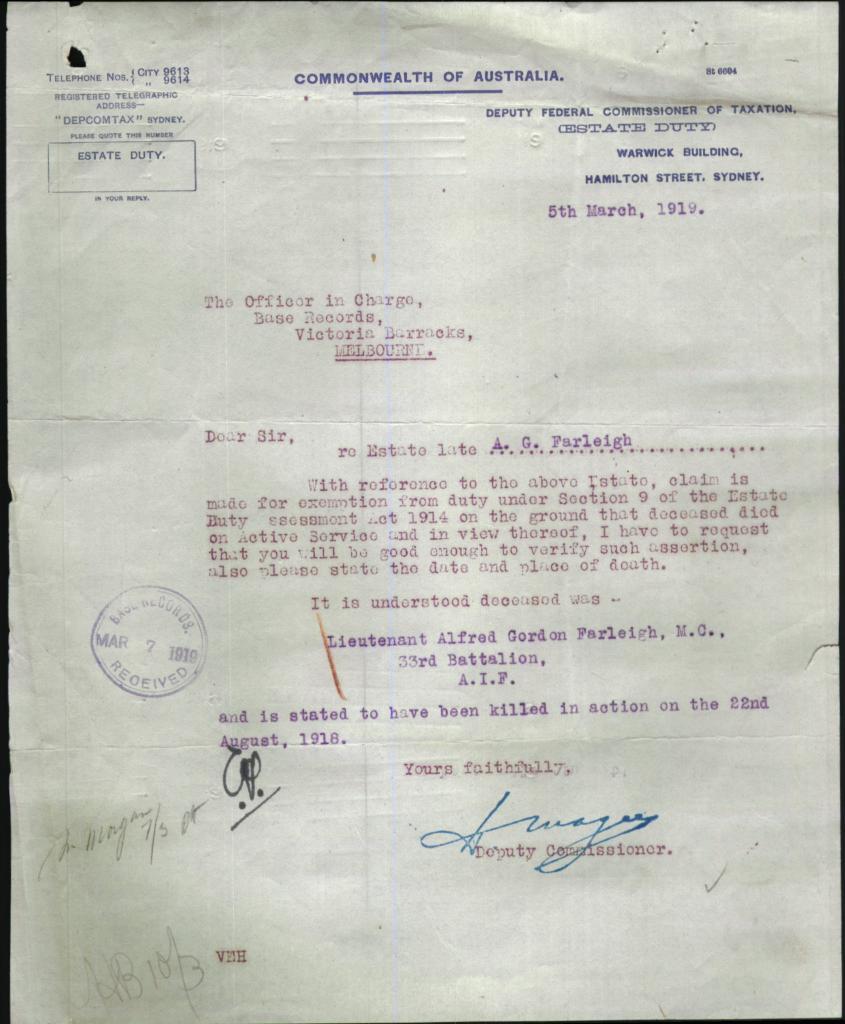
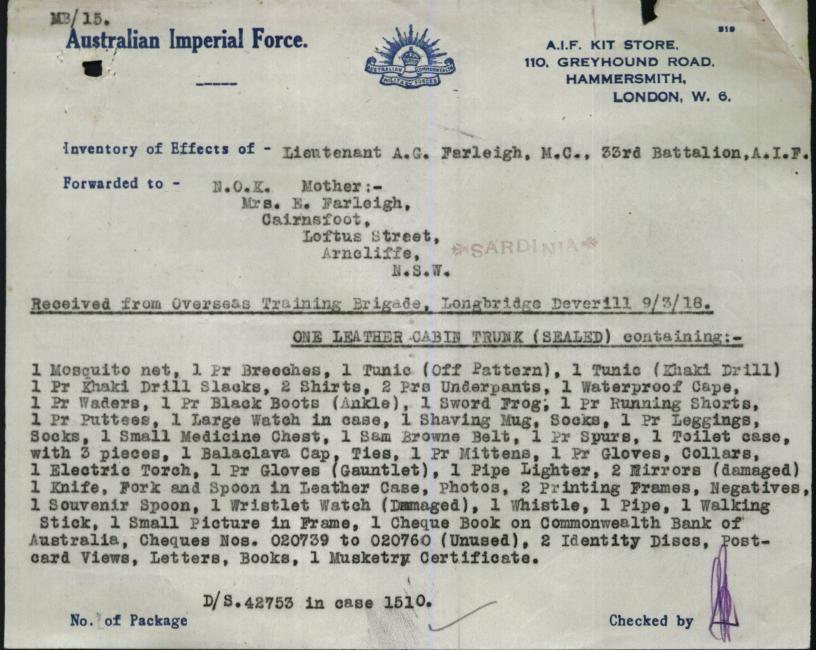


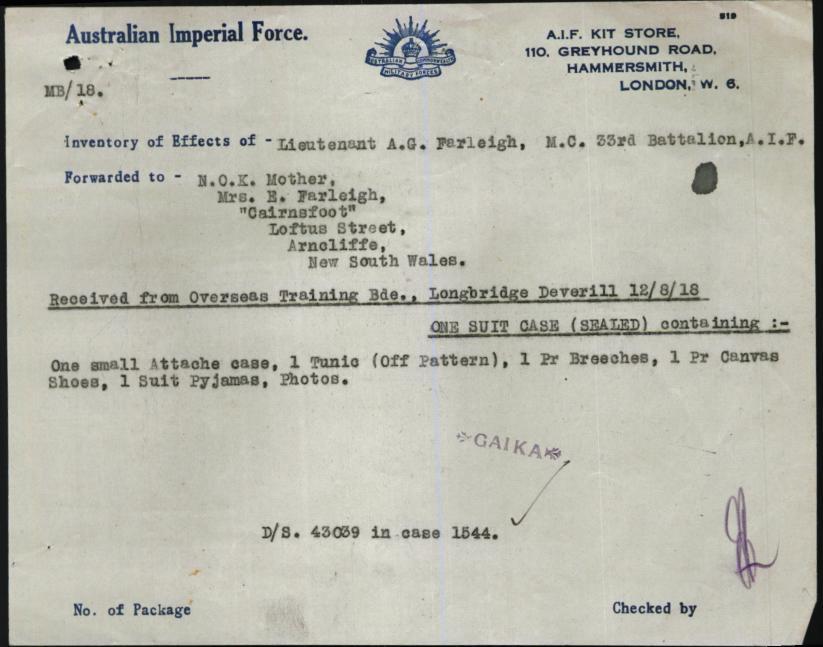
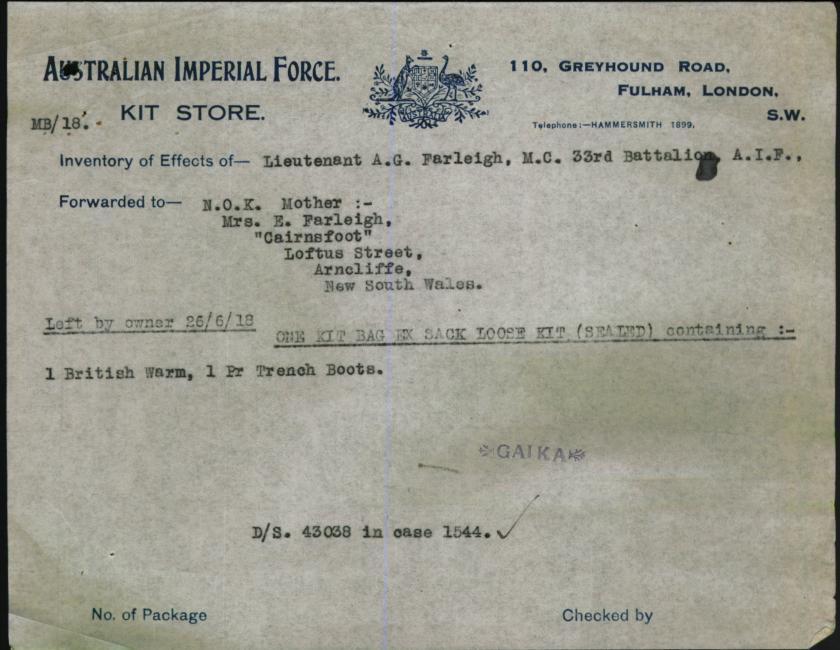
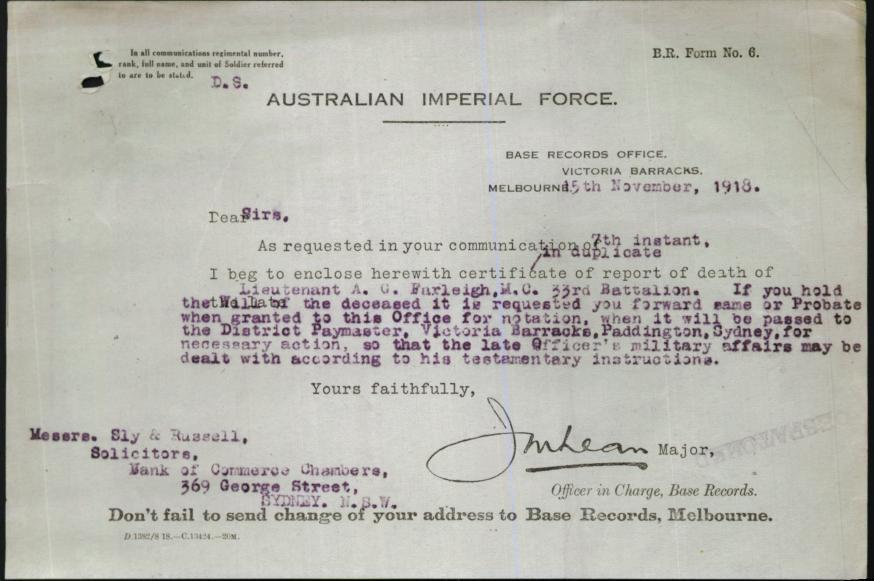
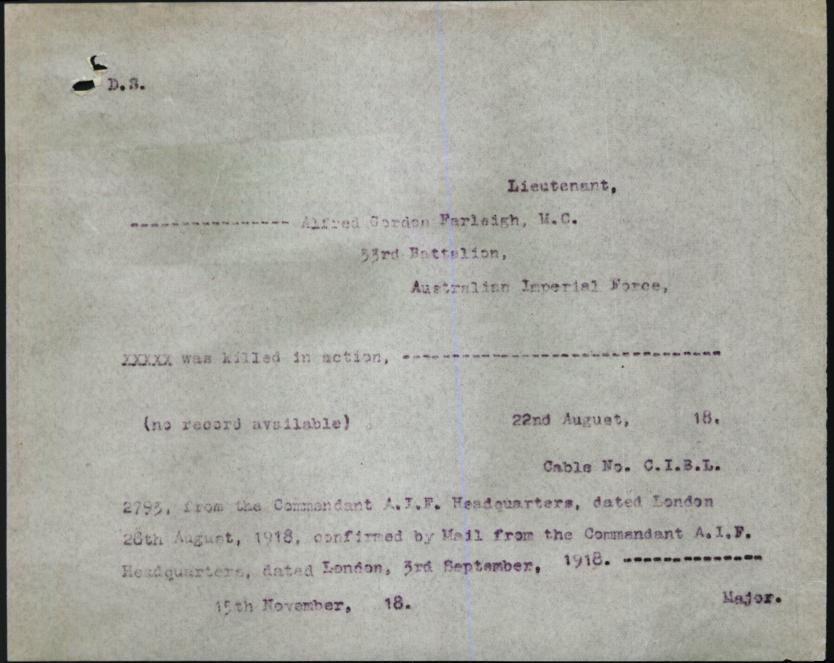
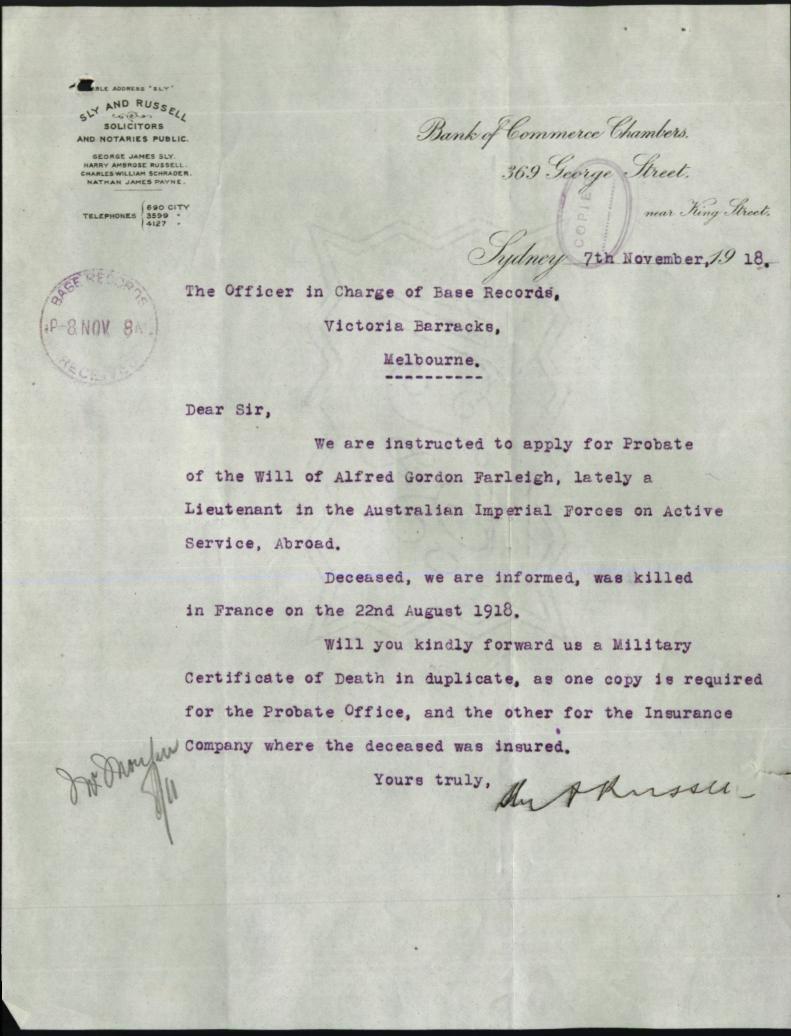

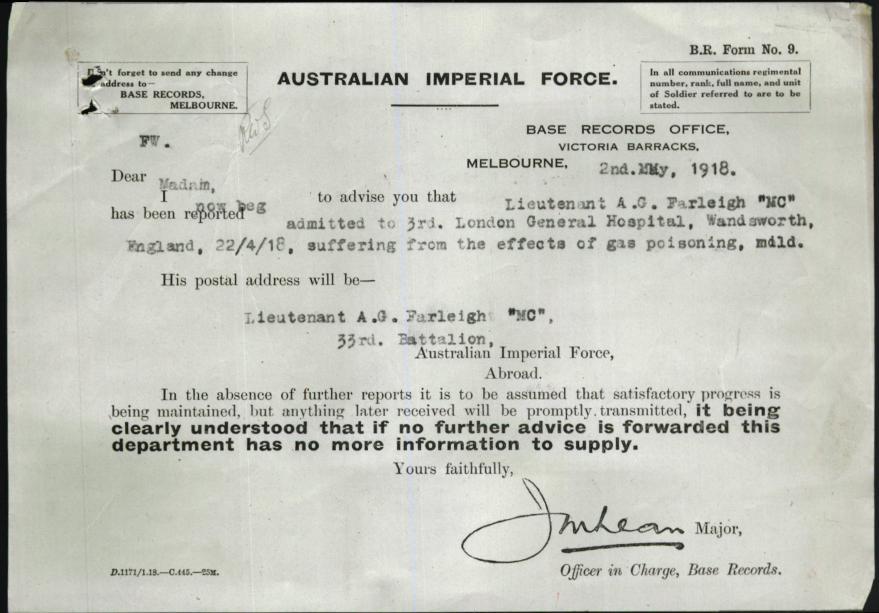

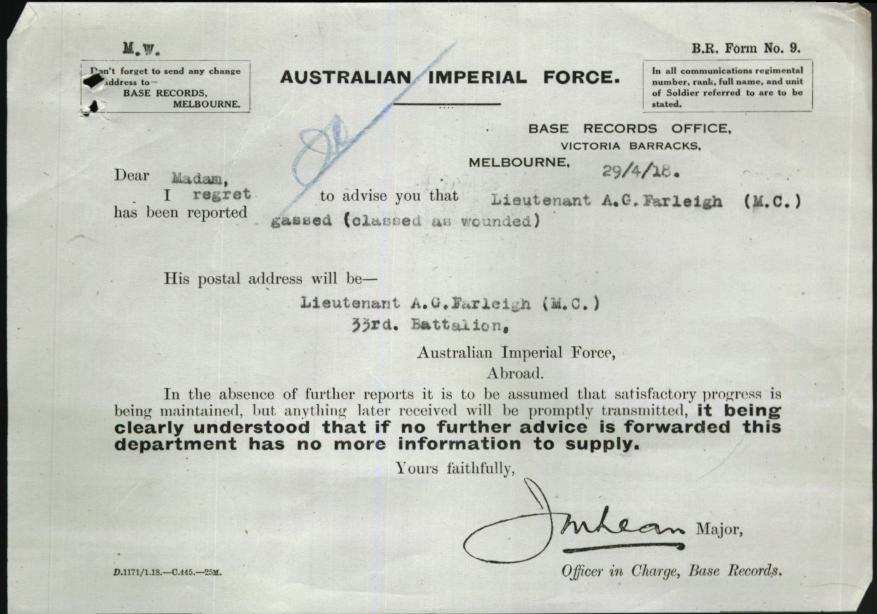
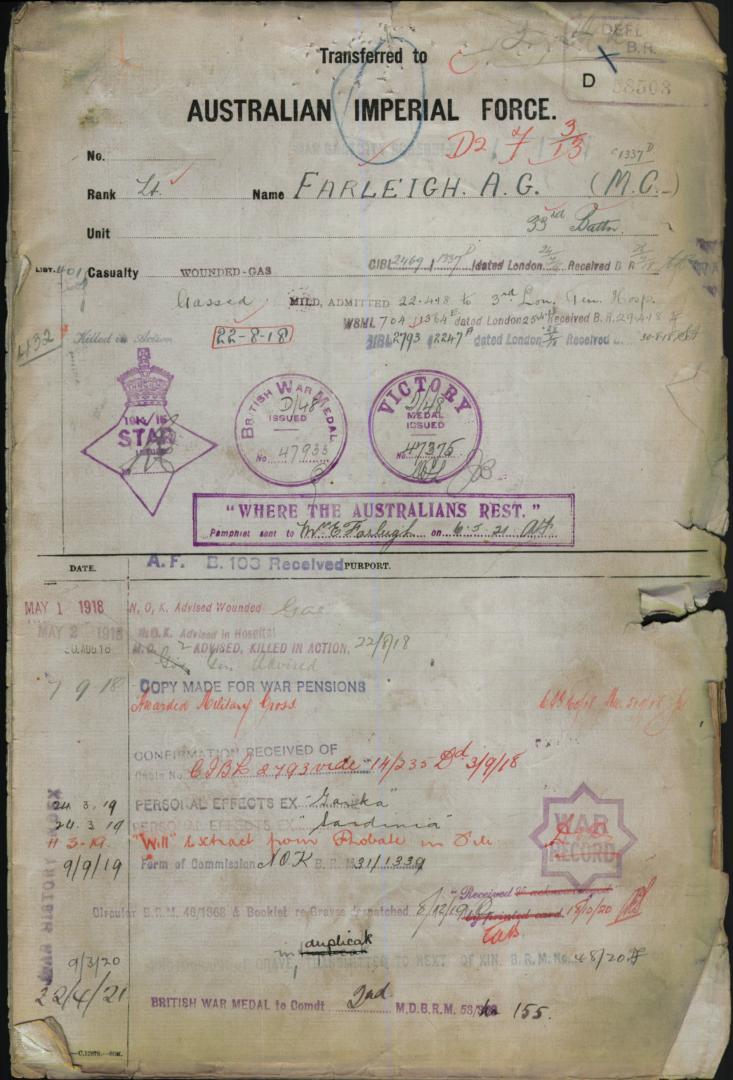
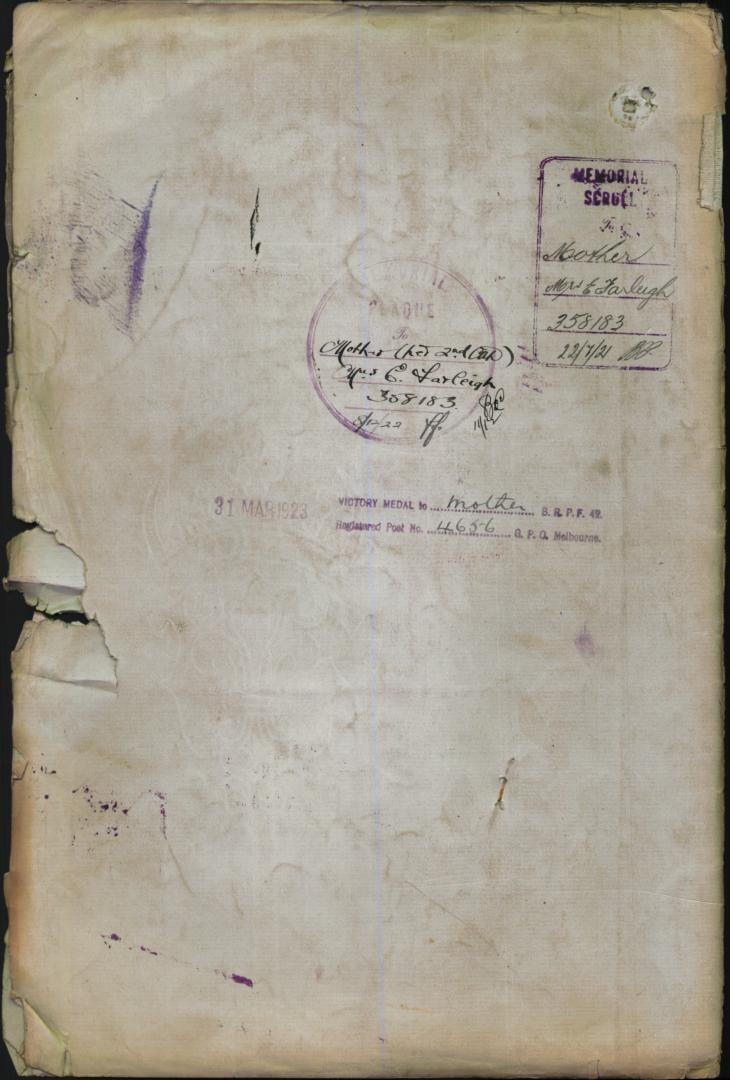
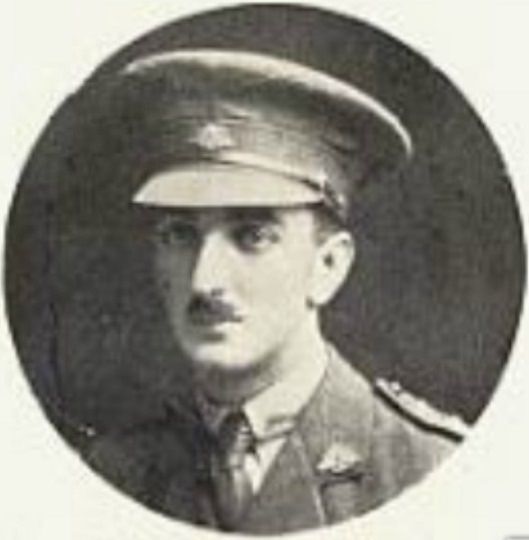

 Cedric is remembered with honour and is commemorated in perpetuity by the Commonwealth War Graves Commission at the Perronne Communal Cemetery.
Cedric is remembered with honour and is commemorated in perpetuity by the Commonwealth War Graves Commission at the Perronne Communal Cemetery.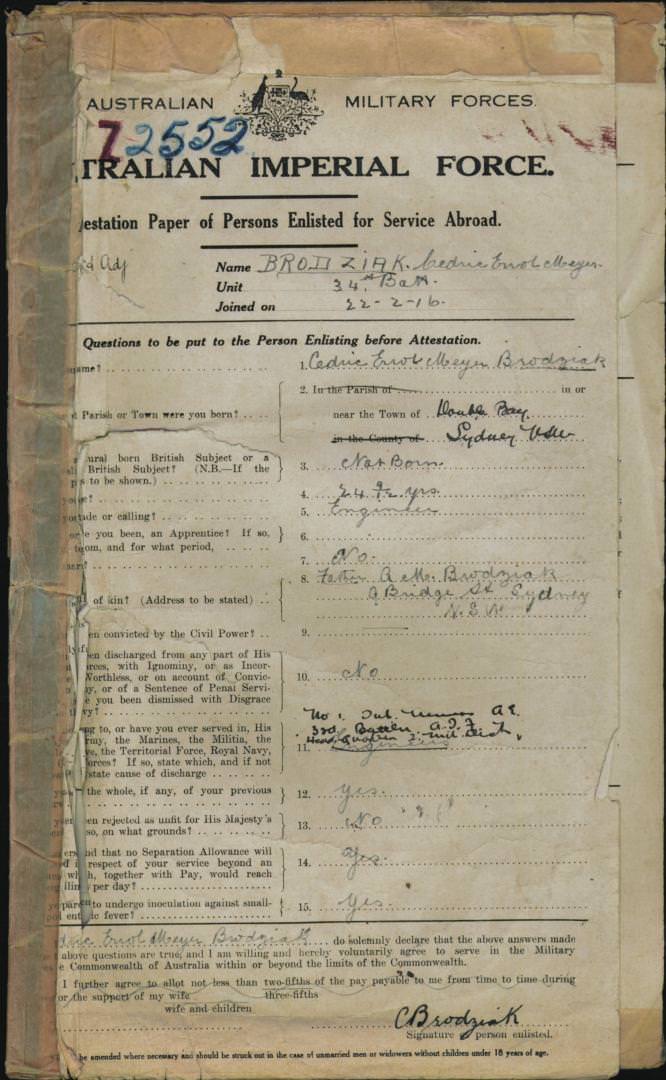

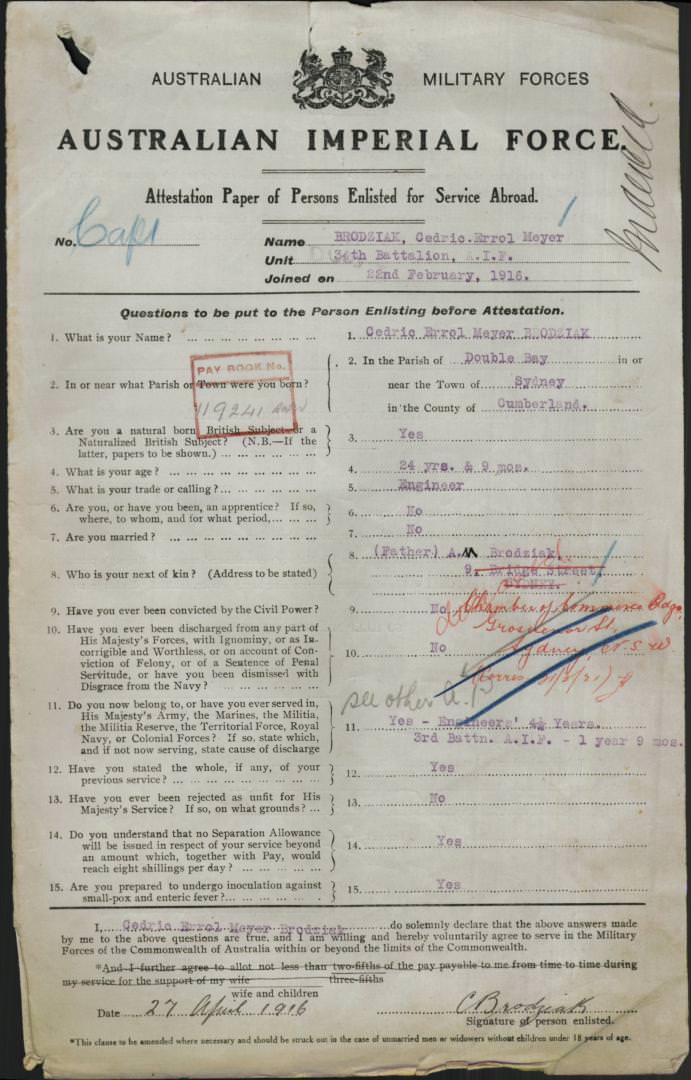
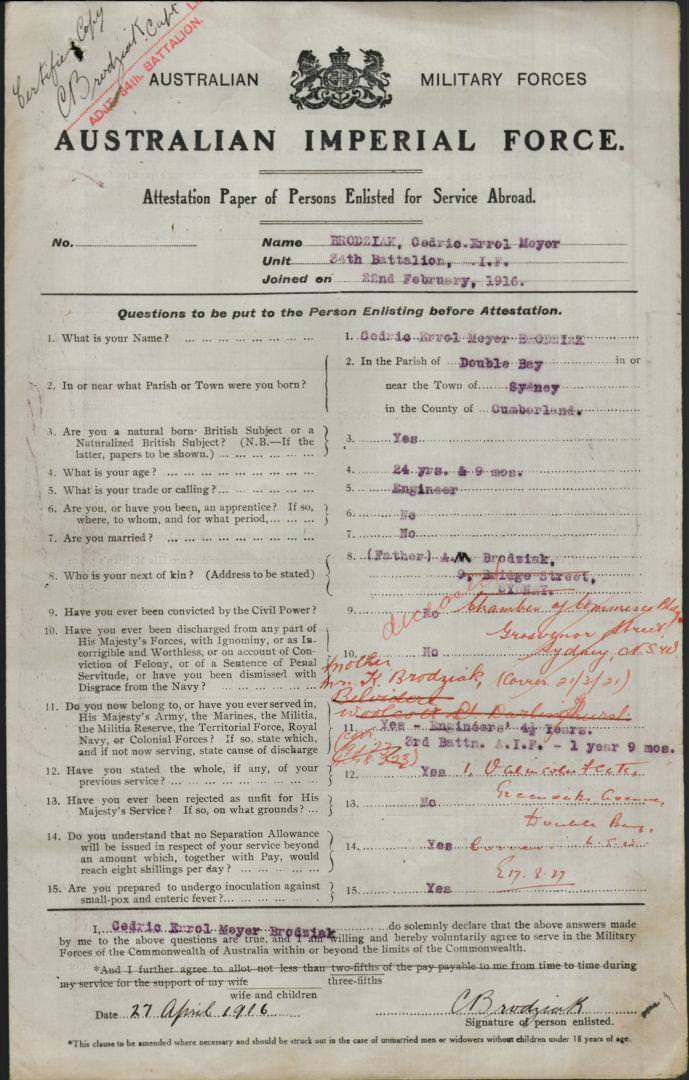
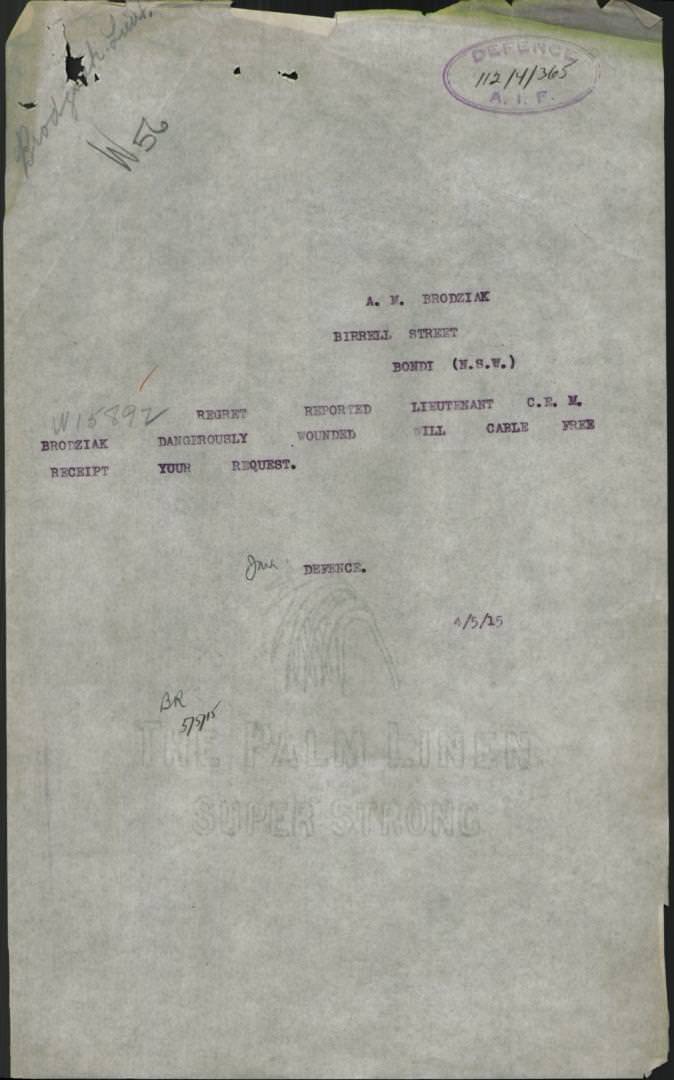

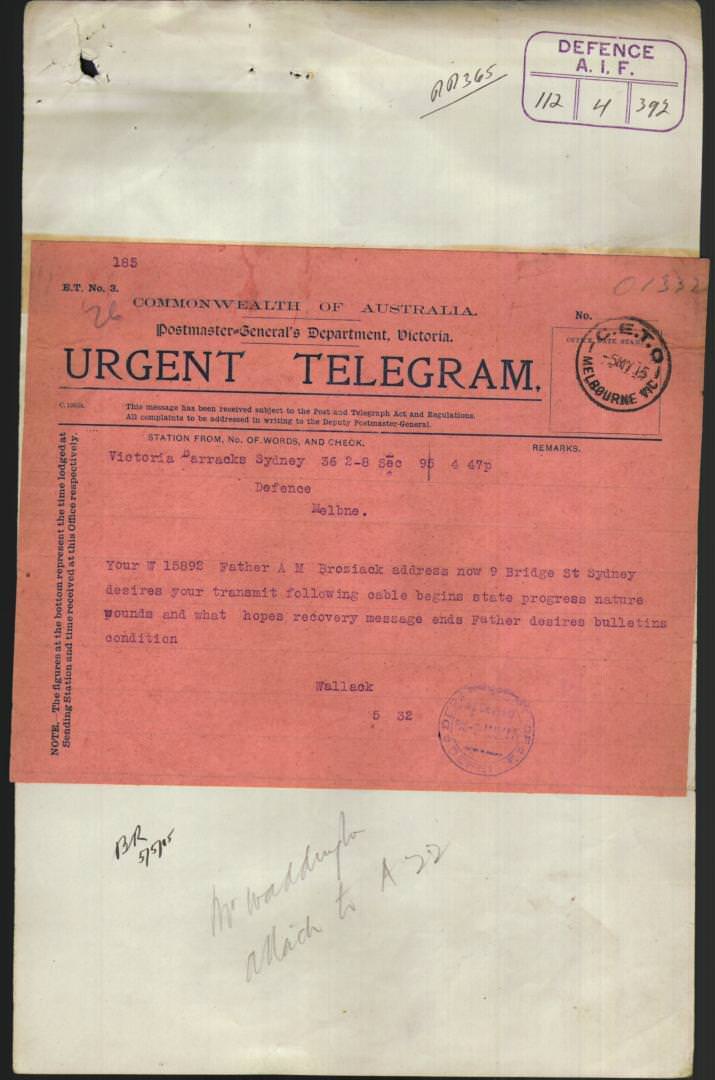
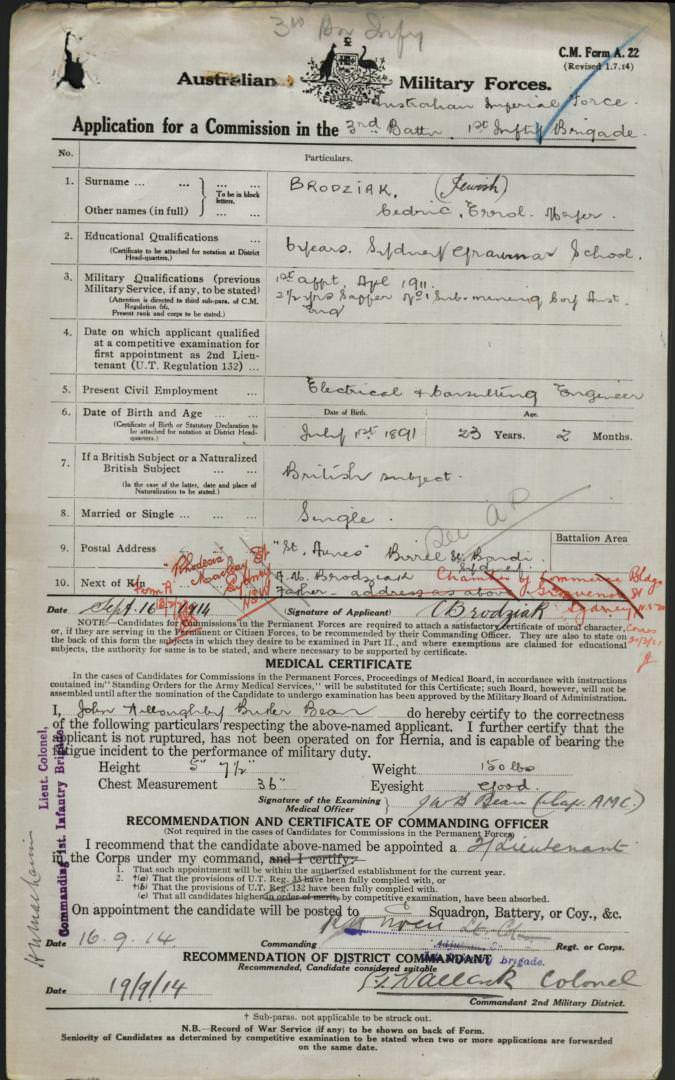
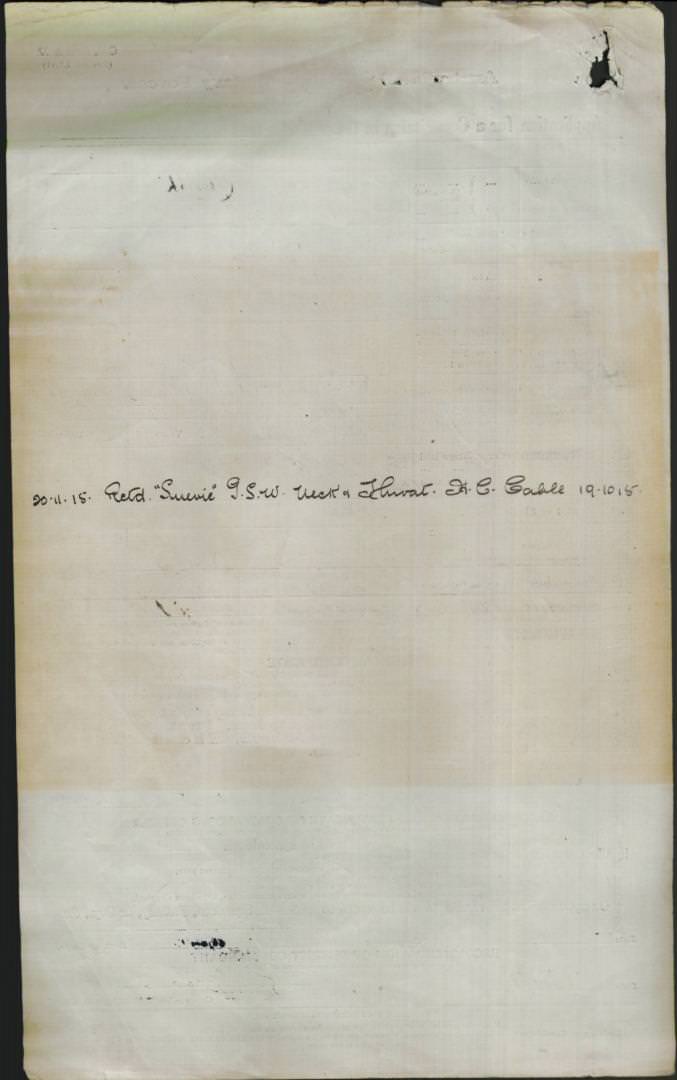
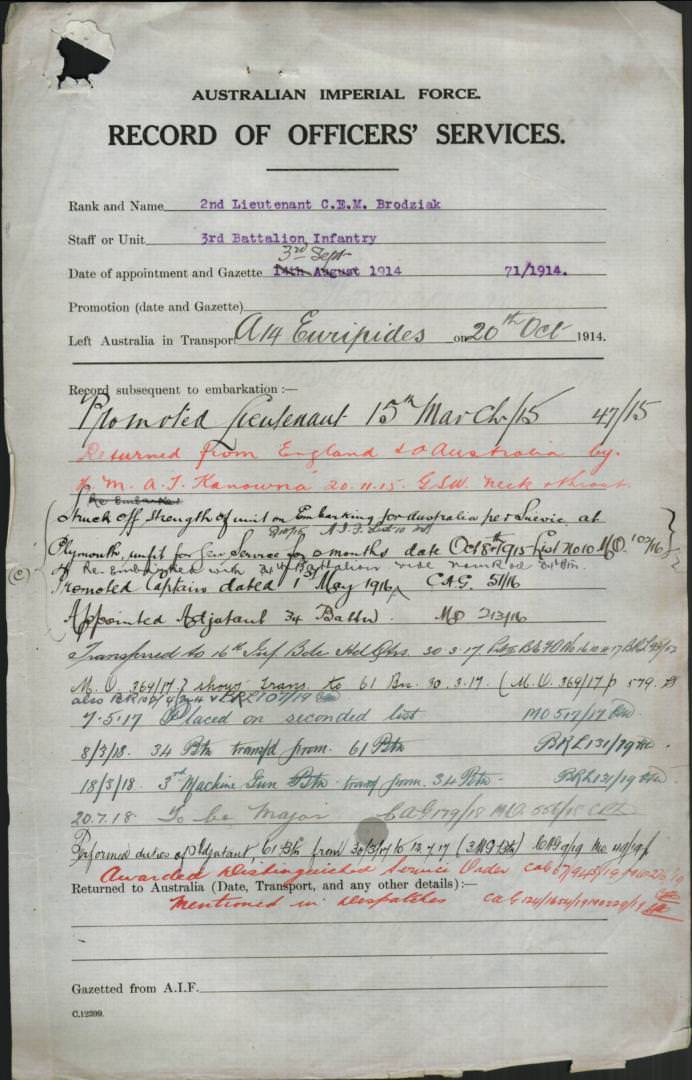
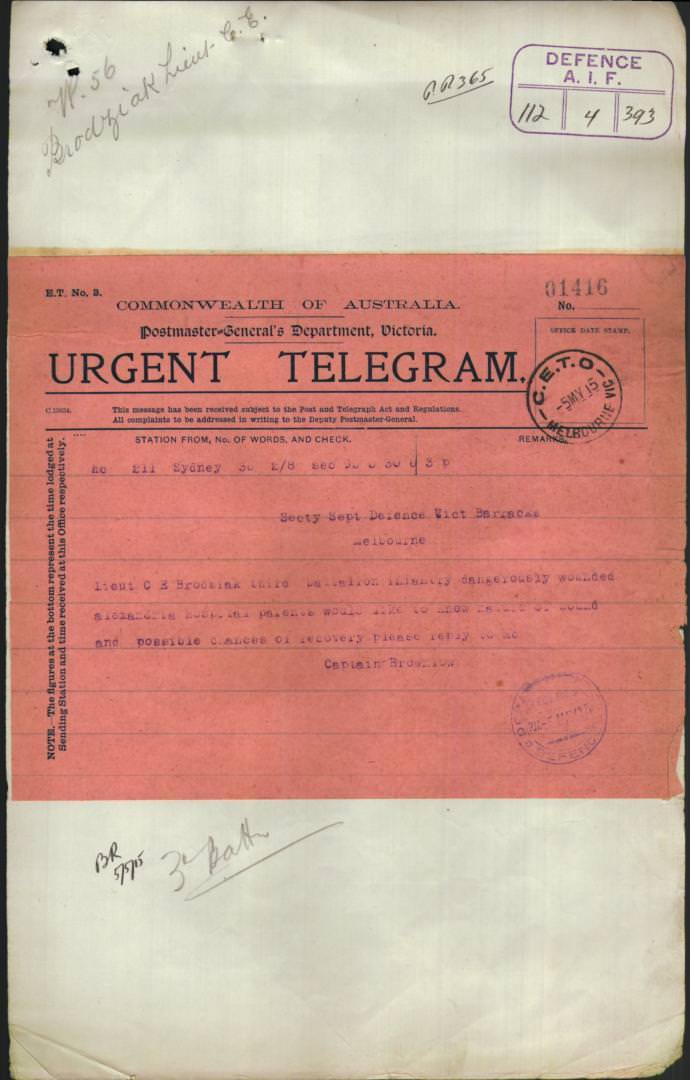

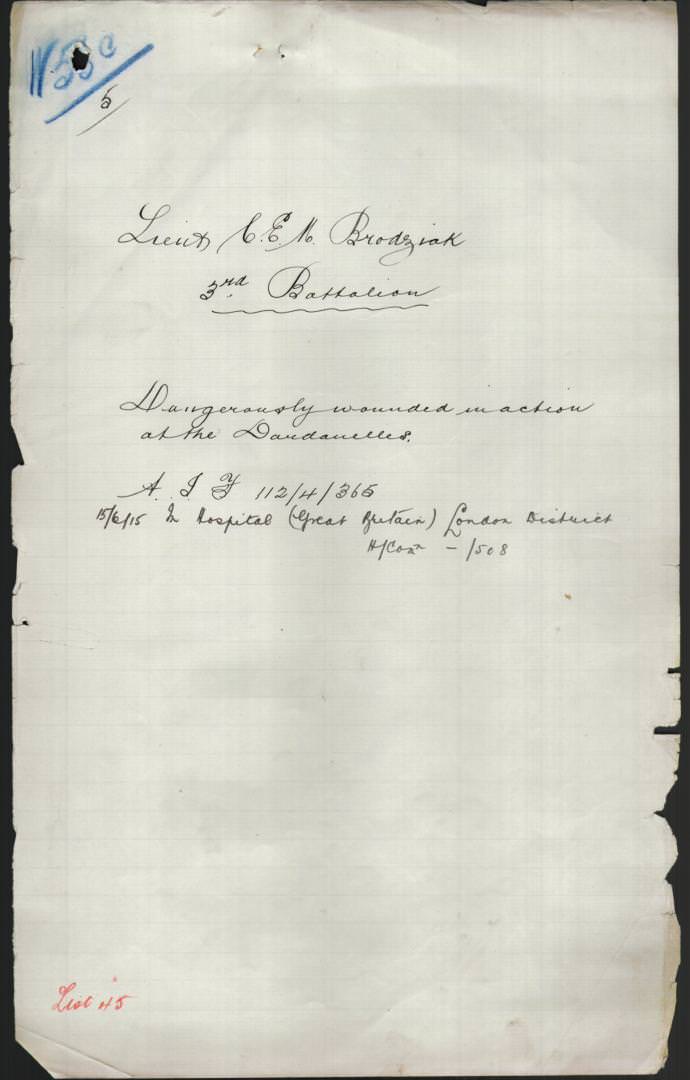

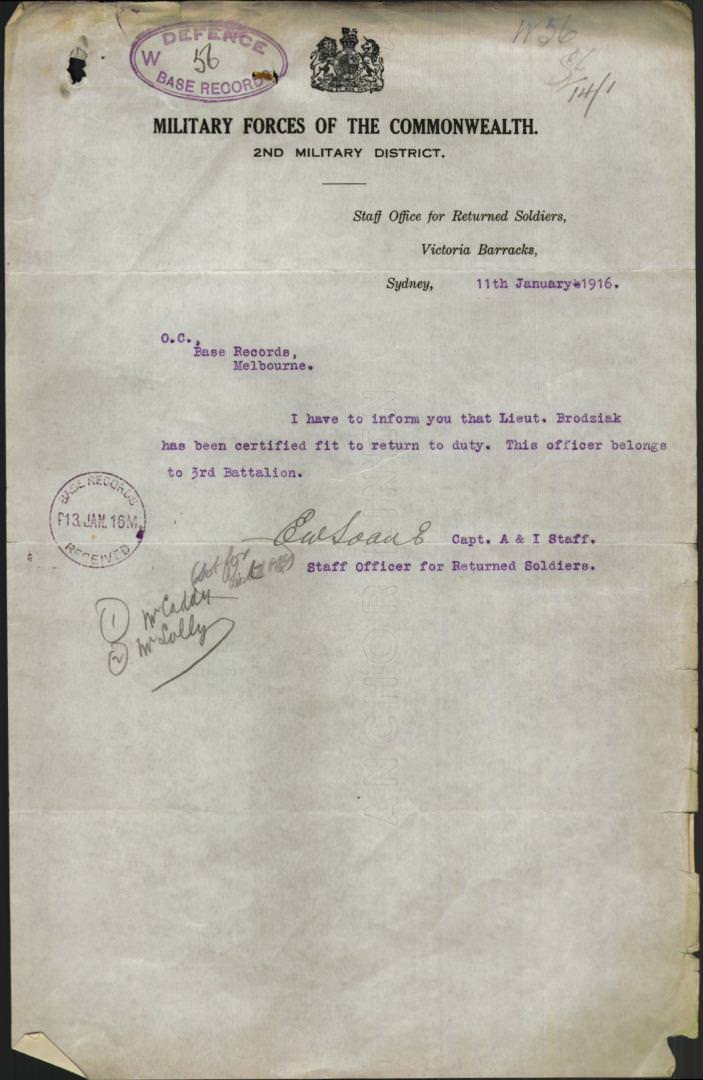
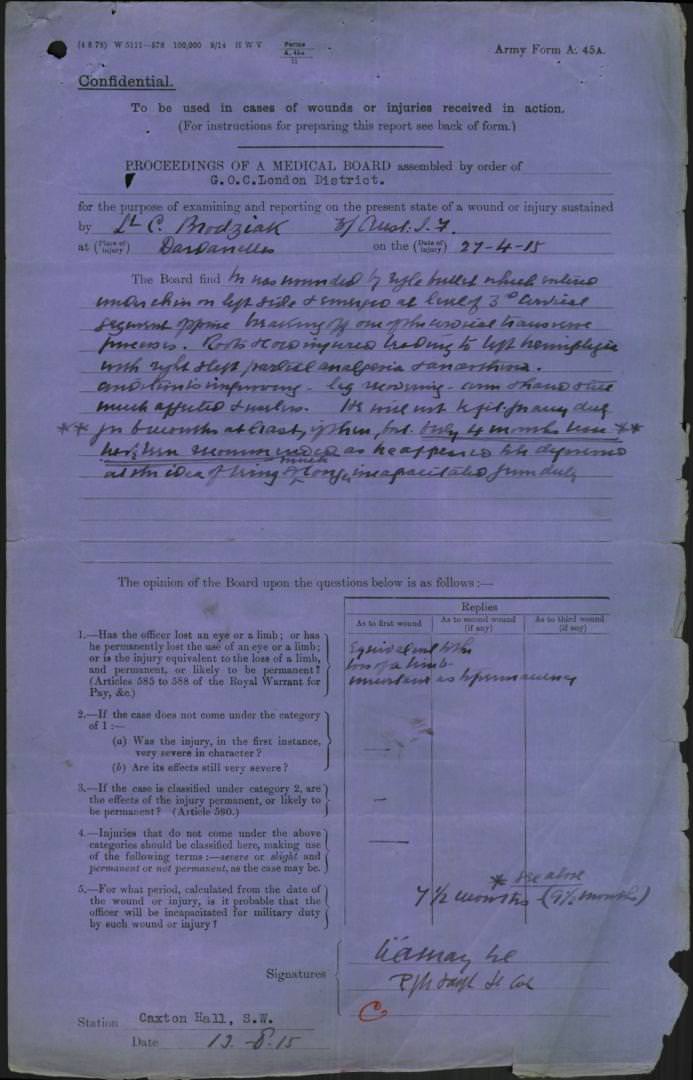
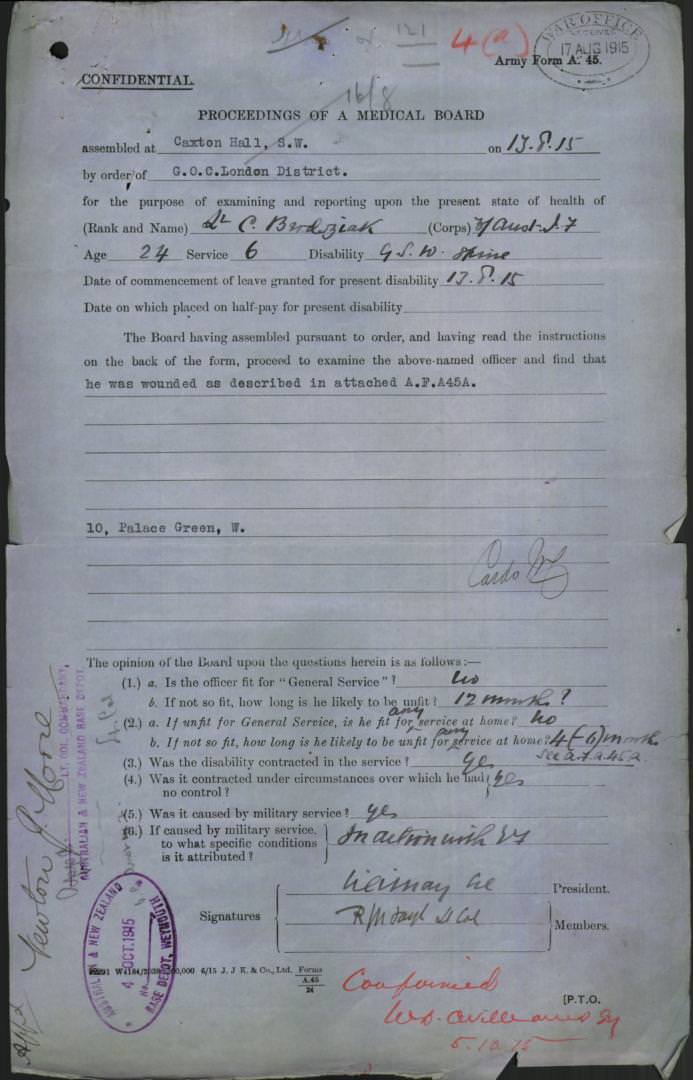
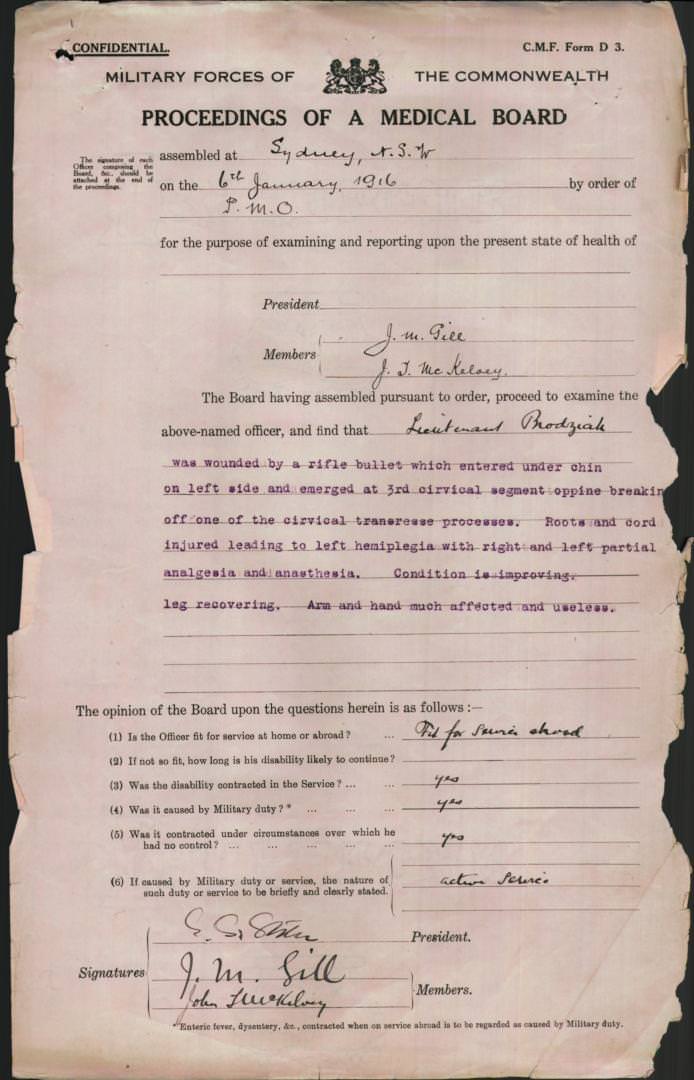
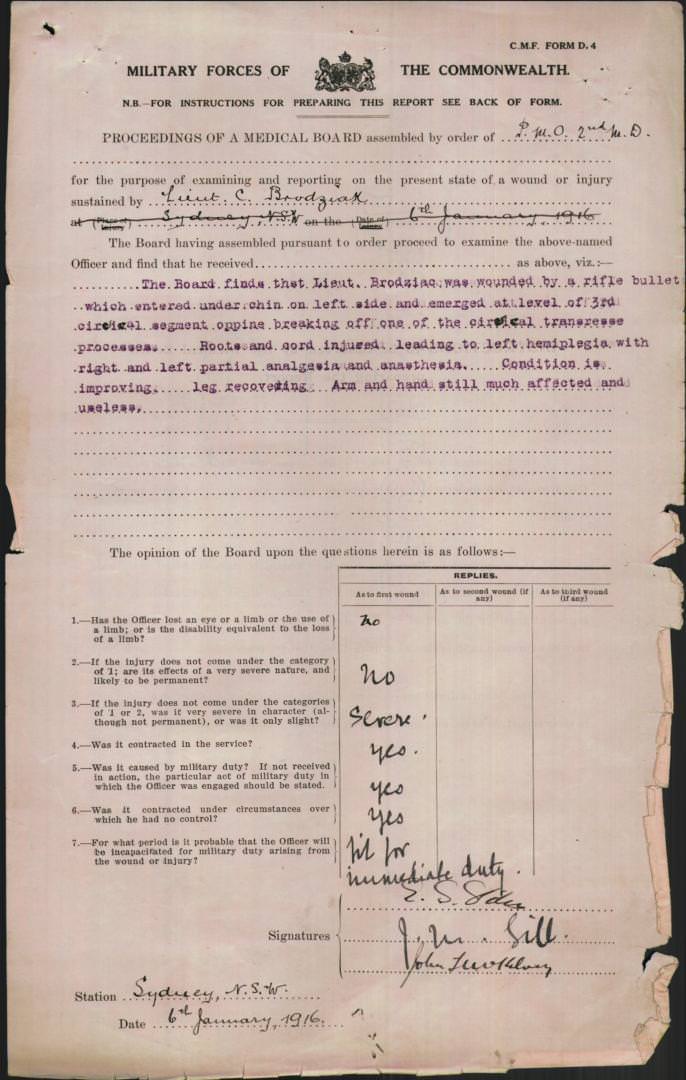
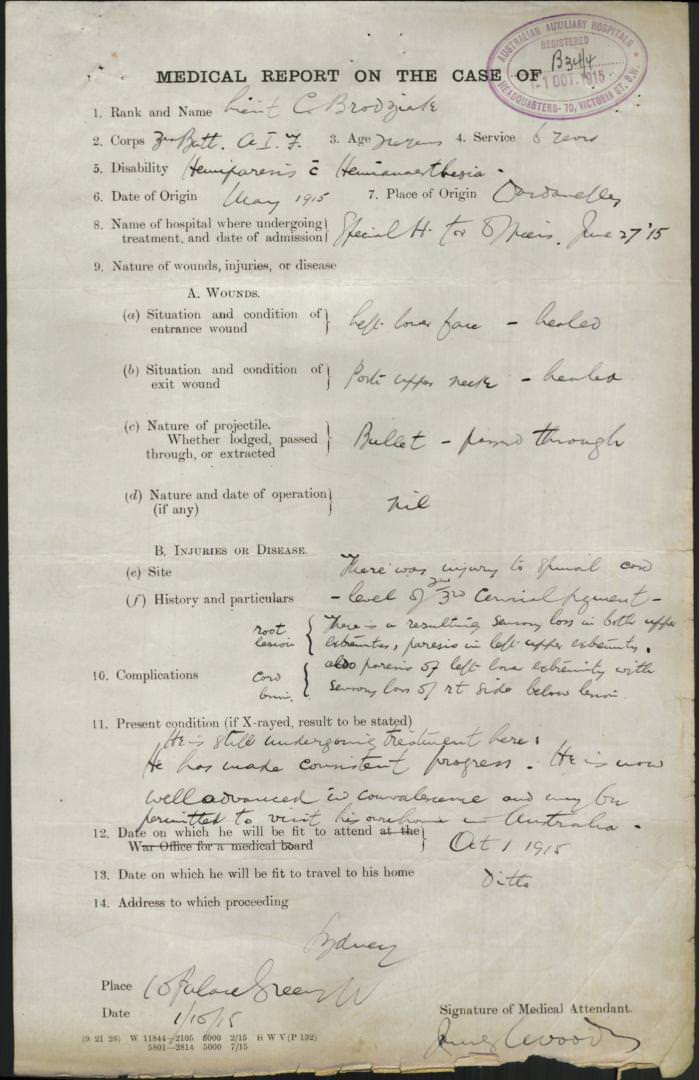

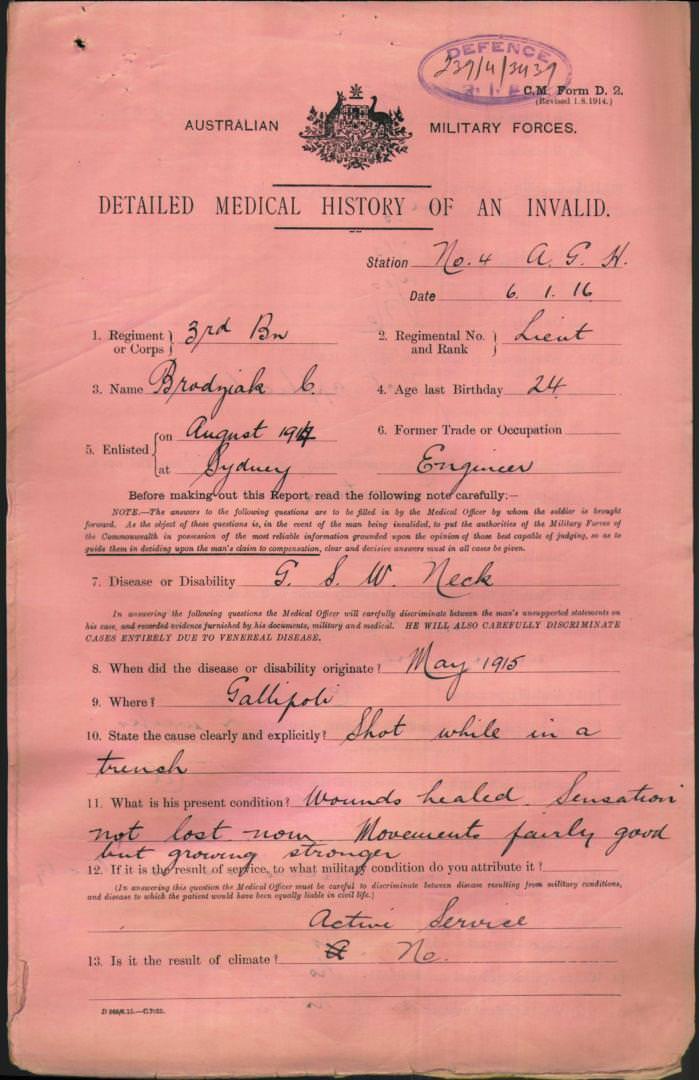
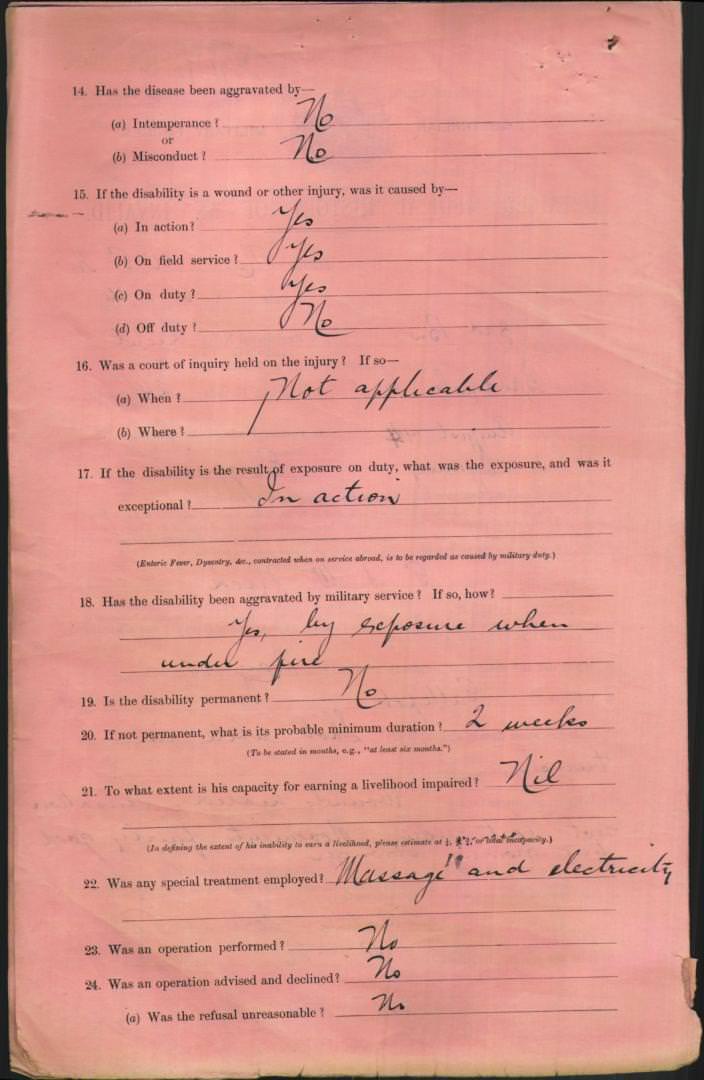
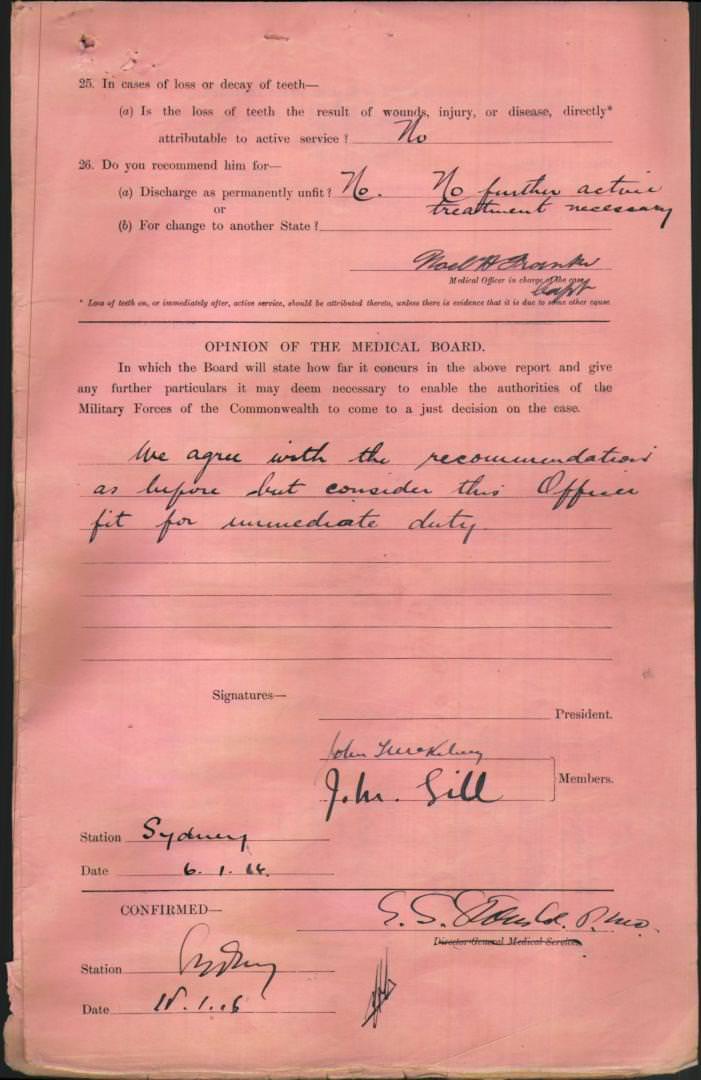

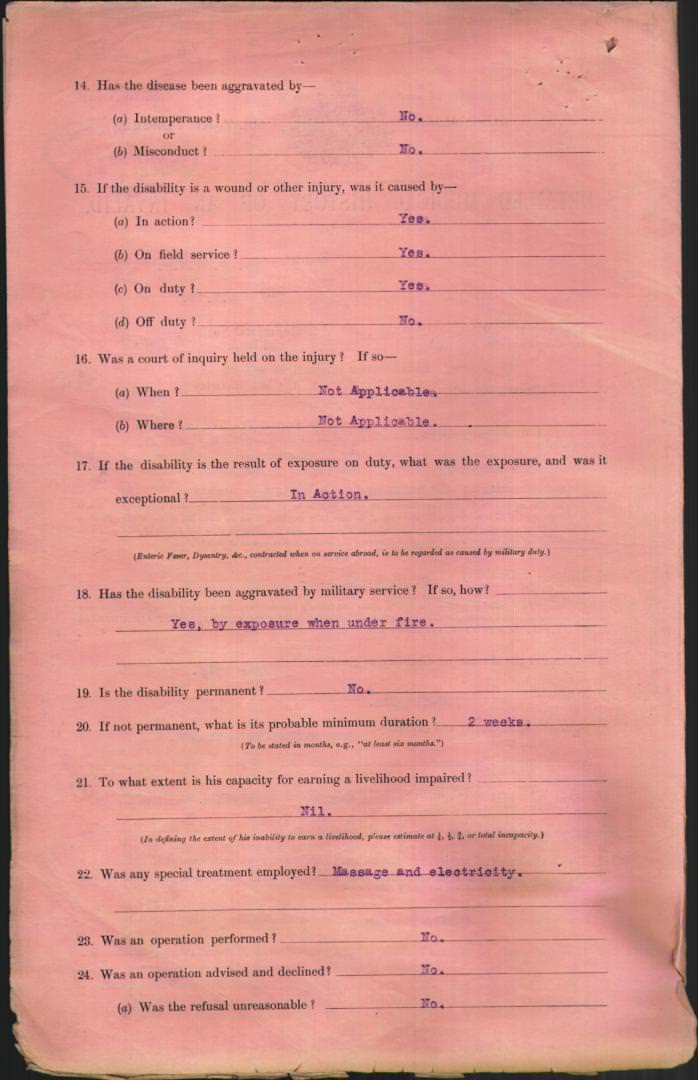
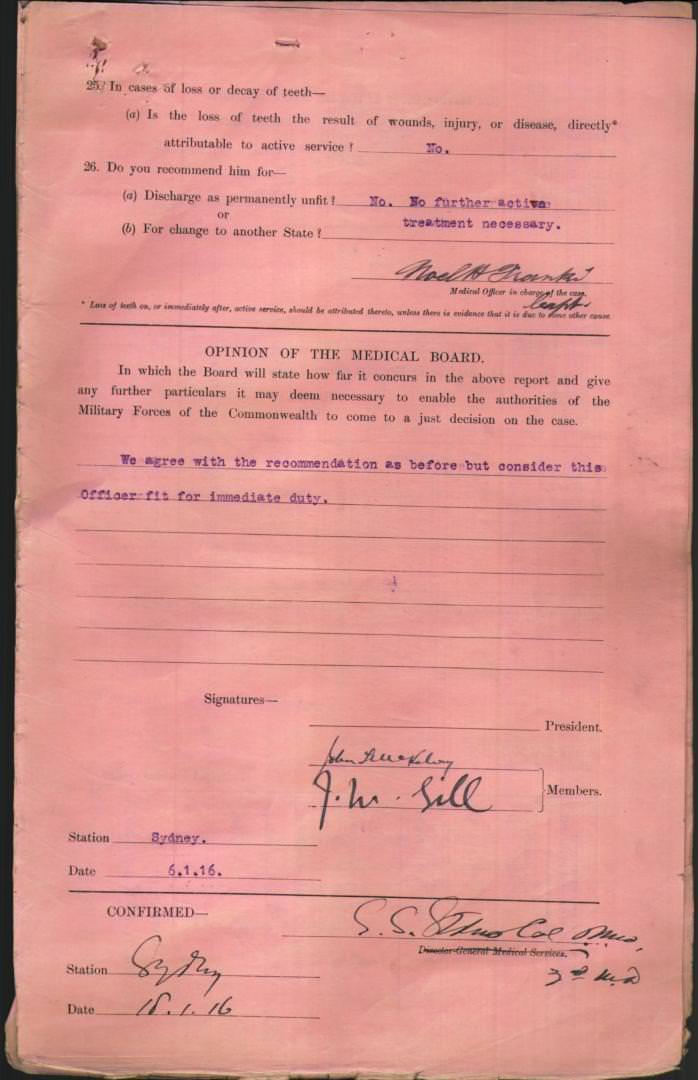

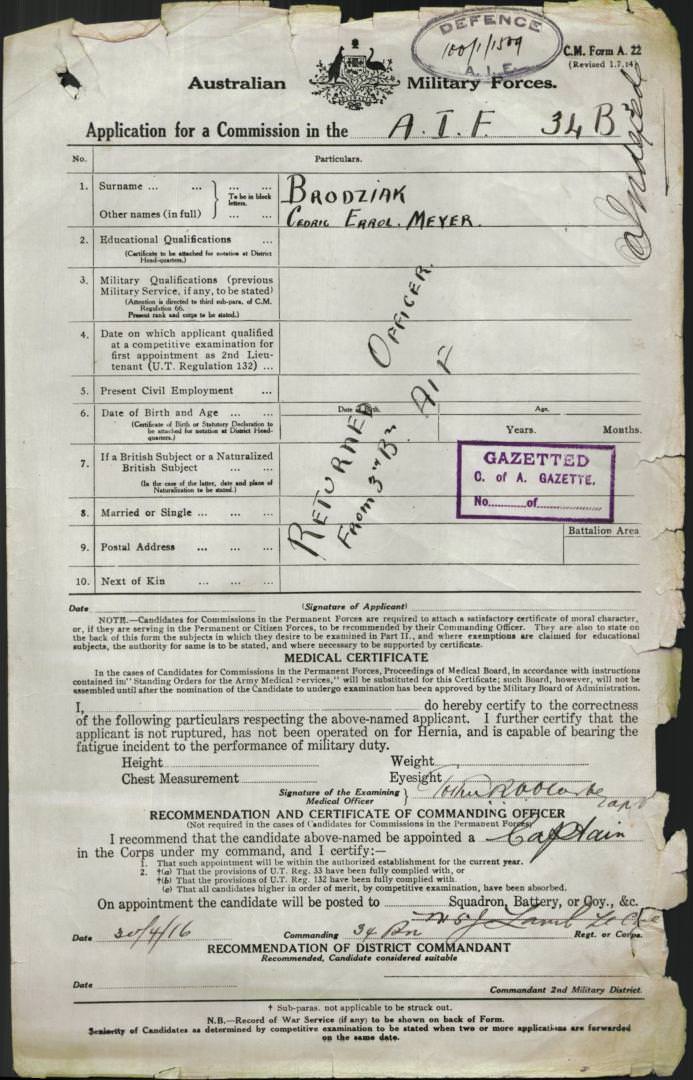
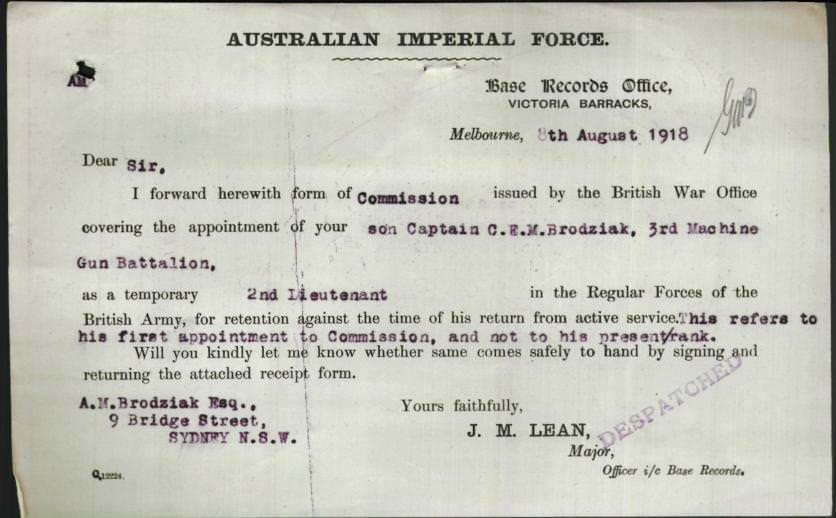


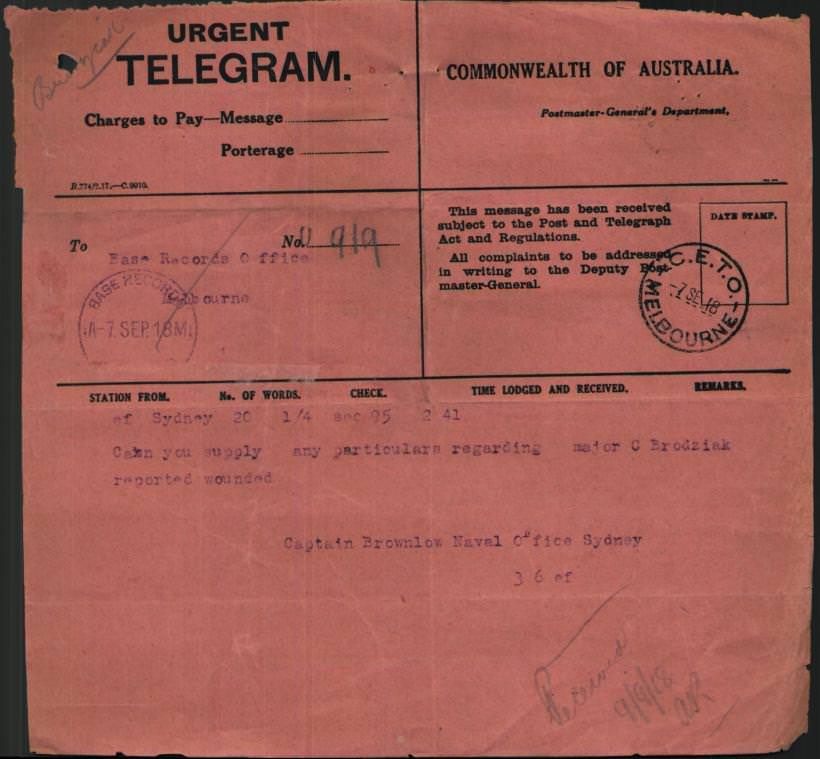
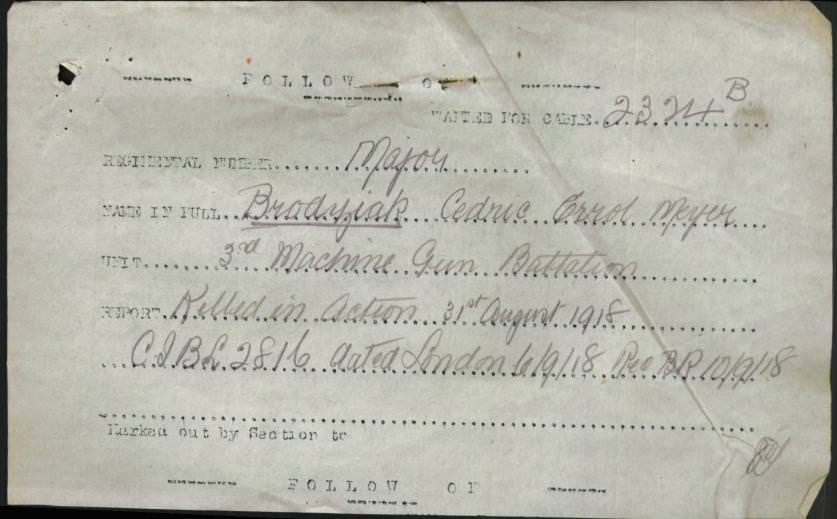
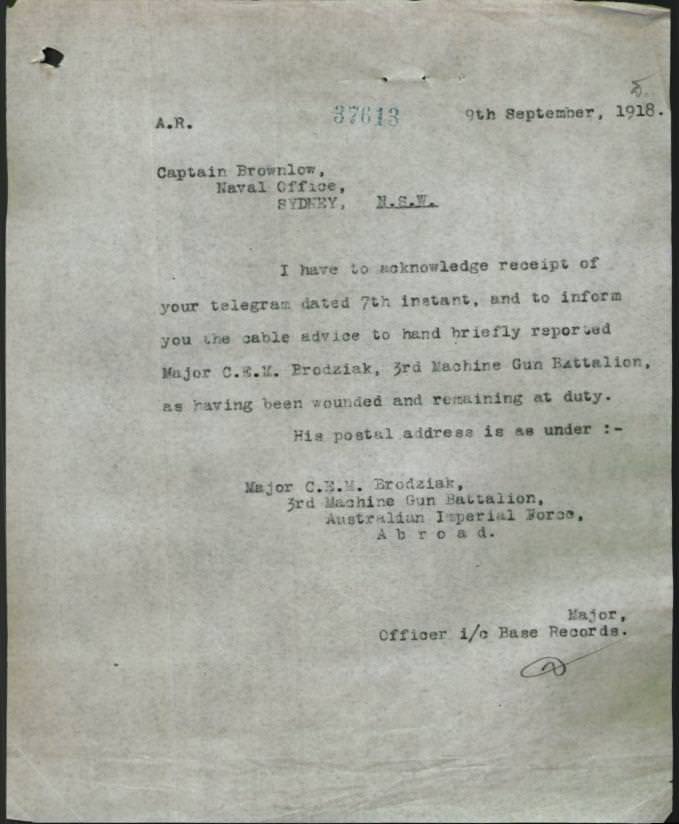
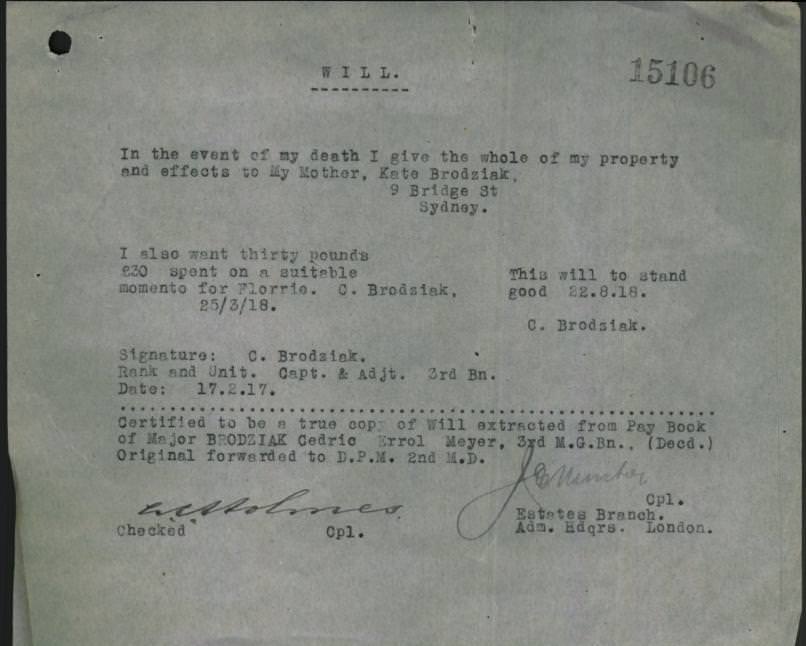
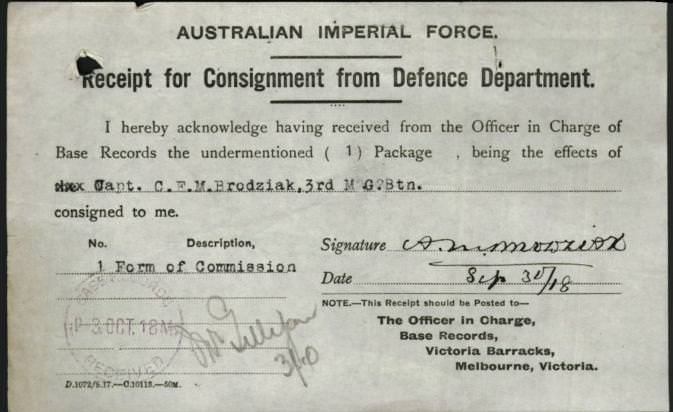

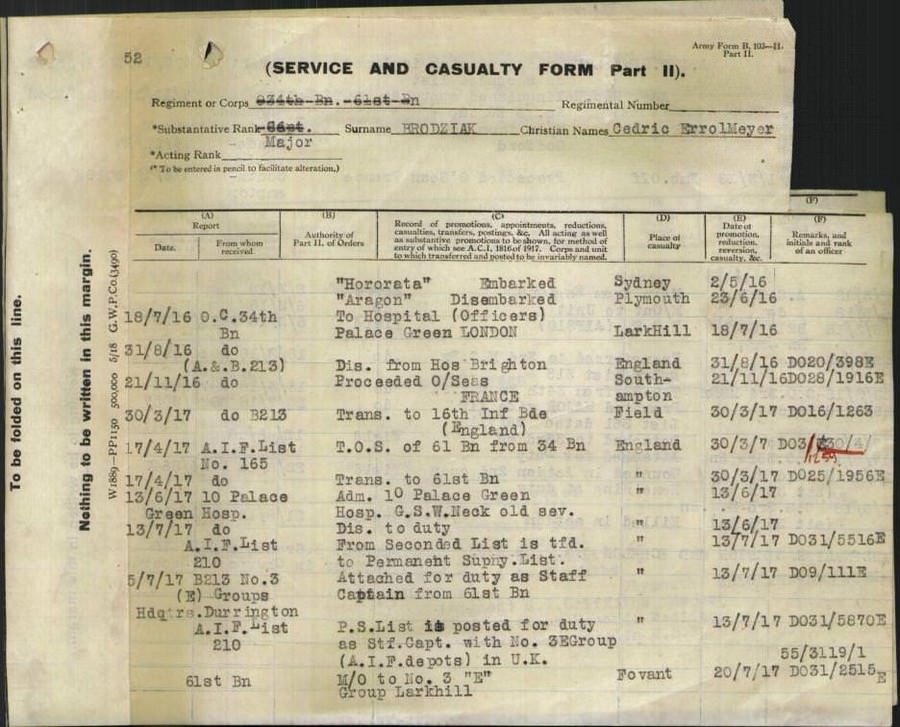
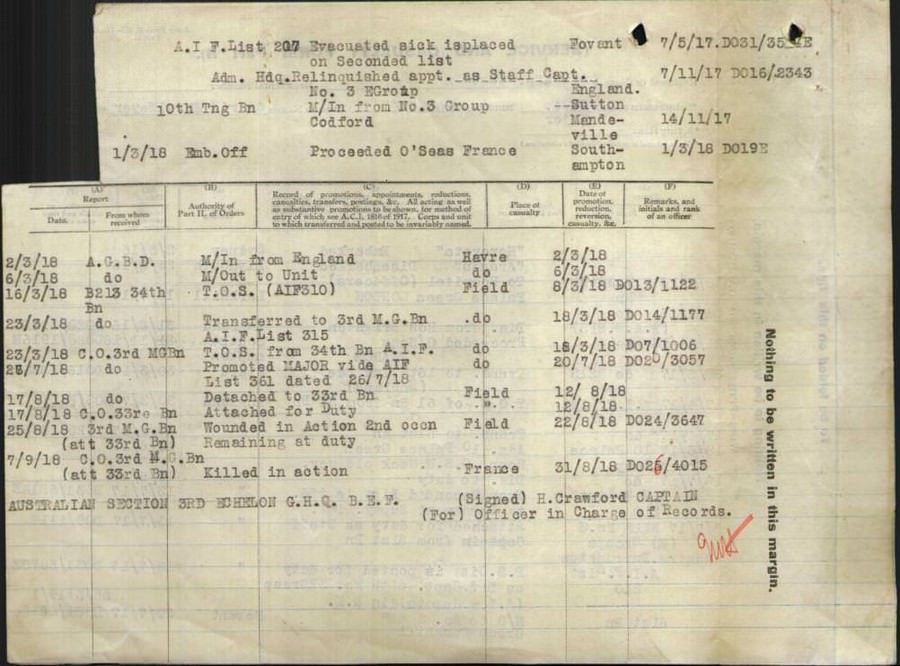
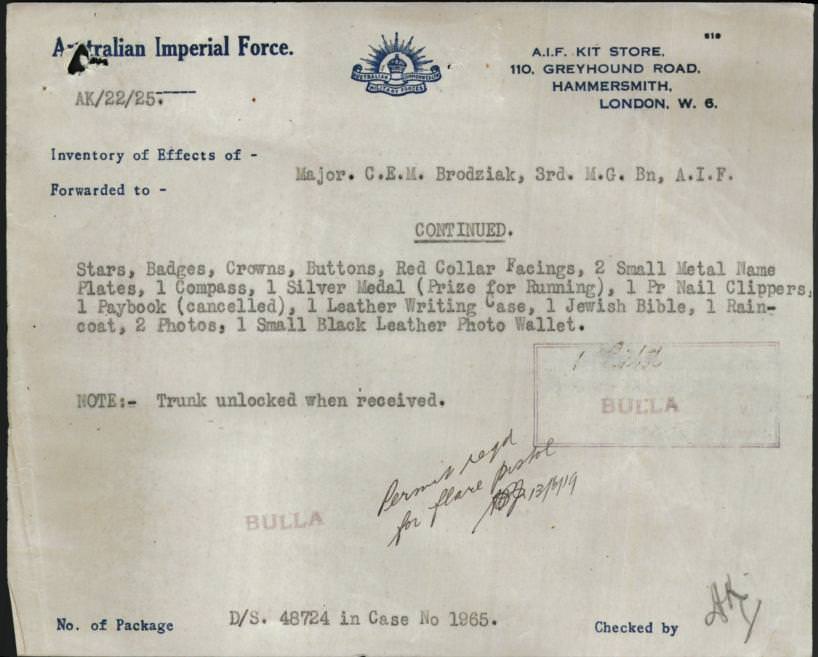
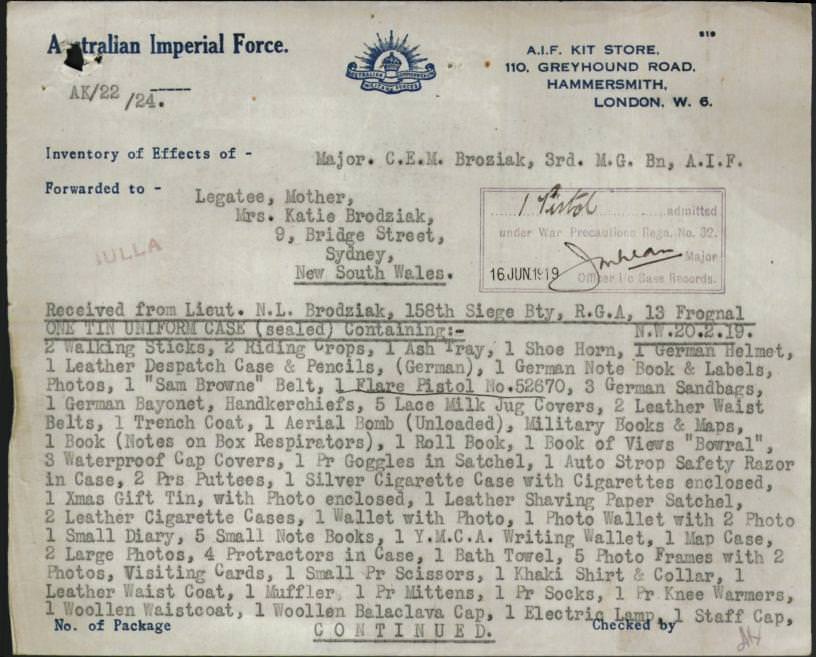
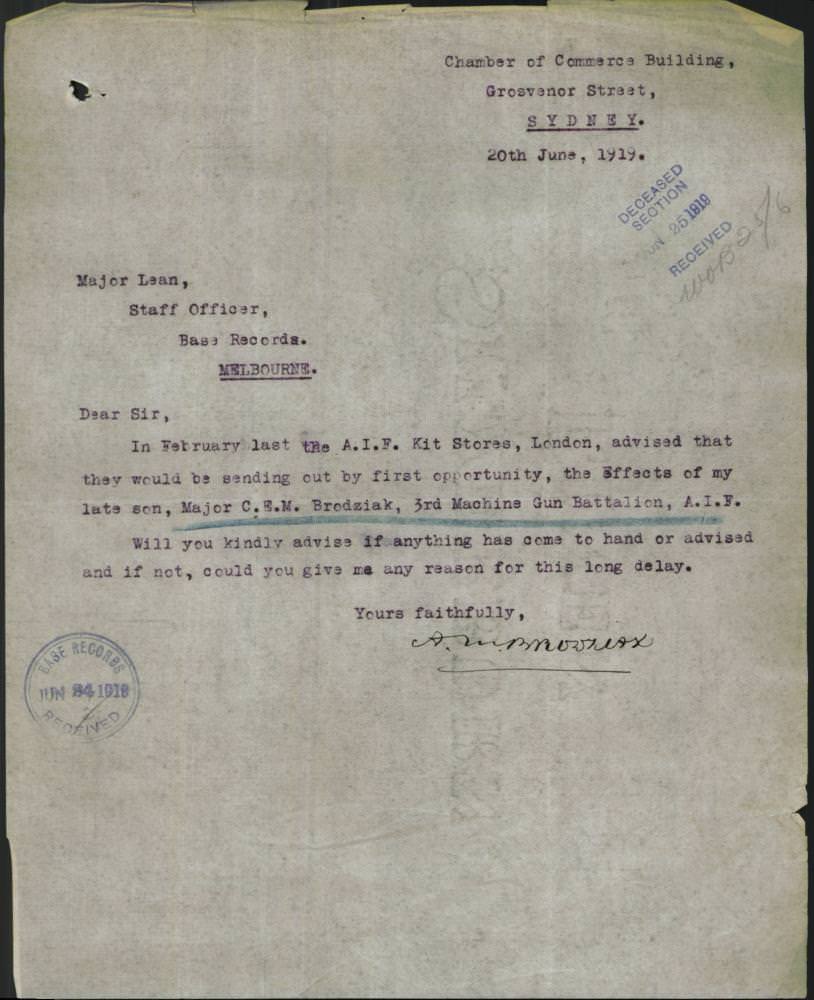
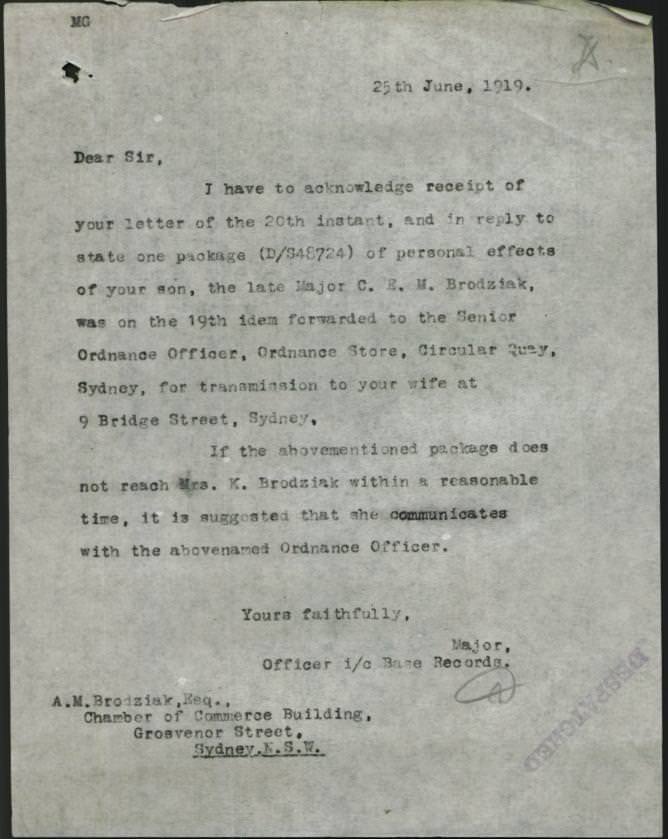
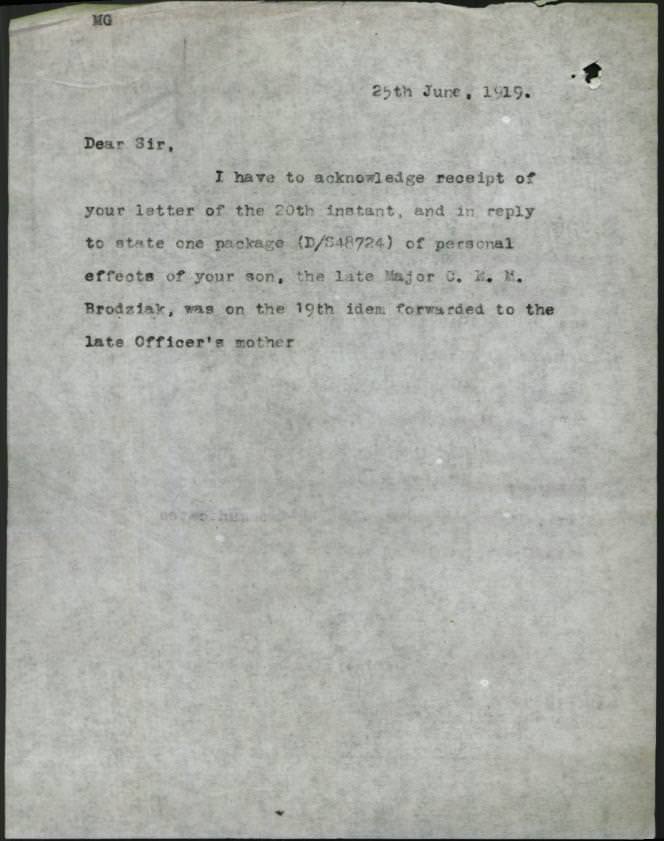
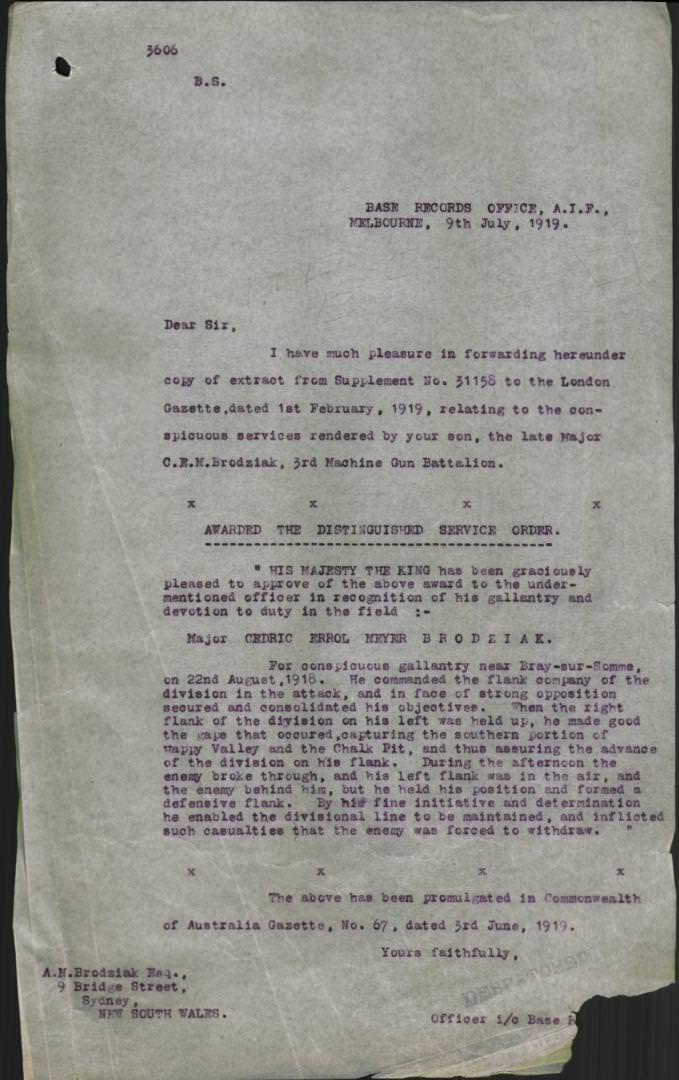
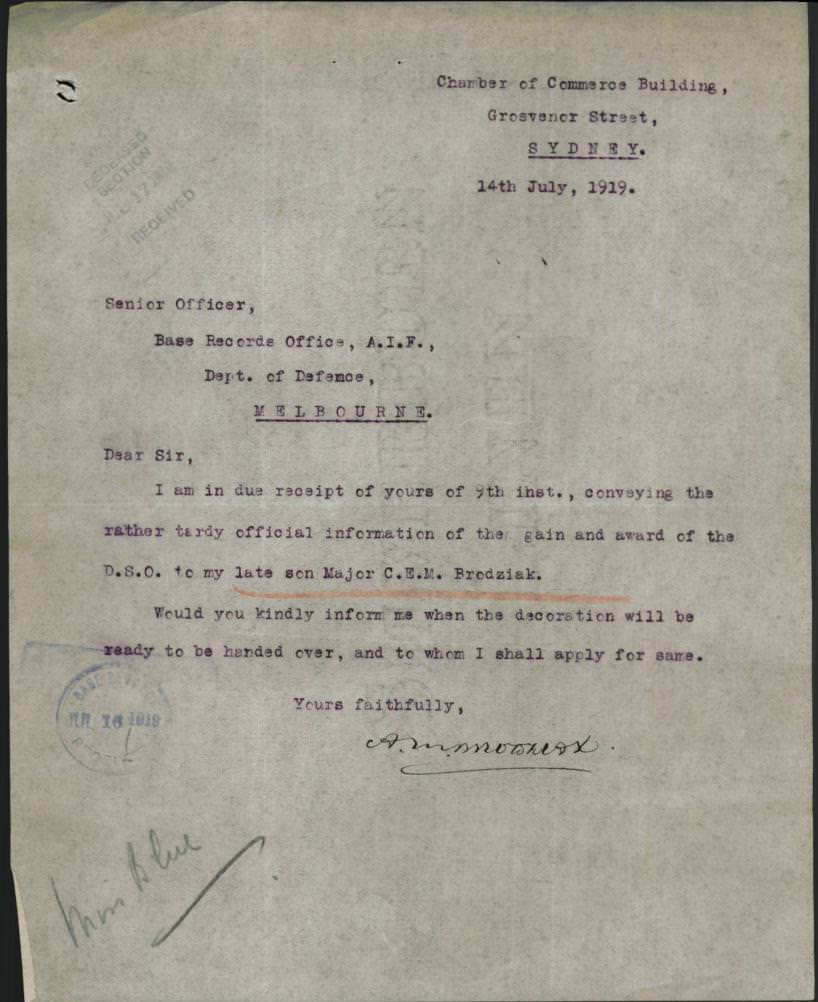
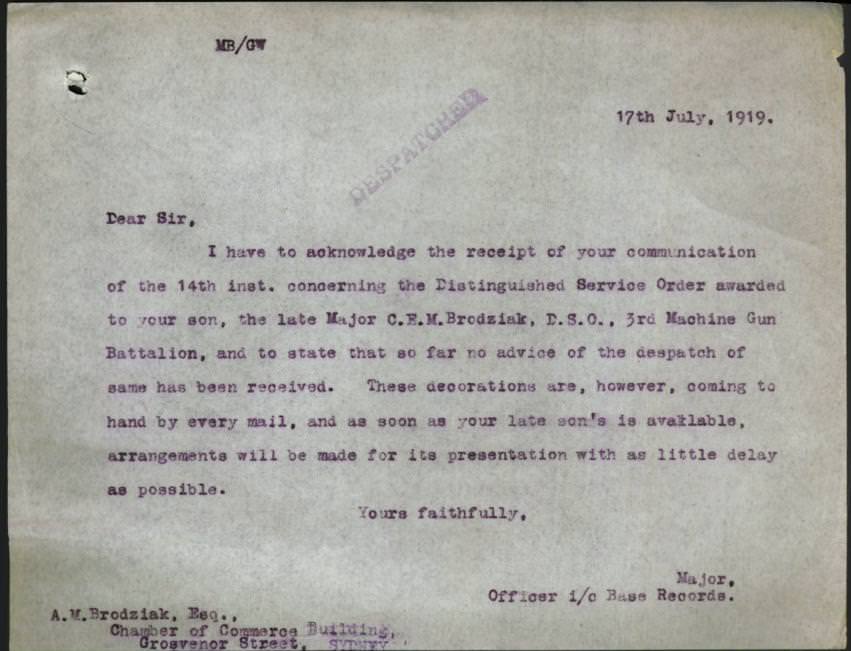

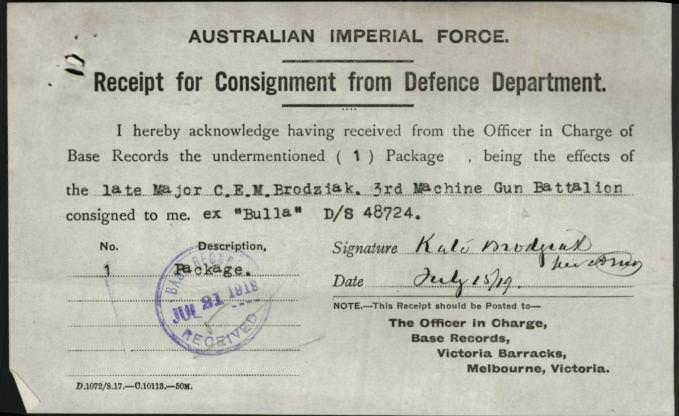
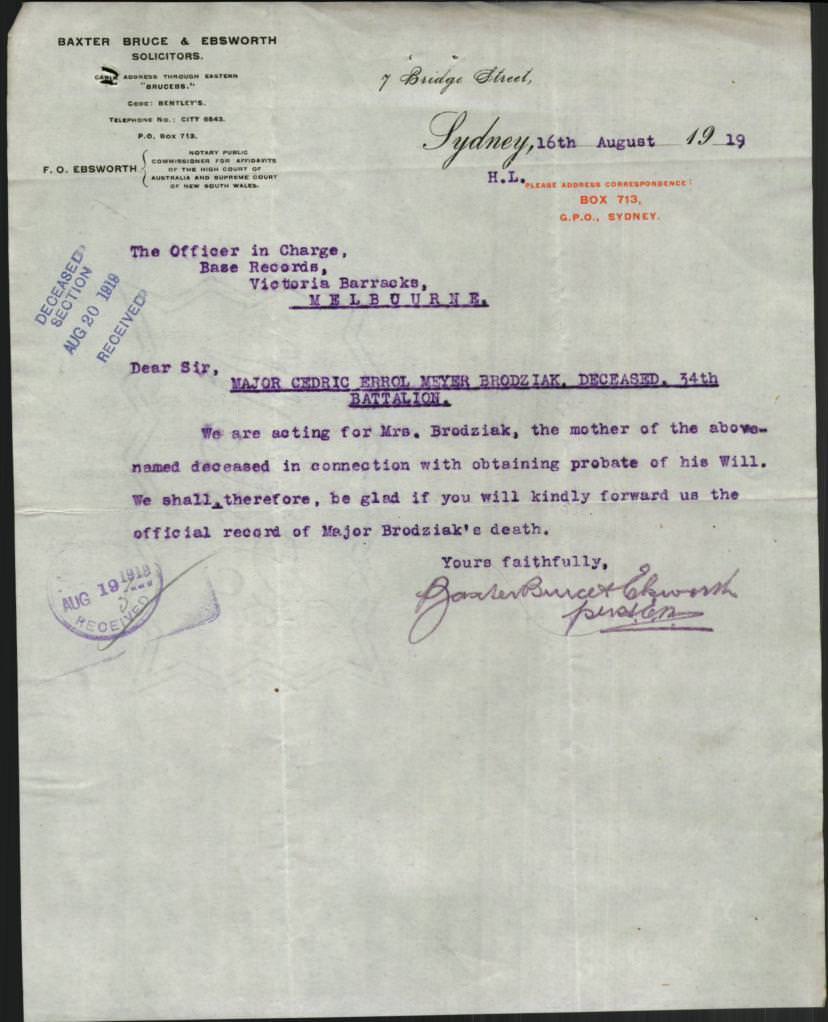
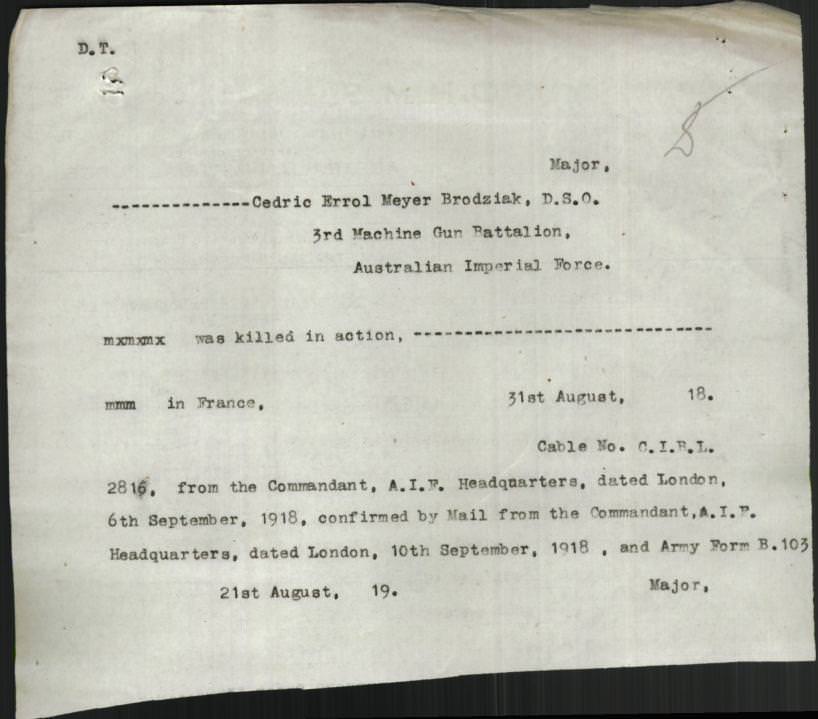
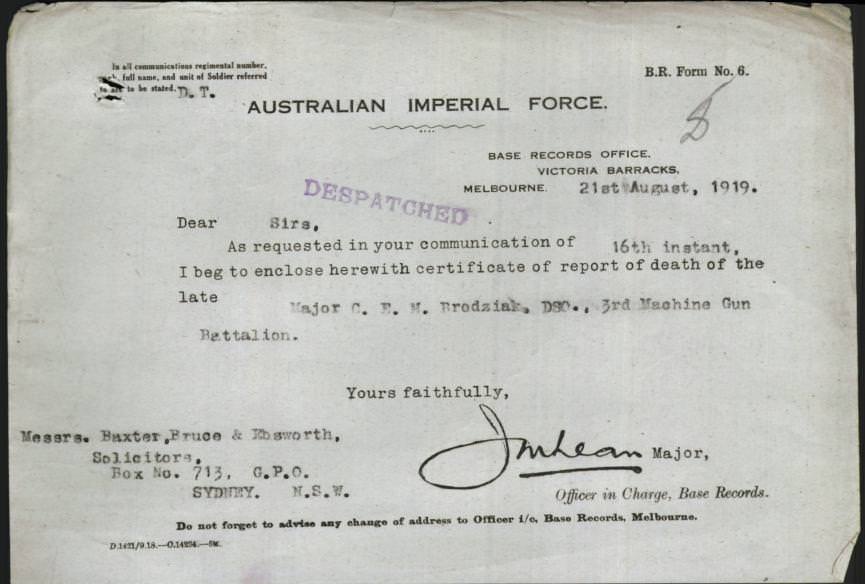
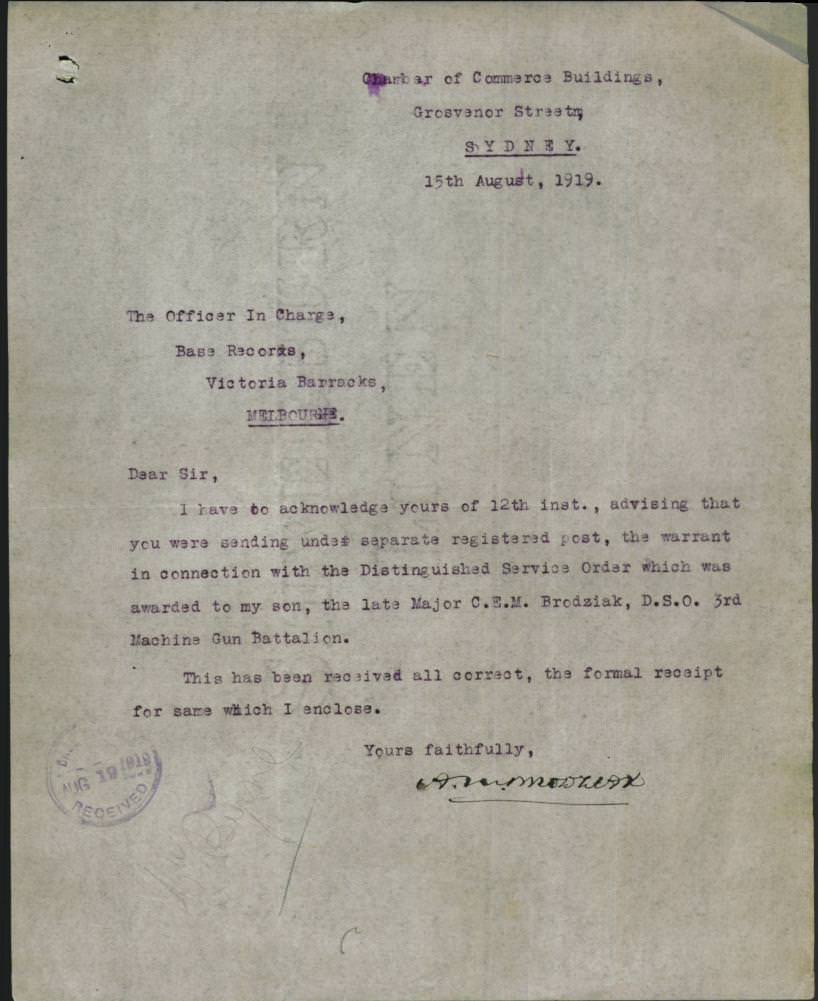
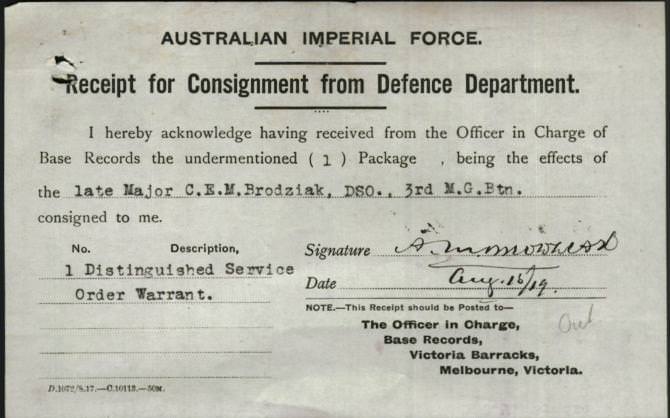
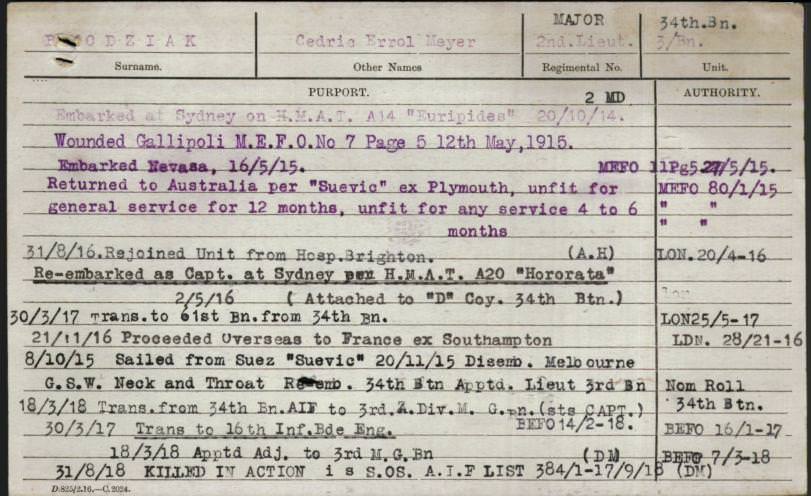

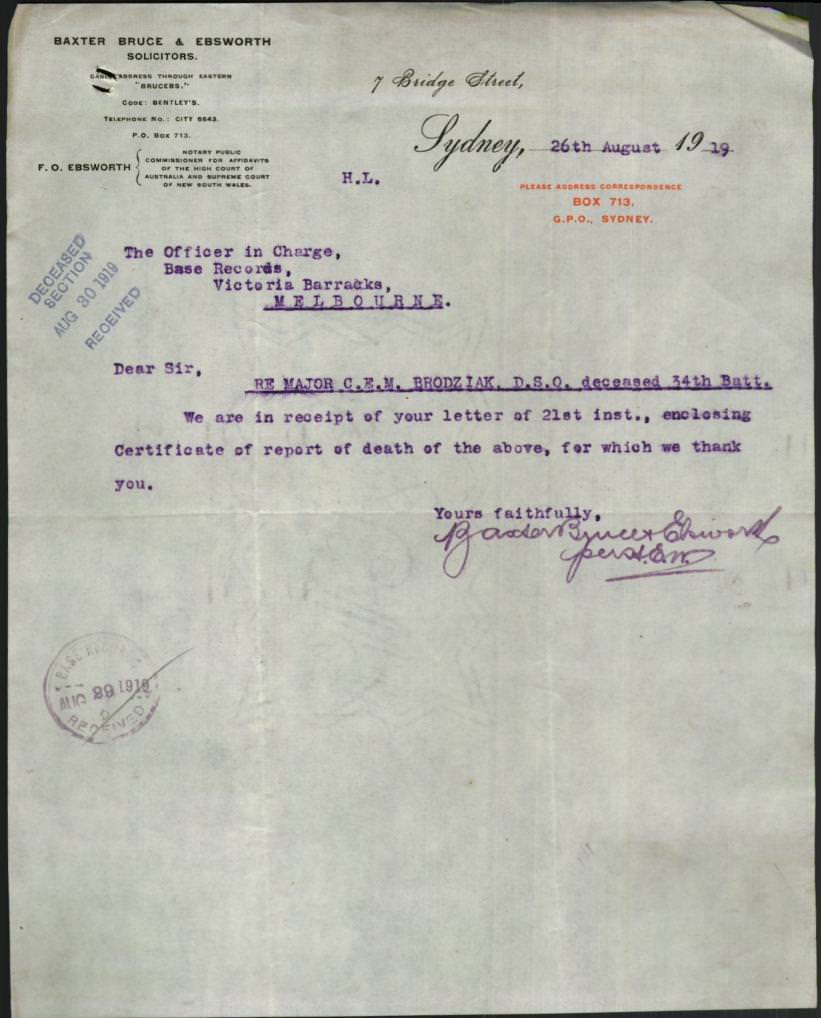
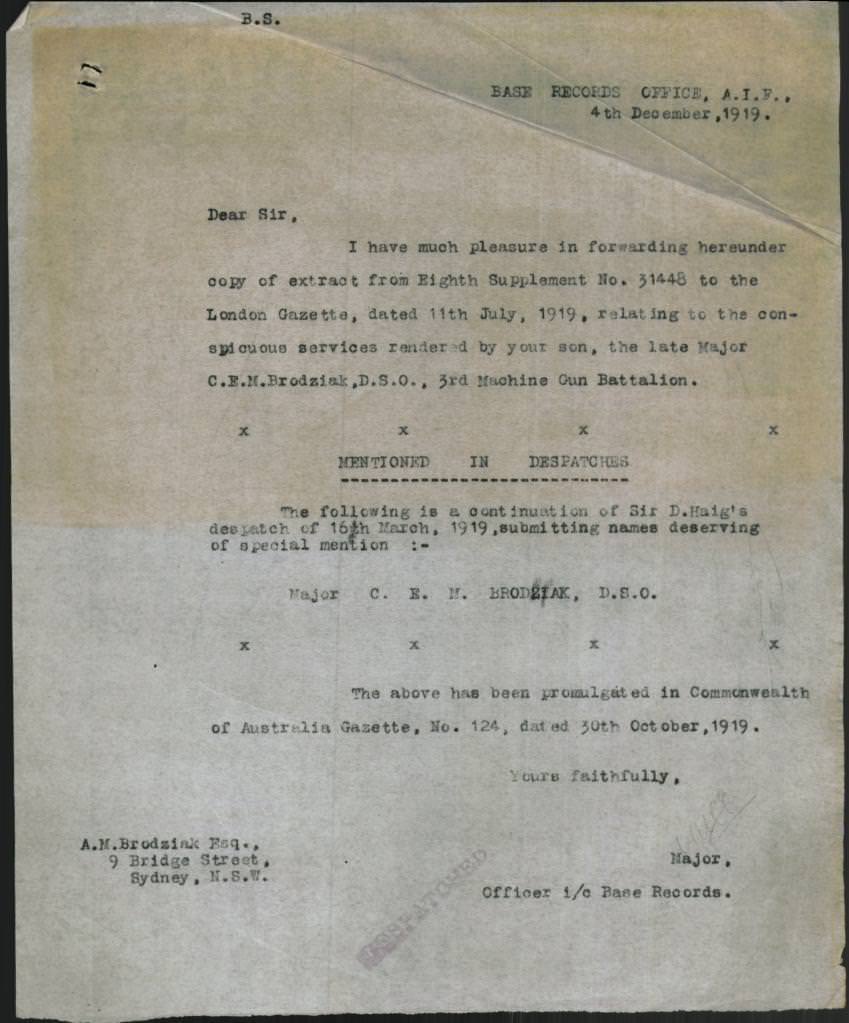
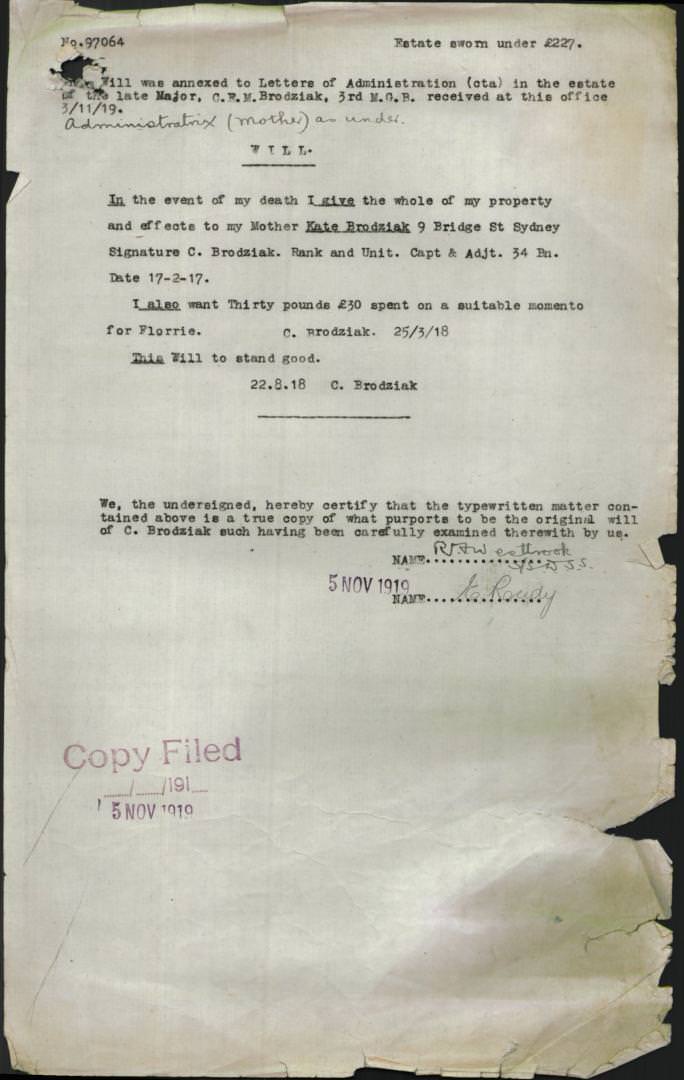
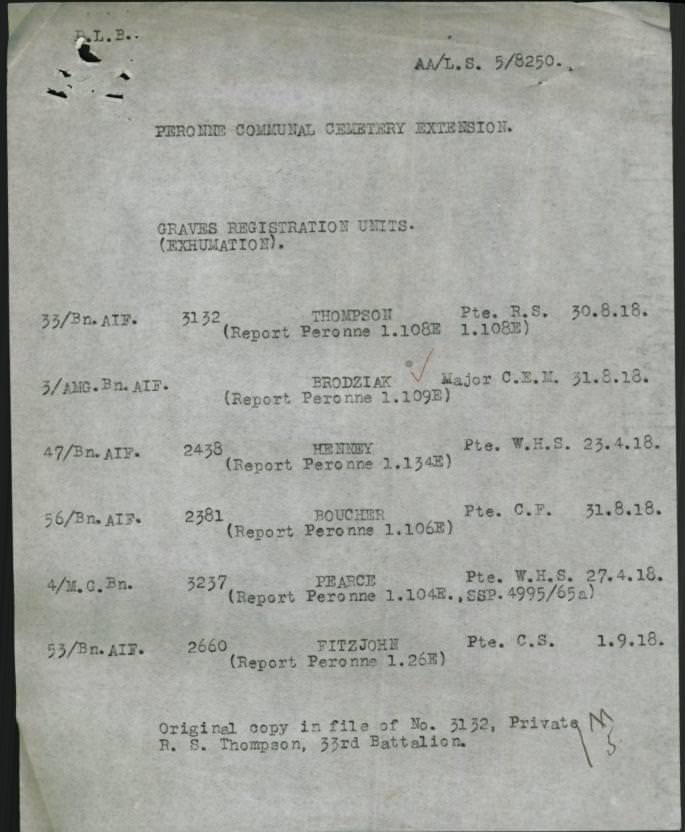

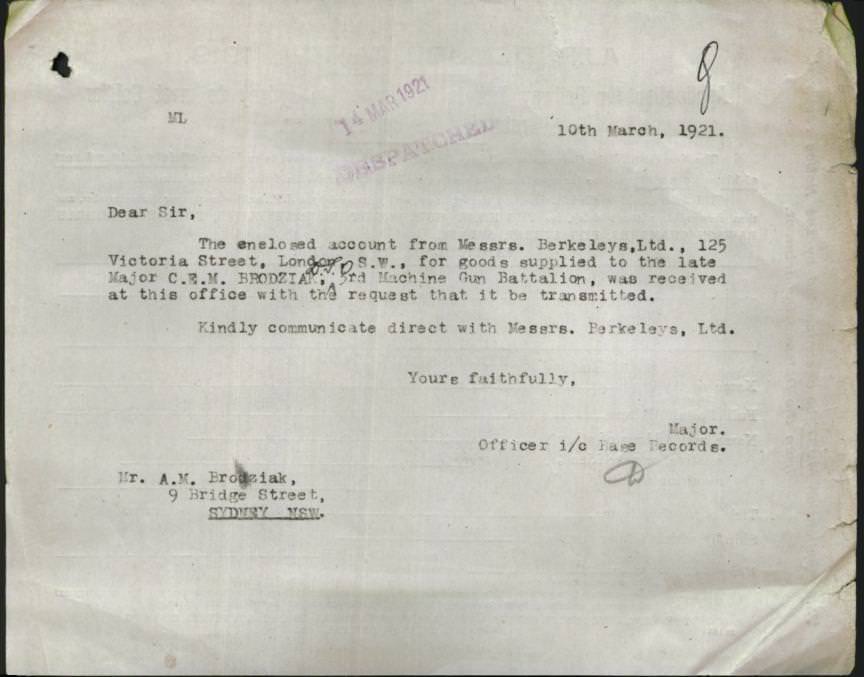
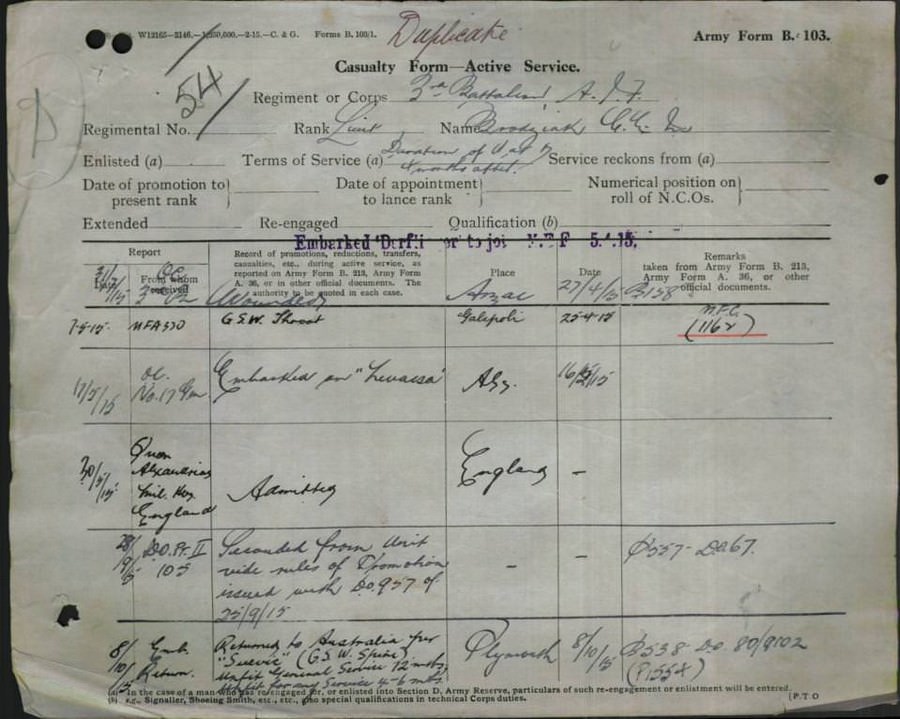
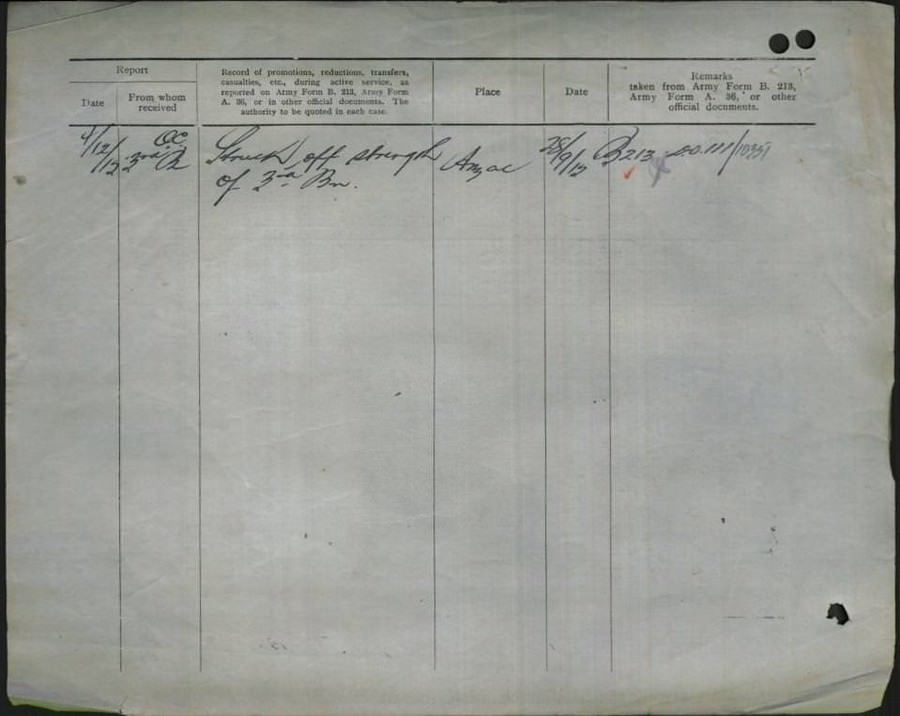
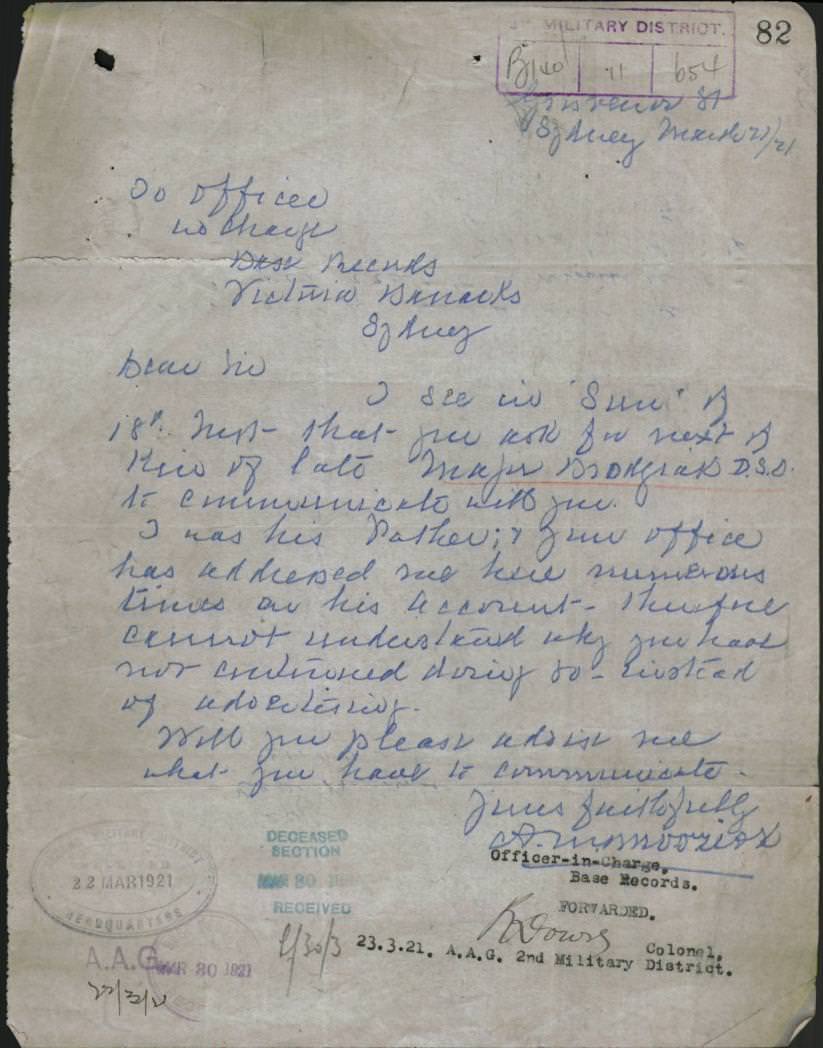
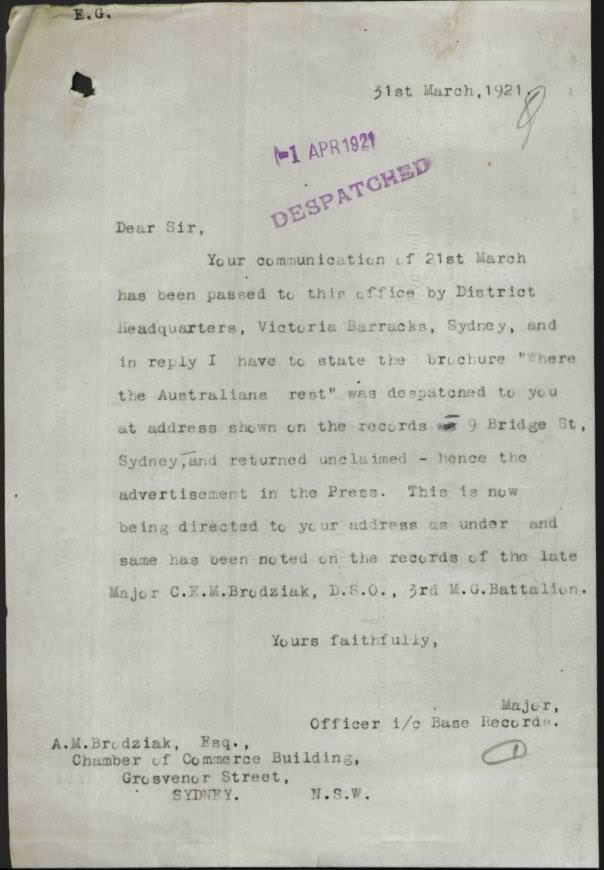


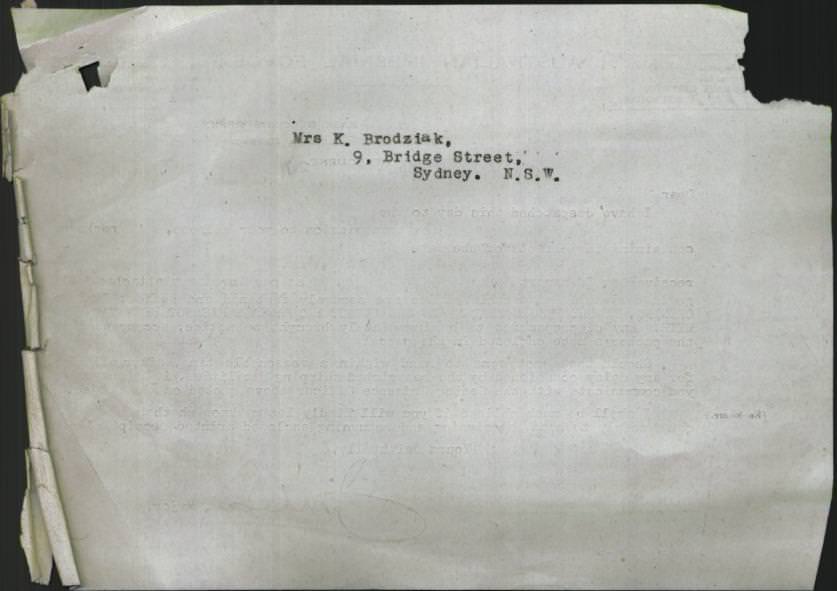

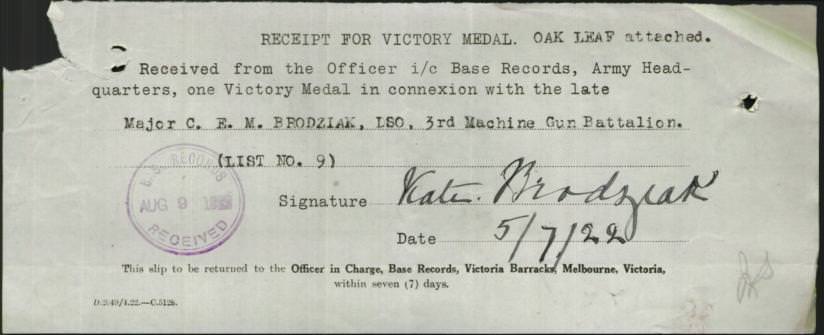
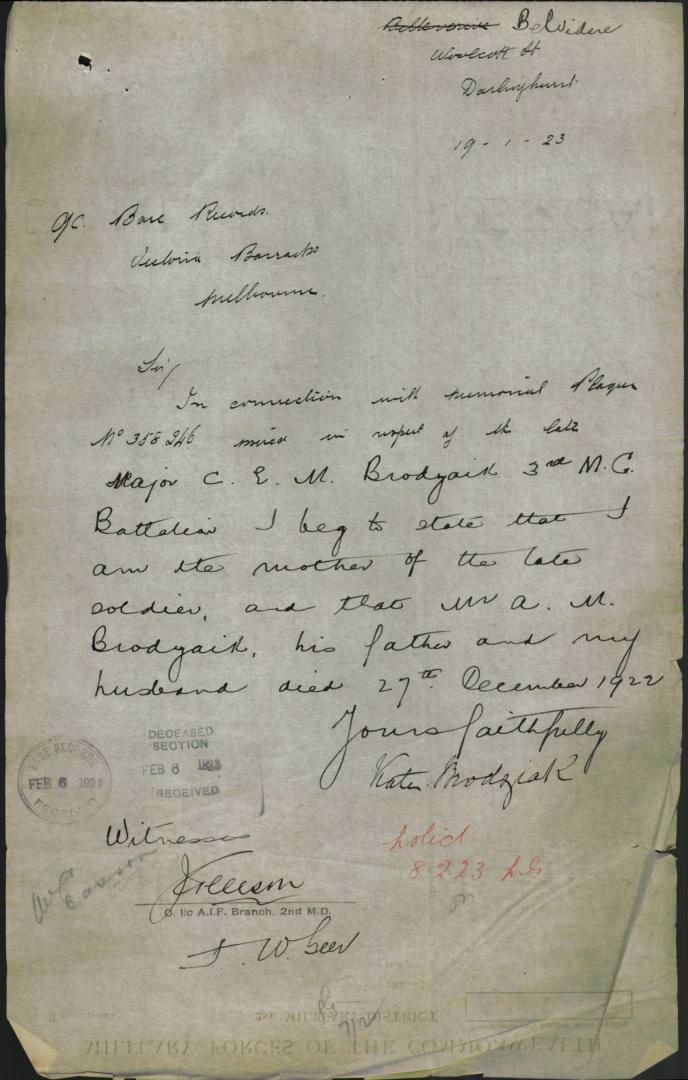

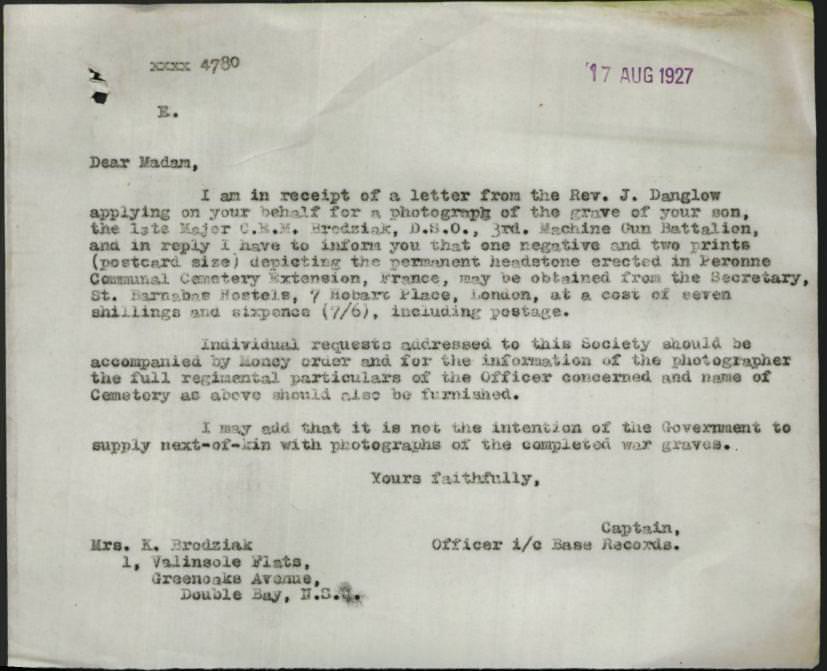

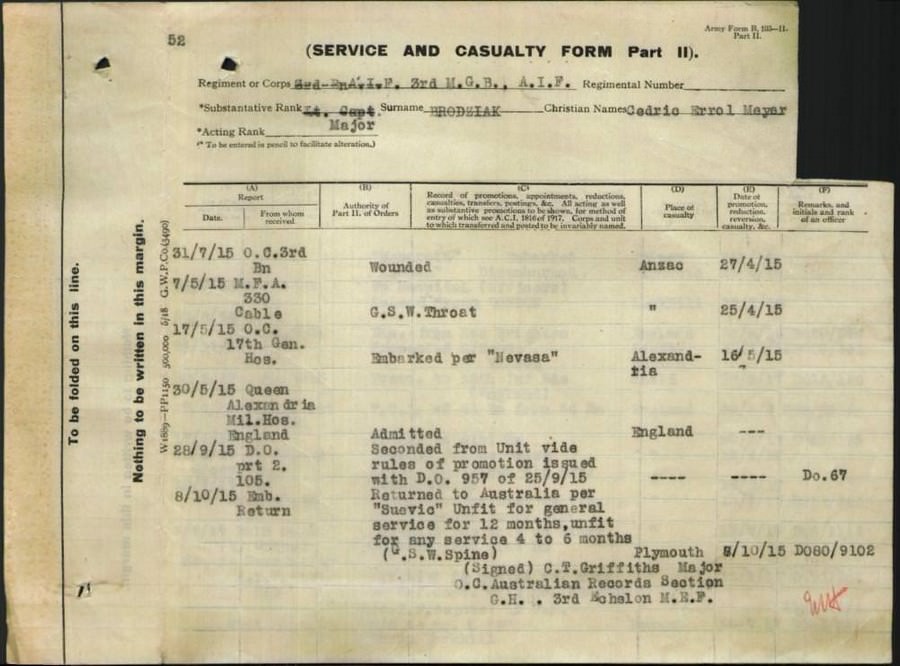




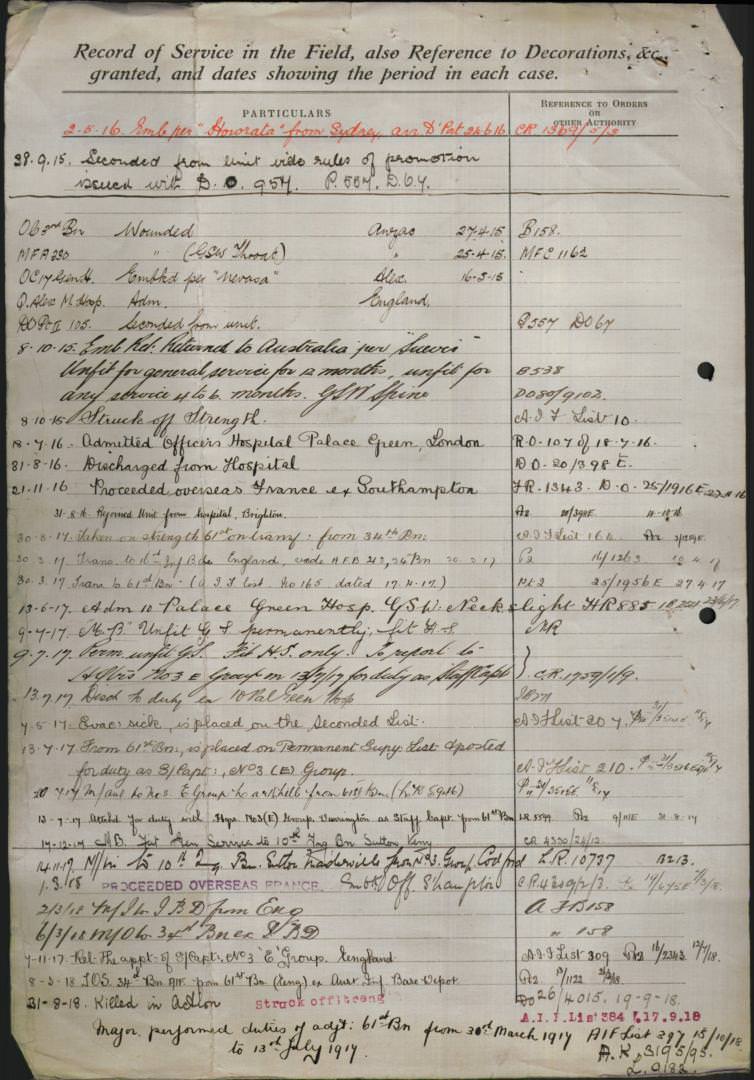
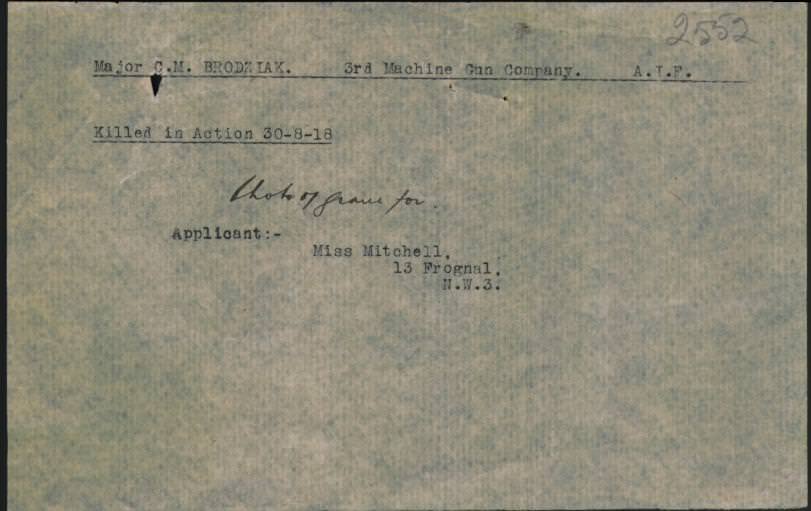
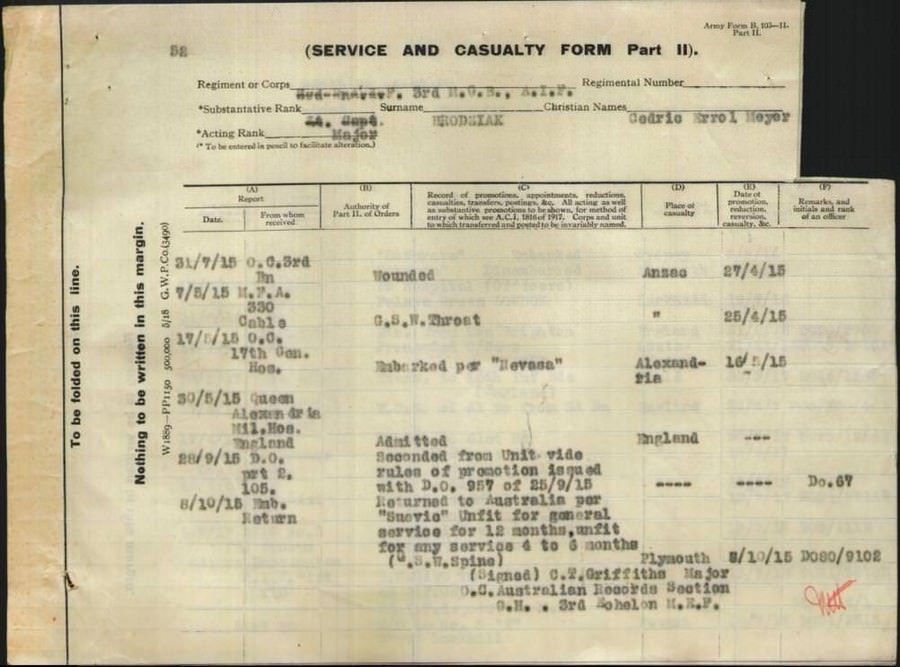
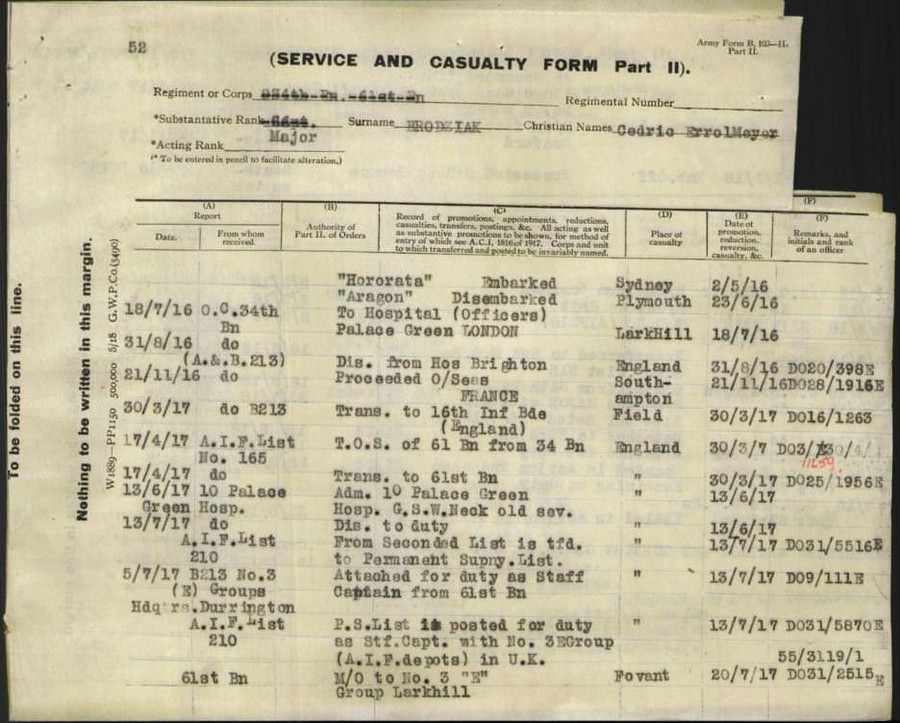
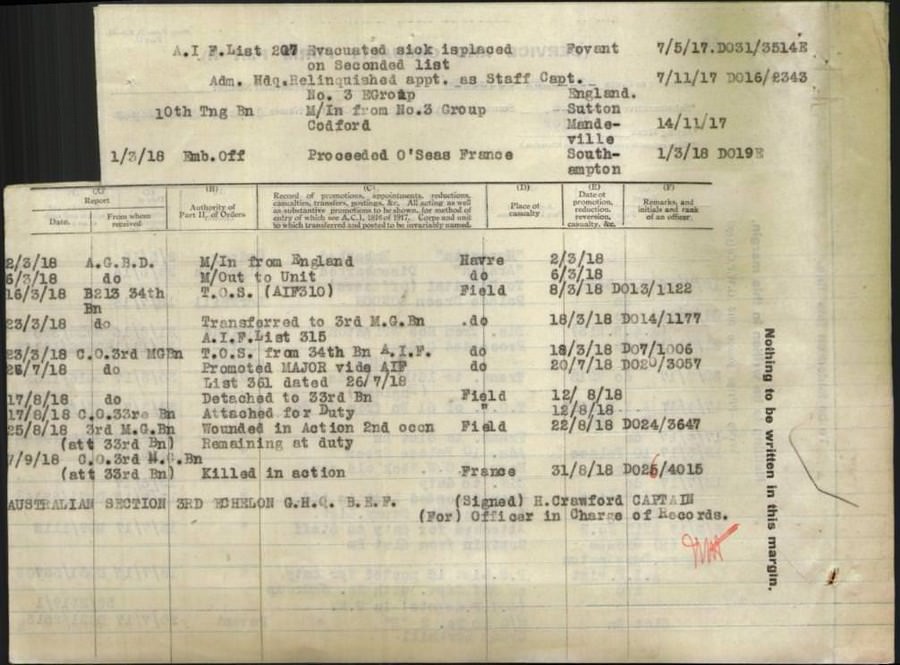
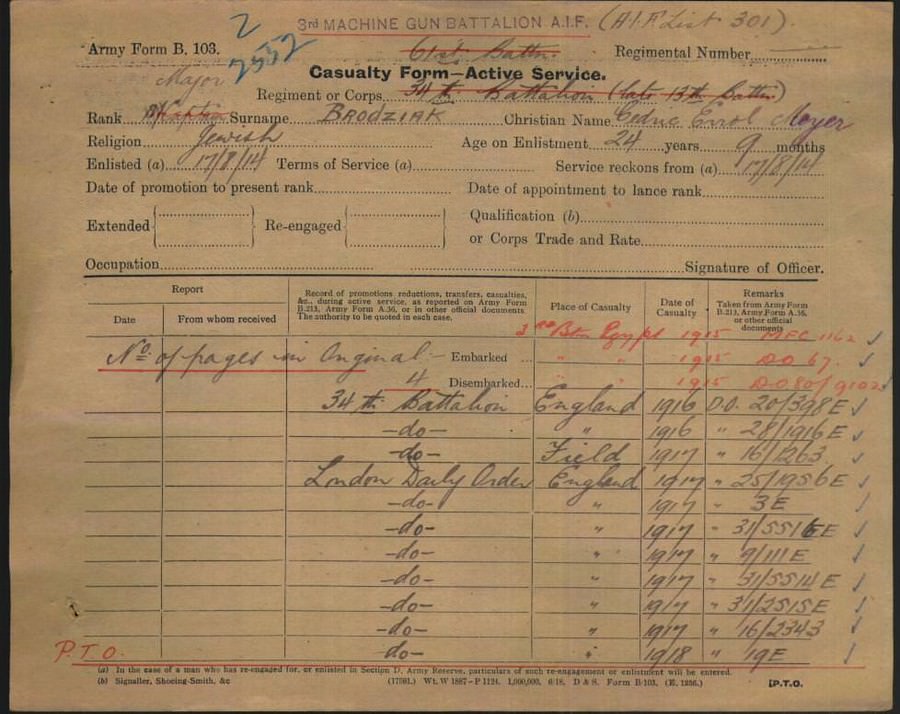
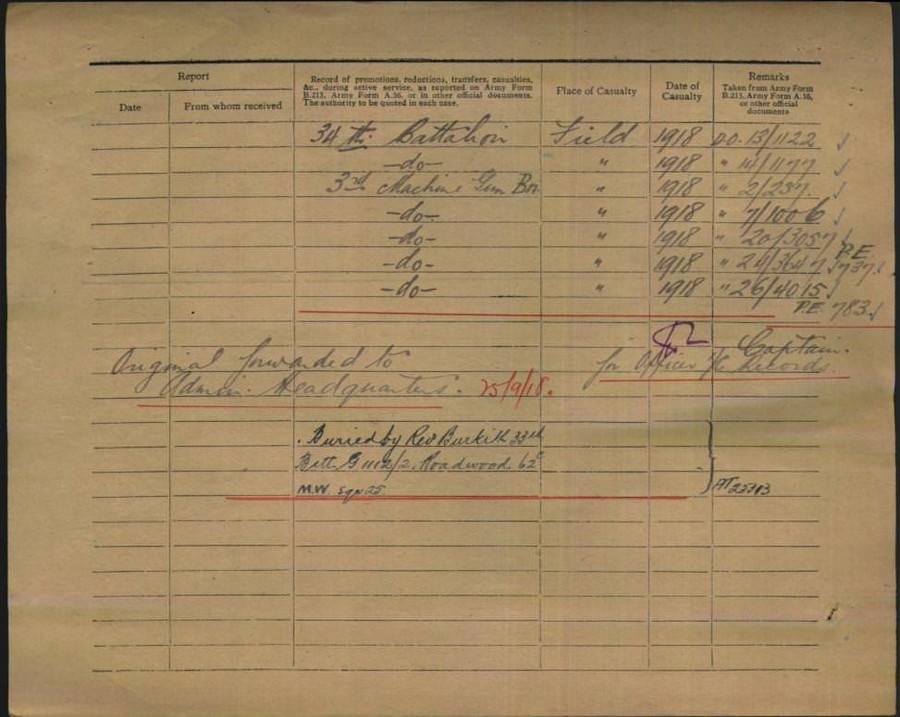
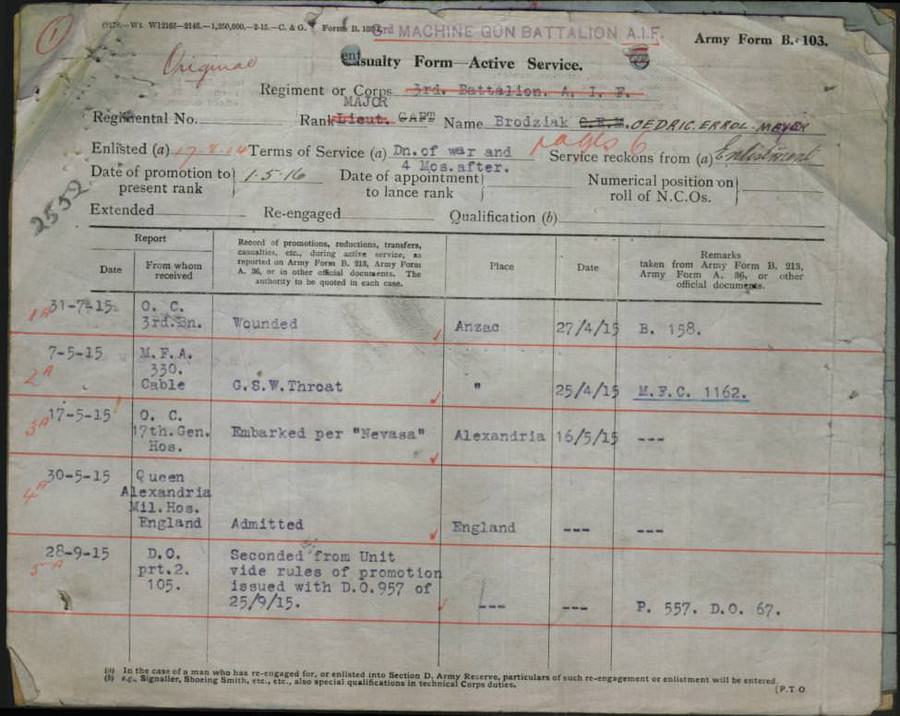
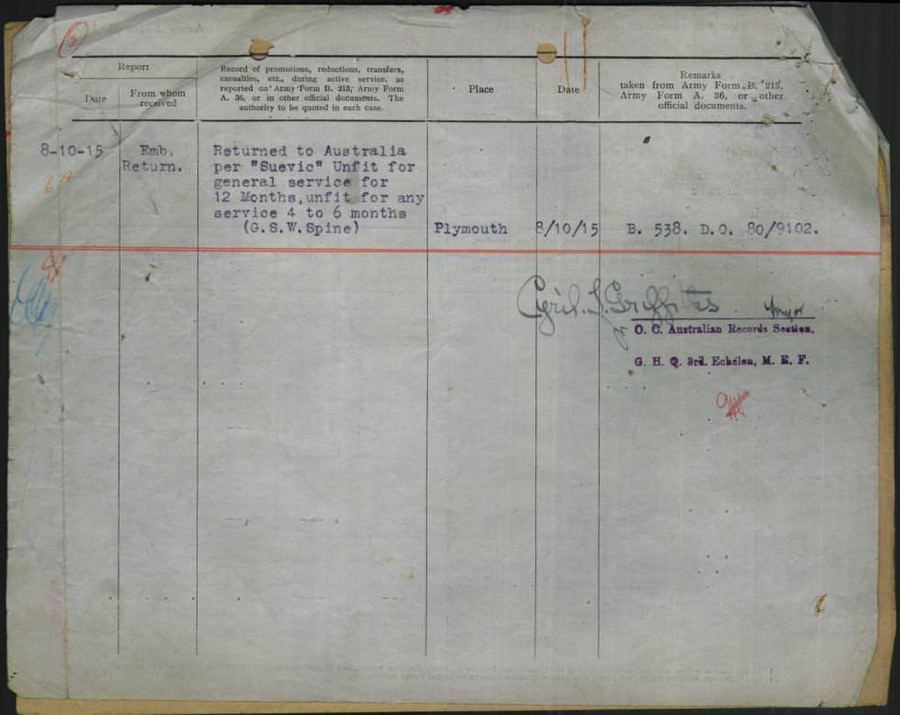
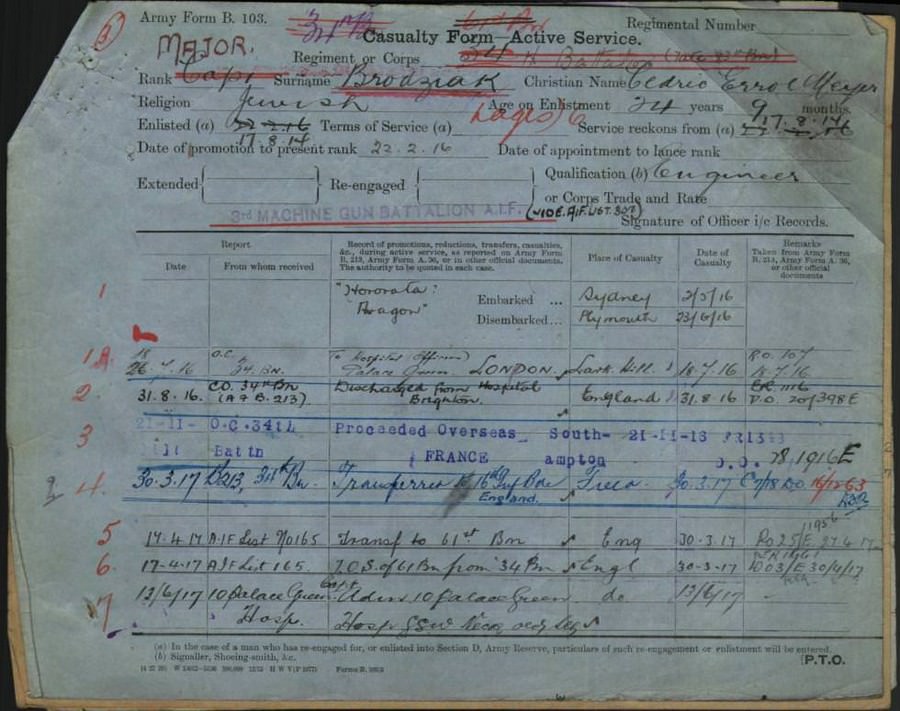

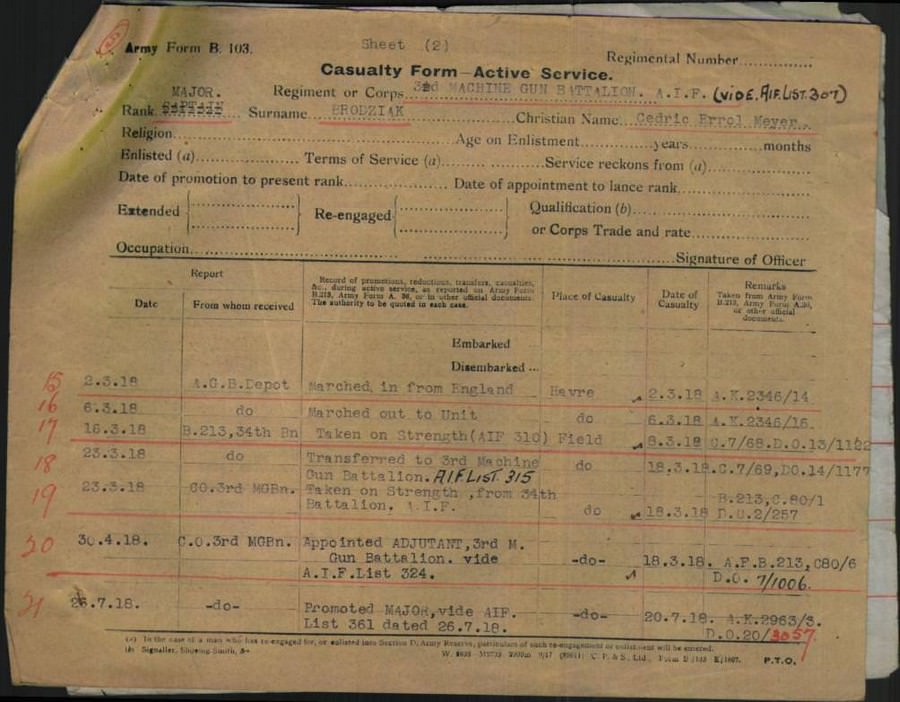
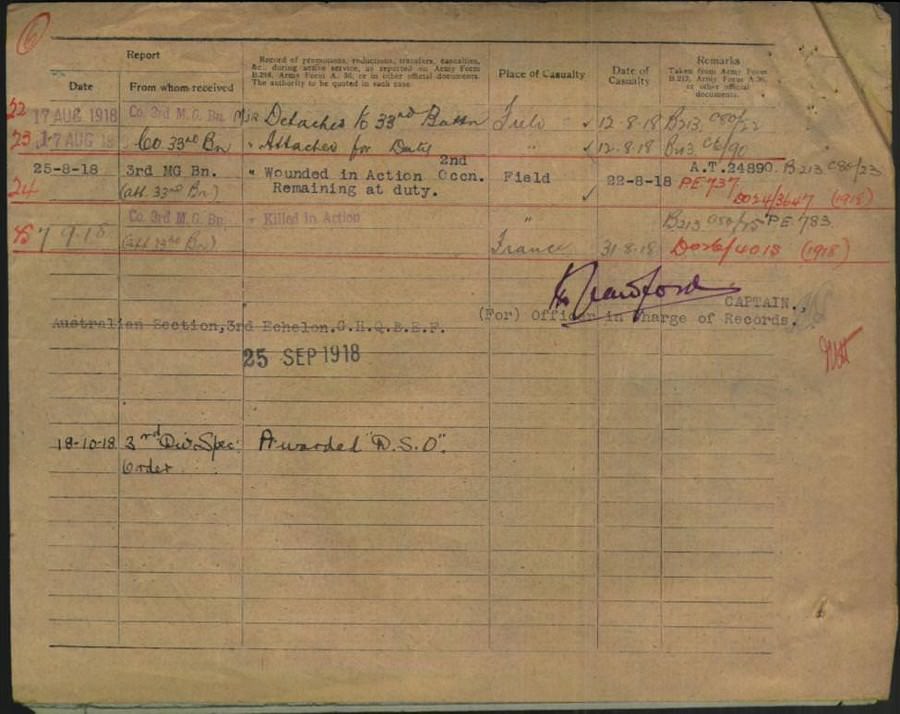

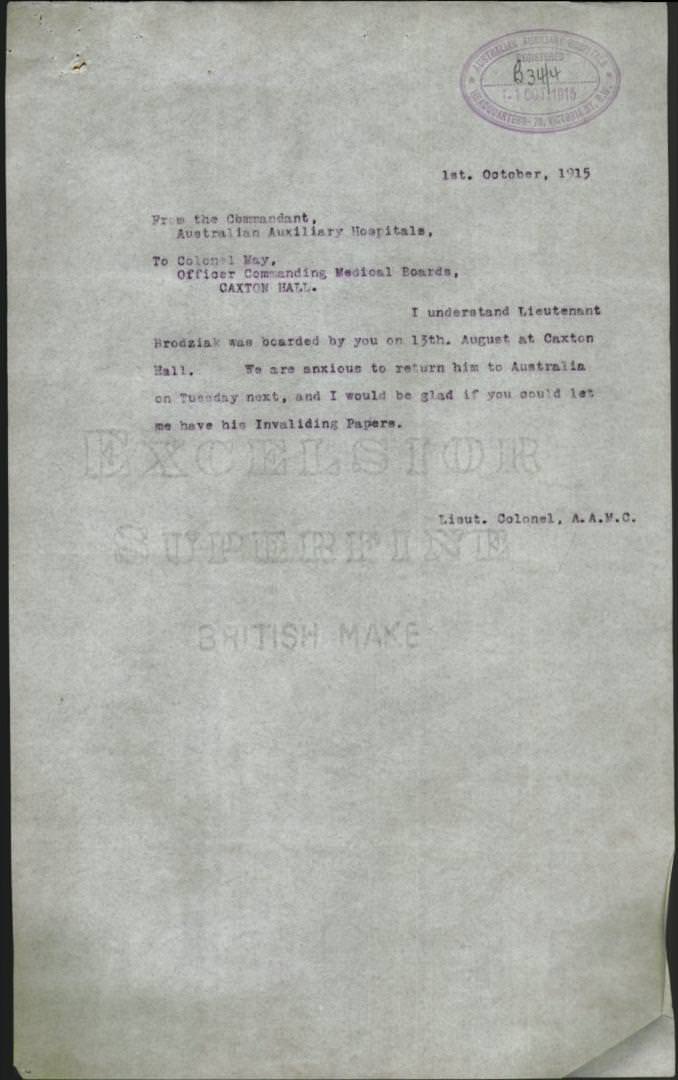
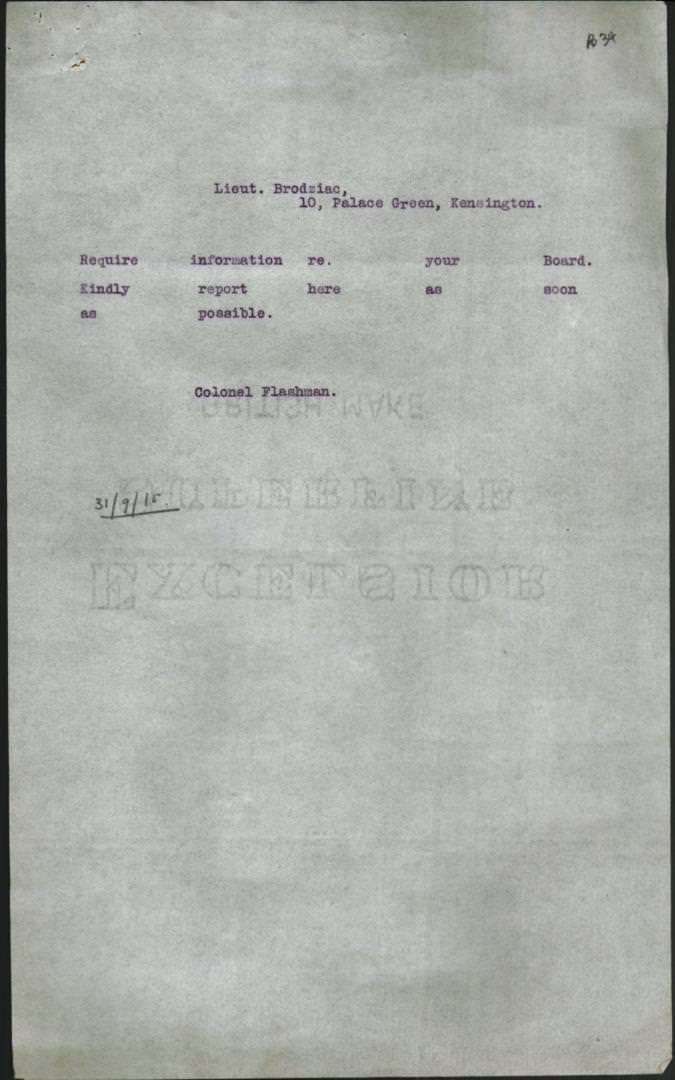

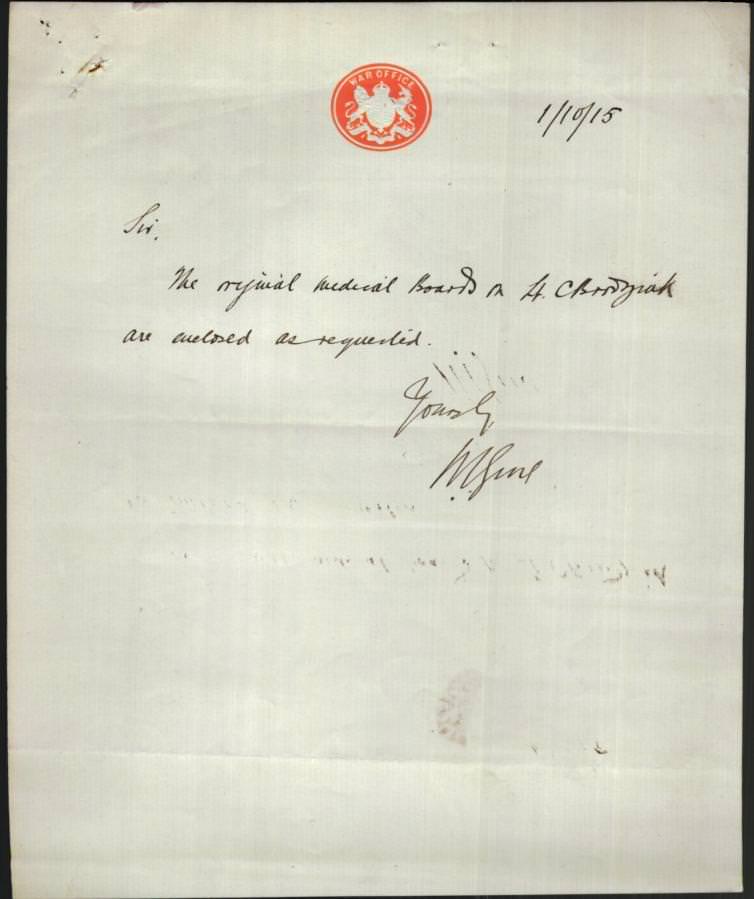
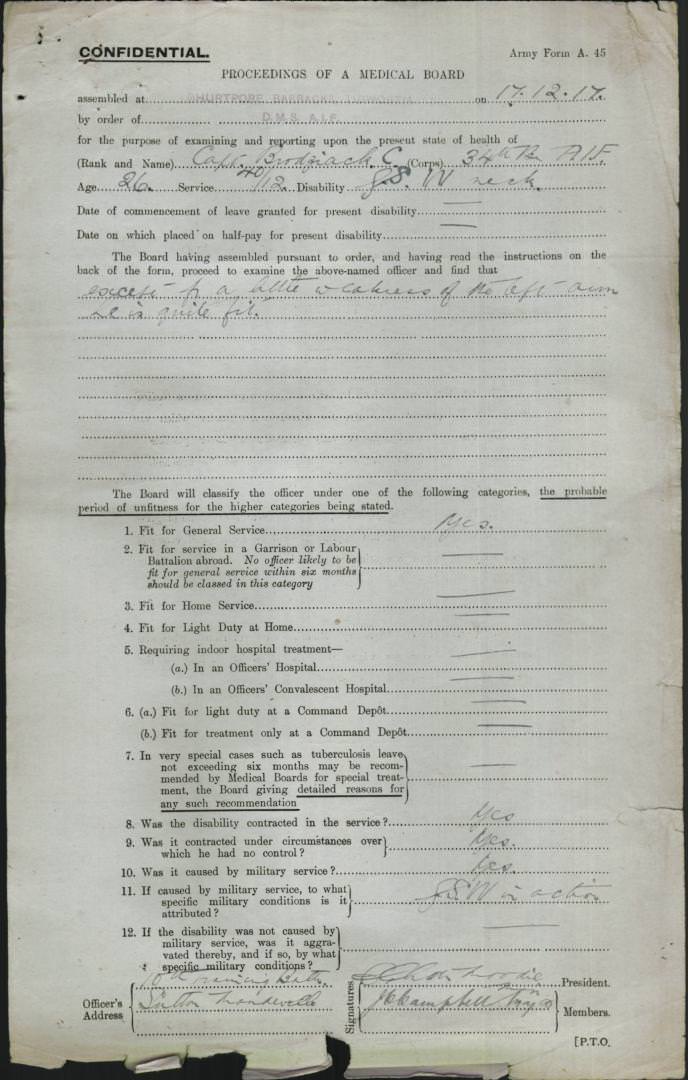
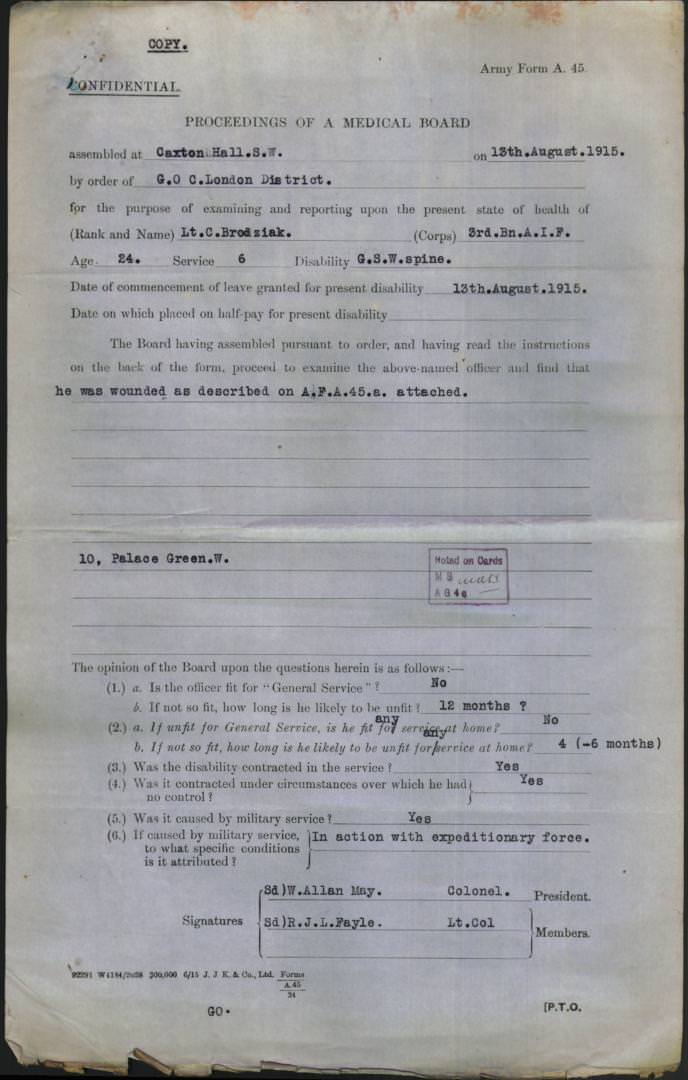

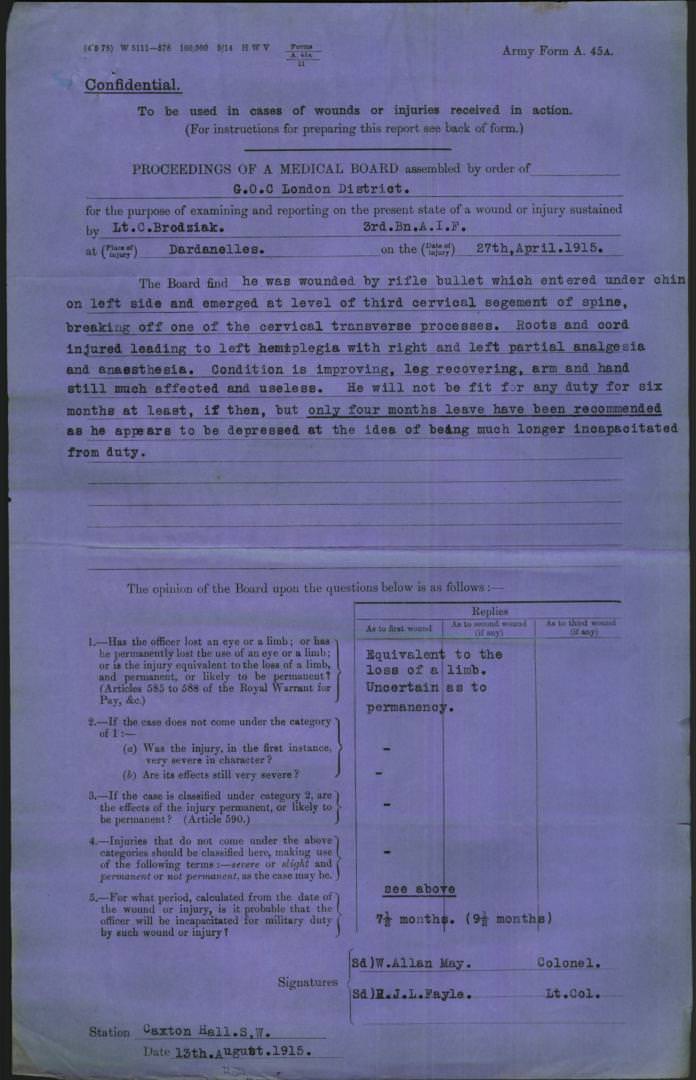
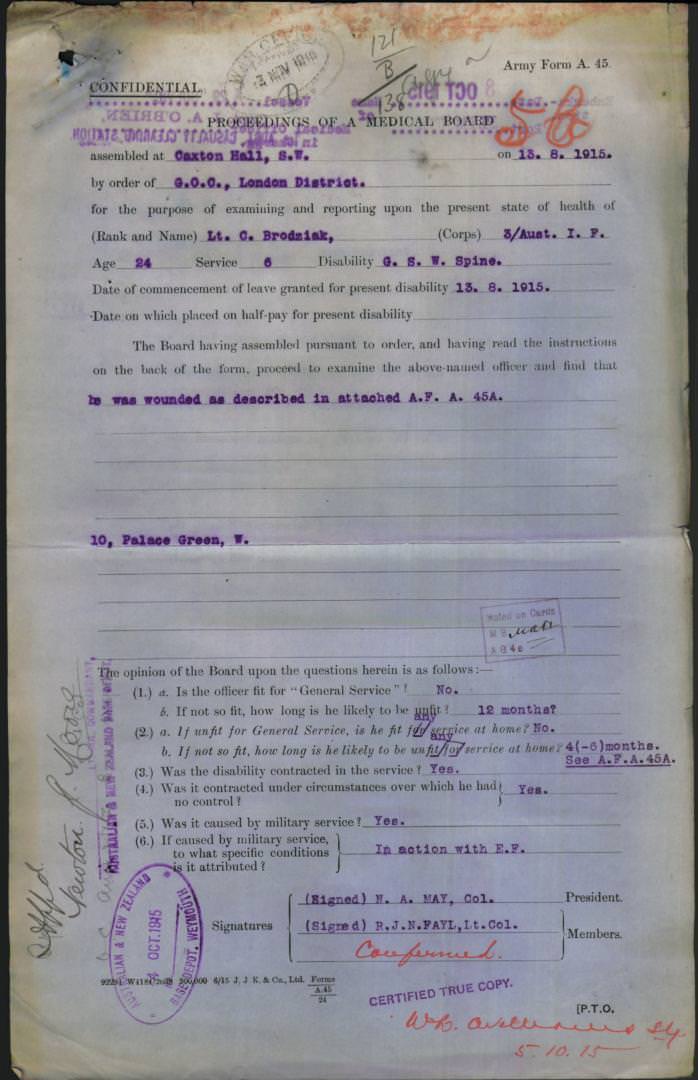
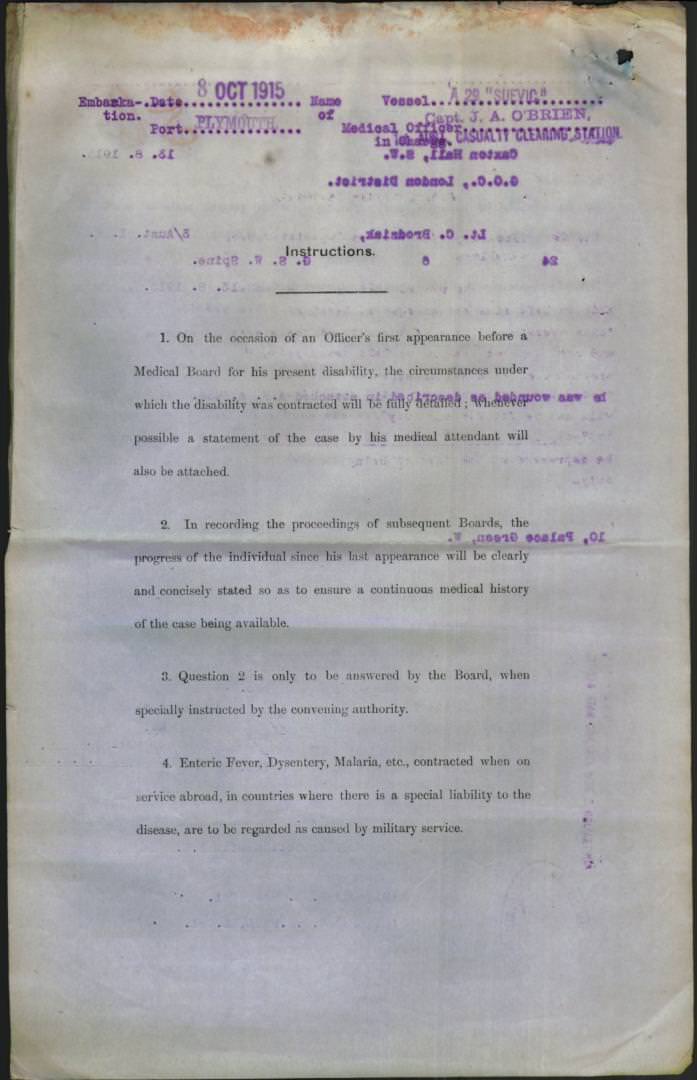
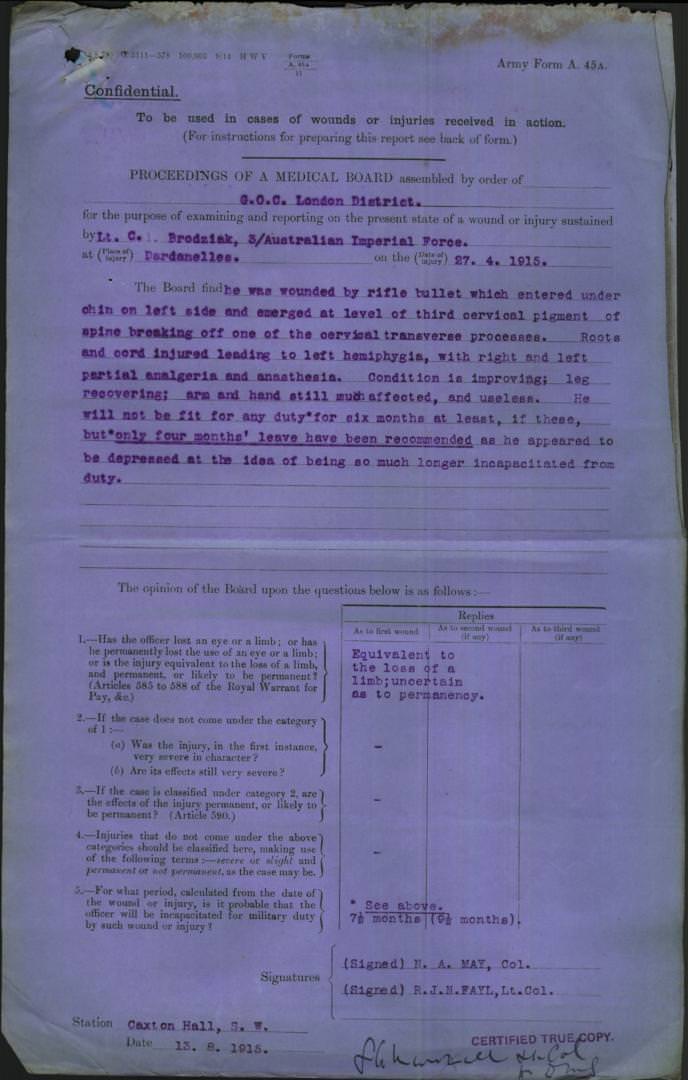
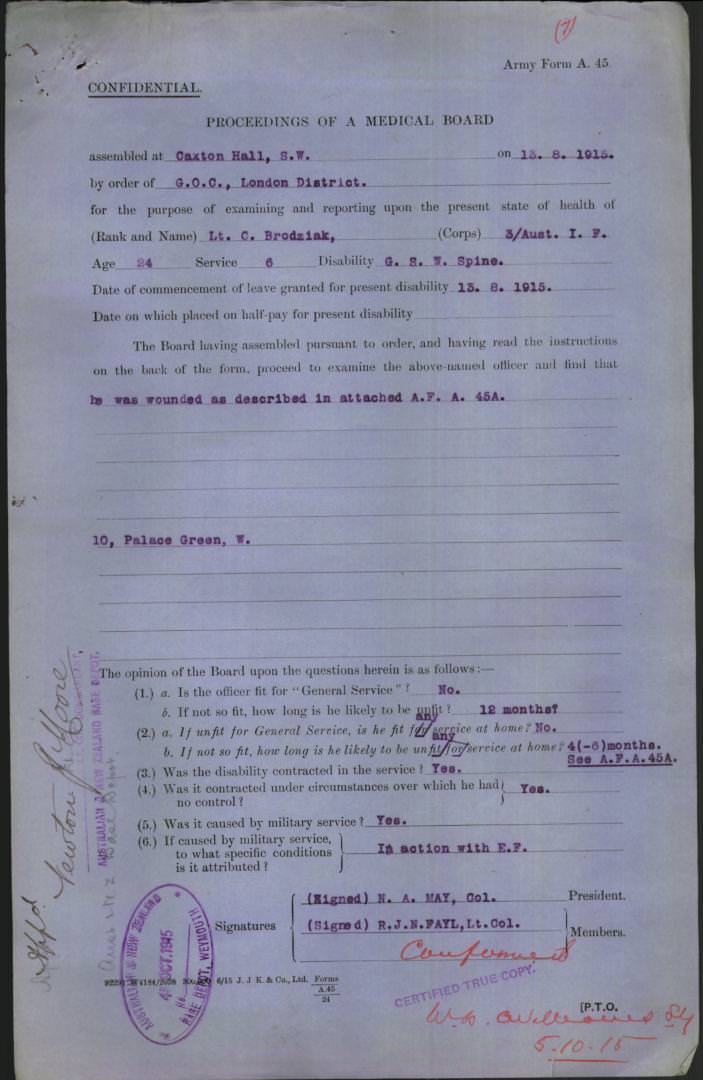


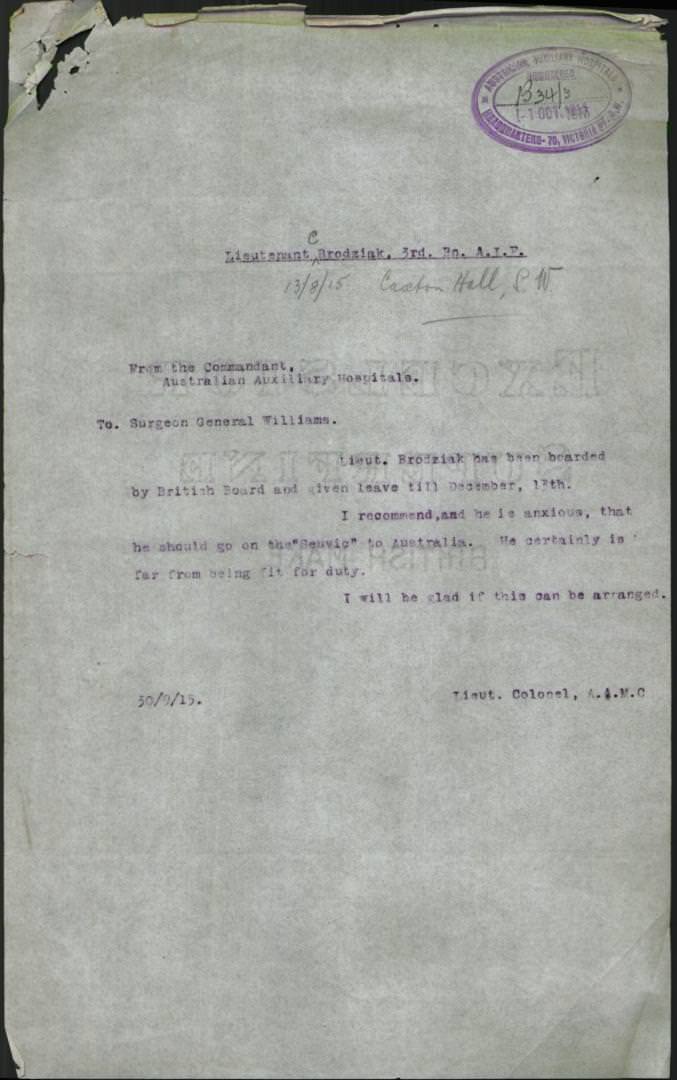
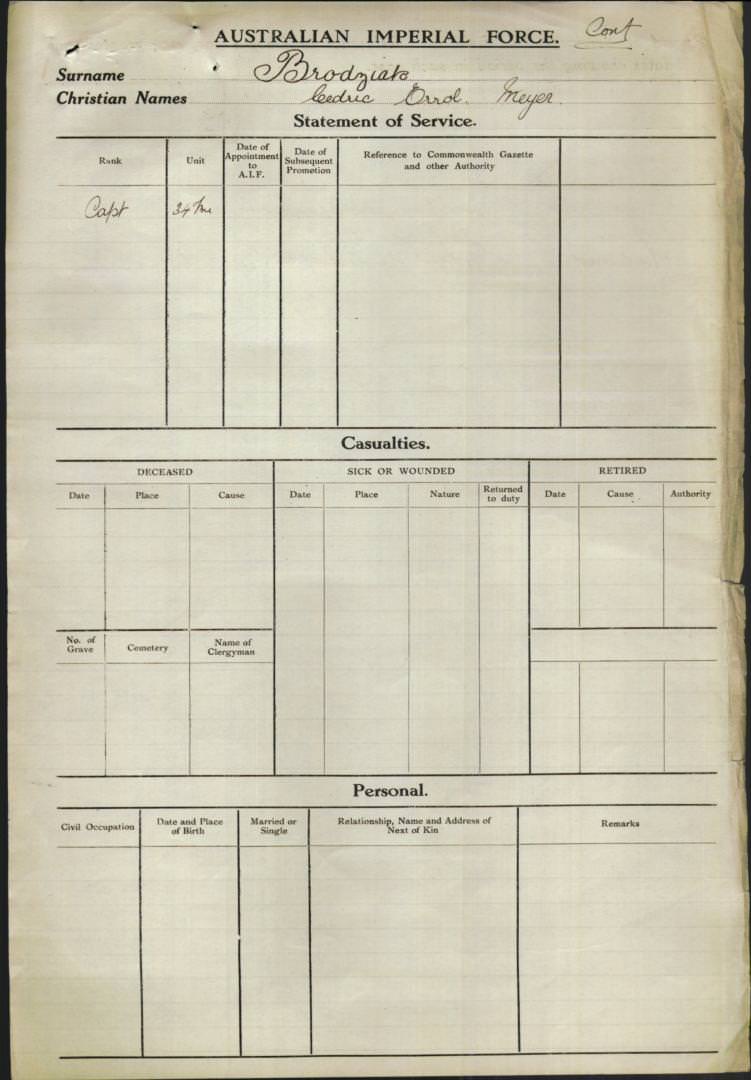
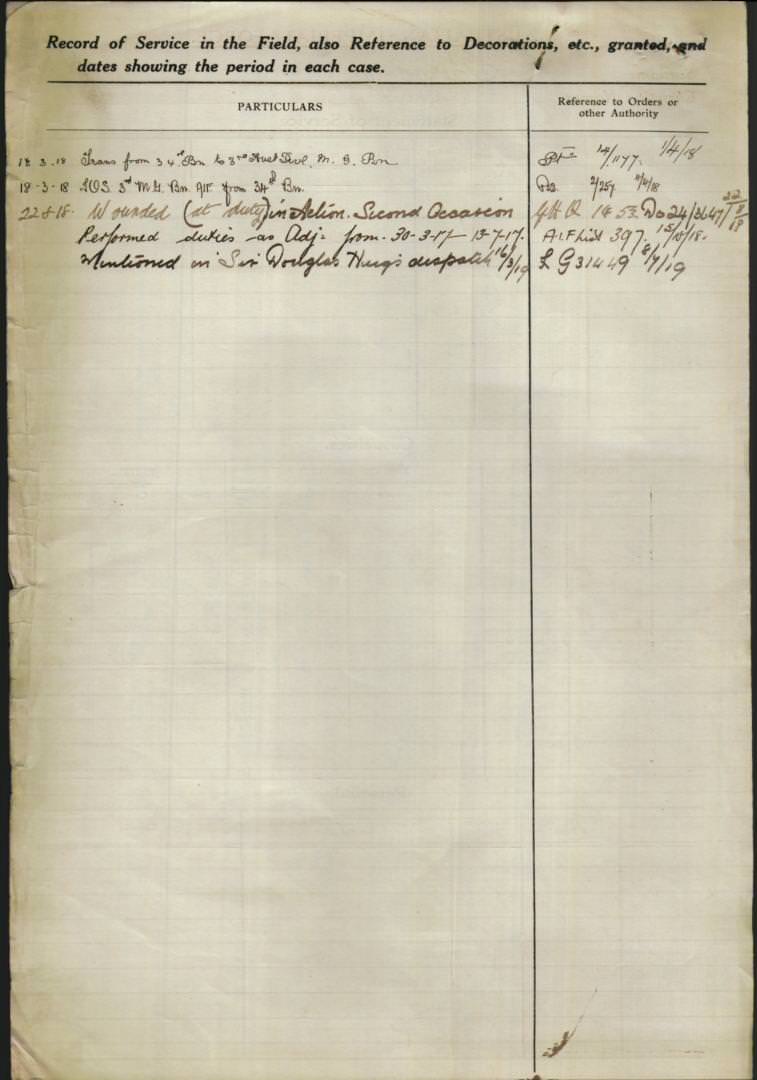

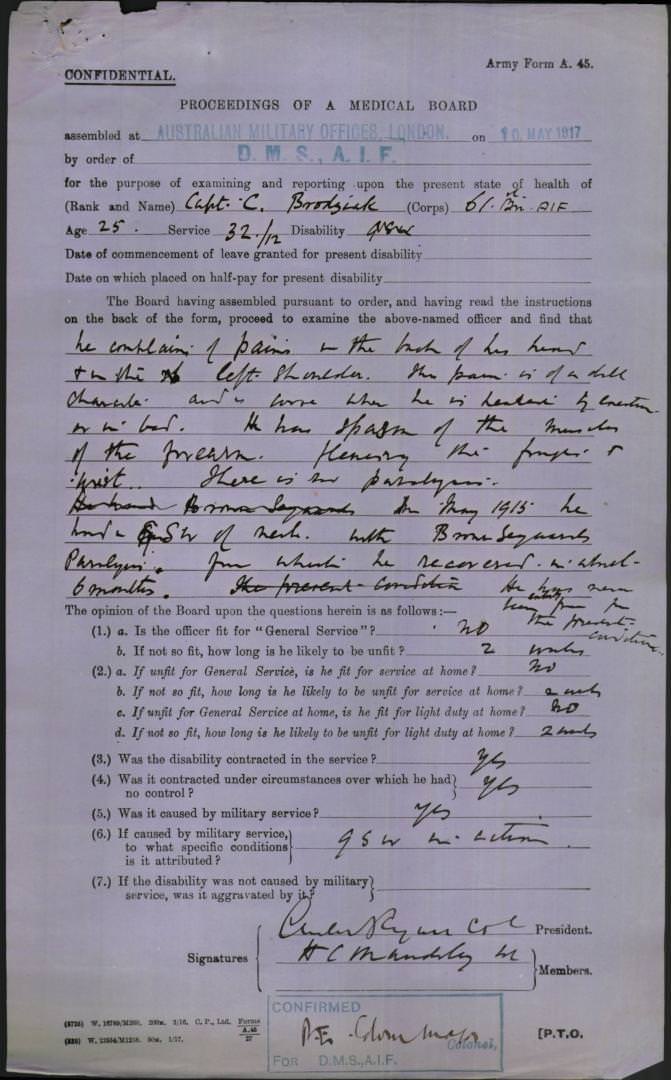
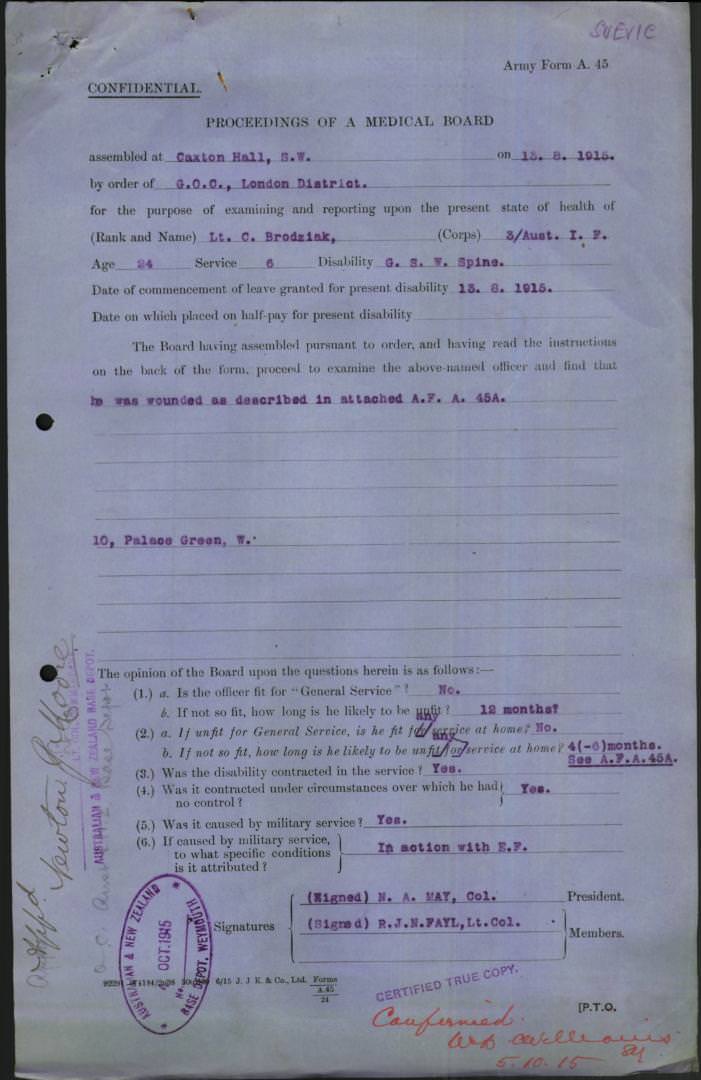
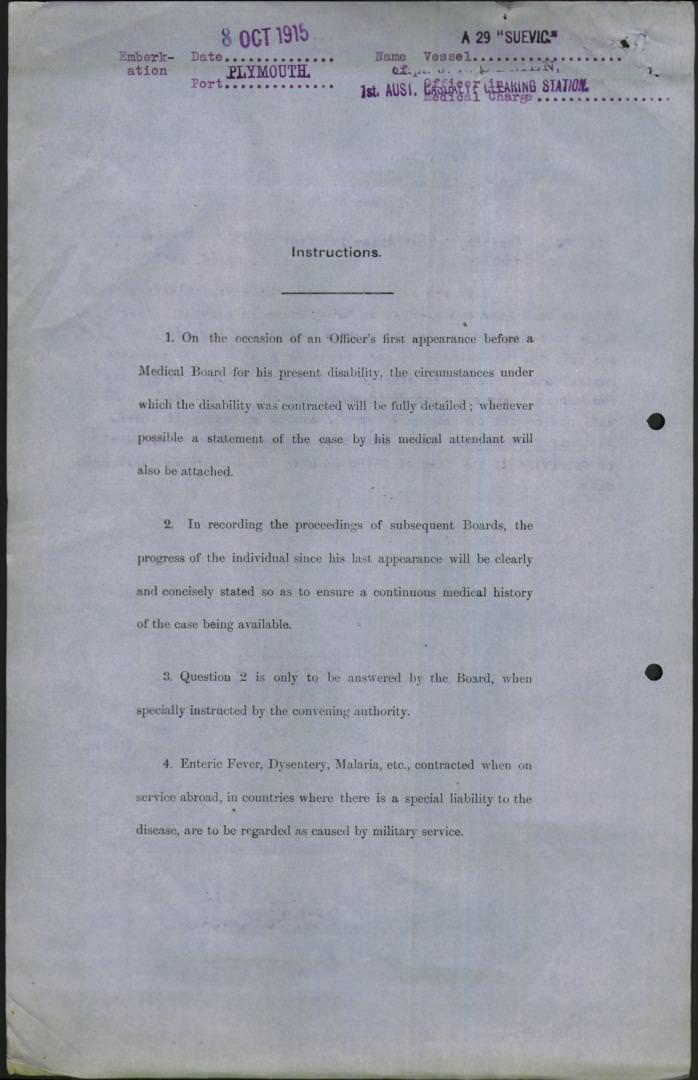
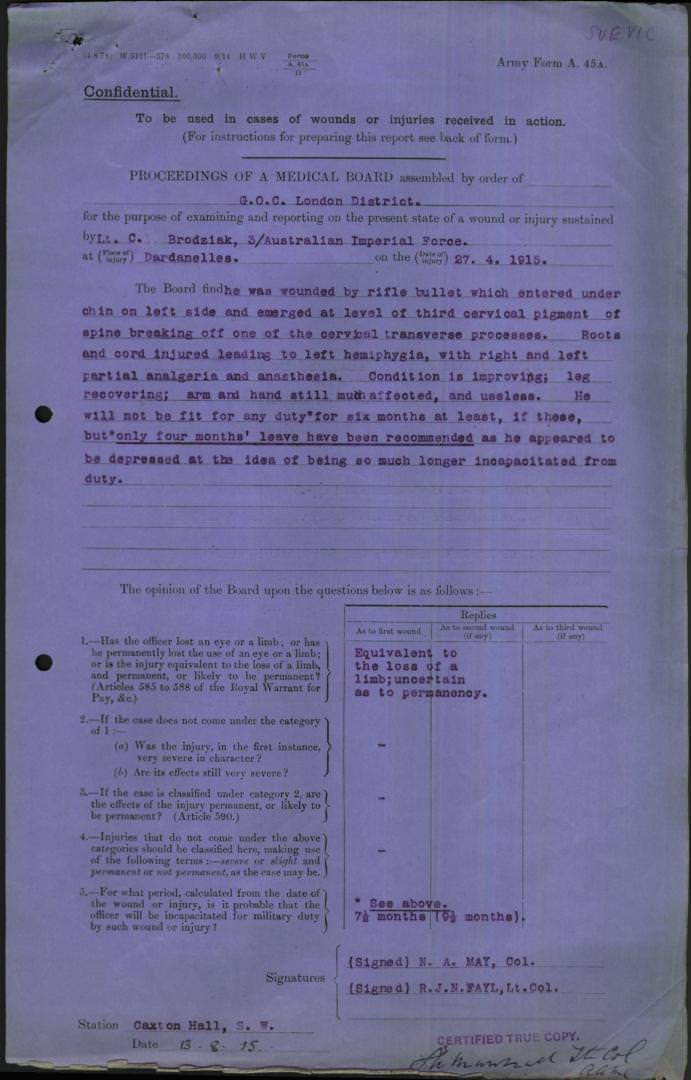
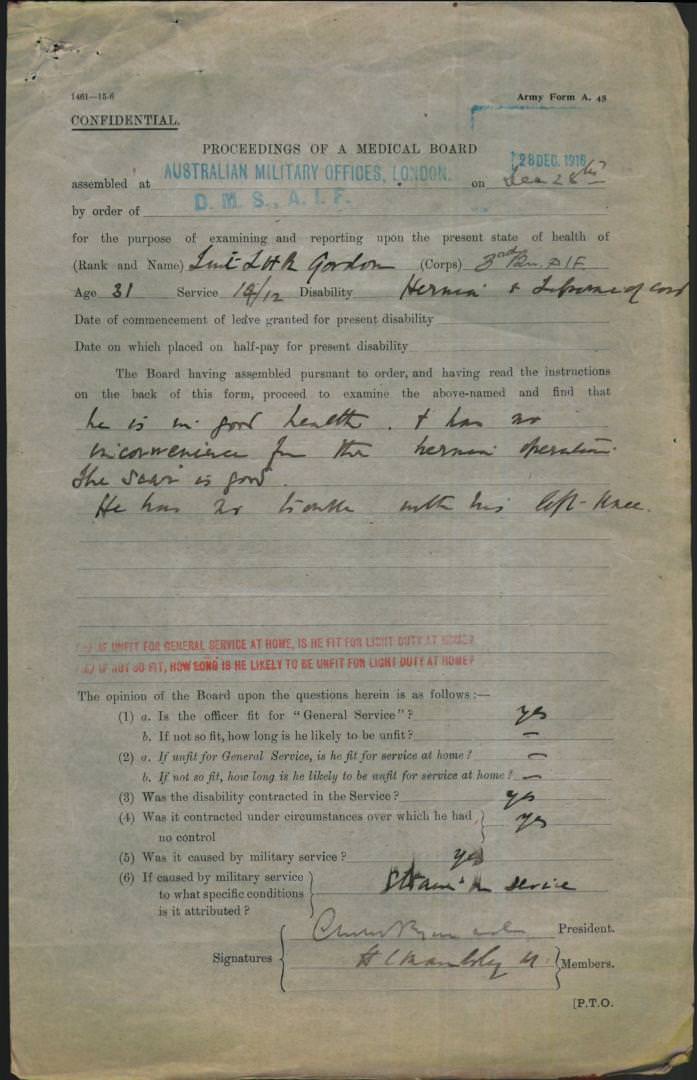
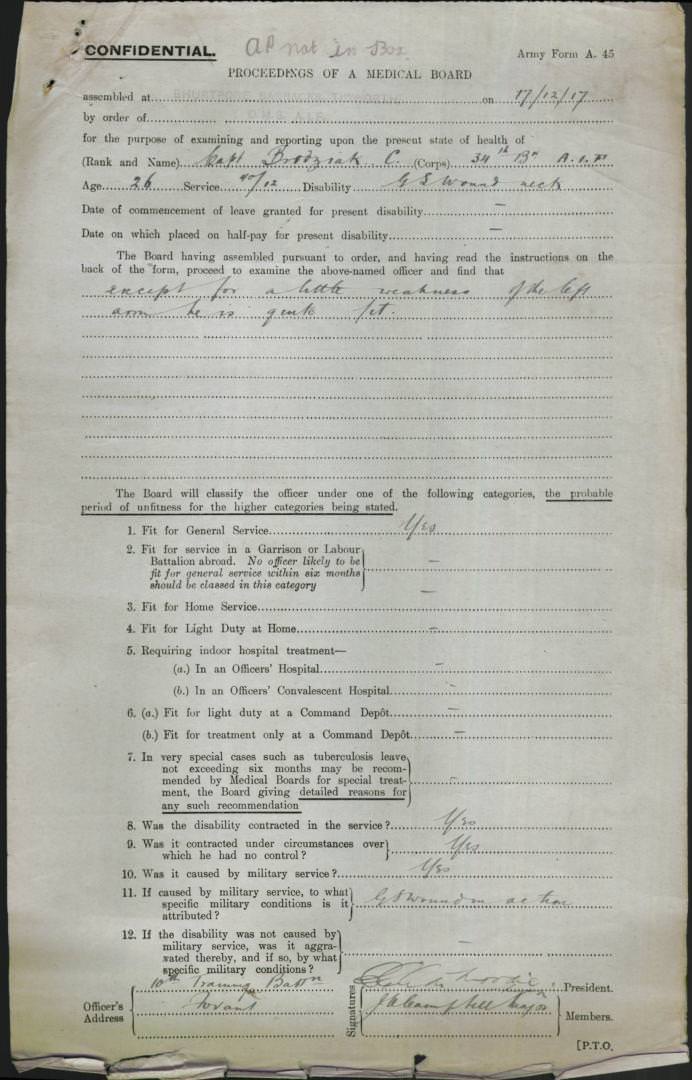


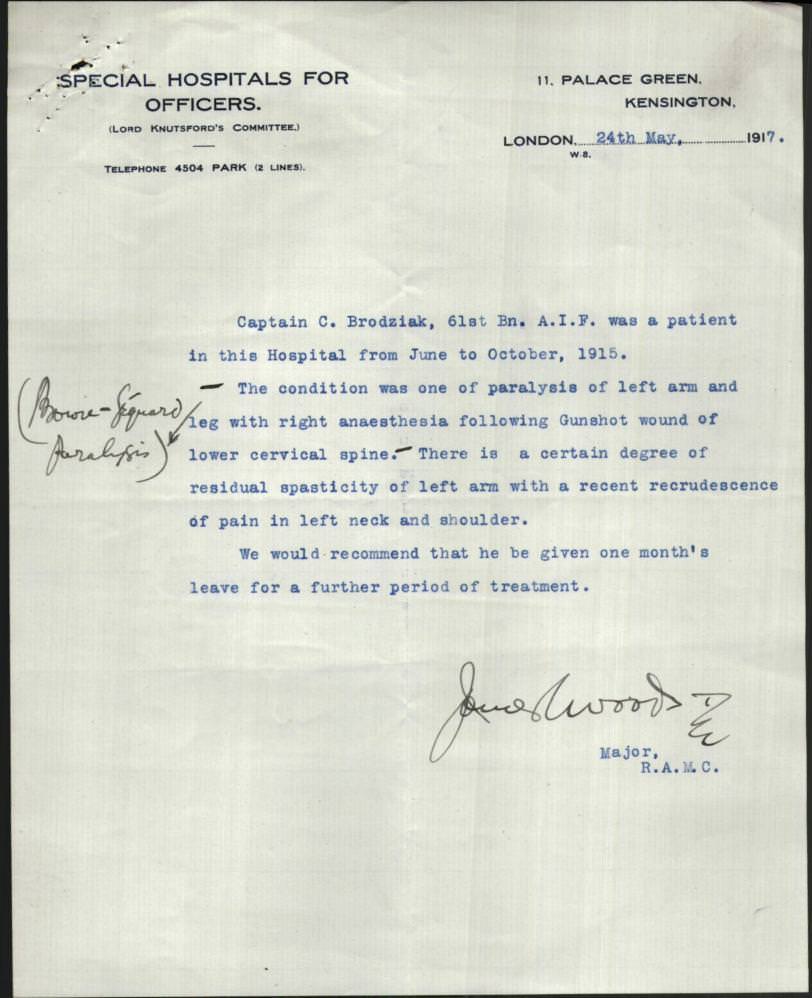
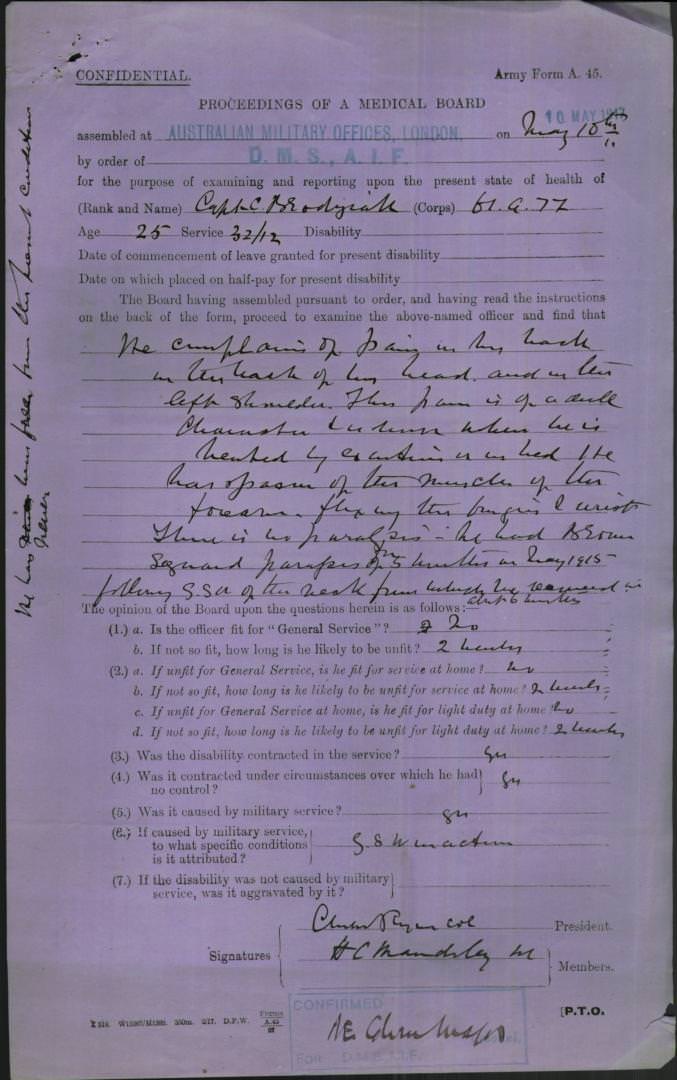
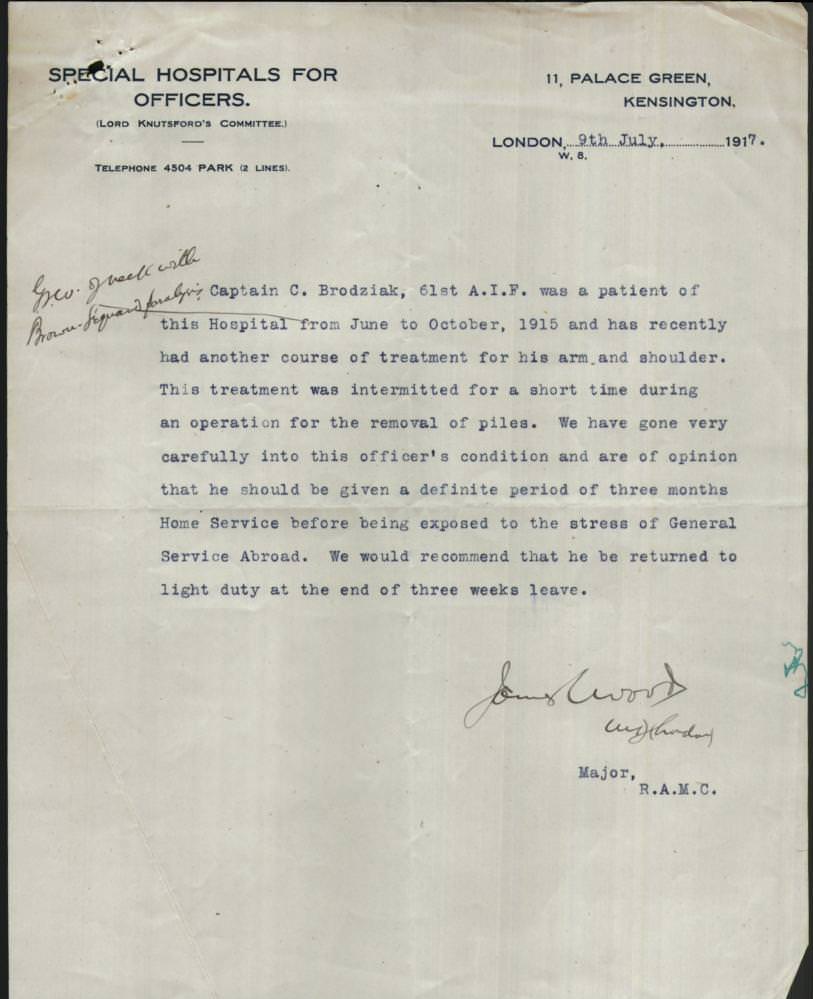
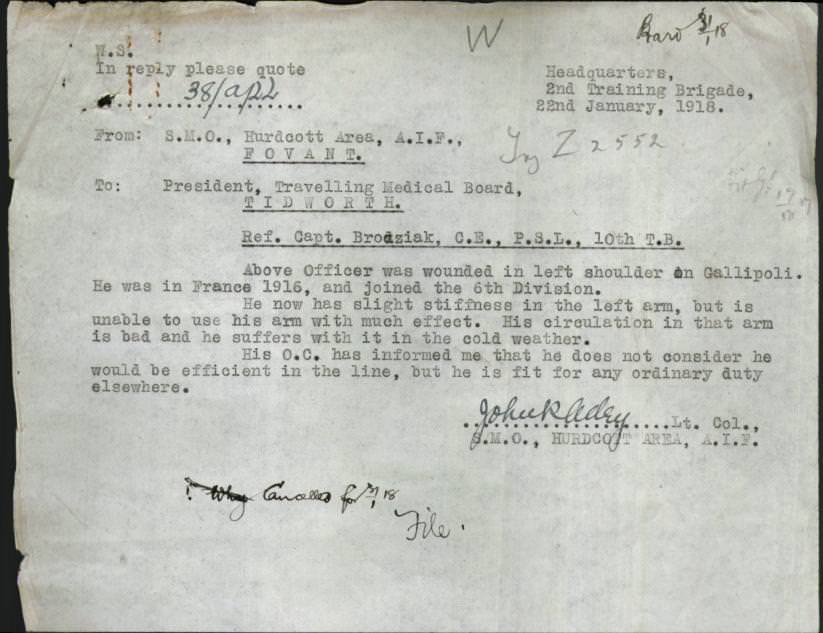
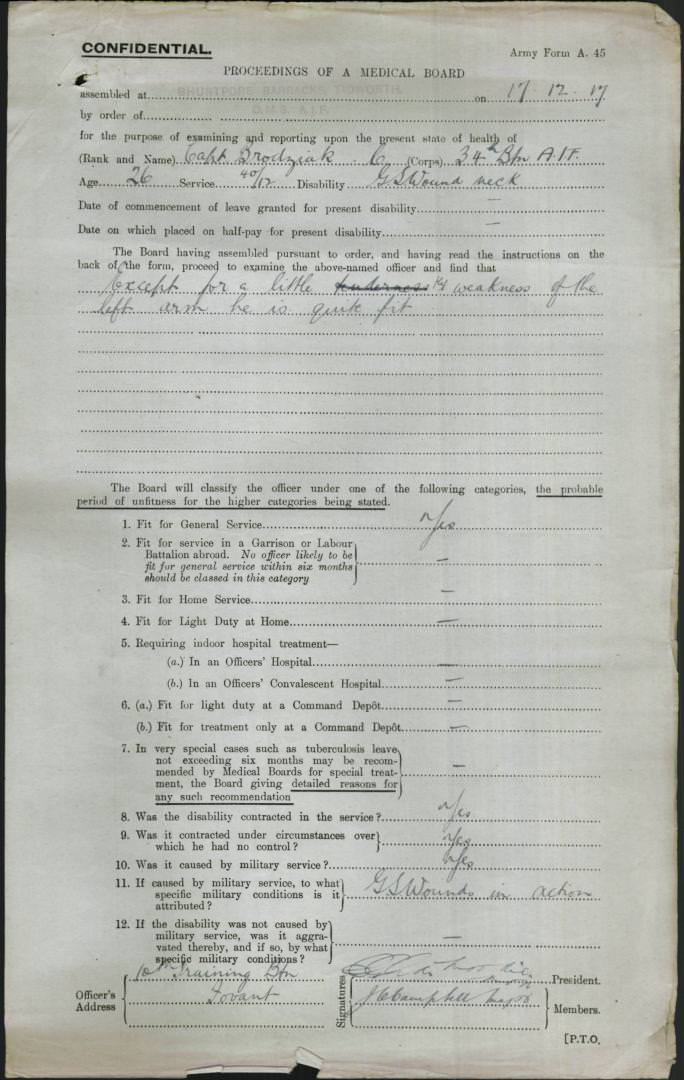

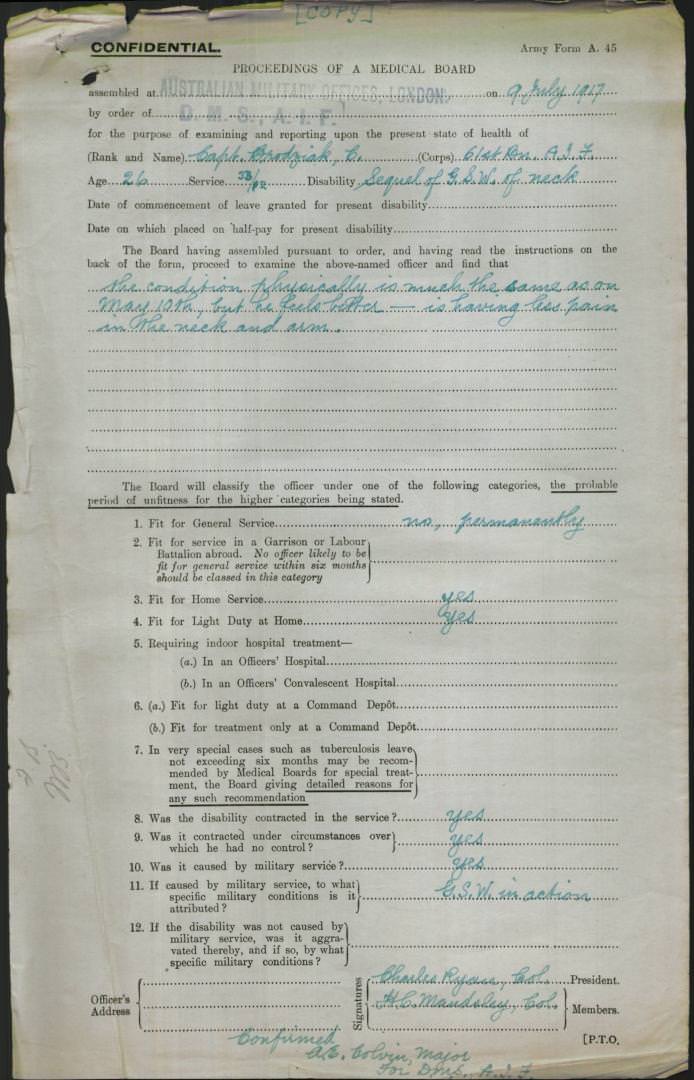
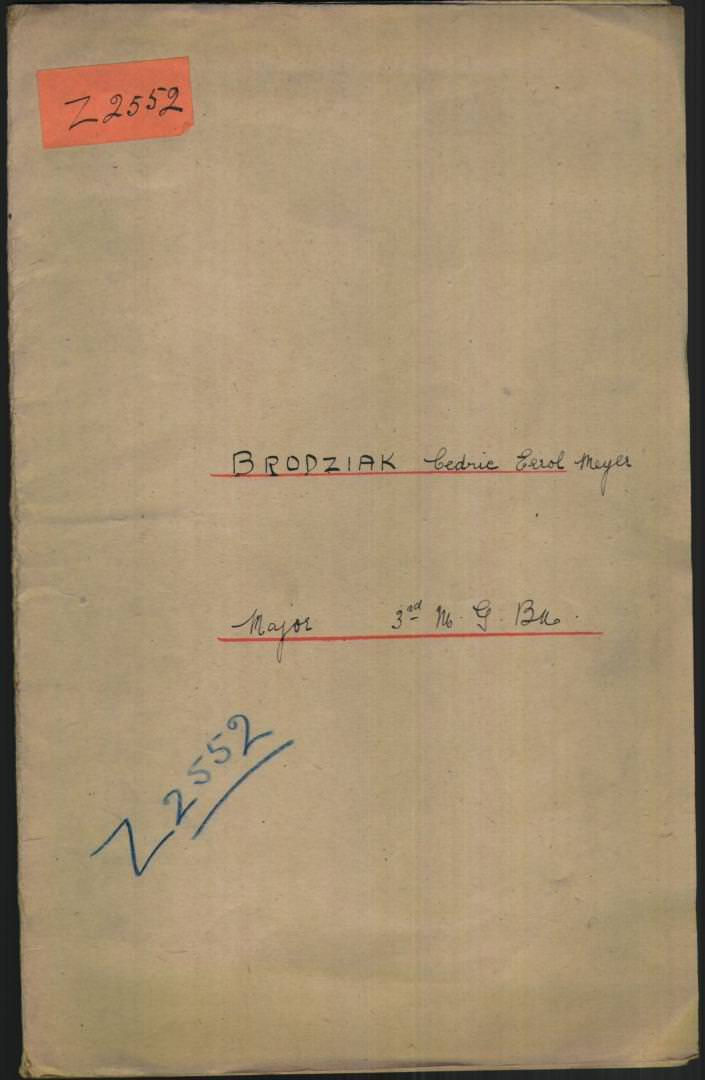
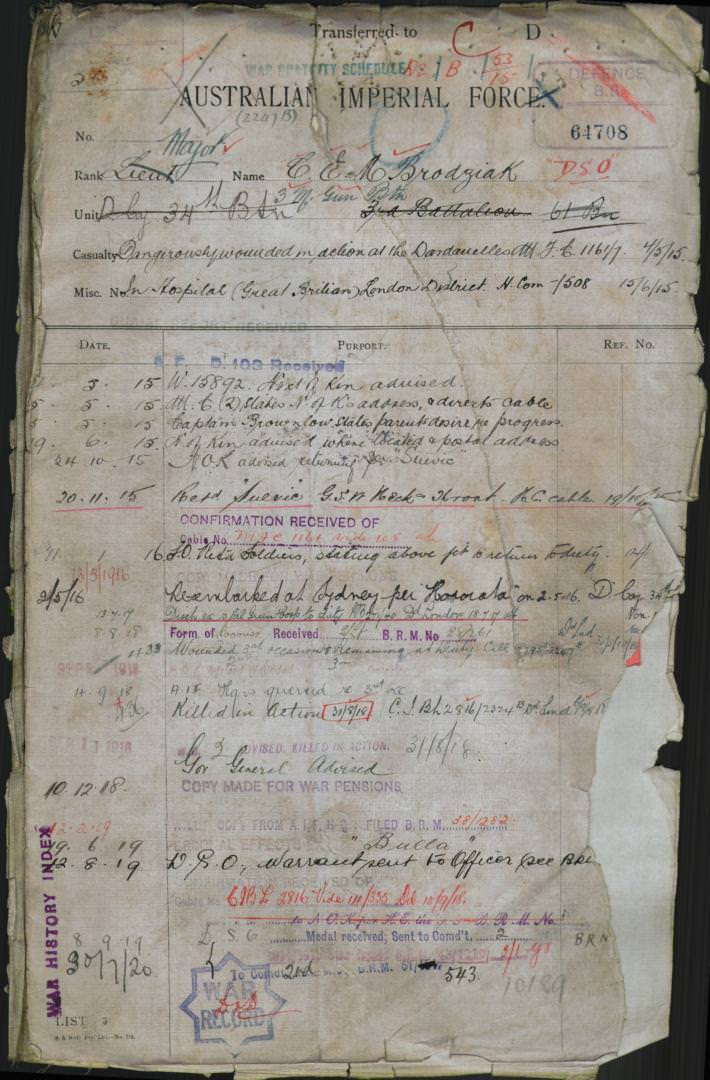
 ©
© 